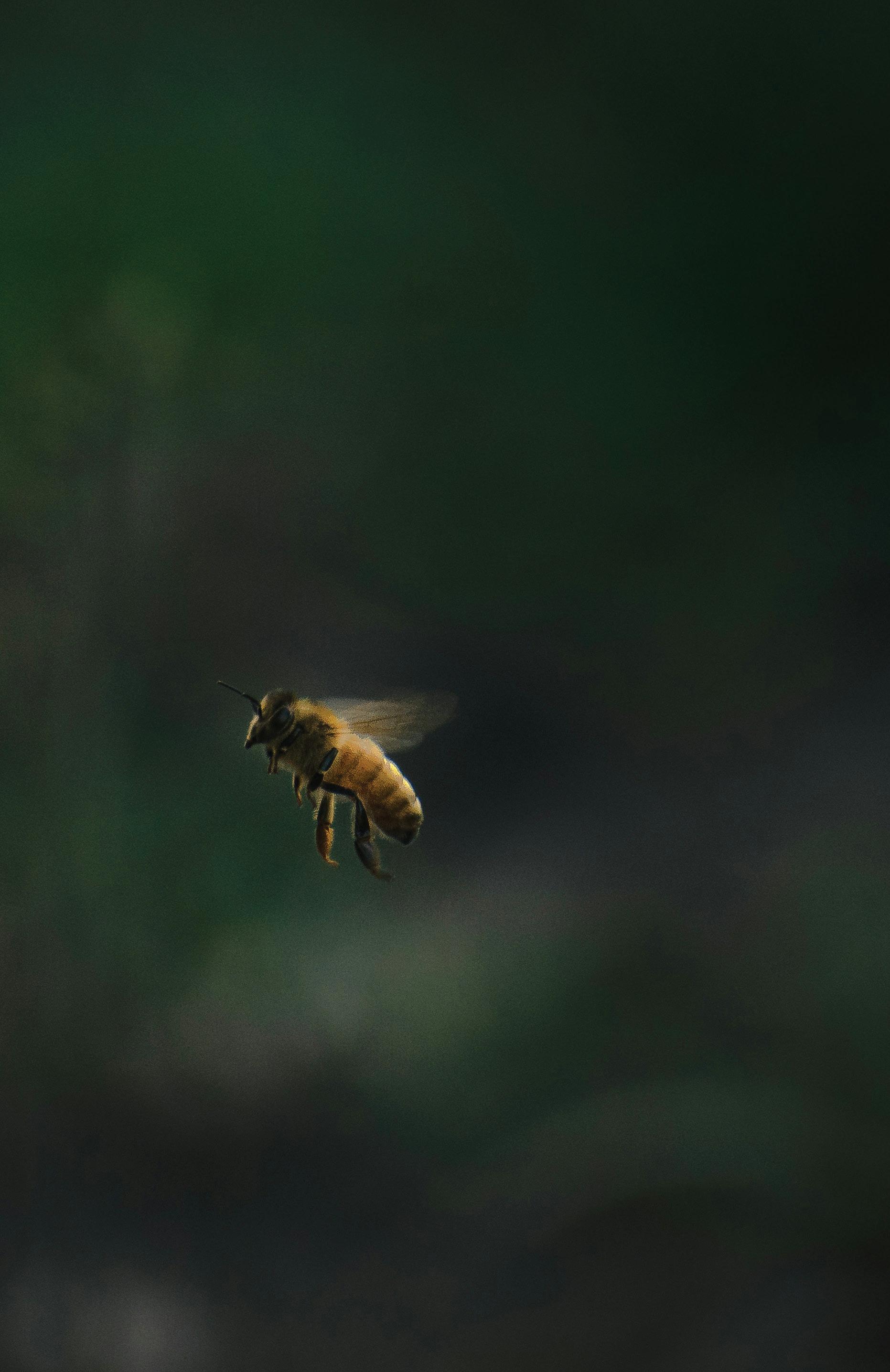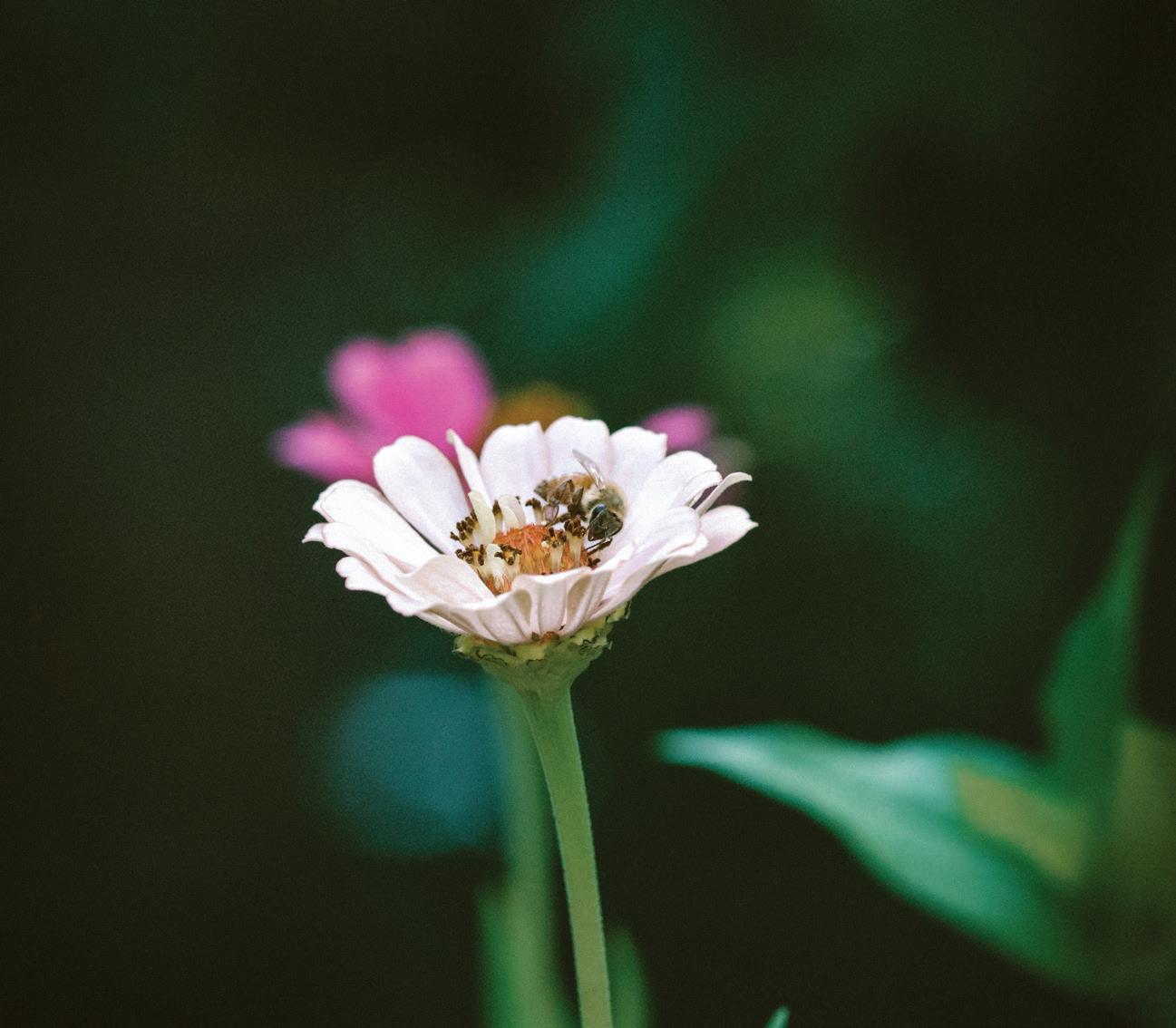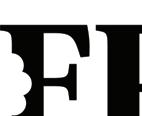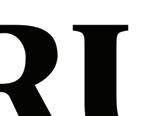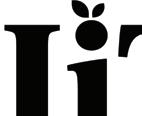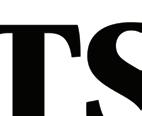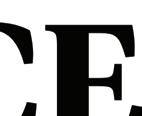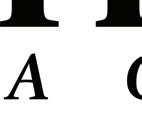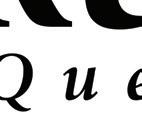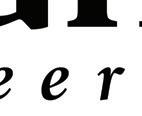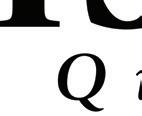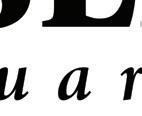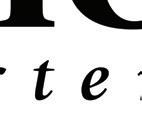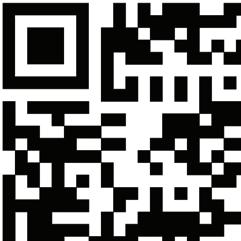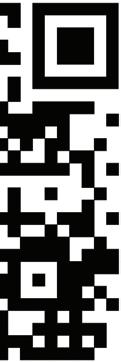FRUITSLICE



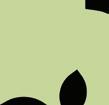


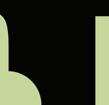

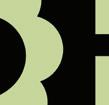


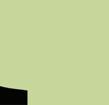
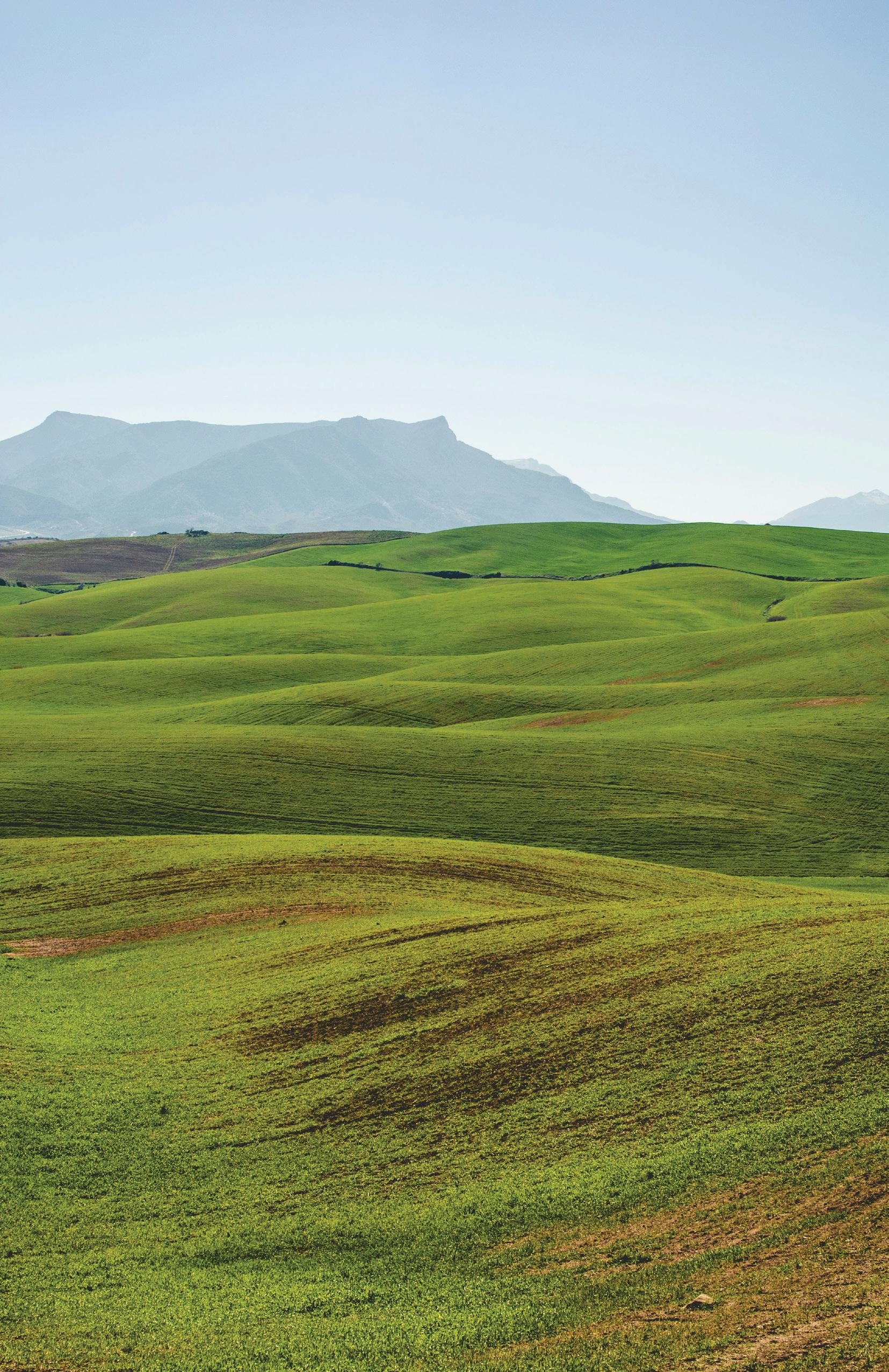
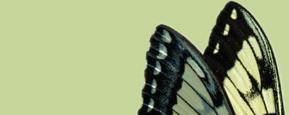
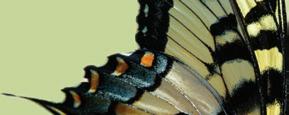
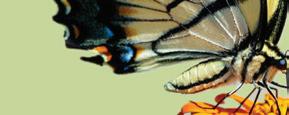
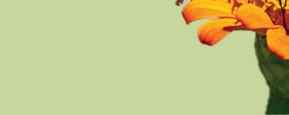

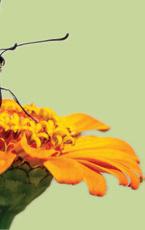
The wild, the untamed, the beautifully overgrown.
Queerness as a natural state of being.
Fluidity—in rivers, tides, gender, and identity.
Root systems and the magic of symbiosis.
The cycles of seeding, blooming, and decaying.
The myth that Queerness is separate from nature.
Colonial binaries that separate land from people.
Capitalism’s obsession with monoculture—in crops and in people.
The anthropocene, environmental racism, and Indigenous erasure.
Any united states president.
Any attempt to tame our wild.
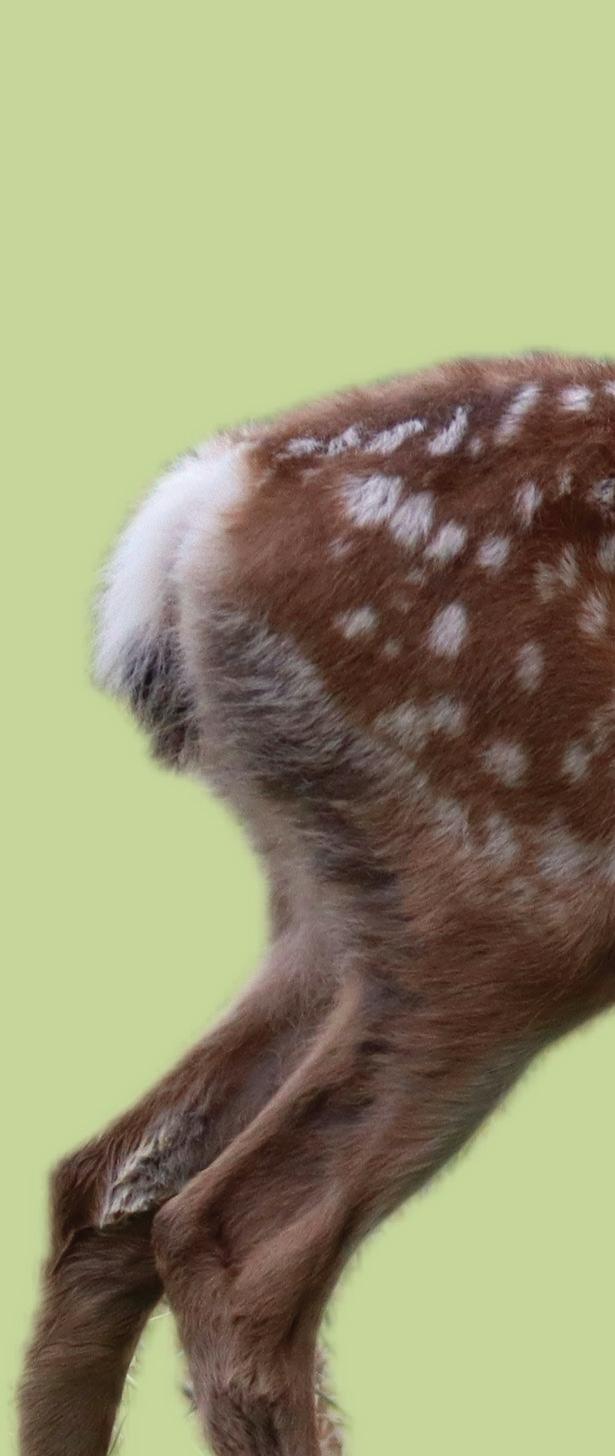
This issue is dedicated to everyone across the planet whose homes, lives, traditional ecologies, friends, and families have been affected, warped, or destroyed by Climate Change in a system that manufactures consent to the degradation of land, air, body, and water.
This issue is dedicated to land and water protectors on Turtle Island and all over the globe, the original keepers of land, who hold kinship through tradition.
This issue is dedicated to those who recognize Queer ecology in their day-today lives: ruptures to the standing order that take the form of graffiti on luxury highrises, making plans for sustainable living on a local level, and caring for their fellow human beings.
This issue is dedicated to the Earth that spins and gives us a moment of life across the expanse of the Universe’s history.
This issue is dedicated to our houseplants.
This issue is dedicated to Queering our ideas of nature and naturalizing our ideas of Queerness.
This issue is dedicated to environmentalists, birdwatchers, gardeners, rock hounds, bushcrafters, foragers, farmers, wildlife photographers, scientists, stewards, outdoor recreational groups, wilderness therapists, and, of course, Gay people everywhere.
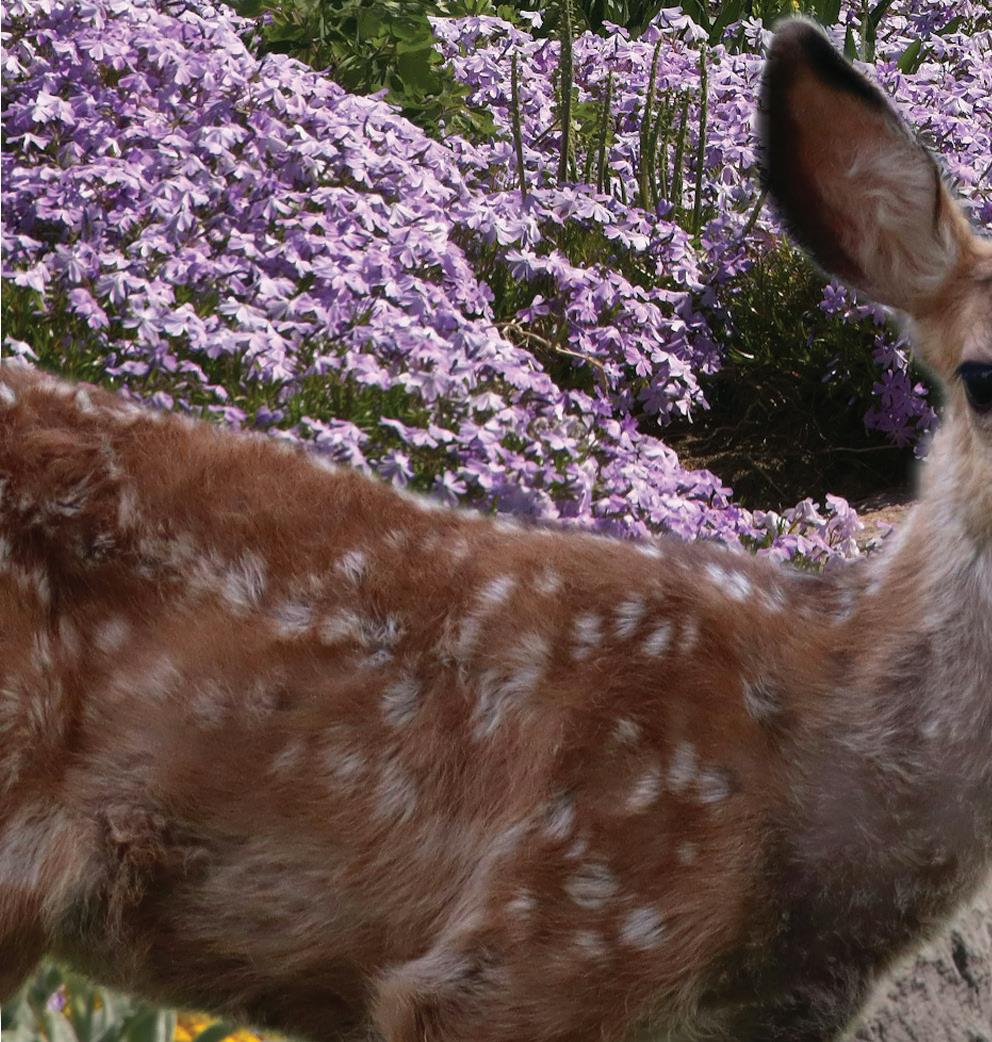

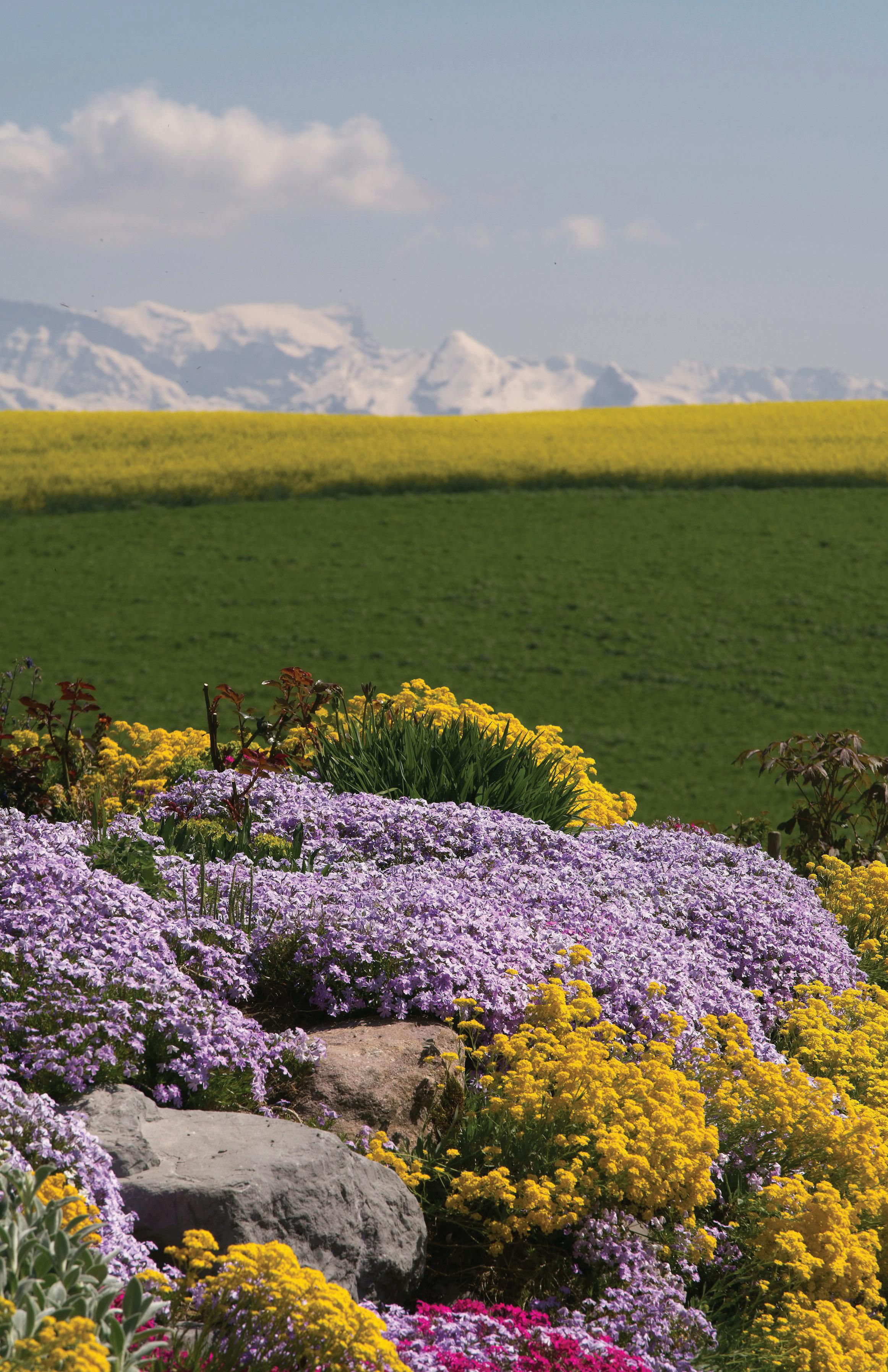

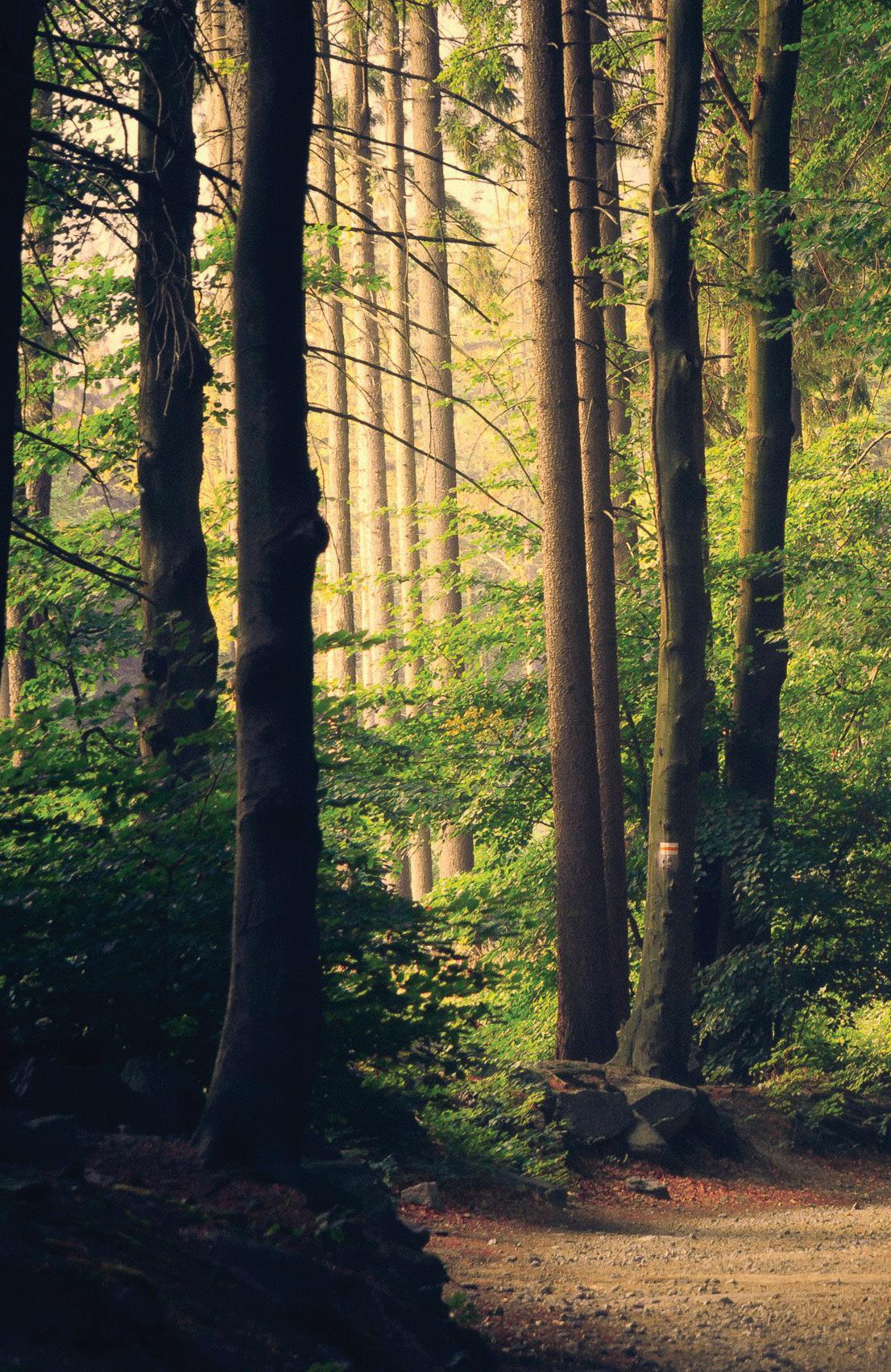
There are some who may benefit from an answer to the question: “What is Queer ecology?”, before immersing themselves into the worlds and words that explore this term in Fruitslice Issue 6. There are academic definitions and those that take the term to praxis. This issue features something that embraces both: a combination of the theoretical and the practical—what we desire, and how we enact growth and change in our own environments. Queer ecology (according to our fruit community) is the innate interconnectivity in the lush world of Queer people through an ecological lens.
There are many reasons why we, as a Queer publication, are interested in an ecological way of thinking. We are human animals, concerned with the health of the very delicate ecosystem that we inhabit. We are Queer people, often told that we are unnatural for answering a call from within. We are members of a community that is interlaced with other communities, forming a vibrant ecosystem that we want to observe, embrace, and steward. Many of us are LA residents, recently devastated
by large-scale wildfires. All of us are living on a changing planet. Our art and our love is made at the confluence of rapidly morphing landscapes. All of us know what it feels like to have the earth shift underneath you, to feel unnatural at home, and confront the strangeness that comes from within.
With this issue, we hope to illuminate the Queer ecological thought in art for our audience. We want you to see plants, dirt, sunlight, air, death, birth, bugs, animals, and life itself and know that Queer hands touch all of these things, and Queer artists have something to say about them all. And to that end, ecology is also not limited to gardens and plants—but all habitats and habits, from cityscape to inner microbial workings. From the infinitesimal to the infinite, we are all bound to each other, to ourselves, to this planet, to this Universe.
Much of the work in this issue delves into connection, while making space in all the little corners of the world. In that way, each piece seems to be connected to each other by virtue of being bound page to page. So we welcome you to wander safely into the heart of the ecosystem found right here.

Content Warning: This issue, and the contributors therein, spend considerable time reckoning with and examining the many ways Queer ecology shows up and manifests in our lives, thoughts, and work. In doing so, contributors and staff alike have addressed and explored topics including homophobia, transphobia, queerphobia, slurs (both reclaimed and weaponized), gender dysphoria, sex, sexuality, religion, ecological devastation (including the recent wildfires in LA), climate crisis, environmental racism, ableism, medical trauma, eugenics, the COVID-19 pandemic, colonialism and domination, enslavement, capitalism, settler ideology, citizenship status, mental illness, mentions of disordered eating and eating disorders, needles, blood, physical injury, death, decay, grief, and substance use, among others. These themes are all interwoven with both the Earth and our history and community. We hope you manage your discomfort as it arises and take steps to care for yourself.
Copyright © [2025] Fruitslice All rights reserved.
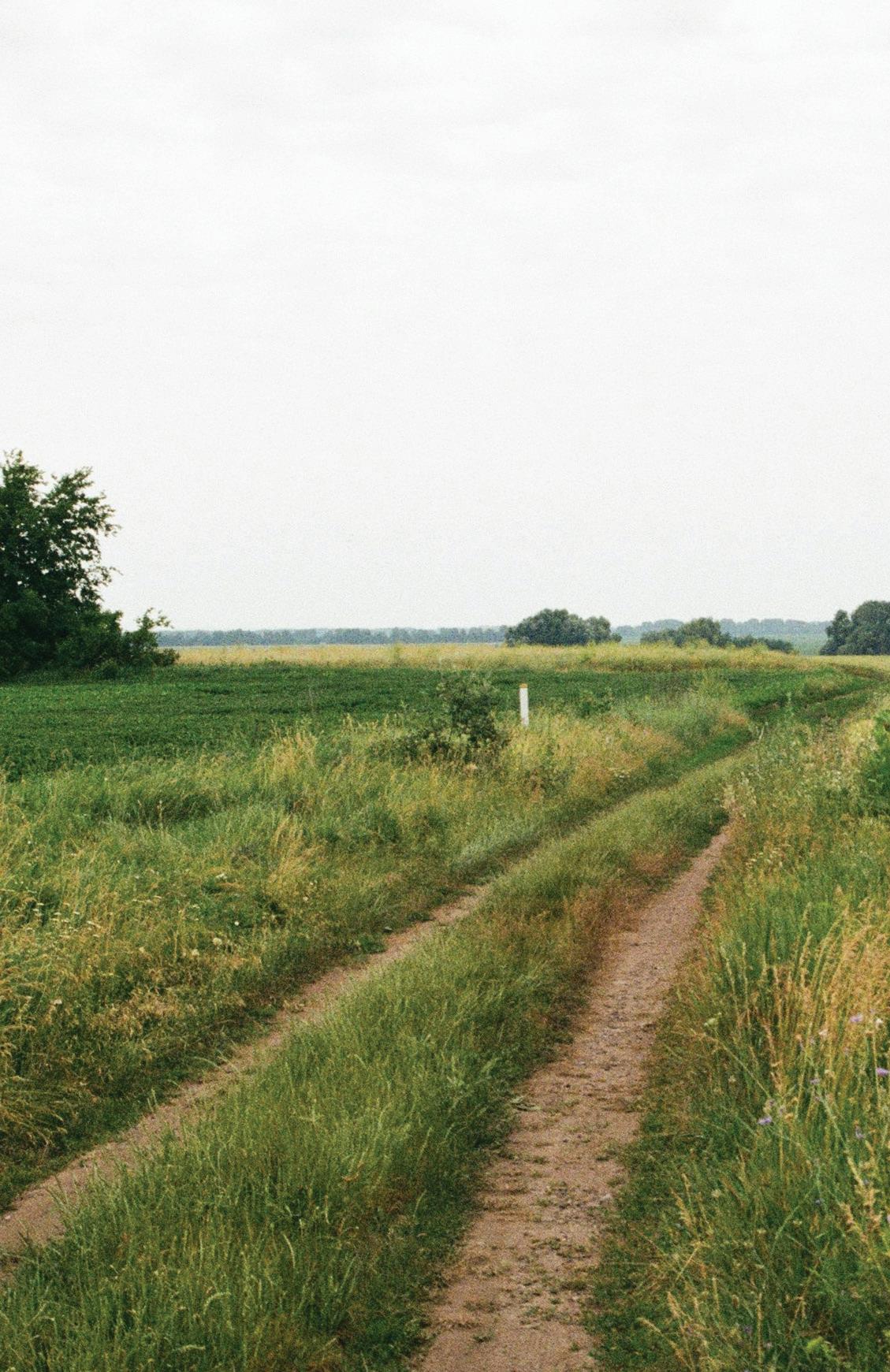
Everything in this issue belongs to its original creators—the writers, the artists, the dreamers, etc. Fruitslice holds first publication rights and the right to archive and distribute the work in its originally published form. Every effort was made to contact and properly credit copyright holders. Please get in touch with us regarding corrections or omissions. Reproducing or reprinting all or any part of this issue without prior consent (except in the case of brief quotations used in critical reviews and academic work) will be considered utterly disrespectful, generally uncool, and legally questionable–but we aren’t cops. :(

A Lapointe
AJ Dent
Alayna Cabral
Amber Jaitrong
Angel T. Dionne
Ann McCann
ashley hunt
Averie Bueller [APB Photography]
Azad Namazie
Bailey Bauer
Bennett Rine
Bethany Leigh Greenman
Bri Campbell
Brie Coleman
Caroline Brink
Casper Orr
Chloe Oloren
Chloe Parsons
Christine Leistner
Courtney Williams
Dejan Ann Kahilinaʻi Perez
Dominic Scicchitano
Eleri Denham
Em Buth
Emerson Hayes Jermstad
Emily Vance Brown
Emmye Vernet
Figueroth Lavalle
Gaby Bee
Gale Winegarden
gp
Grant Kanak
Jalisa Sousa-Silva
Jamayka Young
Jess Beaudin
Johanna E. Hall
Kam Bradley
Katie Hillard
Kota Ball
Layla Razek
Liv Soter
Mazerick Betko
McKenzie Janisz
Melanie Robinson
Micah B
Míša Štorková
Morgan Champine
Morgan Hyatt
Nat Deam
orion (aka puppy)
Roman Campbell
Rhyker Dye
Salena (@zonked_art)
Sanna Koskimäki
Shaniqua Harris
Shelby Pinkham
Sophie Mutiara Nova
Surya Du Preez
Taylor Michael Simmons
Tommy Rider
Tzushan Chu von reyes v.w.l
Yazmin Munoz
Zoe Grace Marquedant


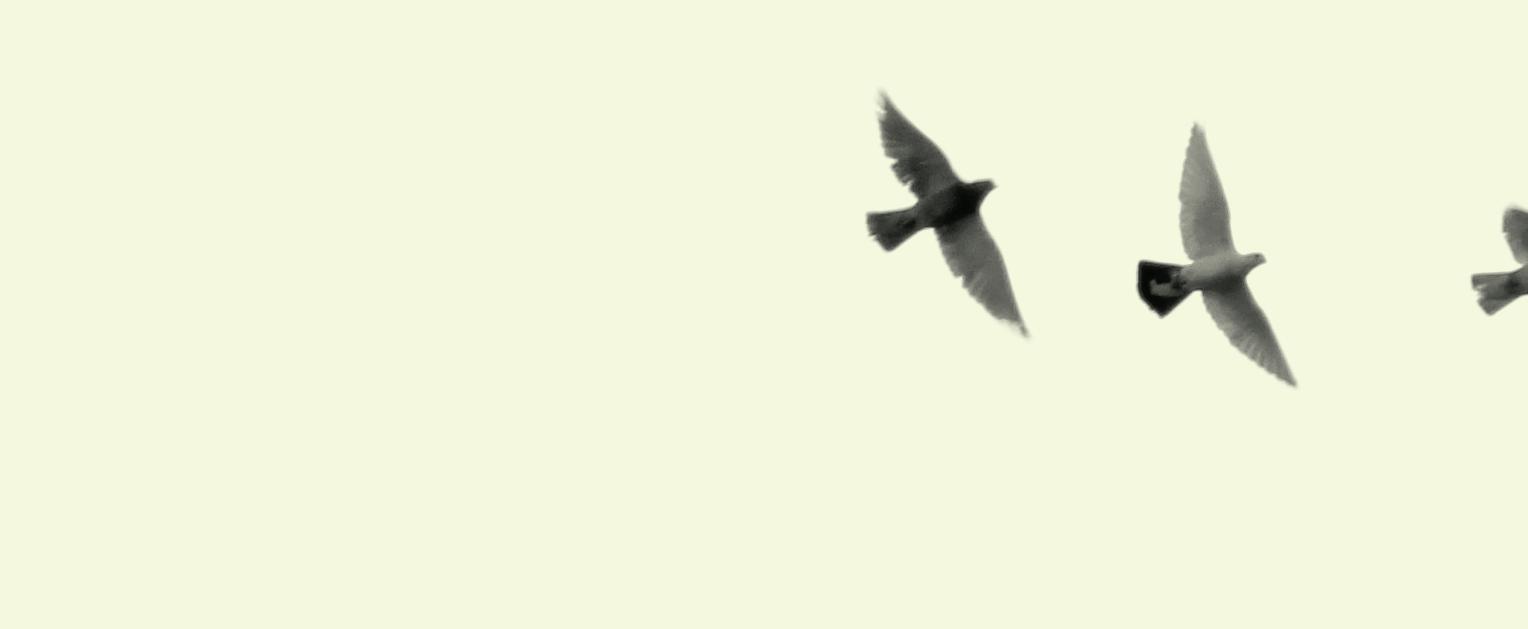

Cam Reid
Kayla Thompson
Ann McCann - Non-fiction Lead
Cam Reid - Non-fiction Lead
Casper Orr - Non-fiction Lead
Em Buth - Fiction Lead
Kayla Thompson - Poetry Lead
Meg Streich - Non-fiction Lead
Starly Lou Riggs - Spotlight Lead
Ashley Hunt
Casper Orr
Ellie Allan
Kayla Thompson
SJ Wasachi
Tess Conner
Bailey Bauer
Cam Reid
Casper Orr
Em Buth
Kahlea Williams
Kam Bradley
Kayla Thompson
Meg Streich
Tess Conner
Starly Lou Riggs
Rhyker Dye
Andi Rand
Bailey Bauer
Em Buth
Kayla Thompson
Meg Streich
SJ Wasachi
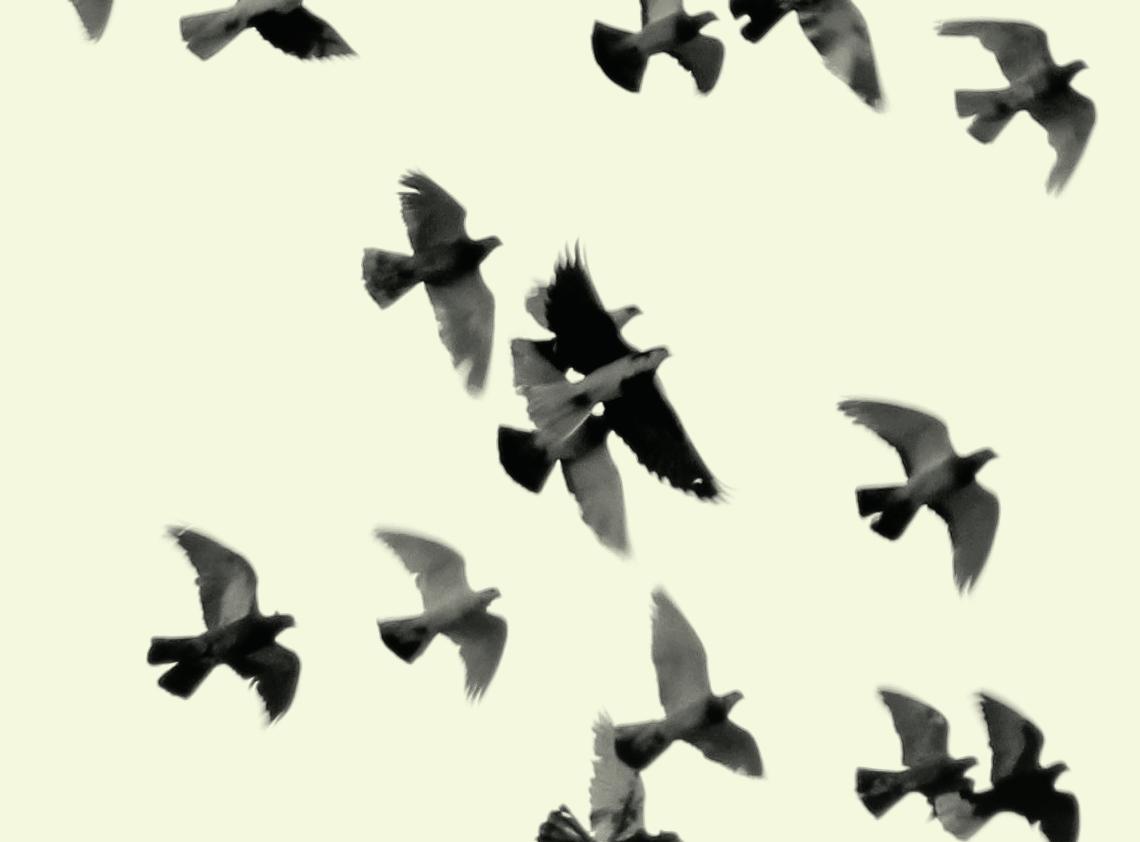


Cam Reid
Kahlea Williams
Starly Lou Riggs
Casper Orr
Em Buth
Starly Lou Riggs
Meg Streich
Andi Rand
Bellamy Bodiford
Hamish Bell
Ky Tanella
Micah Brown
Michael Bednar
Natalie Walton
Nikolai Seraphina
René Zadoorian
Roman Campbell
Sarah Pennington
Timothy Arliss OBrien
Melanie Zhgenti
Nicole Hernandez Reyes
Nicole Hernandez Reyes
Roman Campbell
Averie Bueller [APB Photography]
Ann McCann
Ariel Tusa
Bellamy Bodiford
Cam Reid
Caroline Gharis
Casper Orr
Chloe Oloren
Em Buth
Jason Wayne Wong
Kayla Thompson
Meg Streich
Melanie Zhgenti
Nicole Hernandez Reyes
Nikolai Renee
Olivia Bannerman
Rhyker Dye
Starly Lou Riggs
Ann McCann
Chloe Oloren
Jason Wayne Wong
Melanie Zhengti
Nicole Hernandez Reyes
McKenna Gray Director of Development
Ann McCann
Caroline Gharis
Olivia Bannerman
Internal Community Director
Publicity Coordinator
Operations Chronicler
Events Project Manager
In-house Comic Illustrator

Rhyker Dye
Starly Lou Riggs
Casper Orr
Hailey Green
Ariel Tusa
Caroline Gharis
Dillon Parker
Daisy-Drew Smith
Hailey Green
Melanie Zhengti
Nicole Hernandez Reyes
Meg Streich
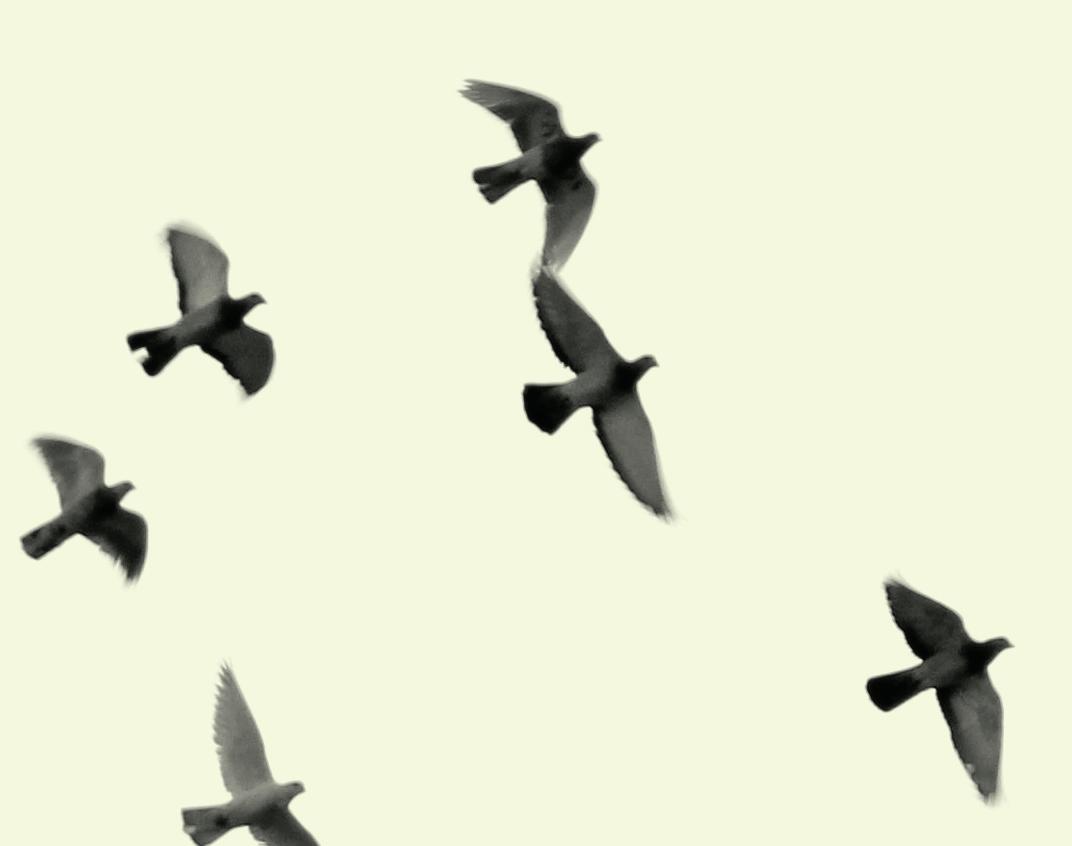

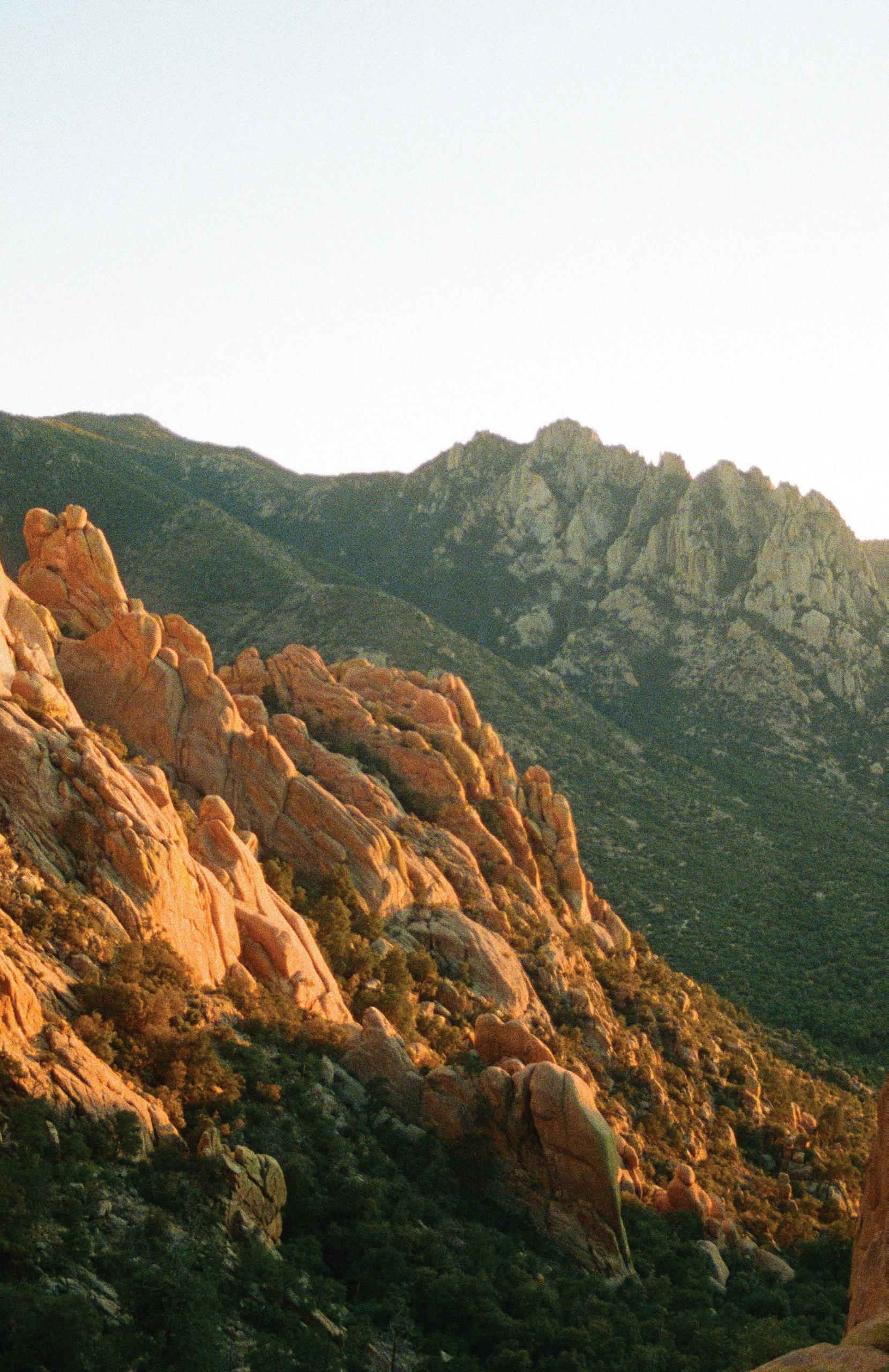
Your Favorite Transcendental Author Was a Homo Words by Casper Orr
Hua | Fruit | Word Words by Dejan Ann Kahilinaʻi Perez
Echolands: Ethereal Landscapes of Becoming Words and Art by Salena (@zonked_art)
Within Barren Lands: Terra, Fear, and the EcoGothic Words and Art by Tommy Rider
To Refuse Order: Lessons from the Great Dismal Swamp Words by Jamayka Young
Displaced: Native Plant Narratives Words and Photos by Jess Beaudin
It’s the End of the World as We Know It, and That’s Okay Words by Bethany Leigh Greenman
Sparkle2 Words by Sophie Mutiara Nova
Displaced Compassion Art by McKenzie Janisz
Burning Questions: What LA’s Fires Reveal About Class and Climate Feral Words by Chloe Oloren
Small Queen, Hot Salad, and Question Party Words and Art by A Lapointe
Parasitology Words and Art by Míša Štorková
Reflections and Relationships
If You Are the Honey, I Am the Hum: How I Handle the Grief of the Bees and Ecological Decline Words by Ann McCann
Valley Girl, Riverside, 2010 Words and Photos by Kota Ball
The Land is a Friend Words by Emmye Vernet
Arrivals Words by Zoe Grace Marquedant
Mind, Body, and Bouldering: an exploration of ourselves and the rocks we climb
Words by Kam Bradley
Mangoes and Black Ants Words by Shaniqua Harris
The Birds and the Bees Art by Natalie Deam
On Growing In Tough Places Words by Kam Bradley
A Rage Room in the Garden Words by Christine Leistner
Forest Full of Names Words by Eleri Denham
Dig Deep: A Queer Perspective on Horticultural Therapy Words and Photos by Rhyker Dye
A Crip’s Reading of Heroes and Saints Words by Casper Orr
Natural You and Me Words and Art by Alayna Cabral
Cycles II Words and Art by Morgan Hyatt
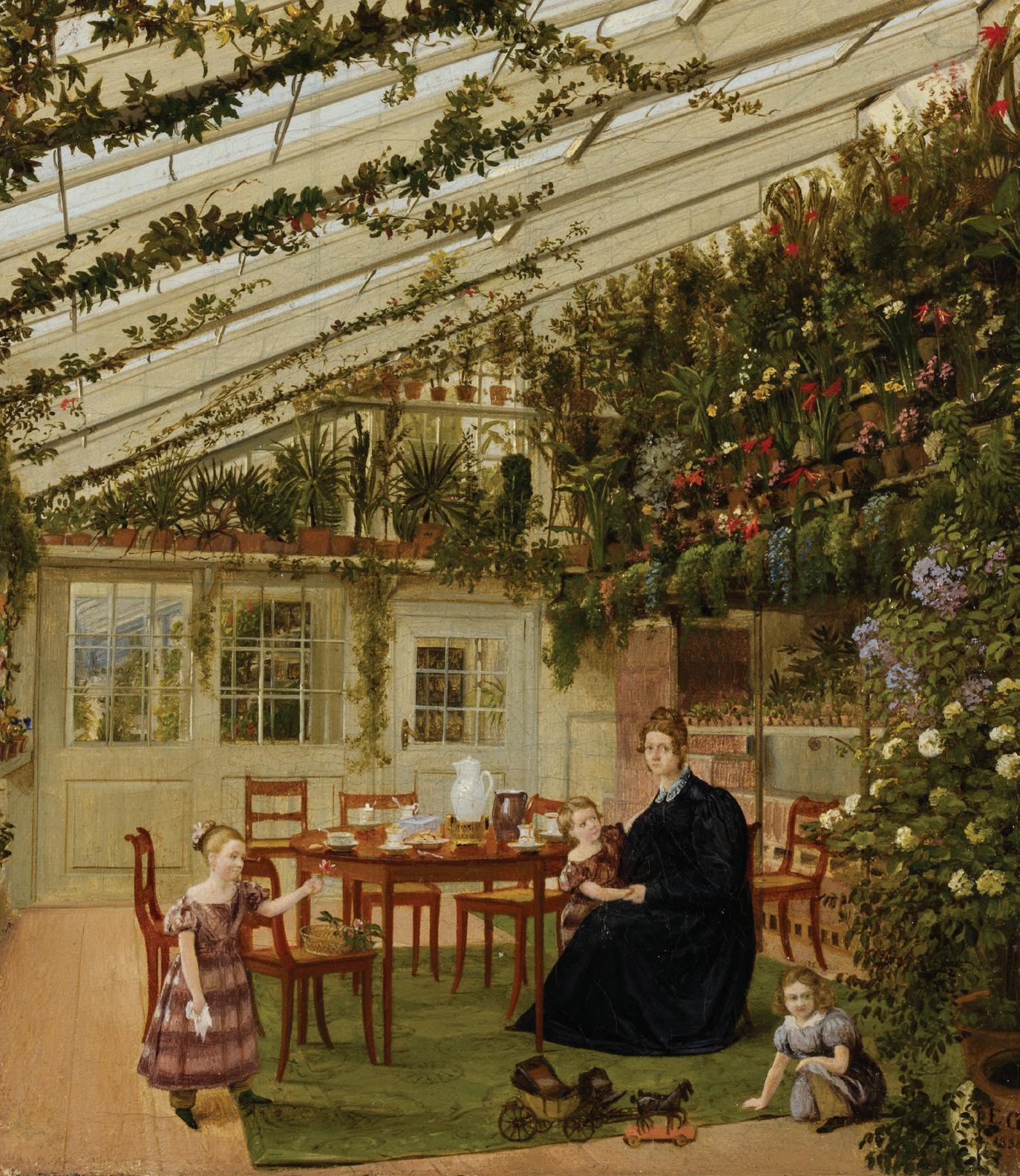
Words by Casper Orr
Author’s note: Within this text I will be discussing numerous historical literary figures and their partners when applicable. However, these figures were not infallible people. Although I did not find it possible to mention their transgressions within the piece, I would like to be clear I am not attempting to white or pink wash the damage done by some of these artists and their lovers. Within this essay, I will be discussing figures such as Walt Whitman, Peter Doyle, and Ralph Waldo Emerson—all men who had perpetuated harm. Whitman was a pedophile and a racist, which was reflected in his writing. His partner, Peter Doyle, had been a soldier in the confederate army in the civil war. Ralph Waldo Emerson’s writing, despite being staunchly anti-slavery, had racist undertones. These men were not good men, but their influence on Queer nature writing has been undeniable. To understand just how far we’ve come, I feel it’s important to recognize the faults of our predecessors.
As Queer people, we have long been subjected to the narrative that our identities are “unnatural.” Even if we ignore the thousands of Homosexual animal relationships within nature, we can clearly observe this same affinity between the natural world and Queerness in different art and literary movements. In movements such as Romanticism, Modernism, and especially Transcendentalism, Queer authors flourished. Oftentimes, our favorite writers today set academia on fire with discourse; poetry that was so Gay, everyone and their mothers had to go outside and touch grass— I’m looking at you, Walt Whitman.
So what sparked this Queer relationship with the Transcendental movement? It’s hard to pin down, just as the true nature of Transcendentalism was, which was widely debated among artists within the movement. There was not one specific mold for the Transcendentalist to fit, no rigid rules or hard constraints assigned to the ideology. Mary Oliver best described the very nature of its philosophy in her collection of essays, Upstream, as being “hardly a proper philosophy” due to its loose and ambiguous ideas. It had the ability to mean something completely new to each individual. During the rise of the literary movement, from 1835-1855, this would have been an enticing opportunity for Queer creatives, sick of a society with no flexibility and little sympathy for those outside of their small, compact boxes with no room to breathe.
Although Transcendentalism was notoriously difficult to pin down, a key tenant in nearly all interpretations of this historically Queer literary movement is the unity of all creation; the idea that we are all connected. Perhaps this is why so many Queer artists flocked to Transcendentalism—a newfound feeling of normalcy without having to play a game with rules that actively disclude them.
Take Thoreau, for example, one of the most notable figureheads of the movement. Largely labeled as a “reluctant heterosexual” in modern academia (though this has only shifted within the past few decades), Thoreau’s work included an abundance of homoeroticism, which encouraged his contemporaries to speculate on his sexuality. Not to mention that he was very close with his mentor and friend, Ralph Waldo Emerson. In fact, it’s speculated that Thoreau had a deep attachment to both Ralph and his wife. However, unlike many other of his Queer peers, Thoreau was reported to have an emotionally detached quality to him, which most likely led to his writing excluding any explicit conversation around his personal desires. It is theorized that Thoreau’s nature—selfisolating and “rarely tender”—was a product of his feeling unable to express his desires, becoming increasingly closed off the older he got, the longer he was forced to hide these fundamental parts of his identity away.
Transcendentalism grew a following of revolutionaries, tired of living in a system with
strict binaries. Anti-gender essentialist and Butch icon Margaret Fuller, most well known for her novel, Woman in the Nineteenth Century, was among many Transcendentalists disillusioned with industrialism and patriarchal structures. Throughout Fuller’s entire career, she wrote about women, specifically the relationships women have with one another. In fact, 19th century women’s literature was rife with romantic engagement between women and an exploration of sexuality. Transcendental literature was no exception. In Fuller’s memoir, Memoirs of Margaret Fuller Ossoli, her readership gets a better understanding of her proclivity towards the depiction of women’s relationships.
The scene rose before me, very unlike reality, doubtless, but majestic and wild. I was the little Harry Bertram and had lost her,-all I had to lose,-and sought her vainly in long dark caves that had no end, plashing through the water; while the crags beetled above, threatening to fall and crush the poor child.
In this recollection of her first love, Fuller unveils a Queering of social norms. She loves this woman, but she feels she cannot express her love for her as a woman. She can only express her desires through the emotions of a man.
And we can’t ignore Walt Whitman, one of the Queerest writers of the movement. Most notable—and controversial—for Leaves of Grass, Whitman set academia ablaze with his explicit homosexual writing. The “Calamus” poems celebrated the “manly love of comrades,” a love that Whitman was quite familiar with. Scholars have long theorized that the Calamus poems were inspired by Whitman’s long term romantic partner, Peter Doyle. Although Whitman never came out as Queer to his speculating contemporaries, letters written by him and Peter were published five years after his passing. To get a better understanding of their relationship, we can take a look at what Doyle had to say about their relationship in a letter to a friend:
We felt to each other at once…He was the only passenger, it was a lonely night, so I thought I would go in and talk with him. Something in me made me do it and something in him drew me that way. He used to say there was something in me had the same effect on him. Anyway, I went into the car. We were familiar at once—I put my hand on his knee—we understood. He did not get out at the end of the trip—in fact went all the way back with me.
Their relationship was uncommonly open for its time despite Whitman’s denial, but was this really necessary? The couple had several photographs taken together, posed together affectionately during an era in which photography was still a luxury must could not attain. Not only did they partake in several of these luxuries of the time, but they had them together.
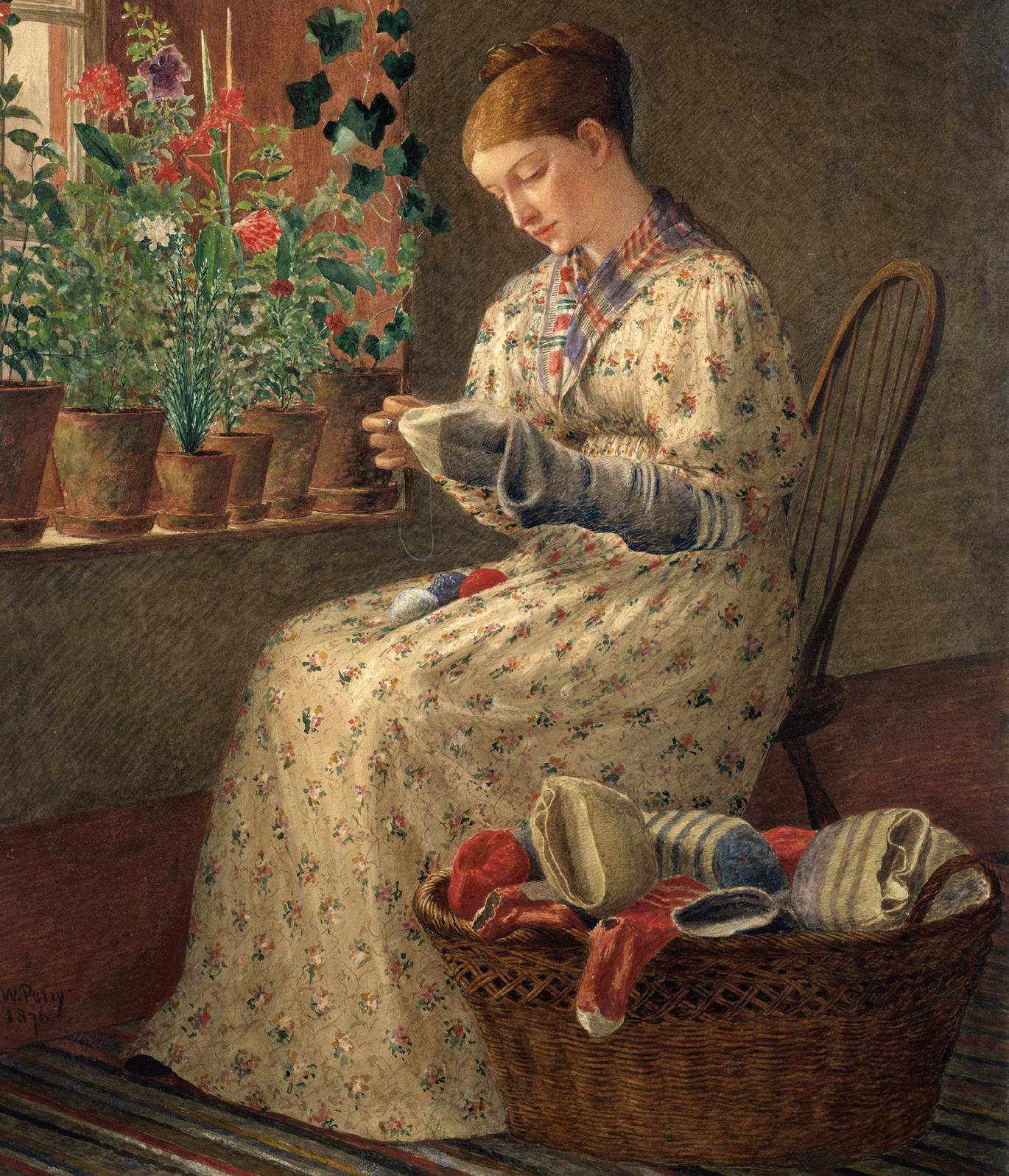
Transcendentalism and Queer nature writing didn’t end in the 19th century; it’s still alive today. To take a look at modern Transcendentalism, I want to look at authors Mary Oliver and Gabriela Mistral, two of the most innovative and gameshaking modern Transcendentalists.
A beloved contemporary within the Transcendentalist movement that is unfortunately often left out of the literary canon is Gabriela Mistral. Mistral was born in Chile in 1889 under the name of Lucila Godoya Alcayaga, later taking on the name she is most well known by to publish her poetry under. Her poetry focused on advocacy for the rights of women, children, and the impoverished. She not only stood beside the marginalized communities within her home country, but she defended communities across the globe. Although activism and radical political ideologies were always a key tenant to Transcendentalism, first wave authors tended
to write close to home. Gabriela Mistral was a revolutionary off of paper as well, later becoming a Chilean diplomat to advocate for the rights of women worldwide.
Not only was Mistral’s poetry a form of advocacy, but it was a way for her to process her Queer identity within a conservative society. She wrote extensively about forbidden loves, and while these poems were not explicitly Queer, her relationship with Doris Dana was. It was her poetry written about Queer love that won Mistral a Nobel, making her the first Latin American woman awarded a Nobel Prize for literature.
As previously stated, the Transcendentalist philosophy is not exactly concrete and means many different things to many different people. In the inception of Transcendentalism, its stance on organized religion was not an exception to this shape-shifting principle. Most authors agreed that the first and foremost authority of any person was
the individual who may decide on whether or not they believe in a god. Most Transcendentalists gave credence to those who searched for a god on their volition without outside influence, while other great thinkers were on a different page; god was personal experience, reaching ever closer to divinity. This was not something that religion could assist one with. Mistral was not only on a different page, but reading out of an entirely different book.
Growing up Catholic, Gabriela Mistral was a part of the Secular Fransciscan Order, the third branch of an order that followed the practices and observances of Saint Francis of Assisi. Her involvement with religion and the church was a great change seen within the Transcendentalist movement, as was her incorporation of her faith in her writing. In short, this third branch of the Franciscan Order commits itself to the service and advocacy of marginalized communities, adoration for natural creation, a belief in the unique value in each individual, and a faith in the personal god. Despite Transcendentalism historically being antithetical to organized religion, the overlap in these philosophies are great, both seen intertwined within poems such as “Tiny Feet” and “Decalogue of the Artist;”
II.There is no godless art. Although you love not the Creator, you shall bear witness to Him creating His likeness.
X. Each act of creation shall leave you humble, for it is never as great as your dream and always inferior to that most marvelous dream of God which is Nature.
– Gabriela Mistral, Decalogue of the Artist (Commandments 2, 10)
With a new wave of Transcendentalism established by Gabriela Mistral, anything had officially become possible. Mary Oliver, author of “Wild Geese,” saw this and ran. In
Citations
Lybarger, Jeremy. “Walt Whitman’s Boys.” Boston Review, 3 Mar. 2024
her collection of essays, Upstream, Oliver writes several essays dedicated to her Transcendentalist inspirations, including Whitman, Emerson, and Wordsworth—all men who were involved in sexually transgressive art. While these authors shaped Oliver’s voice, second wave Transcendentalism was no longer Whitman’s literary movement.
After coming out as a Lesbian and leaving the church and her husband, Mary Oliver left the Midwest and moved to New York where she met her life partner, Molly Malone Cook, in the late 1950s. Both as a child and a professional poet, Oliver sought comfort in Transcendental literature. Growing up Queer in the rural Midwest and surviving sexual abuse at the hands of her father as a young girl, the words of Whitman, Emerson, and Wordsworth were what helped her cope with such a painful childhood. Oliver fell in love with the Transcendentalist philosophy and its reverence for nature, pioneering the second wave of the movement with a focus on healing.
Unlike the originators of Transcendentalism, Oliver set out to make poetry more accessible to readers. Through her interpretation of Transcendentalism’s key tenant of a unity of discovery through nature and art, she strove to create art with as few barriers as possible to truly connect all of creation through art. Through this initiative, Oliver not only pioneers a new wave of Transcendentalism, but poetry as a whole. Poetry that we all have a home in.
Transcendentalism is no longer what it was in 1835, when its canon writers were predominantly male and white. Now, Queer writers of all backgrounds are starting to thrive and grow in the field of nature writing; Eduardo C. Corral, Akwaeke Emezi, Janalyn Guo, Petra Kuppers, and so many more. Modern Queer writers continue the tradition of weaving Queerness and nature into one concept, inextricable from each other.
Porter, Lavelle. “Should Walt Whitman Be #cancelled?” JSTOR DAILY, 17 Apr. 2019
Murray, Martin G. “Pete the Great”: A Biography of Peter Doyle, 1994 Painter, Nell Irvin. “Ralph Waldo Emerson’s Saxons.” JSTOR, Mar. 2009
Marcus, James. “Thoreau in Love.” The New Yorker, 11 Oct. 2021
Boylan, Jennifer Finney. “If I Had Loved Her Less: On a Queer Reading of Henry David Thoreau and the Daily Performance of Manhood.” Literary Hub, 13 Sept. 2021
Kiffer, Selby, and Halina Loft. “Literally in Love: The Story of Walt Whitman and Peter Doyle.” Sotheby’s, 25 July 2019
Young, Mathilda. “Celebrating the Legacy of Poet Walt Whitman This LGBTQ History Month.” HRC, 17 Oct. 2019
Wood, Mary E. “‘With Ready Eye’: Margaret Fuller and Lesbianism in Nineteenth-Century American Literature.” American Literature, vol. 65, no. 1, 1993, pp. 1–18. JSTOR
“Gabriela Mistral.” The Library of Congress
Habib, Yamily. “The Latina Lesbian Love Story That Inspired A Nobel Prize.” Latina Media Co, 1 Dec. 2021
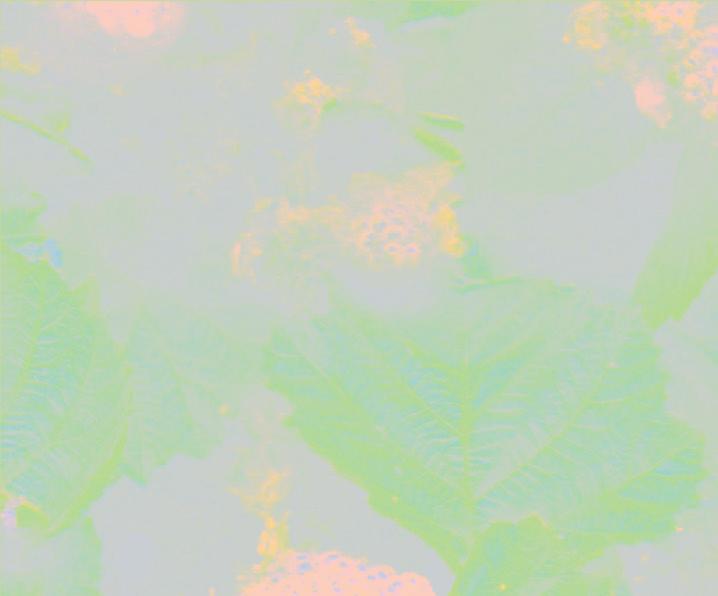

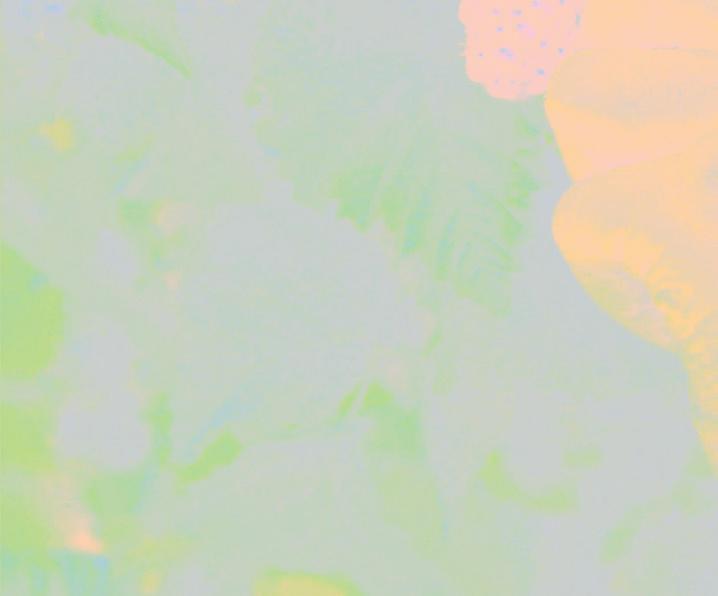
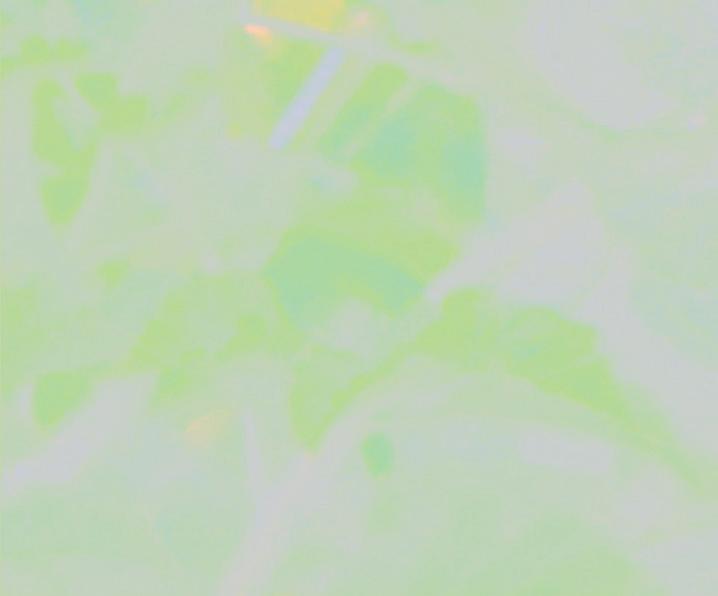

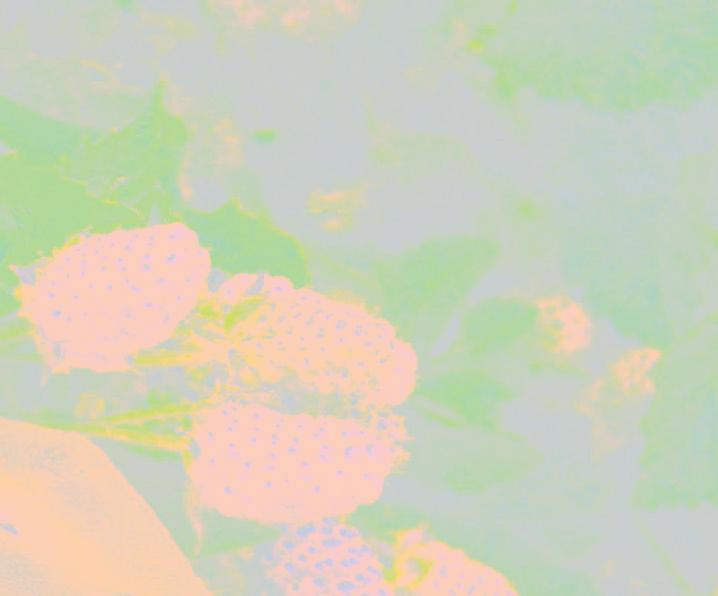
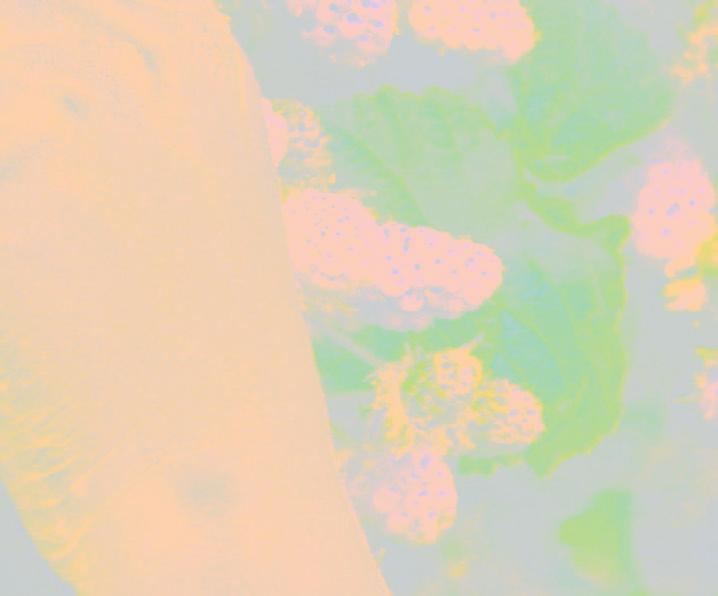

Words by Dejan Ann Kahilina i Perez
The word for “word” in Hawaiian is the same word we have for “fruit”—Hua.
Hoooo—like the first whisper of dusk from the forest outward—to that ahhhhh—the sigh of relief once gentleness reaches you. To speak our language is to literally engage in the fruits of our ancestors labor. Hua, fruit, words.
Most histories in american textbooks start with Pacific histories at the beginning of the first time a white manʻs boot hit the sand. When in all fullness, the peoples have surpassed open water sailing long before the white man challenged his fear of the ocean. Our peoples have fear of the ocean as well, but in reverence. Most cultures in the Pacific have names, gods, a creation story that begins in the depths to the shore, to the forest, to the mountain peak, to the sky. Pacific worlds have always transcended what was documented of us.
My present day privilege of Queerness will always be tied to Hawaiʻi’s history, because both my awareness of my Queerness and Hawaiʻi’s moʻolelo saved my life.
The fact that same-sex partners are in our moʻolelo, that there were words to describe us: ʻaikane. That there was always a third-gender: māhū. This all happened pre-contamination, precolonial disease, and will continue as there is an infallible survivance in our cultures as evidence through the robust amount of folks identifying as māhū, as using the old moʻolelo of aikāne to describe their love current love stories, as the Hawaiian language continues to be taken up by another kanaka, grown or keiki alike.
“Colonialism will not be the final moʻolelo of our people, so long as we know that our culture and language are beautiful parts of who we are,” Hawaiʻi Poet laureate Brandy Nālani McDouggal provided in a TedxMānoa talk almost 12 years ago, and this statement still feeds. Colonialism threatened to take our stories away, and at one point, was nearly successful. Following the illegal
overthrow of our Queen Liliʻuokalani in 1896, the white businessmen began pushing erasure after erasure: no language, no dance, no culture. Schools began to mandate the physical torture and humiliation of Hawaiian students using Hawaiian language. If you ask our elders today of those days, though, you can hear them remember how the language still thrived and where: at home over the table, in the whispers into their grandbabies hairs, in their dances in backyards for birthdays and graduation.
They thought they had forced fruit to spoil and rot when they forced my ancestors the flesh out of our mouths, but all along, they were hiding the seeds in their cheeks, under their tongues, waiting for the right moment to plant again into trees that their grandchildren could nestle under the roots once again.
Hua, it means fruit, it also means word, in Hawaiian. It also refers to the reproductive organs of each body—the kūleana, responsibility, to think of the next generation. Biological reproduction and procreation is not all that matters, as the poem “Sons” by the late activist Haunani-Kay Trask makes clear. She forged a pathway beyond offering biological children to her nation, slyly reproducing as Haumea did: through the forehead, through thoughts, through thoughts passed on and on and on and on. It is under Haunani and so many other groves I stroll through when I am lost, it is the hua I reach for, and it is the seeds I save.
Kūleana—the word for responsibility and privilege—holds the most promising seeds. I am still only learning my language after three generations of not having it spoken fluently in my family. I am still learning to teach in the way that is through a forest and not a fire, savoring the stories of the needs of new roots. I am still learning what love means. Yet, I do not fear. I am in the forest, and fruits are speaking.
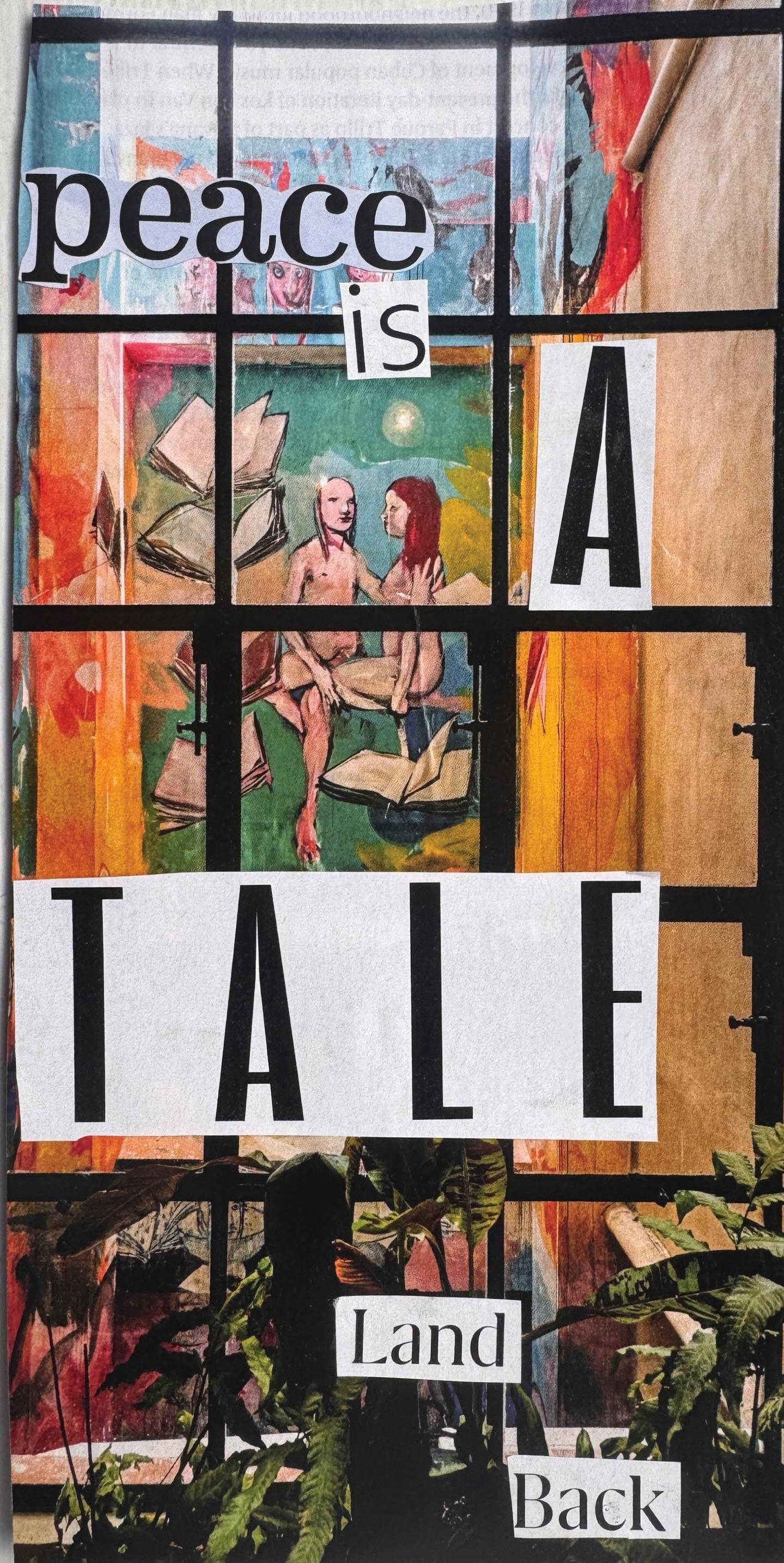
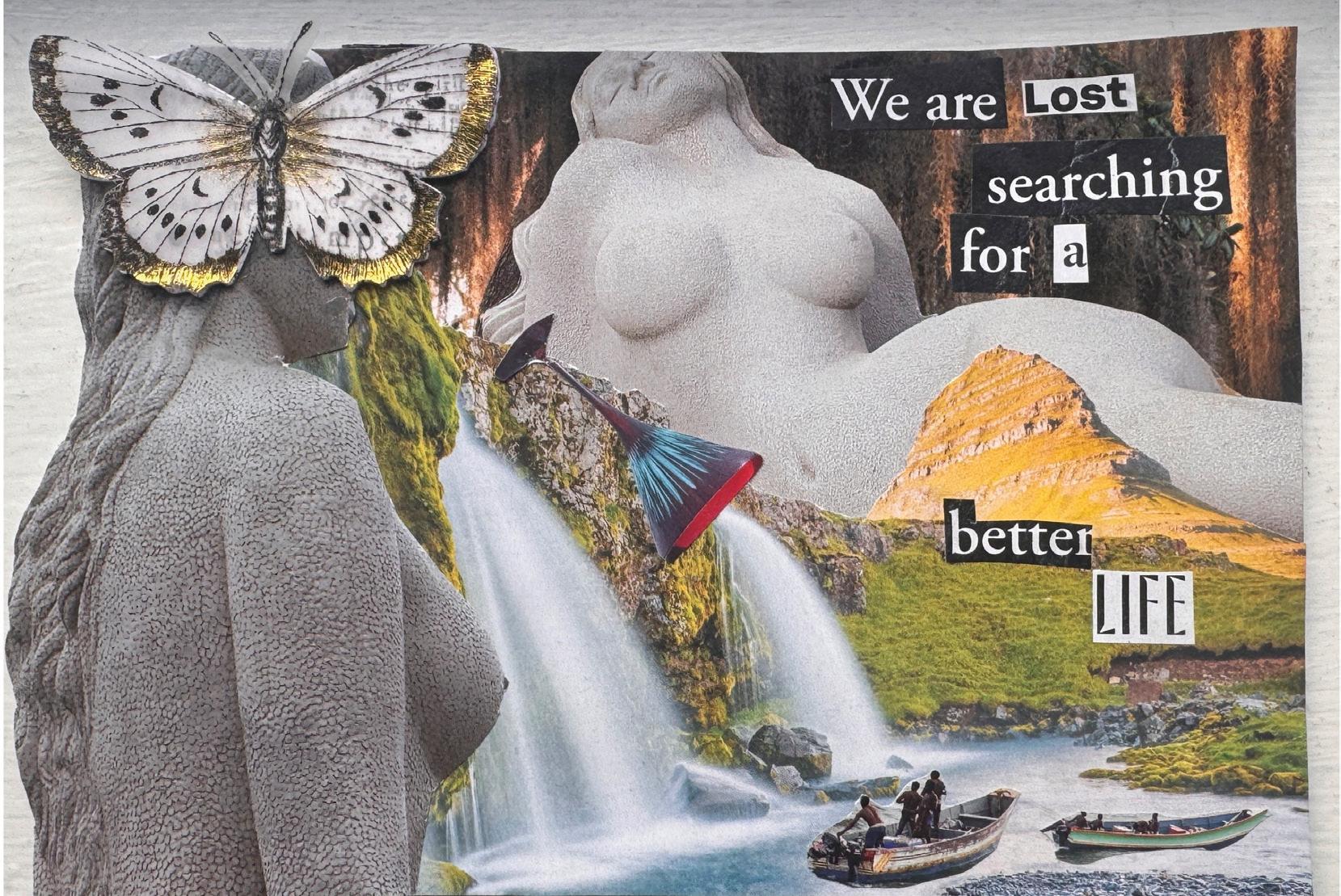
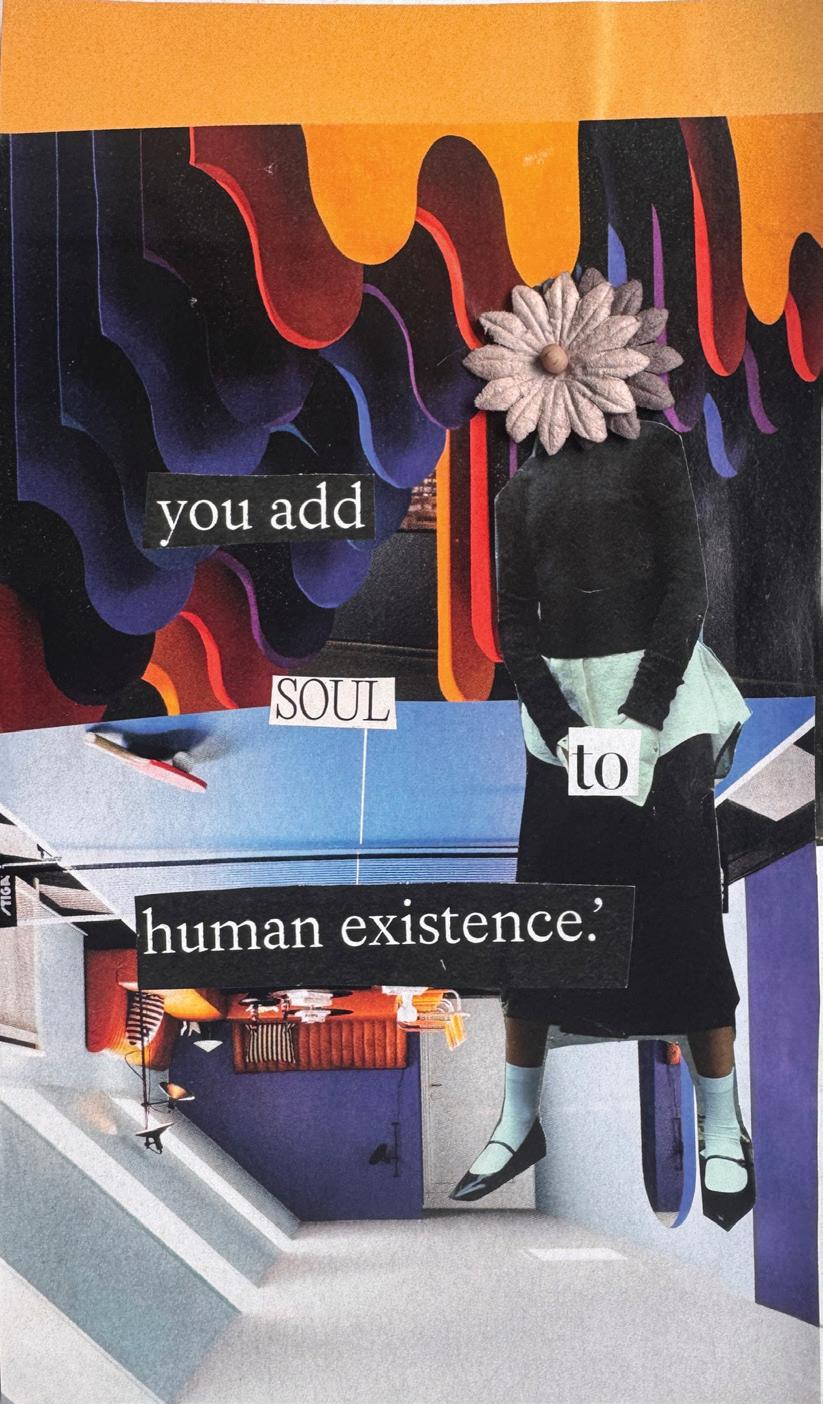
by Salena (@zonked_art)
This series embodies Queer ecology by reimagining landscapes as spaces of radical becoming, where human and non-human forms merge in soft rebellion against rigid binaries. It challenges hierarchical constructs, celebrates diversity in all its forms, and invites viewers to consider ecosystems as inherently Queer—dynamic, interconnected, and constantly evolving. Through poetic visuals, the series suggests that to reclaim harmony with the earth, we must also embrace our own multiplicity and fluidity.

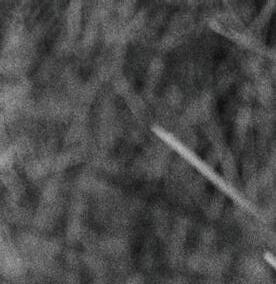
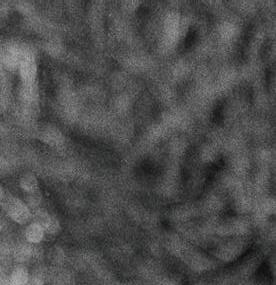

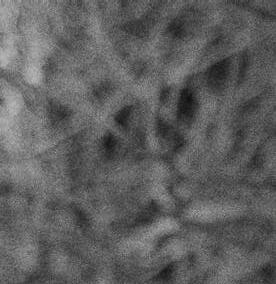

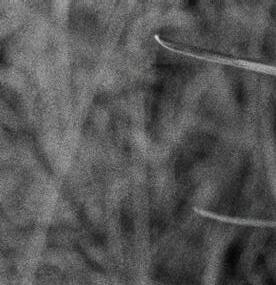
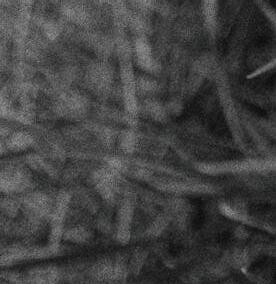
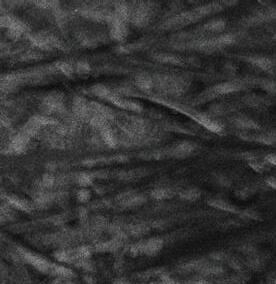
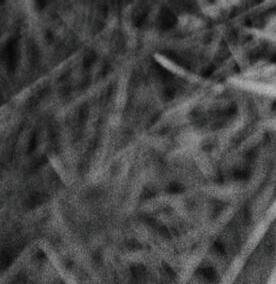
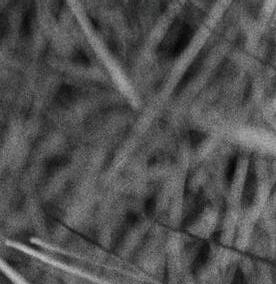
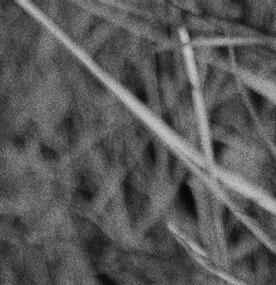
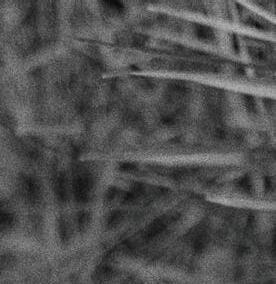
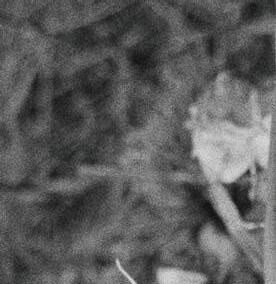
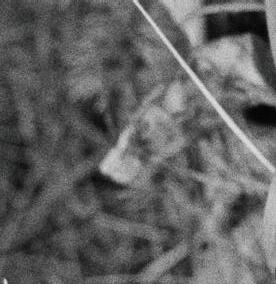

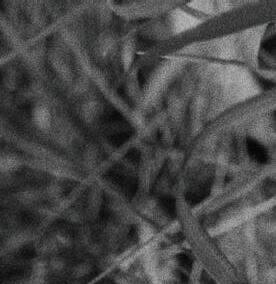
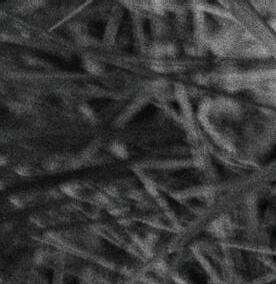
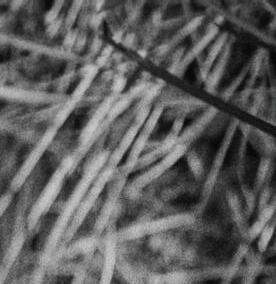
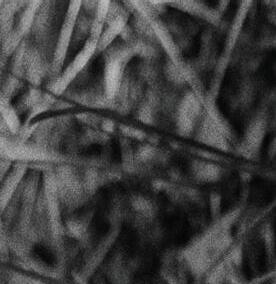

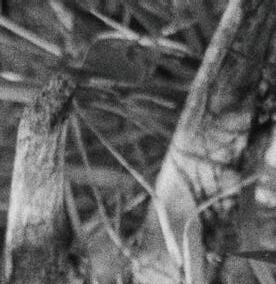
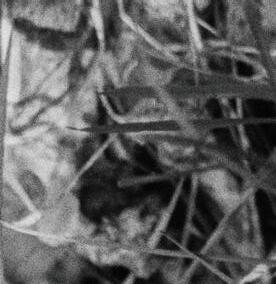
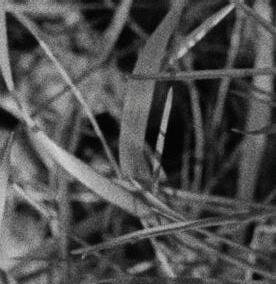

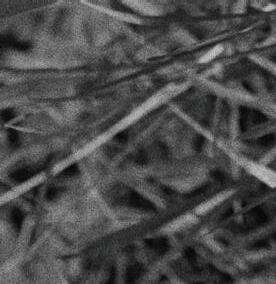



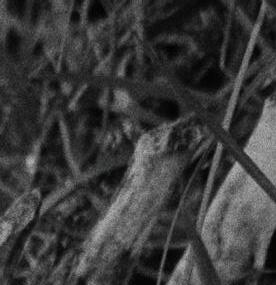
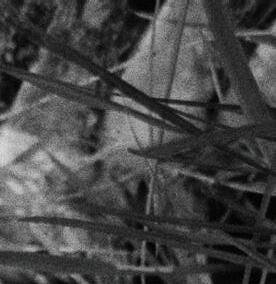
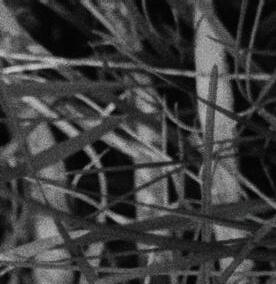
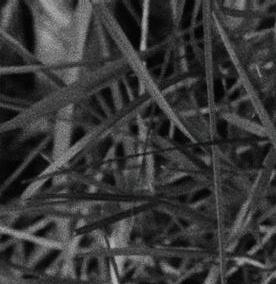
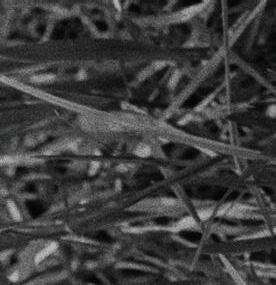
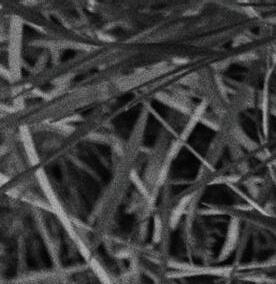

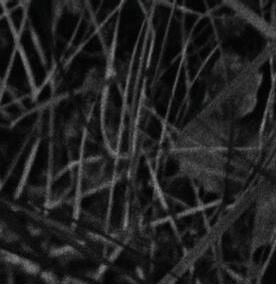
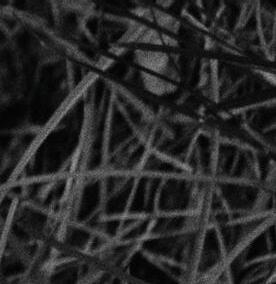
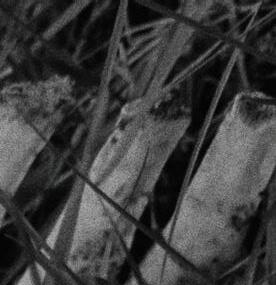



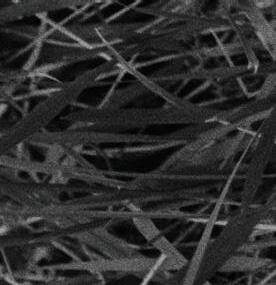
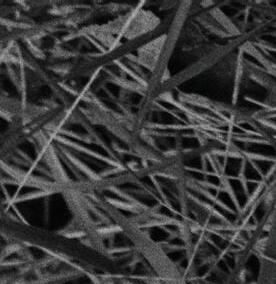
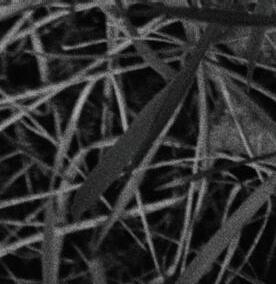
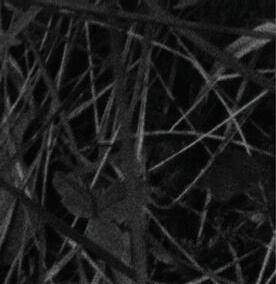
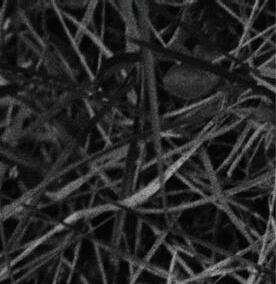
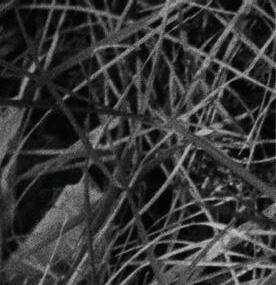
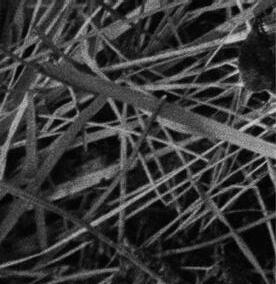

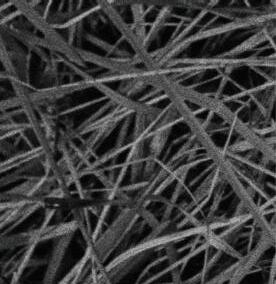
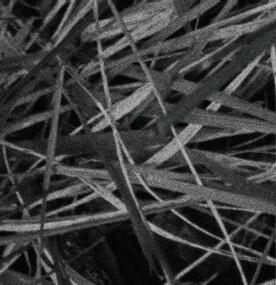
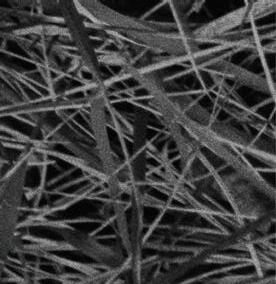
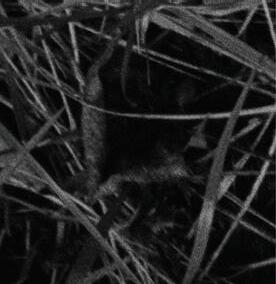
Rider
“EcoGothic” is a term that was first legitimized in an anthology under the same name, edited by Andrew Smith and William Hughes in 2013.1 This anthology is considered the first book to examine the Gothic through theories of ecocriticism and is heavily related to Canadian Gothic subcategories focusing on colonization, decolonization, wilderness, sublime landscapes, and romanticism (Hughes, 2018; Sugars, 2014). I would argue that if landscape is as highly political as ecocriticism would suggest, then the Gothic depiction of Canadian wilderness can also be understood through a similar lens.
In this work, I propose that we understand the land not as an inanimate or fixed background for human experience, but as one of the characters in the creation of personal and national narratives. Representations of the land can be understood as having the power to create feelings of fear, and even paranoia in the viewer. As Cynthia Sugars (2014) argues in “Canadian Gothic,” this reconstruction of the land is important as it facilitates us in shifting the question from the conventional Gothic approach of “Who am I” to an approach that shapes the Canadian ecoGothic of “Where is here?”
My research on the ecoGothic genre has largely been through visual creation centred on the use of photography. This work was created in response to the dominant visual culture in Canadian, specifically Albertan, culture and colonial history. This research became the foundation for building and creating a new understanding of the ways identity impacts our relationship with the land. My art exhibition, Within Barren Lands, is a visual representation of this research creation, and acts as a space where I can invite the viewers to consider their place in land, horror, and identity outside traditional academic articles.
As Sugars (2014) and Edwards (2005) state, Gothic history within Canada was created by settlers to legitimize the settlement of the colony and create a fake claim through developing new folklore and superstitions while ignoring established mythology from residing Indigenous Peoples. They further claim that colonists were haunted by the lack of spiritual identity, showing they had no connection to the land outside occupying it. In comparison, the “Old World” Gothic, which often referenced medieval Europe, referenced a deep connection to the history and oppression on the land (Angelis & Savolainen, 2016; Launis, 2016). Thus in the “New World,” spectres haunting the settlers would have proved they had historical antiquity; “[g]hosts, in this context, are not objects of fear, but of fulfillment. To be haunted is to have one’s place as a historical subject validated” (Sugars, 2014, p. 69). This allowed the Canadian Gothic to develop in such a way that promoted fear of the wilderness (Edwards, 2005; Murphy, 2013). The terrain became a monster, an amalgamation of anything deemed as the dangerous “Other” to the status quo and the nation’s current fears (Ancuta, 2015; Angelis & Savolainen, 2016). The “Other” is an individual or group of people who are viewed as and treated as though their inherent nature is alien and different to oneself. Through dominance hierarchies the act of othering often resorts in not only social ostracisation but systematic violence.
1Stylized as “ecoGothic” within the anthology, it is the combination of “ecocriticism” and “Gothic.”
Although serving the same purpose of furthering colonial agendas, visually the promotion of settling Canada focused more on selling the land to settlers as “empty” (Frye, 2002; Sikora, 2016; Sugars, 2014). This narrative claimed that the land needed cultivation and white domination, while still in awe of the sublime wilderness. Both the fear and fetishization of the landscape furthered a national agenda and allowed land to become a tool of propaganda to, regardless of the framing, position the white settler as the pitiable victim of the untamable landscape, and brave cultivator in the New World (Angelis & Savolainen, 2016; Bondar, 2013).
After establishing the land as a threat, the Canadian Gothic further separates the untamable landscape from society (Ancuta, 2005; Sikora, 2016; Sugars, 2014). This binary thinking of man vs land then scaffolds into excluding marginalized people from the dominant group whether it be by race, class, gender, etc. (Murphy, 2013). To “Other” an individual or group of people is to separate yourself from them, to dehumanize and see them as a threat to the norm of social rules and traditions or physical wellbeing (Ancuta, 2005). The Gothic utilizes this through a process known as monsterization, having the “Other” transform mentally and/or physically into a beast which the audience and hero can no longer relate to or empathize with. Often in ecoGothic it is the land that is corrupting an individual, contaminating them and making them inhuman (Ancuta, 2005; Sikora, 2016; Sugars, 2014). This subtext then communicates to the audience that the “Other” is corruptible, dangerous, and a threat to the status quo. In this context, Canadian Gothic functions as a tool to further demonize and disenfranchise groups while still manipulating the narrative of the land.
Artist Statement
The settlement of Canada and the subsequent literature, art, film, and culture created have shaped an identity around land and what it means to experience it. As an Albertan artist, I see my work as a dialogue with the subliminal nature of the landscape. My artwork has been grounded in examining how the land is used to simultaneously uplift and outcast people, animals, and wilderness. In this work, I blur the lines between the viewer’s many possible identities: as aggressor, victim, and voyeur, to question any comfort the viewer might feel while engaging with the work from one of these many points of identification. I highlight photography’s capacity to present both a subtle and inaudible threat, through the colonial tool of representing a landscape as a fixed object contained by border, as well as presenting it as a character within itself filled with a tense atmosphere to induce a fictional paranoia. Instead of ignoring the history of the ecoGothic narrative and romanticism of land within the Canadian canon, the research builds on them as a criticism and repossession of the conversation. I have strived to fully embrace the ugliness of the Gothic as a statement of love for the land and people. To be seen as the “Other” is something anyone is capable of experiencing, making no one safe from becoming a perceived monster.

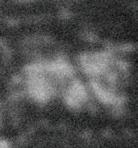
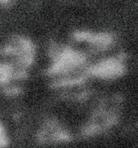
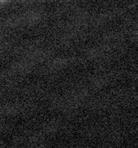
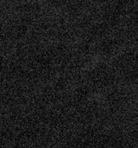
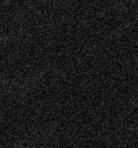

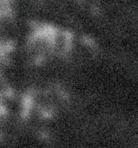
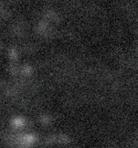
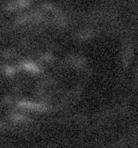
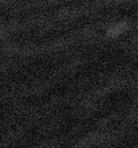
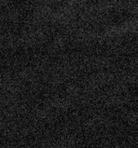
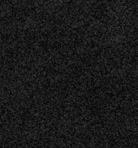
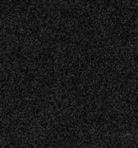
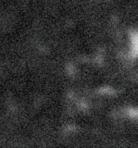
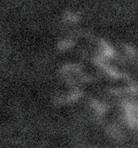
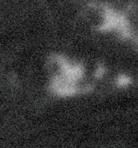
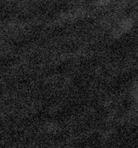

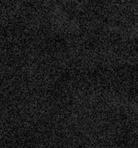

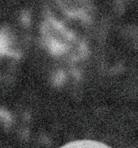
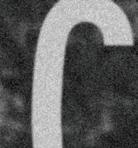
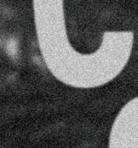
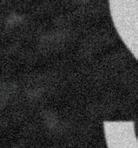
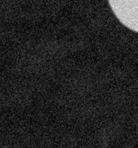
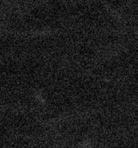
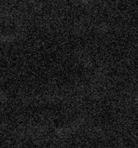
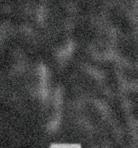
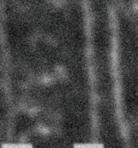
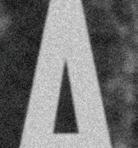
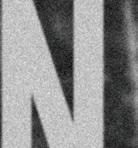
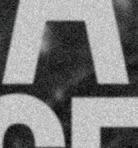
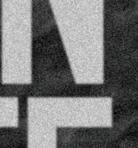
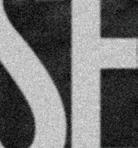
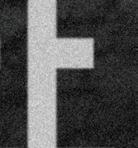
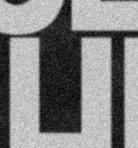
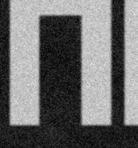

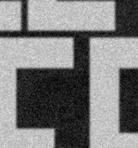
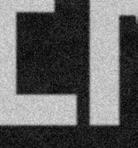
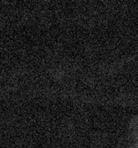
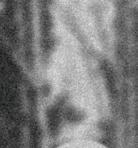
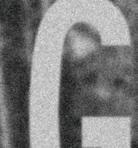
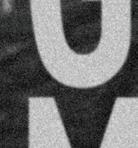
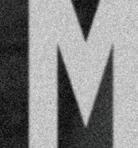
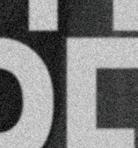


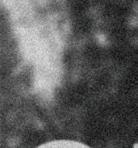
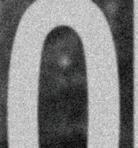
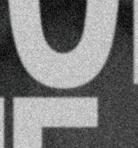
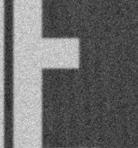
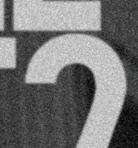
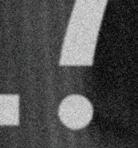

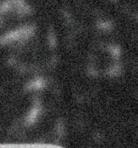
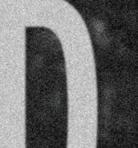
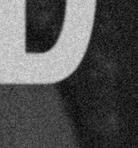
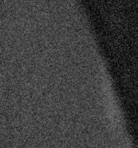
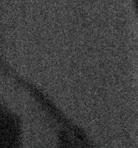

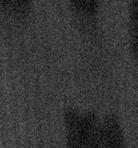
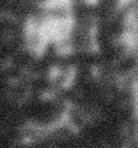
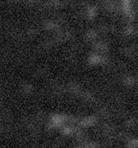
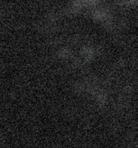
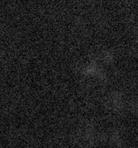



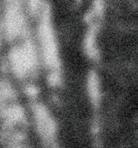
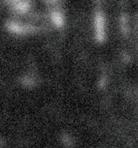

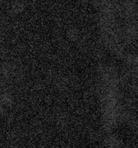
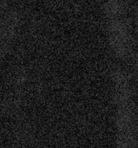
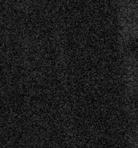

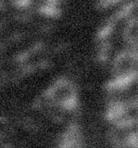




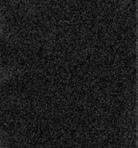

Instead of humanizing these experiences to invoke audience empathy, my research is focused on asking the audience to reconsider what it means to be the threat, and what it means to experience land. The landscape is an active agent in relation to the audience instead of scenery—allowing the viewer to have a conversation with instead of about.
The findings of this research are summarized in a body of visual work including pieces created through film and digital photography, found objects, oil painting, and silkscreen printmaking. A solo exhibition took place in The Little Gallery at the University of Calgary from September 23rd to October 4th, 2024. In this show, the bulk of the documentation of the landscape was represented through projected slides of photographs. This display method is an alternative to traditionally hung and framed prints; it is both a reference to analog mediums and faux documentation, as well as a horror motif in the contemporary art scene. The slides do not allow for a deep examination of the photographs, as they are timed to flip to the next image before a meaningful understanding of the previous can be attained. Street signs printed on and shot imply violence alongside paintings and prints of roadkill and farm animals, both inviting the audience to consider if they are a threat or threatened. As an exhibition, the aim was to further invoke this consideration of paranoia and occupation. While the title Within Barren Lands offers a false sense of security, suggesting there is no danger lurking in the landscape, the trust between the audience and work is lost because the land displayed is visibly inhabited (by either flora, fauna, or monster), a parallel to the false narratives spewed by the colony.
Throughout this research, I extensively studied key concepts of the ecoGothic and noted a consistent theme within Gothic monsters. These act as a form of catharsis, where the status quo is constantly threatened by both the taboo and by alienated groups based on the current social-political climates. I argue that using the Gothic to explore contemporary Canadian issues, rather than focusing exclusively on antiquity, is a natural progression of the invocation of monsters and folk tales. This work sought to explore and define Albertan ecoGothic through visual and artistic means based in photography. The research challenged me to reconsider how I defined and experienced wilderness, belonging, home, and what it means to have a relationship with the land. This is a topic I will continue to explore, both through research-creation and, in the future, by expanding the research methods to include the exploration of archival material related to specific local areas and towns in Southern Alberta. While an important first step, this project has also become the foundation of a larger body of work and dialogue that I hope to continue to investigate.
References
Ancuta, K. (2005). Where angels fear to hover: Between the gothic disease and the meataphysics of horror. Lang. Angelis C., & Savolainen M. (2013). The ‘New World’ gothic monster: Spatio-temporal ambiguities, male bonding and Canadianness in John Richardson’s Wacousta. In P. Mehtonen & M. Savolainen (Eds.), Gothic topographies: Language, nation building and “race” (1st ed., pp. 217–234). Taylor & Francis Group.
Bondar A. F. (2013). Bodies on Earth: exploring the sites of the Canadian ecoGothic. In W. Hughes & A. Smith (Eds.), EcoGothic (pp. 72–86). Manchester University Press.
Edwards, J. D. (2005). Gothic Canada. The University Of Alberta Press. Frye, N. (2002). The bush garden: Essays on the Canadian imagination. Hughes, W., & Smith, A. (Eds.). (2013). EcoGothic. Manchester University Press. Hughes, W. (2018). Key concepts in the Gothic. Edinburgh University Press. Launis, K. (2013). From Italy to the Finnish woods: the rise of Gothic fiction in Finland. In P. Mehtonen & M. Savolainen (Eds.), Gothic topographies: Language, nation building and “race” (1st ed., pp. 169–186). Taylor & Francis Group.
Murphy, B. M. (2013). The rural Gothic in American popular culture: Backwoods horror and terror in the wilderness. Palgrave Macmillan. Sikora, T. (2013). ‘Murderous pleasures’: the (female) Gothic and the death drive in selected short stories by Margaret Atwood, Isabel Huggan and Alice Munro. In P. Mehtonen & M. Savolainen (Eds.), Gothic topographies: Language, nation building and “race” (1st ed., pp. 203–216). Taylor & Francis Group.
Sugars, C. C. (2014). Canadian Gothic: Literature, history, and the spectre of self-invention. University Of Wales Press.
Words by Jamayka Young
Photo by Yazmin Munoz
The Great Dismal Swamp, the largest remaining swamp on the East Coast of the United States, stretches across the Mid-Atlantic, from the Southeast of Virginia to the Northeast of North Carolina. The swamp serves as a relic of the original wetland of more than 1.2 million acres that has since been dwindled down to just 1/10th of its original size.
The swamp was named Dismal by William Byrd II, a slaver and plantation owner in colonial Virginia, after his visit to the swamp in 1728. Upon seeing the thick bogs, swampy marshes, and massive mauls of migrating black bears he remarked that the area was a, “miserable morass in which nothing can inhabit” (Blaakman, n.d.).
This statement was declared in direct opposition to the thousands of escaped formerly enslaved Black people, or Maroons, who had found their freedom amongst the impenetrable landscape, alongside the many Indigenous tribes who had been hunting in the region for millennia.
The term Maroon comes from the Spanish term “cimarrón” meaning feral or untamed. As the colonists attempted to bring the Indigenous population and the enslaved Africans under heel, they simultaneously attempted to tame the landscape.
The terrain made safe harbor for those escaping the unthinkable violence of chattel slavery and the encroachment of European settlement. For many escaped slaves fleeing north, the swamp was a critical stop on the Underground Railroad.
For other former slaves in search of freedom beyond the control of white men, they chose to take up permanent residence in the swamp, trading with Native people, enslaved people, and occasionally even white people living outside the autonomous communities they built. Maroonage was not just an escape from bondage, but a chance to truly live as free, not reliant on the tenuous benevolence of northern colonial governments.
While teeming with crocodiles, black bears, and other dangerous creatures, the dense, uneven landscape made it difficult for slave hunters and their dogs to navigate—a significantly more attractive option than the horrors the Maroons escaped from. One such Maroon who found refuge in the swamp, Tom Wilson, remarked “I felt safer amongst the crocodiles than the white men”(Youssef, 2017).
William Byrd was in the swamp scouting the land in order to lay the groundwork for a new capitalist venture. The Dismal Swamp Company, founded in 1763, was a land-speculation company. Byrd schemed with the powerful class of Virginia plantation owners, including George Washington, with the intention of draining the swamp in order to uncover and sell the land beneath it.
Draining the swamp would kill two birds with one stone. Simultaneously increasing the wealth of the growing capitalist class in the early United States, and furthering the settler colonial project of complete domination over the land, over the Native population, over the enslaved.
The ever-growing scale of the colonial project and its violent, slave-labor fueled exploitation of stolen lands had begun degrading the soil. This made virgin land an increasingly valuable commodity.
This viewpoint was in opposition to many Indigenous groups of the region. The capitalists imagined land as a commodity that could be owned by one man or company, rather than the commons of a community. And like any other commodity, it was something that could be used up and discarded when it lost its value. That value was the cash crops grown by the enslaved to be sold in European and American markets.

Outside of the monetary value the land could bring to the slavers, it also served another end. Under the colonial ideology the settler glorifies himself, imagining his role in the world as divinely ordained to manage the rabble, to instill order over the otherwise unruly, casting the world in the image of his pristine, white god.
Marshlands like the Great Dismal Swamp act as the antithesis to this manicured environment, a liminal in-between, an unmanageable space refusing definition, defiant as the Maroons that inhabit the wetlands, refusing their assigned roles as slaves. The Great Dismal Swamp serves as an example of resilience in the face of capitalist, colonial suppression and an outpost of anti-colonial resistance.
The United States continues to be governed by an ideology that demands endless productivity and perfect order. One that attempts to stamp out “deviance” from prescribed order—Queer folks, Disabled folks, immigrants, people of color, and others that subvert the enforced myths of a heterosexual, white, Christian nation. Spaces like swamps, full of disorder, unsteady the ground this empire was built on. The Great Dismal Swamp, in all its liminal landscapes and Maroon encampments, teaches us to refuse definition, to refuse binaries, to refuse refinement, to be unruly.
Citations
Blaakman, M. A. (n.d.). Dismal Swamp Company. The Digital Encyclopedia of George Washington. https://www.mountvernon.org/ library/digitalhistory/digital-encyclopedia/article/dismal-swamp-company
US Fish and Wildlife Service . (n.d.). Great Dismal Swamp National Wildlife Refuge. FWS.gov. https://www.fws.gov/refuge/great-dismalswamp/about-us
Youssef, S. (2017, August 15). The Great Dismal Swamp. https://99percentinvisible.org/episode/great-dismal-swamp
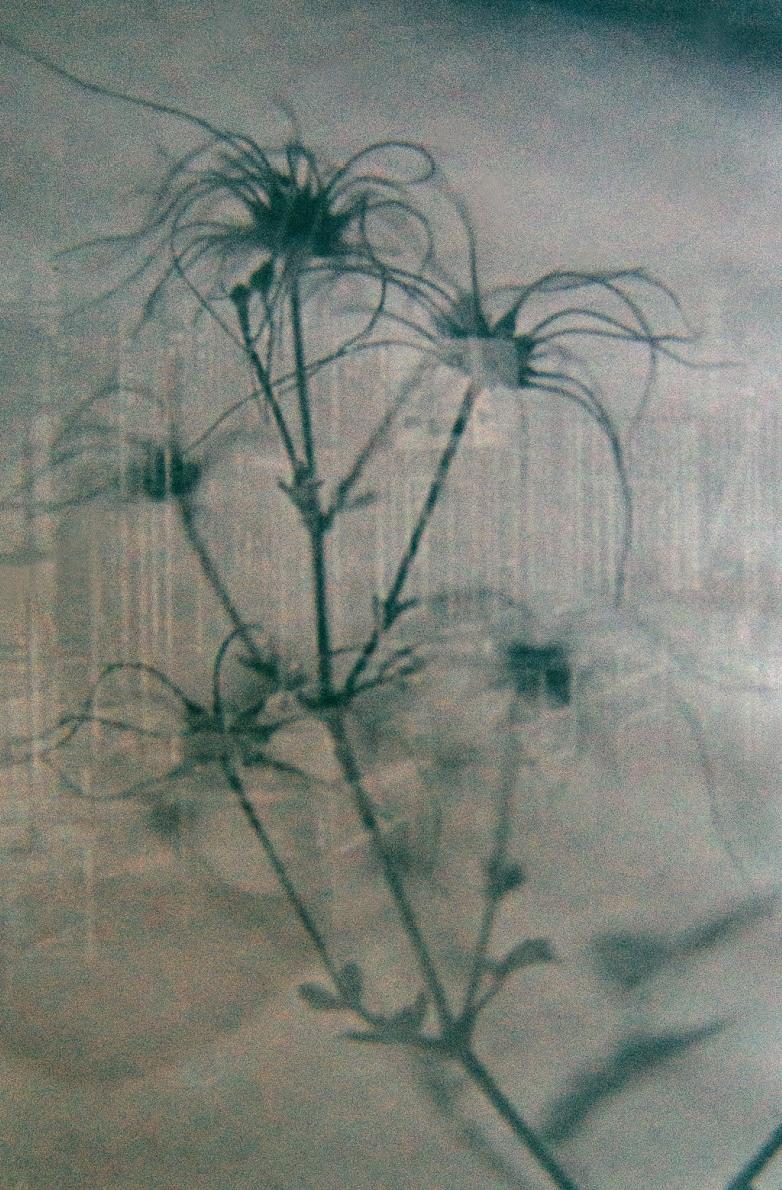
Words ad Photos by Jess Beaudi
Photoseries;double-exposedfilmdevelopedwithplant-basedfilm developerofsageandchokecherries.6images,1600x1667px.
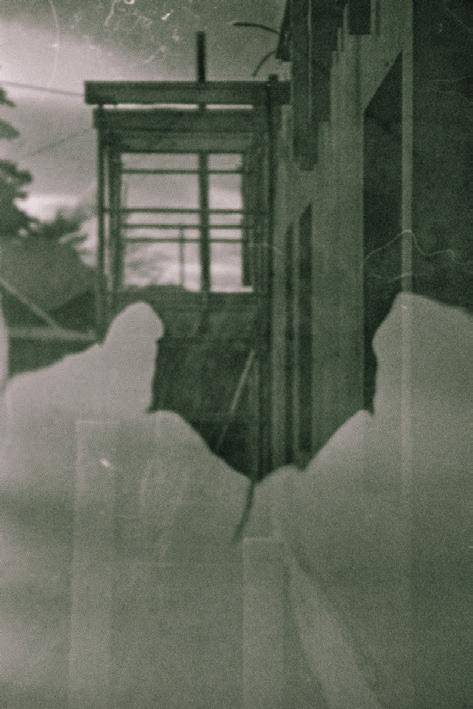
Displaced: Native Plant Narratives aims to highlight gaps in community and land management that are being exacerbated by an influx of construction in Secwepemcúl’ecw, the traditional territory of the Secwepemc people (so called Kamloops, B.C., Canada), and reflect on the ways we can learn from and work with nature in our communities. In 2022, the City of Kamloops signed a Memorandum of Understanding with the provincial housing authority to create over 500 new housing units. Landscaping plans for any given site must be approved before construction begins, but these plans often overlook preserving the biodiversity of the site. This land management mis-practice mirrors the ways in which Queer and minority communities become displaced as a result of city expansion and gentrification. With proper consultation, indigenous seeds can be saved, and plants transplanted to a temporary home, before being replanted around the new-build in an effort to preserve the site’s ecology. Unfortunately native landscapes are often replaced with ornamental, and sometimes invasive, plants. There is a lack of responsibility in our province to ensure biodiversity and Indigenous ecologies are preserved. Similarly, there is not enough protection for minority communities who get priced out of the neighbourhoods they have lived in for decades. Displaced uses double exposures to illustrate the lasting imprints both the natural world and human intervention leave on one another, and remind the viewer of nature’s ability to persevere, should we work with it, rather than against it. This series photographs each indigenous plant species’ leaves, and their seed heads or fruit, to initiate a conversation of the regenerative properties of our natural environment. The seeds of each species, which the plants produce in abundance, ensure they continue to populate the area as the seeds are spread by wind and animals. These plant species seem to appear spontaneously across the region, much like construction sites have begun appearing in recent years, and pockets of Queerness can be found across a city, even after they have been removed or pushed out of their core neighbourhoods. Displaced asks how communities can embrace the ideas of regenerative ecologies when planning their construction process. How can our governments ensure minimal harm to our natural environment and our communities when mandating construction? To further the idea of responsibilities we have to the land and our communities when developing it, the images in Displaced have been developed with plants indigenous to the areas of construction: chokecherries and sagebrush. Traditionally, developing film uses a toxic chemical process that contributes to ecological degradation. By developing film with organic chemistry, I have taken responsibility for the adverse ecological impacts of my work, and have done my best to minimize these effects. The process of creating film developers from the native environment, which can be returned to the land after use, engages with the feedback loops of nature and community we disrupt with expansion, and how we can choose to work with and re-enter these cycles instead of stopping them entirely.
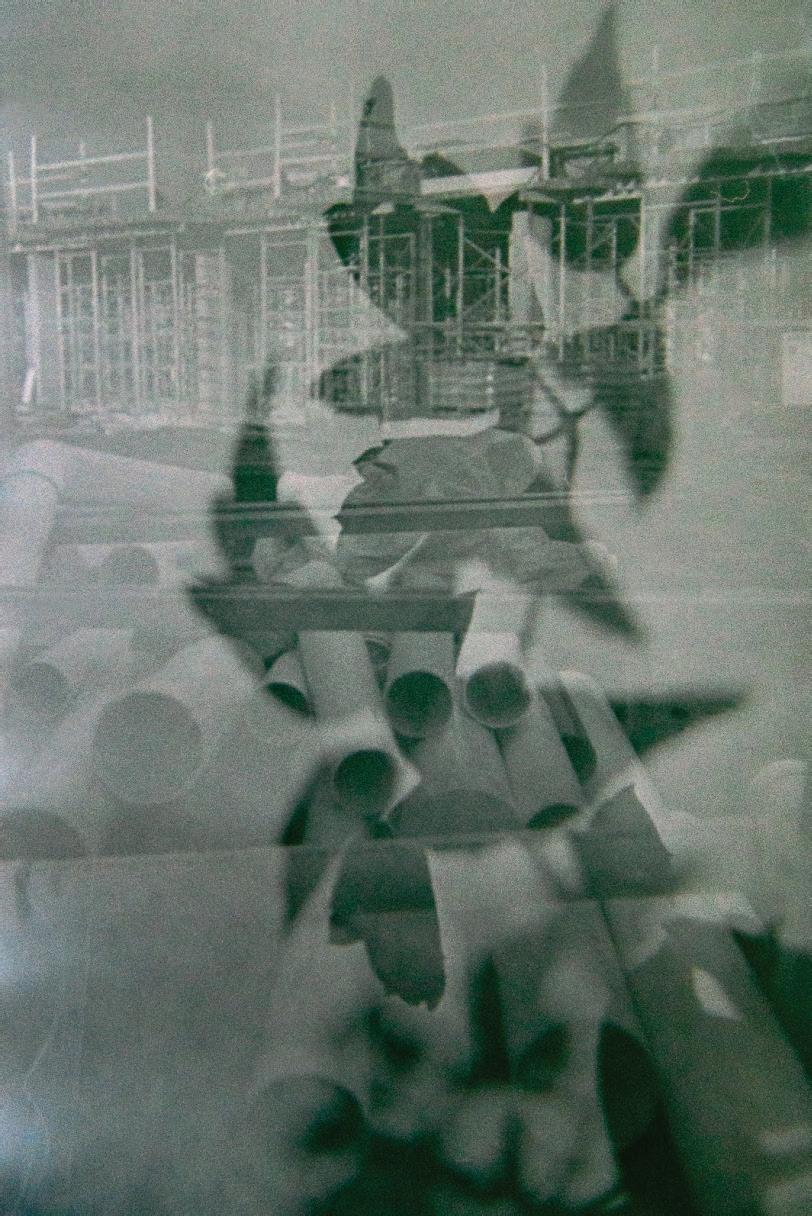



Words by Bethany Leigh Greenman
Art by Azad Namazie
Cities are ecosystems.
I read that once in school when I was assigned an essay to analyze. Since encountering it, the idea has shaped my worldview. The concept of a massive center for gathering, working, playing, singing, dancing, gathering, working, playing, moving, shaking, being—an ecosystem. A living, breathing ecosystem, with all parts working together in, ideally, harmony.
If cities are ecosystems, Queer people are subecosystems. In every city, we find each other and we keep each other alive. Not only that, we give each other reasons to stay alive. We create clubs and bars, we produce drag shows, we organize movie nights for Paris is Burning because oh my God, Jonathan, you are simply not allowed to be gay without having seen this!
We become each other’s family. It doesn’t matter that I’m mad at Neha, I’m still going to help her move in the middle of the night because her landlord is a bitch. On Christmas, Onyx, Marly, and I are seeing Nosferatu since none of us can go home. Halfway through a game of dreidel, it hits me: this is home now. The realization nearly makes me fall over with gratitude.
There have been flashpoints in my life that have brought the larger city ecosystems into focus— Hurricane Sandy in my beloved homestate of New Jersey, the start of the COVID-19 pandemic when I lived in cozy Boston, and most recently, wildfires lighting up the rambunctious Los Angeles skyline. Nothing has made me feel the pulse of the living, breathing ecosystem that is Southern California quite like the current disaster.
My emotions about the response to the wildfires have been a tangled-up ball of yarn. Unspooling it has shown me I am grateful for what we have, but I need more. On one hand, it is a relief to finally see air purifiers being distributed and widespread efforts amongst organizers to normalize respirator-wearing. On the other hand, it is disheartening to know that, had we as a city not chosen the path of denial of the ongoing pandemic, we would have been in much better shape when the flames began. We already would have normalized respirator-wearing. Air purifiers would be in every home and building. We would have been ready.
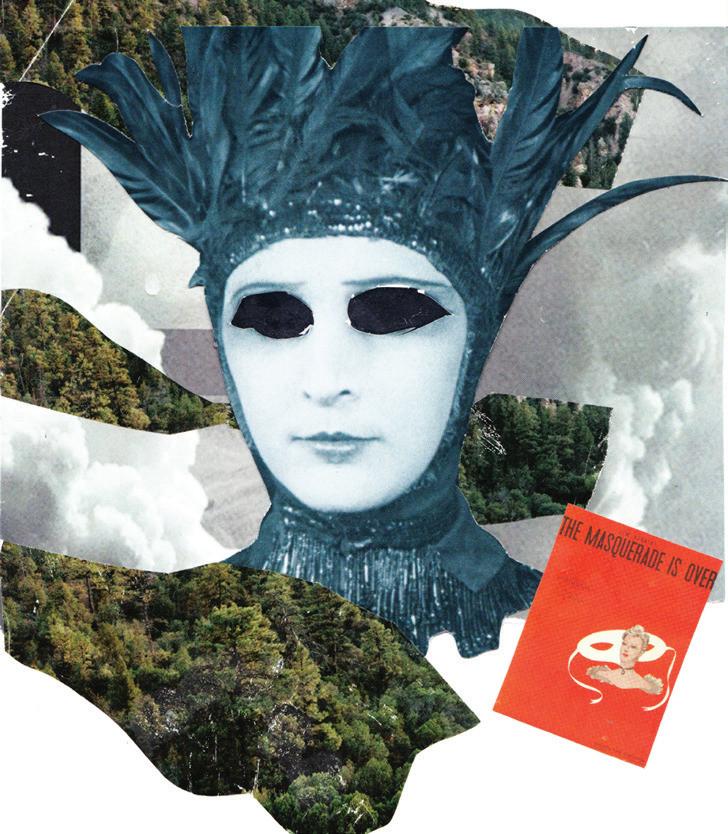
Regardless, the mutual aid groups that formed in response to the pandemic have picked up the slack of government. MaskBlocLA, MaskBlocLongBeach, AirGasMicLA, and CleanAirLosAngeles have been distributing N95 masks and air purifiers all over the county. Never mind the fact that many of the members of these groups are Disabled and immunocompromised, the very people who have been shut out of public life because of others’ refusal to mitigate the risk of COVID. The very people others have mocked, ridiculed, or ignored out of discomfort. These “shut-ins” are still serving the people because they know the urgent need will not be met otherwise.
Crises bring out the best in us. Acute crises, that is. In the weeks following a new threat, people band together, offer what they can, and look out for one another. Hell, many donation centers can no longer accept clothes because people have given so many! However, as the crisis goes on, people grow weary. They start to wonder if all this is really necessary, and my God, when do we get to move on with our lives? These people want us to live like it’s 2020 forever, and we simply cannot do that! Sorry you lost your house, but why should that mean I can’t go to brunch? Yes, “the vulnerable will fall by the wayside,” as Dr. Anthony Fauci so eloquently put it, but that’s life. I need to get back to normal. Those who have to stay home because of that will simply have to stay home. If you lost your home, figure it out. Tough, but whatever. You were dealt a bad hand, suck it up. Don’t make me think about it. My empathy has an expiration date.
Eugenics. Survival of the fittest. The idea that we must allow those most vulnerable to perish while the strong prosper and carry on the human race. There is a reason why Disabled people were
the first ones the third reich targeted: they are the easiest to identify as “dead weight.” The “weakest,” according to the capitalist idea of strength that defines it as economic productivity.
To me, Queerness does not exist without community. Perhaps being gay does, but not being Queer. Queerness is a departure from the individualist norm, which necessitates that it center collectivism.
Bisexual and Trans* people are more likely to develop long COVID than their cisgender, heterosexual, and even gay counterparts. This is in large part theorized to be because of the social stigma these groups face in medical settings. Can we call ourselves a community if we allow our fellow members to slip through the cracks of the medical industry in this way?
“Ecology” is most basically defined as the study of organisms and their relationships to each other and their environments. As an organism myself, my relationship to other organisms and my environment has lately been challenging.
In March of 2024, I got COVID-19 for a second time. I got it from my partner at the time while taking care of her. I knew it was stupid to believe a negative rapid antigen test and continue being unmasked around her, but I was in love and didn’t care. Besides, I had gotten COVID once and it was very mild; surely, I’d be fine. I was not prepared for what would happen to my body.
I was unable to stand for days, and when I finally could, it was only with great effort and for short amounts of time. It took even longer to return to walking. I experienced intense congestion, headaches, nausea, dry-heaving, chills, fever, sweating through my shirts, muscle aches, and extreme fatigue. I spent my days coughing up yellow, green, and even gray mucus, haunted by the feeling that I might legitimately be dying. Twice, I almost visited the ER.
For two months, walking was a struggle that resulted in shortness of breath, and I could only do that for ten minutes at a time. I experienced brain fog in the form of being unable to process time as I once had; suddenly, it seemed to mean nothing at all to my mind. I had to take two months of unpaid time off work. I no longer felt like I knew myself.
I am embarrassed this is what it took for me to genuinely take COVID seriously again. Sure, I always maintained masking on public transit and in stores, but I stopped masking in bars and at parties. I returned to indoor dining. To an extent, I went “back to normal.” I did so while knowing on a certain level that I was not living in accordance with my professed values, which made my actions worse. Everything I do now is to
try to pay off the debt of the incalculable harm my actions did during that time.
Community is not only bars, clubs, and movie nights. It is doing the hard work, and volunteering alone does not cover it. Community requires looking inwards and facing where we have fallen short. Before my second infection, I know I did. I’m sure I still do in ways I do not yet realize. The work is ongoing. We owe each other commitment to that work, or how can we claim to be a community at all? Maya Angelou said it best: ‘[W] hen you know better, do better.’ Too many of us are looking the other way, scared of what we know deep down, and what it requires of us.
As humans, we like stories. They’re part of how we understand the world around us and how we define ourselves within it. I sometimes tear up thinking about cave paintings, proof even the earliest humans wanted to leave their mark on their world. Wanted to be understood by those around them. There is nothing more human than that, no stronger reason to build community. At its heart, community is a place where people go to feel understood and ensure their lives have meaning beyond themselves. We seemingly most often can do this by gathering around a real or metaphorical fire and telling those with whom we wish to connect a story.
As a playwright, I see the pandemic has not followed the comforting narrative the favored Aristotlean story offers: old world order, intrusion, rising action, crisis, falling action, new world order. We are stuck in crisis, the moment in a play after which nothing can ever be the same. Nothing will ever be the same after the pandemic, even after it ends. It is time we all be brave enough to face that and what it means for our lives.
There are other story styles, ones that lend themselves better to the stories of Queer people than a form created for white, property-owning men such as Aristotle. Brechtian, Absurdist, Naturalist; the list goes on and on. I suggest we, as Queer people, reject the Aristotelian narrative of the pandemic, and instead embrace episodic structure. We recognize we have existed in every space and time; we, as a people, are the constant. Everything else changes, but our existence never has and never will. Using this as a center can help us recognize the changed world around us now. Yes, the new world of the pandemic and climate change is scary. The only way to survive it, though, is to accept reality and turn towards each other.
The revolution will be scrappy and exhausting. The revolution will center Disabled people. The revolution will be worth it.
The revolution is now, if you are willing to face it.

Words by Sophie Mutiara Nova
As a mixed Indonesian and queer artist—I think there’s an element of sparkle to being queer. Like glitter embedded in one’s pores—sometimes there are situations where I let the glitter shine fully, and other times, I turn the spotlight down for safety. But the glitter is always there—as present as the stars in the sky even when the sun shines so brightly during the day.
Glitter remains within skin, even after you scrub it off. Embedded into pores, mixed with longing, sweat, desire—the glitter tells a story of where you’ve been and who you hoped to be with at the end of a long night—caught in smoky nightclubs and eyeing a newcomer across a bar in (dis)comfortable quietude. Someone looks at you when your gemstone-covered iris stares into a stranger’s. The longing is too deep and the silence too long.
Too many questions not asked.
Too many moments not taken.
Too many (mis)understandings.
And you scrub off dead skin cells in the shower and watch the glitter, the sparkle, as it shimmers down the drain.
Mom stays up all night, knowing where you’ve been but not talking about it; it’s more peaceful not to talk about it. But she cares—she loves you. She cries when you tell her that some days it’s hard to live. She says she wants you alive even if you’re a butterfly and the world she understands consists of moths lost at an extinguished flame—she accepts you, she tries… even if she does not understand.
So, when you come back home from the bar/the club/the intimate domicile where you are allowed to worship the natural desires of your body—she stands in the doorway with glittering eyes and sighs in relief that no harm came to you tonight. That no bigot took to physical blows, and instead, resorted only to words that ran like sewage water down your back.
Your mom asks you quietly, sudah mandi? because she does not know how to ask if you fell in love with someone tonight. That she cannot comprehend. It is a sin; she says in the same breath she whispers: but I love you—sayang kamu.
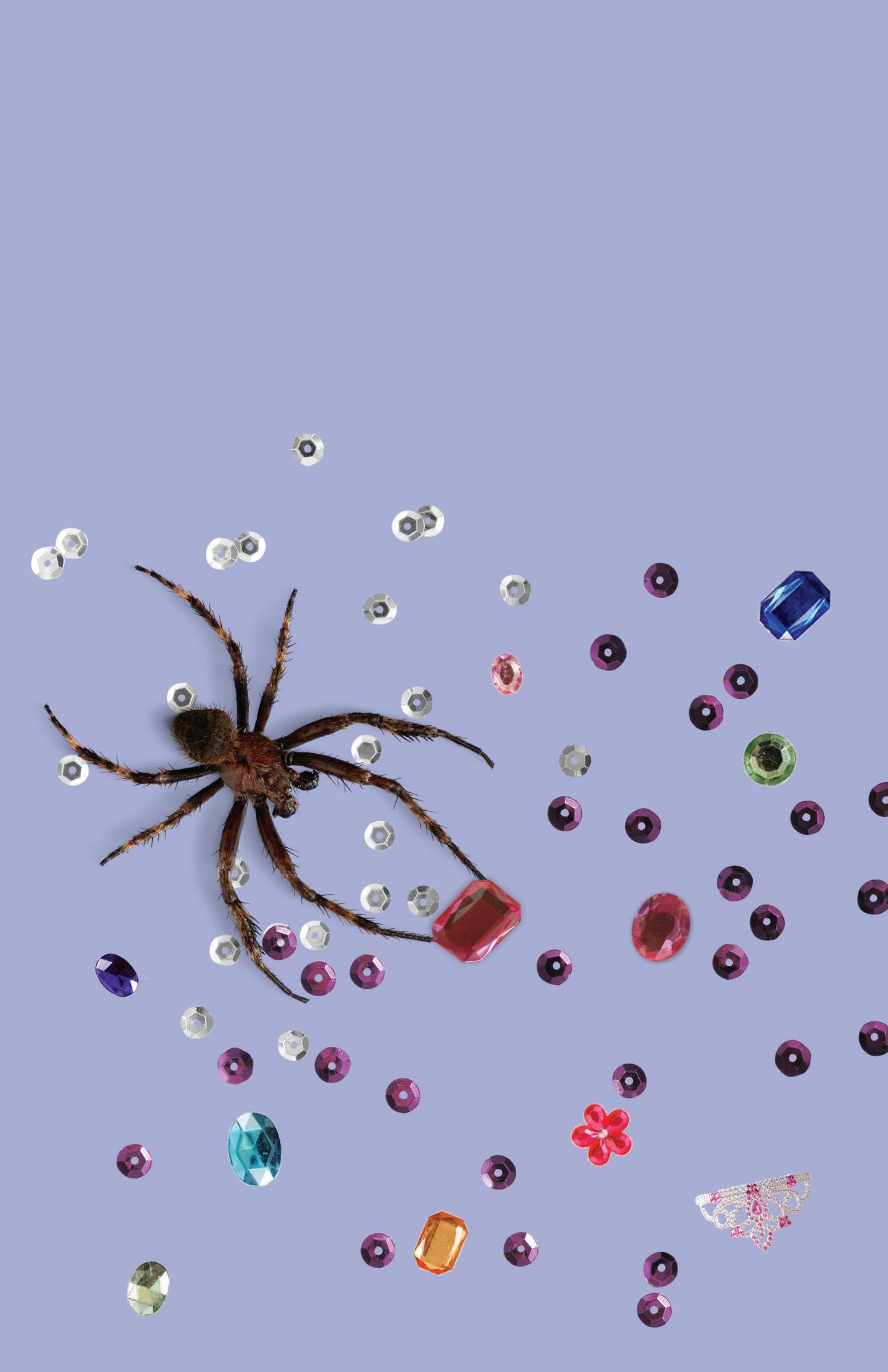
You scrub off the sparkle, but still, it remains on your fingertips when you brush your hair out and wear it down. You search up “how to dress cishet” because your culture is tied up in a church group. You learn and relearn words from Bahasa Indonesia by echoing the penitent murmurs and supplications and psalms of old grandmas and grandpas around you. Surga. Naraka. Bapak kami. You turn your palms inward like a prayer but it’s really to hide the glitter and make the other churchgoers comfortable. You don’t bring the nightclubs and glitter into this space. There is a time and a place for you to shine, but now you must be dim. Safe. Quiet.
You put on a batik dress that feels natural in a different way on your body. With glitter-speckled fingertips, you spoon golden cubes of rice, nasi kuning, to your lips and swallow as someone asks why you aren’t bringing home a husband. Saya belajar, you smile dutifully, I’m studying (how to be ****). You cannot tell them that as you progress in life, the quote, unquote “normal” path turns wavier than oceans beneath a moonlit tide.
You cannot tell your elders of last night’s date—how their lips felt on yours beneath the stars on a witching night, the small of your back pressed against their car and glitter in their eyes. You cannot tell them how their piercings sparkled when you confess, may I? Tattoos are a road map on their skin as you dared to fall in love and get your heart broken (again) but that’s okay because it’s better to have loved in medias res than not at all, right?
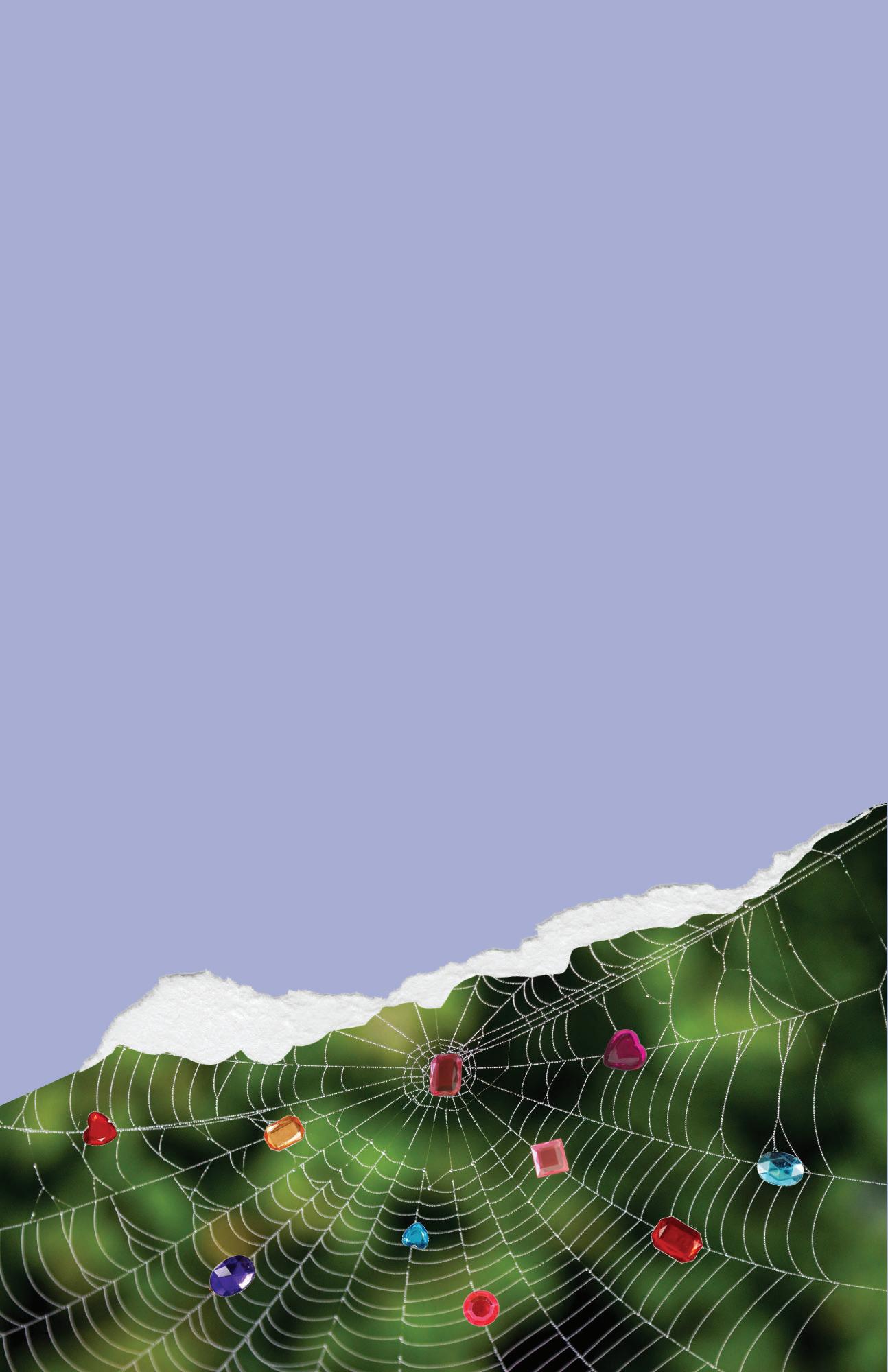
You write of love because you’re a fucking Pisces sun and Pisces moon and, what’s your birth chart? –breathe— you’re tired of writing stories that end in trauma. You’re tired of writing as catharsis and therapy. You’re tired that writing feels like you cut yourself with a gemstone pen knife and let the glitter bleed onto obstinate pages. And you wish to god(s)? That shivers didn’t run down your spine when you wrote this because it is ultimately a love story.
And you remember, as you stare into the cup of coffee that simultaneously gives you acid reflux and the will to live….
...the glittering specks in the eyes of a golden-haired lover who tries to cross a divide bravely and falls short despite their ultimate effort. They cannot understand that you are same/but/not. A grandmother who asks you what “gay” means in Bahasa Indonesian/English and you can only smile and laugh and twist the piercings in your skin and apologize because you didn’t want to be a bad child—you didn’t want to be bad, but the world said you weren’t good. Nobody directly told you—but they told you in other ways when the group of men passed you and laughed asking: What is it ( !@#$% REDACTED )? And you were afraid they’d hurt you.
The universe holds you in her arms and sings you to sleep and says that if dolphins and penguins and every animal Genesis created beneath her full moon was Queer that you could be Queer too. Queer.
Q.U.E.E.R. Quiet Ultimate Everything Everyone Rests in the soul of the world.
Glitter rests on your fingertips as you press them to her/their/his/zer/xer/ ad infinitum lips and you embed the glitter into their skin and beg for forgiveness.
I didn’t mean to scare you.
In memento mori
I’m sorry if I did.
I rest in the scent of melati/jasmine beneath the celestial beauty of bulan/moonlight, and I whisper to the god(s)? above that I deserve good things and love and someday may love find me. Yet for now I kiss the glitter in your skin, and I pray that within my eyes you see my mother, my grandmother, my ancestors before/in/after me. As my mother tells me, you are like a son to me, even as she insists, she is my daughter (maaf-but I’m trying). And we laugh as we cook bubur ayam in a beat-up rice cooker (I don’t know who caused that dent on the side) and I stare at my reflection in a knife’s edge and smile because I see it in the corner of my eye…
SACROSANCT + SPARKLE
(in refrain)
-kami berdoaAmin.
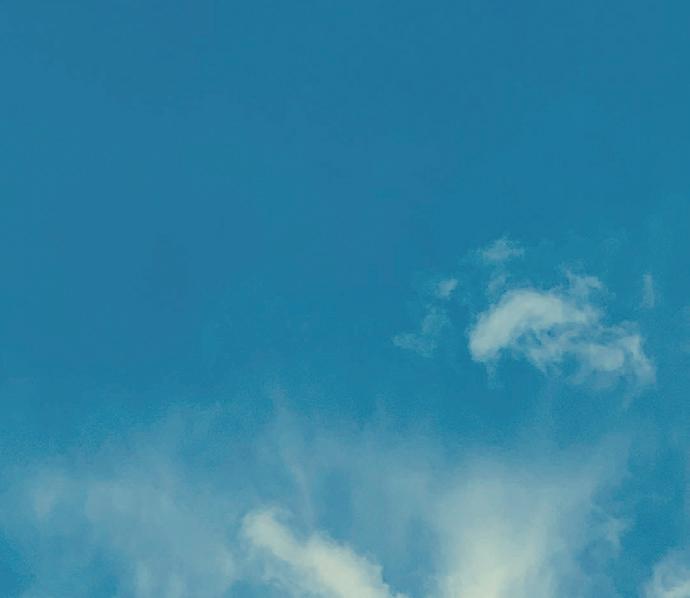

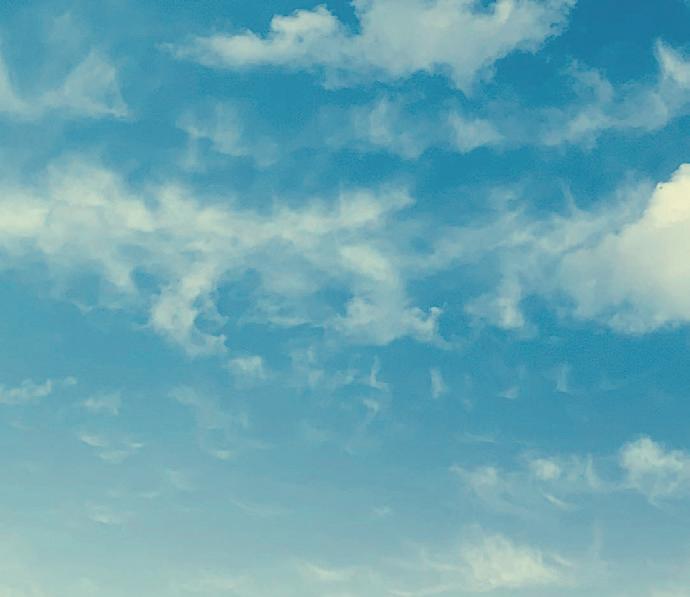
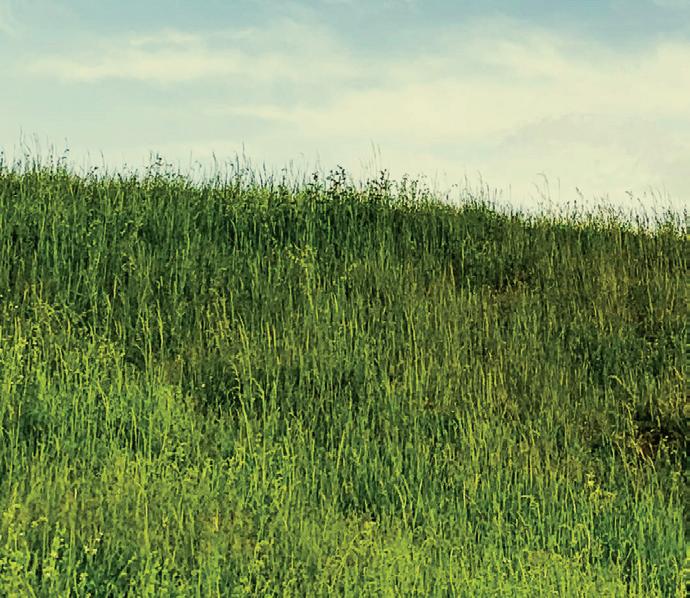
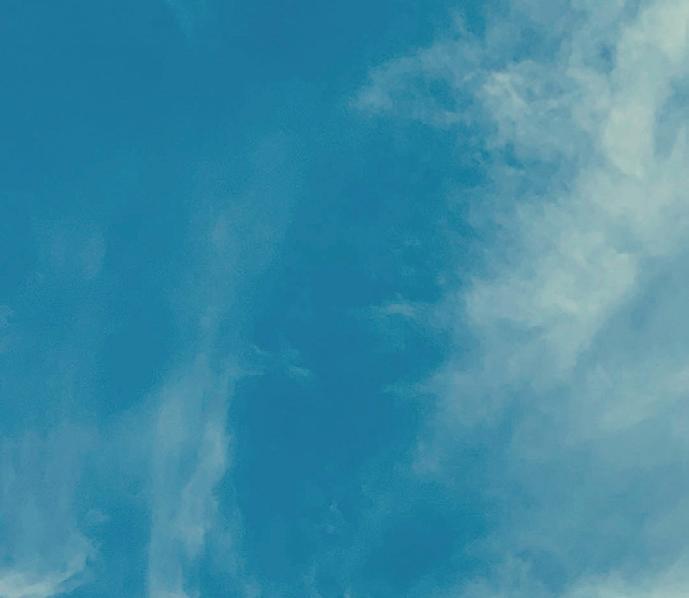

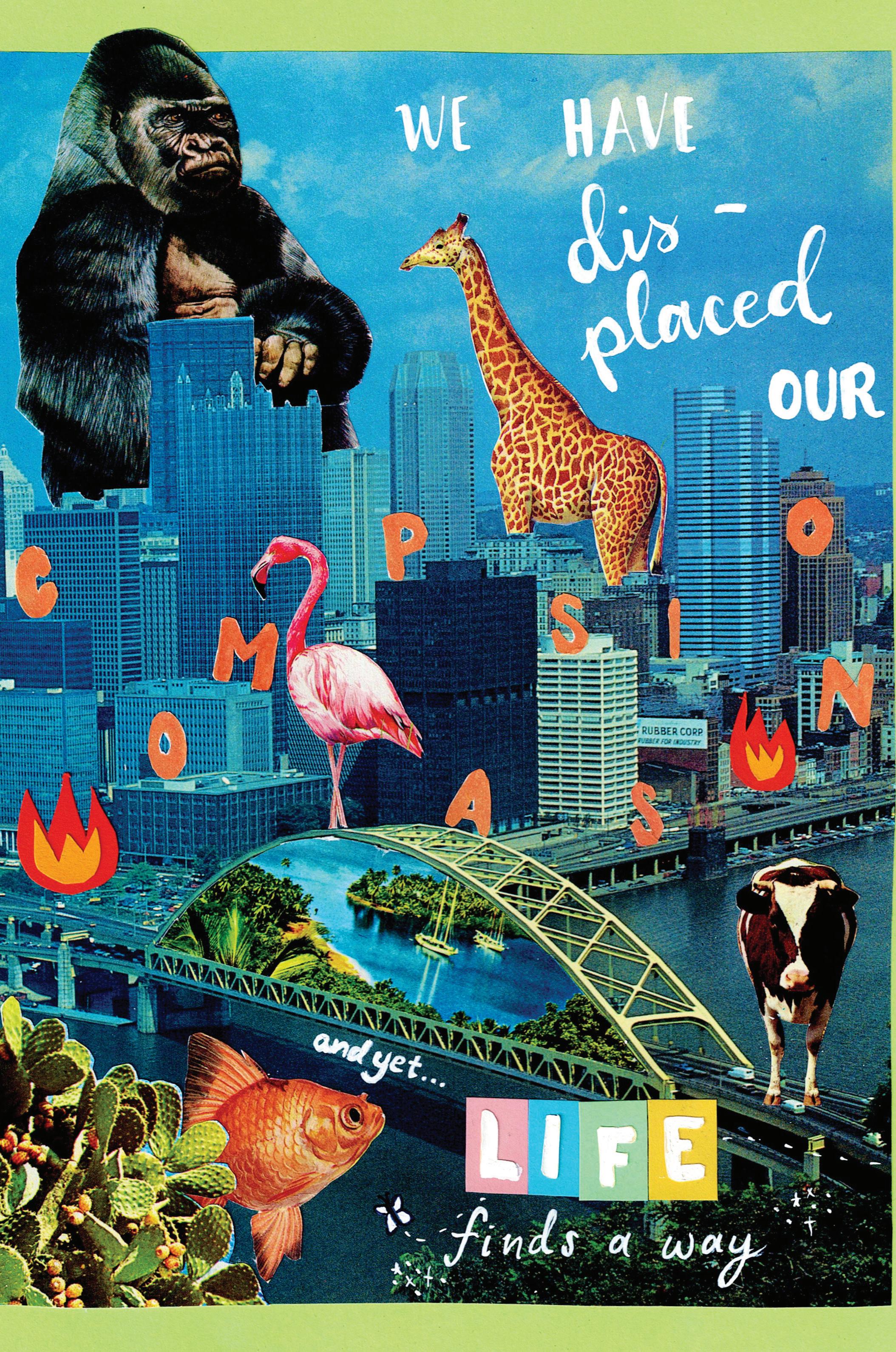


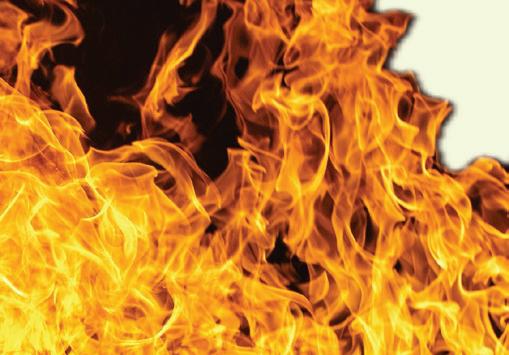

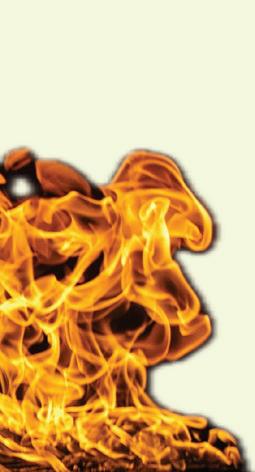
The Climate Crisis isn’t the Great Equalizer it’s often portrayed as—it’s the ultimate expression of class warfare, and Los Angeles is its deadly theater.
The day our landlord told us we had to move, we watched burnt pages from a children’s book drift through our yard like apocalyptic confetti. We hovered between browser tabs—zillow listings on one side, evacuation alerts on the other—while Los Angeles burned at both ends. We couldn’t help but notice the bitter irony of it all: our landlord forcing us out while a natural disaster threatened to make the decision moot. “I guess he can’t sell the house if it burns down,” we joked, imagining his greed and nature’s fury competing to see who could claim the home first. But that wasn’t really funny since either way he’ll be making money. Most importantly though, it’s not accurate. To frame this as a race between human greed and natural disaster misses the truth: this disaster isn’t natural—it’s manufactured. It’s the product of a system that prioritizes profit over people, one that allows utility companies to neglect infrastructure maintenance while real estate developers continue to push deeper into fire zones, creating ever more dangerous conditions. But even more insidious than the neglect itself is the way in which these disasters actually feed into the very greed that created them. For landlords like mine, the destruction caused by these fires isn’t just an unfortunate side effect—it’s an opportunity. Each displaced family becomes another desperate bidder, driving up demand—and landlords capitalize by hiking rents ever higher. They quite literally benefit off the suffering of others.
Long before the first luxury development broke ground, the Tongva and Chumash peoples lived in careful relationship with fire in these lands for millennia by using controlled burns to prevent massive destruction and sustain the ecosystem. This approach embodied what we might now recognize as a Queer ecology. There is a refusal of the binary between “wild” and “managed” land that embraces cycles of death and rebirth, and practices forms of kinship that honor the intricate relationships between humans, flames, forests, and future generations. The violent displacement
of Indigenous peoples by colonial forces—a process that continues to this day—marked the start of a rigid new order that seeks control rather than collaborate with the land. This was the first act in Los Angeles’s long drama of a profit-driven environmental crisis.
In the 1920s, real estate moguls like Harry Chandler and Moses Sherman carved up these fire-prone hillsides into luxury developments, setting the stage for today’s inferno. Their contemporary heirs maintain this deadly algebra of profit over safety. Developer Geoffrey Palmer continues to pour millions into fighting rent control while his cheaply-built luxury apartments rise like vertical kindling. Meanwhile, billionaire Rick Caruso hires a private firefighting team to protect his Palisades Village shopping complex, even as the undocumented workers who staff his retail empire face the risk of deportation at evacuation checkpoints. And when the flames approach, insurance giants like state farm and allstate abandon working-class neighborhoods, canceling policies and refusing to issue new ones, leaving residents vulnerable unless they can somehow afford $12,000 annual premiums— three times the amount of the average Angeleno family’s monthly income.
Our landlord’s eviction notice arrived as fires tore through Palisades and Eaton Canyon, areas where Southern California Edison’s aging power lines— known to pose extreme fire risks—remain in place. Despite repeated warnings and the company’s knowledge of these risks, SCE has delayed upgrading infrastructure, leaving communities vulnerable to disaster. Meanwhile, their lobbyists have continued to fight against legislation that would require underground power lines in fireprone areas. Their excuse? Undergrounding is “too expensive”—even as their executives’ stock options continue to grow. Leaving power lines above ground may be cheaper for the company, but it imposes devastating costs on the public. The recent fires have caused an estimated $250 billion to $275 billion in damages so far, with insured losses alone reaching up to $30 billion. These catastrophic expenses far exceed the initial savings SCE might gain from avoiding infrastructure upgrades, and the financial burden these disasters often falls on taxpayers.
While we face this ever-worsening Climate Disaster, leaders like Mayor Karen Bass have defended cuts to the fire department, citing budget constraints while funneling resources into less immediate issues. Her decisions to prioritize other funding—at times for law enforcement or real estate initiatives—have left Los Angeles unprepared for the inevitable crises that come with a profit-driven environmental system. Bass’s choices mirror the broader systemic failure: a city where corporate lobbyists and real estate developers dictate the future, while public safety and Climate Resilience take a backseat.
Los Angeles reveals its priorities in stark numbers: while the LAPD’s budget swells to $1.3 billion for 2024-2025, the fire department remains chronically underfunded. The city’s solution? Exploit prison labor to fill the gap. Behind the headlines about heroic firefighters battling infernos lies a darker truth: many risking their lives to protect Beverly Hills mansions are incarcerated people earning $2-5 per day, plus $1 per hour when fighting active fires—barely 0.5% of the $91,000 annual salary their professional counterparts earn. The cruel irony compounds: the same system that deems these individuals capable of protecting multimillion-dollar homes bars them from firefighting employment after release due to their criminal records.
At the end of the day, the consequences of the Climate Crisis are felt most acutely by those with the least to lose. The myth of “Climate Change as the Great Equalizer” is shattered when some Angelenos retreat to homes with hospital-grade air filtration systems or charter private jets to escape the smoke while others face impossible choices: risk losing wages by skipping work in hazardous conditions, or risk losing everything in an evacuation they can’t afford. Even evacuation itself is a privilege—first, you need the means to leave: a reliable vehicle, money for gas, the ability to miss work without losing your job. Then comes the question of where to go: you need a destination, money for hotels, some kind of safety net beyond the reach of disaster.
As smoke blankets the city, the ultra-wealthy aren’t just buying their way out of the crisis— they’re planning their escape route while leaving everyone else out of the equation entirely. While Elon Musk and Jeff Bezos pour billions into space colonization, working-class communities face worsening air quality, increasing “natural” disasters, and disappearing resources. The very people whose companies and investments contribute the most to environmental destruction are the ones orchestrating their exits from the mess they’ve created. As they accelerate Climate
Change with their unchecked industrial practices and resource exploitation, they simultaneously shield themselves from the consequences. “Ecological wealth,” once thought of as simply having access to clean air and water, is now about possessing the resources to insulate oneself from climate disasters or escape them altogether.
Climate Disaster is deliberate, profitable, and preventable. Now before you start queuing up Bo Burham’s ‘Funny Feeling’ to cry-sing “it will be over soon”, remember: While the wealthy prepare their escape pods, Queer and Trans organizers are at the forefront of building solidarity networks stronger than any firebreak. Drawing on decades of experience relying on chosen family networks and mutual aid systems when mainstream institutions failed them, LGBTQ+ leaders are doing what government agencies won’t. Organizations like the Queer Ecojustice Project are fostering resilience by combining ecological justice with Queer liberation, creating mutual aid networks that protect the most vulnerable. In Appalachia, Pansy Collective—a Trans-led artist group—mobilized swiftly during Hurricane Helene, providing essential supplies and support to affected communities faster than national relief efforts. Asheville’s Firestorm Books, a Queer feminist collective, served as a critical resource hub during the same disaster, coordinating emergency aid for displaced residents.
These efforts echo the care ecologies forged during the AIDS crisis, where LGBTQ+ communities banded together out of necessity and compassion. As we continue to build these networks and rely on each other in the face of Climate Disaster, we are divesting from a system of harm and creating a community-driven future that embraces the kind of radical interdependence Queer communities have long practiced. Each act of solidarity, whether it’s providing food, organizing rides, or securing emergency housing, is a step toward a more resilient, collective way of living.
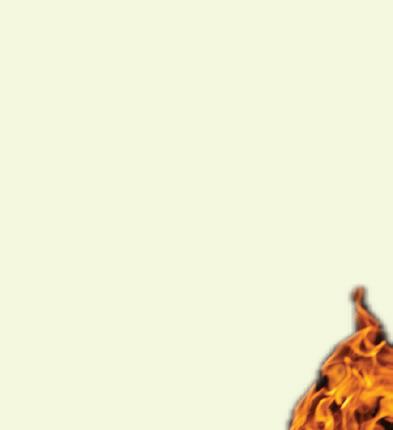
The next time the Santa Ana winds blow, let’s hope that they’ll carry not just ash and smoke, but the rising heat of organized resistance.







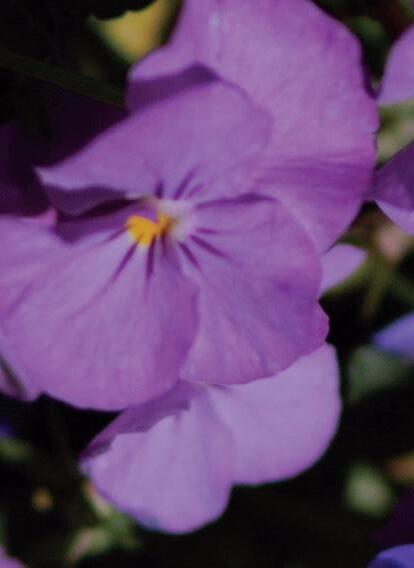

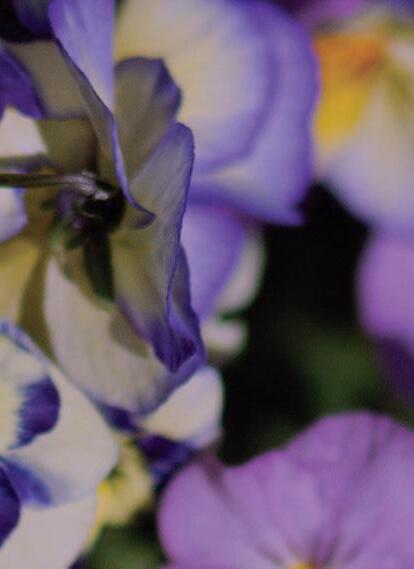
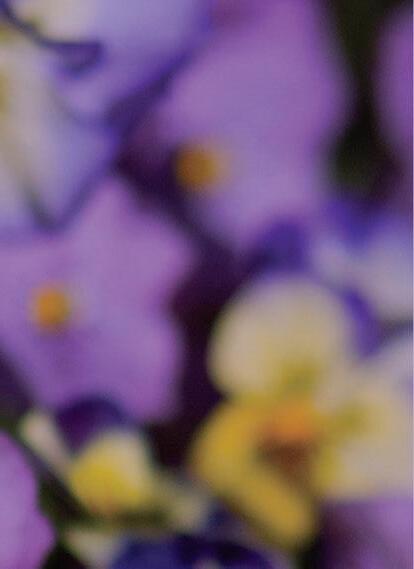
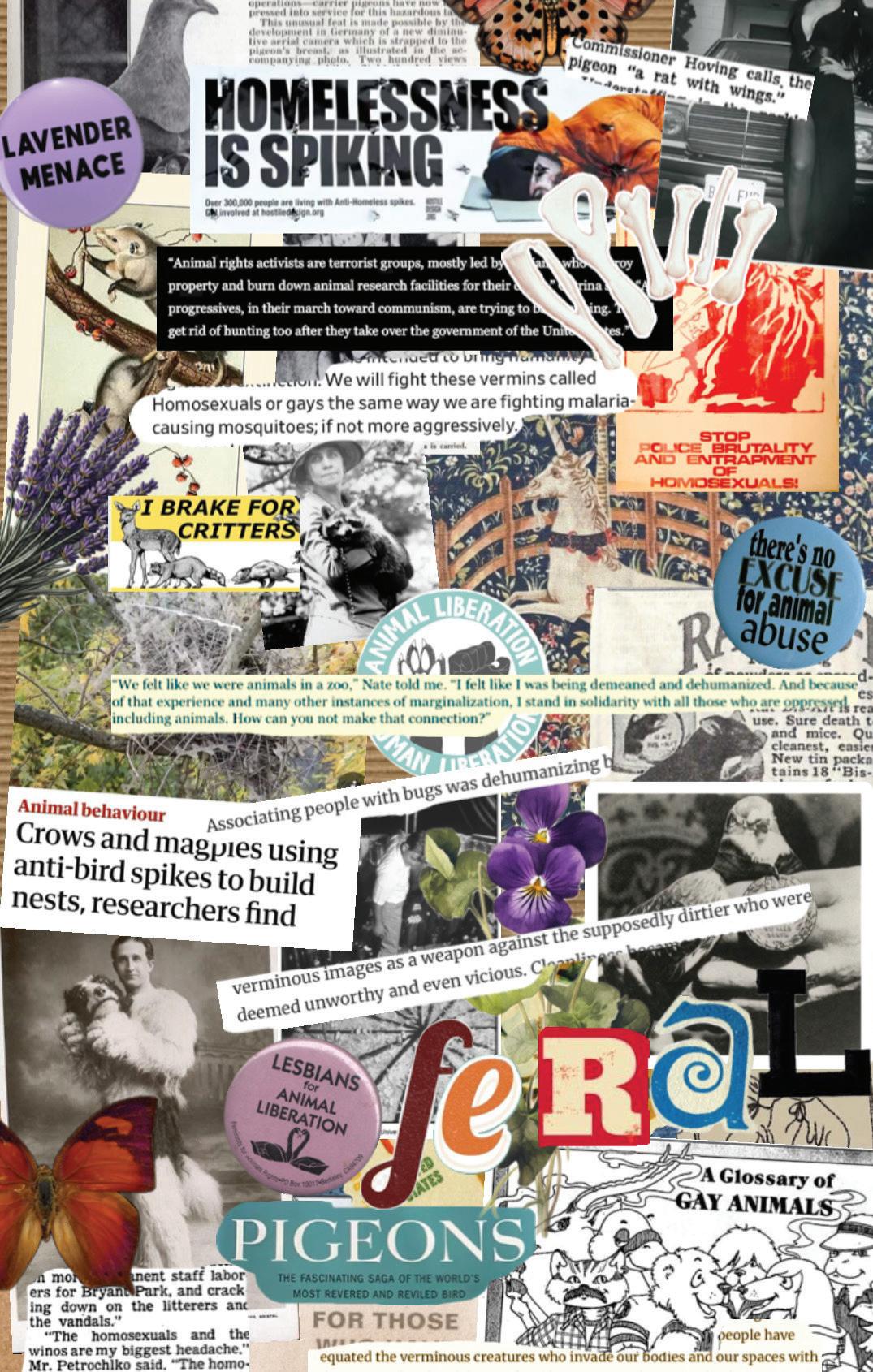
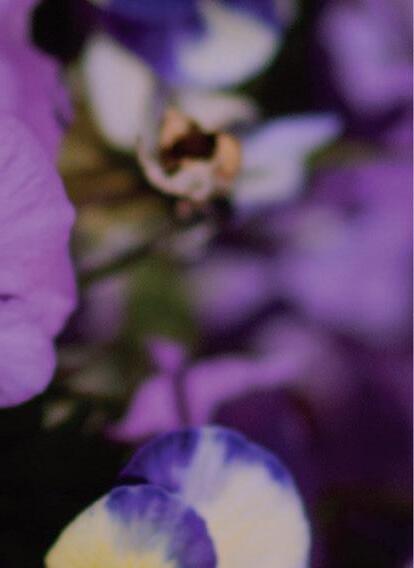
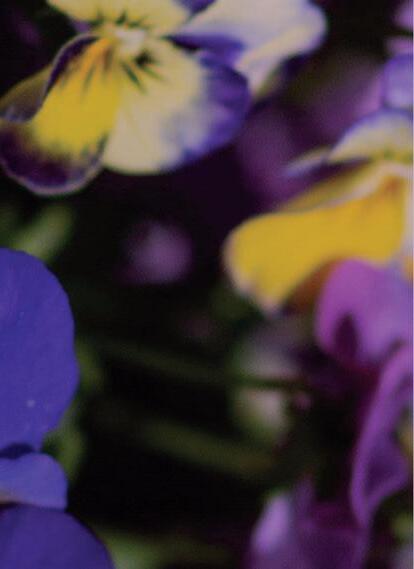
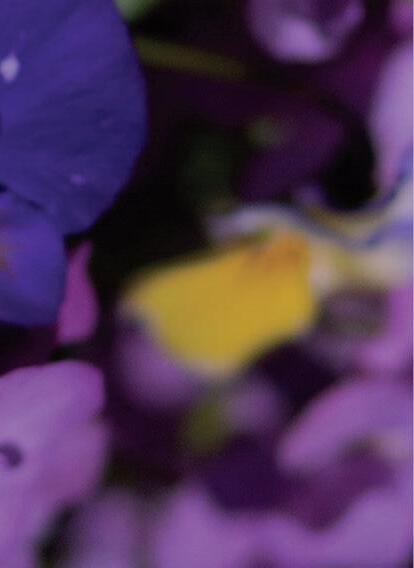
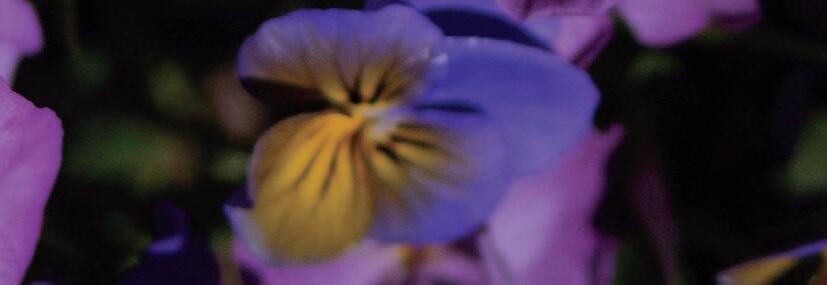
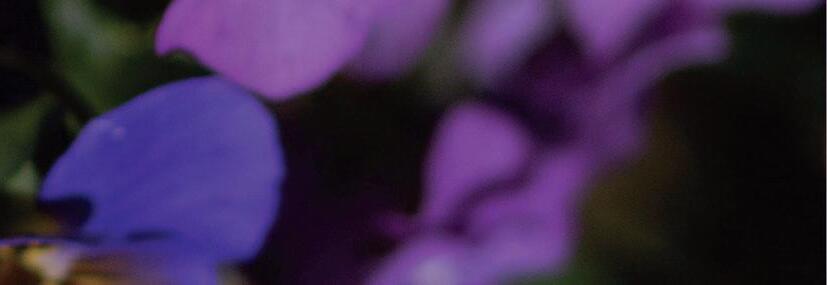
“Feral” is a digital collage exploring the connection and history of the perception of “otherness.” This piece juxtaposes myths and beliefs that degrade and dehumanize, with reality and protest. There is a strong connection between Queers and creatures—why is that? Perhaps we see ourselves in the unloved, the cast aside, and the mistreated. I’ve combined pieces of newspapers, online articles, antique photographs, and protest propaganda, aiming to find the root of our connections with “pests” and “vermin.” We all know people with strong connections to creatures, i.e. bug collectors, friends with tattoos of possums or raccoons or pigeons, bone scavengers, etc. Our histories are so interwined with those who are tossed aside by society and seen as weird, creepy, or dirty. We can find strength in standing with those who mirror us. This can be explored indefinitely—the connections of class, race, species, liberation, exploitation, commodification, extermination, domestication, and the general “inconvienence” of our existance. I encourage you to resist by existing. By living. By loving.
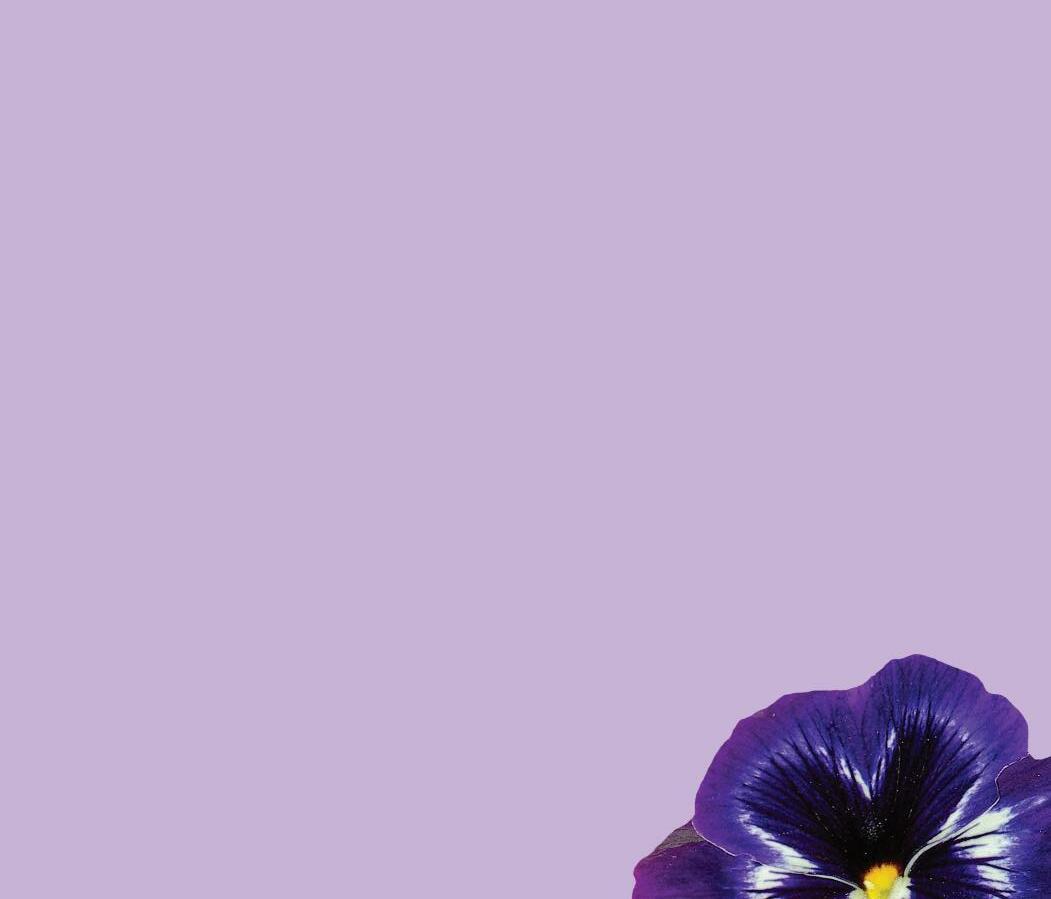
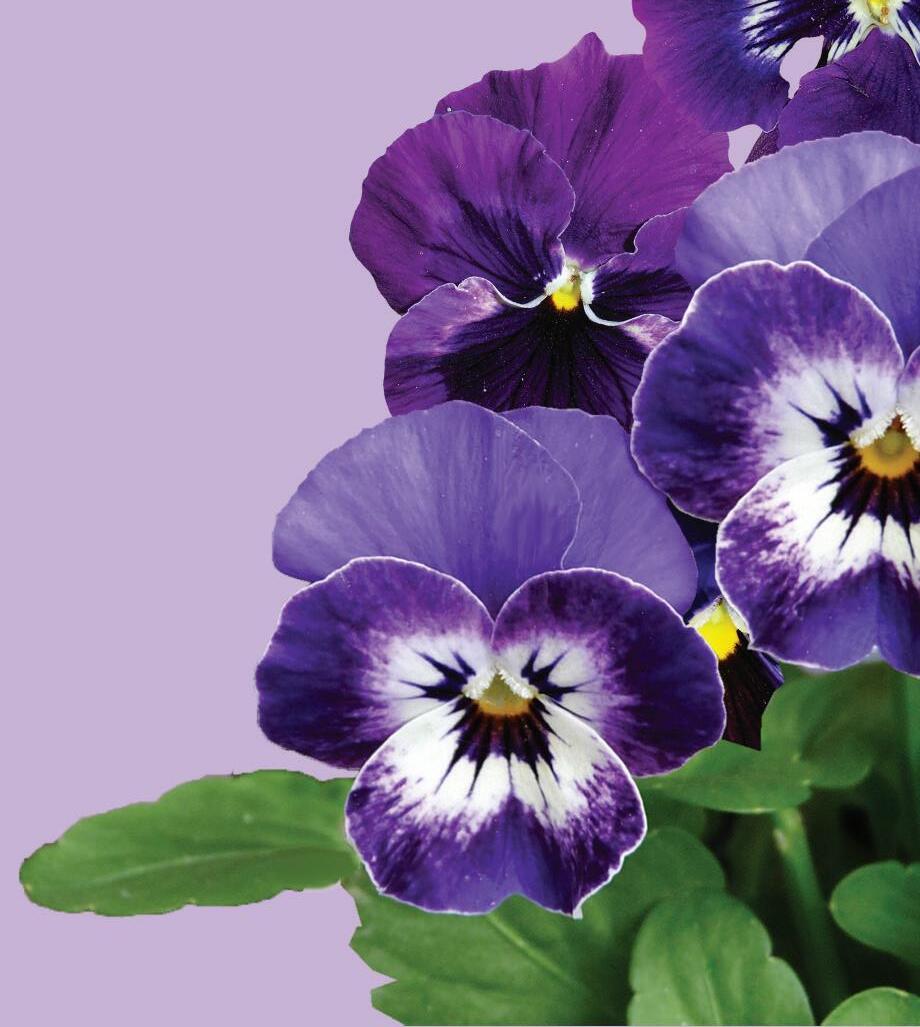


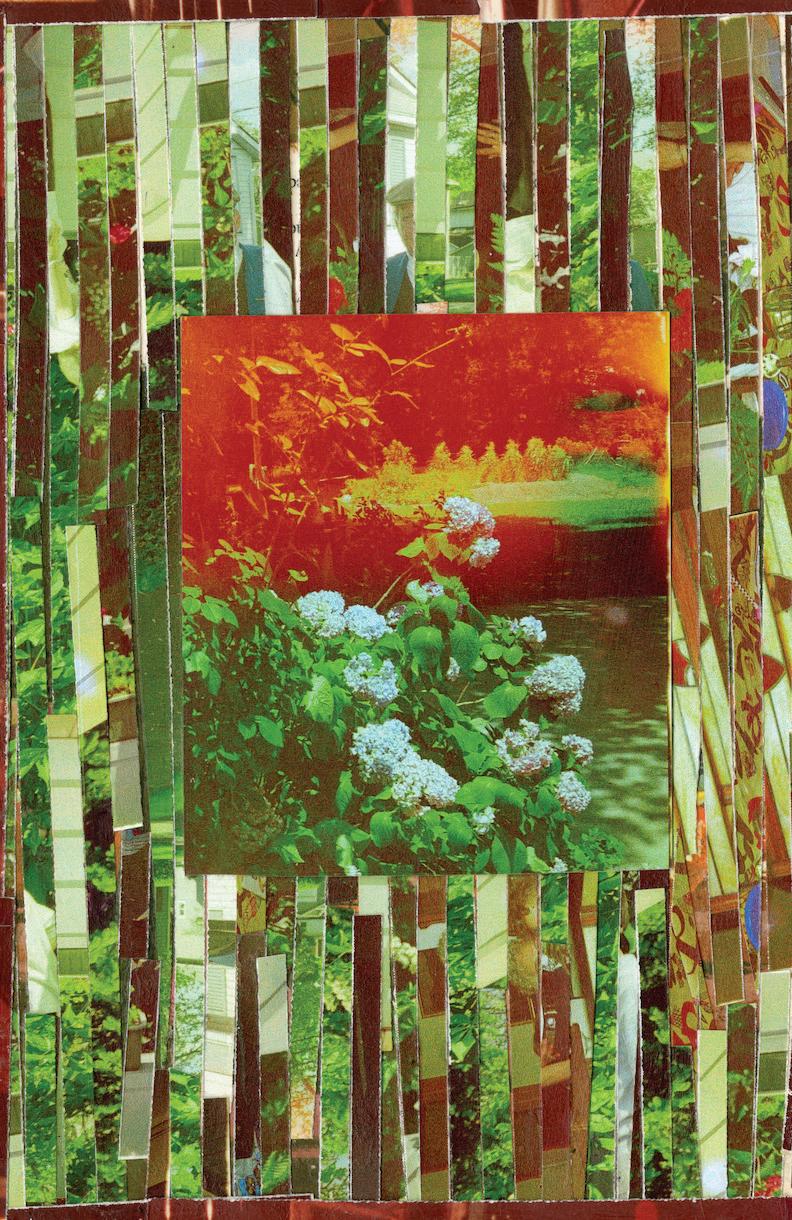
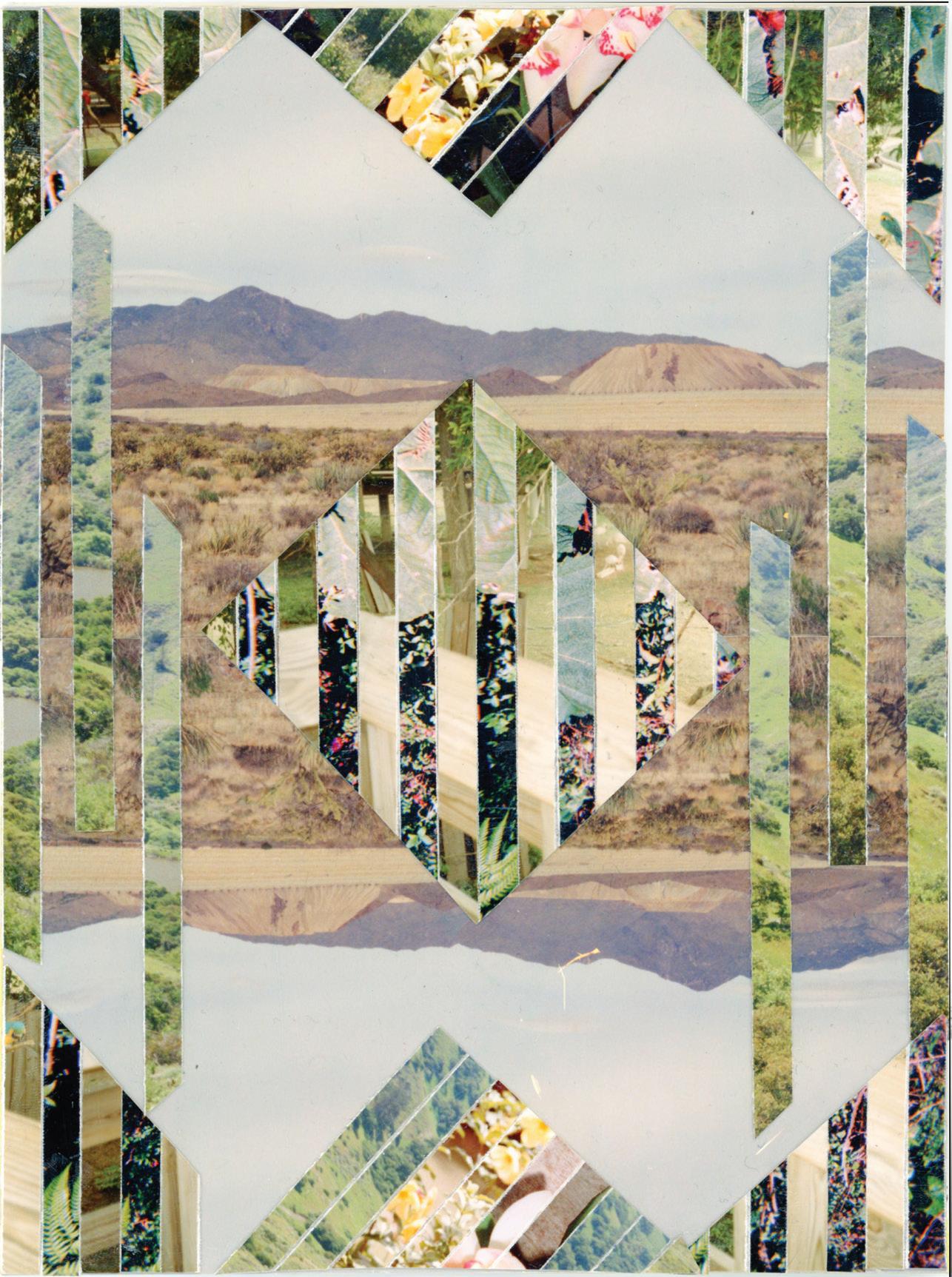
Trans people build community and identity by reclaiming their environments. These found photo collages are an example of direct reclamation, using existing imagery to construct a new habitat. My community, my art, and my identity are all built by shredding the ideas presented to me as “whole” and “normal,” reshaping them into what works for me, and using only what I need to nurture me physically, spiritually, and artistically. Just as the uniquely harsh conditions of a desert climate shape the evolutionary functions of its resident species, so too does the hostility of the modern world force Trans people to develop ways to survive and adapt in a society that wants us dead.
In order of appearance: “Small Queen” “Hot Salad” “Question Party”
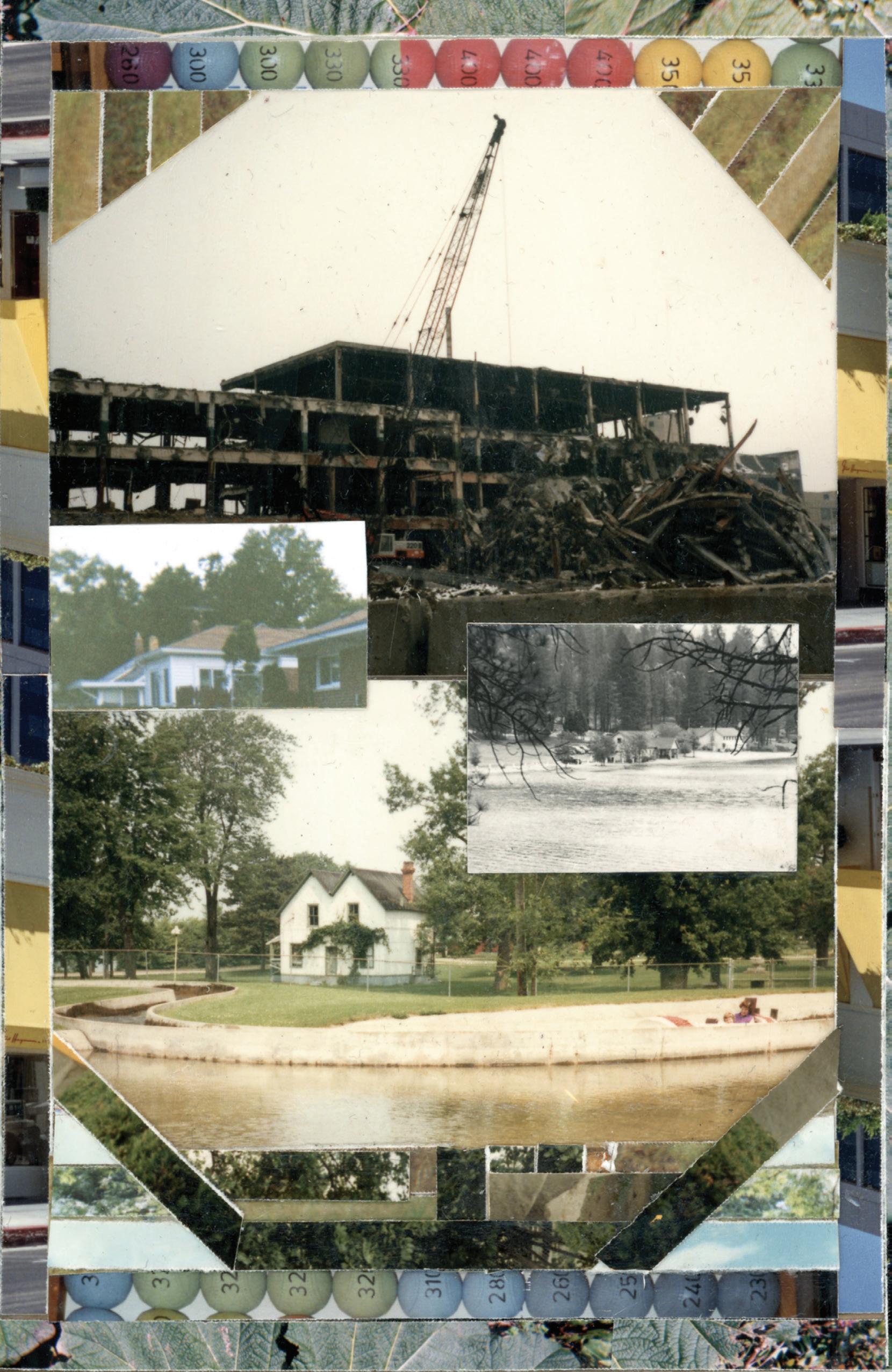


01 - “nature chews on me”
IMAGE DESCRIPTION: a grainy, black and white print made up of human teeth x-rays and text reading “nature chews on me”. The text is in white over the background, giving it an appearance of negative space carved out from the image.

The series Parasitology is one which uses specimen imagery, EcoCrip theory, and personal reflection to examine the Disabled experience. As a physically Disabled and Trans person, I have always felt drawn to the aesthetic of a cabinet of curiosities in an empathetic sense. Historically, cabinets of curiosities have often exhibited body parts of “othered” individuals, specifically the physically Disabled, Gender-Nonconforming, and People of Colour. The basis of this work is photography, and I have worked to challenge the idea of photography as a “documentative” practice. To give my prints an explicit subjectivity, I abstract my images to give them a grimy, grunge aesthetic. Through poetic text, I challenge the typical voyeuristic gaze often projected onto “oddities”. In this way, I am the specimen, and through me, the specimen now has a voice. To make these connections, I draw on my
IMAGE DESCRIPTION: a tiled together square block print in black ink on white paper. Most of the image is made up of rectangles, each with a different type of insect exhibited, with labels and pins. In the top left hand corner and bottom center are two blocks with the text carved into them; “PERHAPS I WAS MADE A STRANGE CREATURE, ONE TO BE STUDIED RATHER THAN LOVED.”
experiences as a Disabled and Trans individual, where I have often been a subject of study and unsolved anomaly within the medical system
Overall, this series is one which utilizes imagery of scientific and collectable specimens while prompting the viewer to ruminate on the prevalence of the “othered” body in a cabinet of curiosities.
Within EcoCrip theory and Queer Ecology, parallels are drawn between “othered” individuals and the fluidity of the natural world. Similarly to how nature defies the boxes we impose on it, Queerness and Disability lie outside of normative societal boundaries. Within western cultures, nature is studied and thought to be an inanimate object in such a way which strips it of any dignity; it is dehumanized similarly to how medical speculation dehumanizes Disabled and Trans individuals. Many decomposers, scavengers, and other “gross” creatures are deemed undesirable, leading to them being pushed out of sight or even exterminated.
Ironically, the reason for the prevalence of these creatures is because they thrive around humans and 02 - “Perhaps”


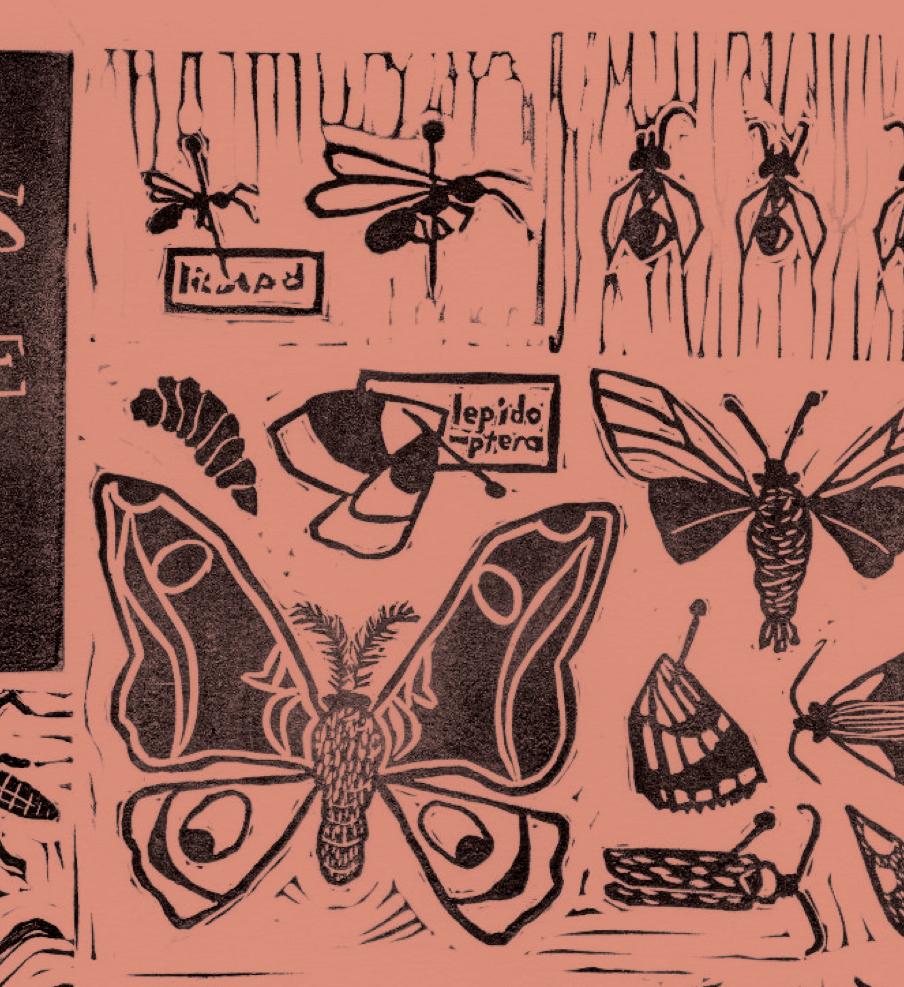
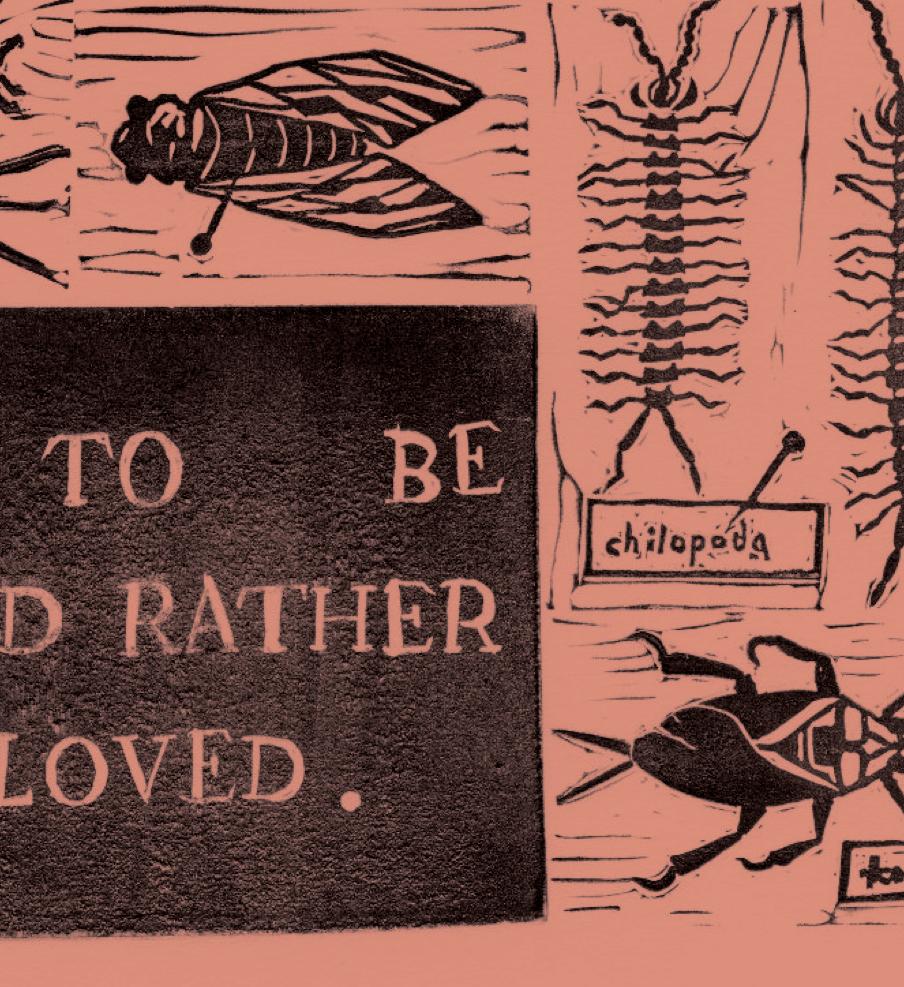
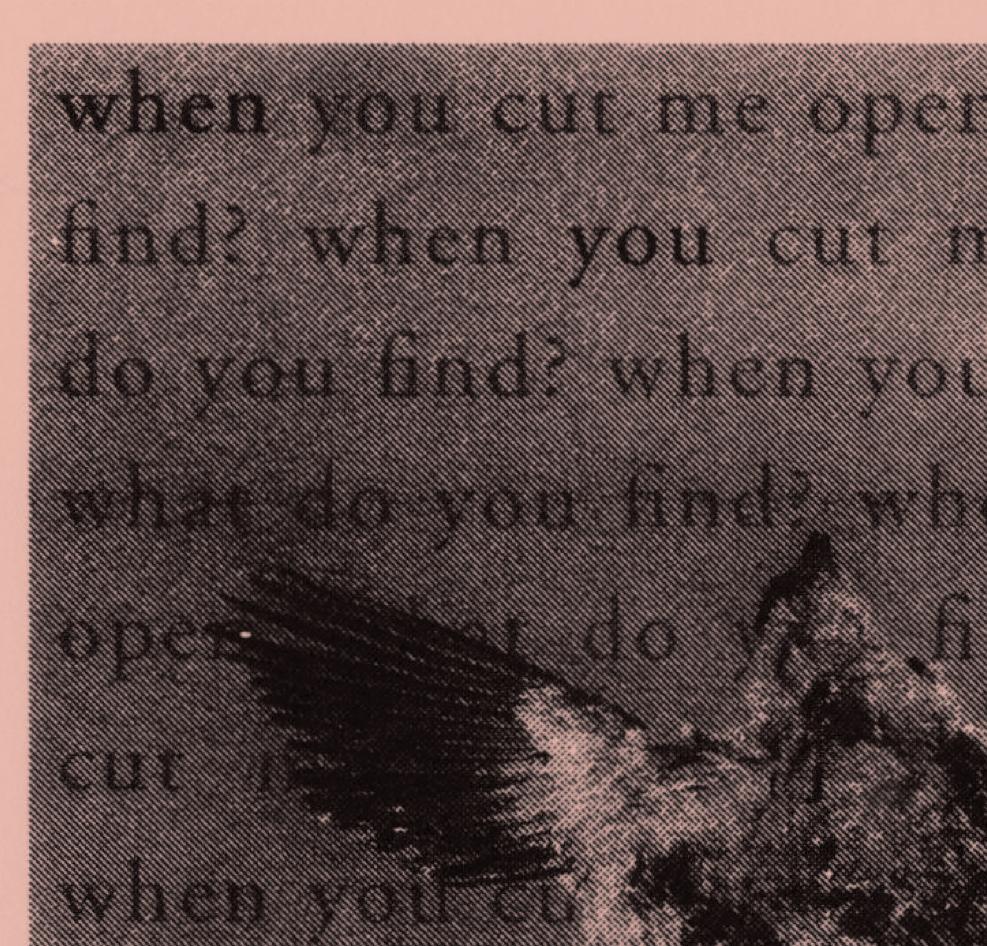
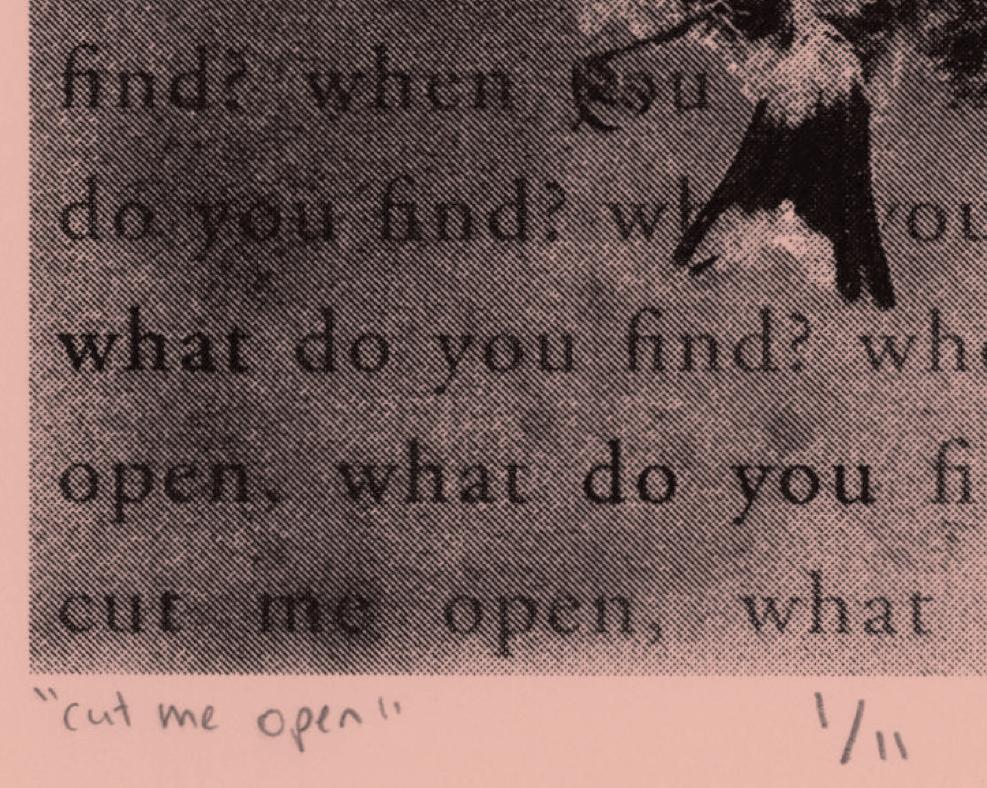
IMAGE DESCRIPTION: a grungy, dark, greyscale print in black ink on white paper. The central image is a bird specimen, with its abdomen cut open and wings spread out to the sides. Repeating text makes up the background, reading “when you cut me open, what do you find?”. The background tone is quite splotchy and dark, making the text difficult to read at times.
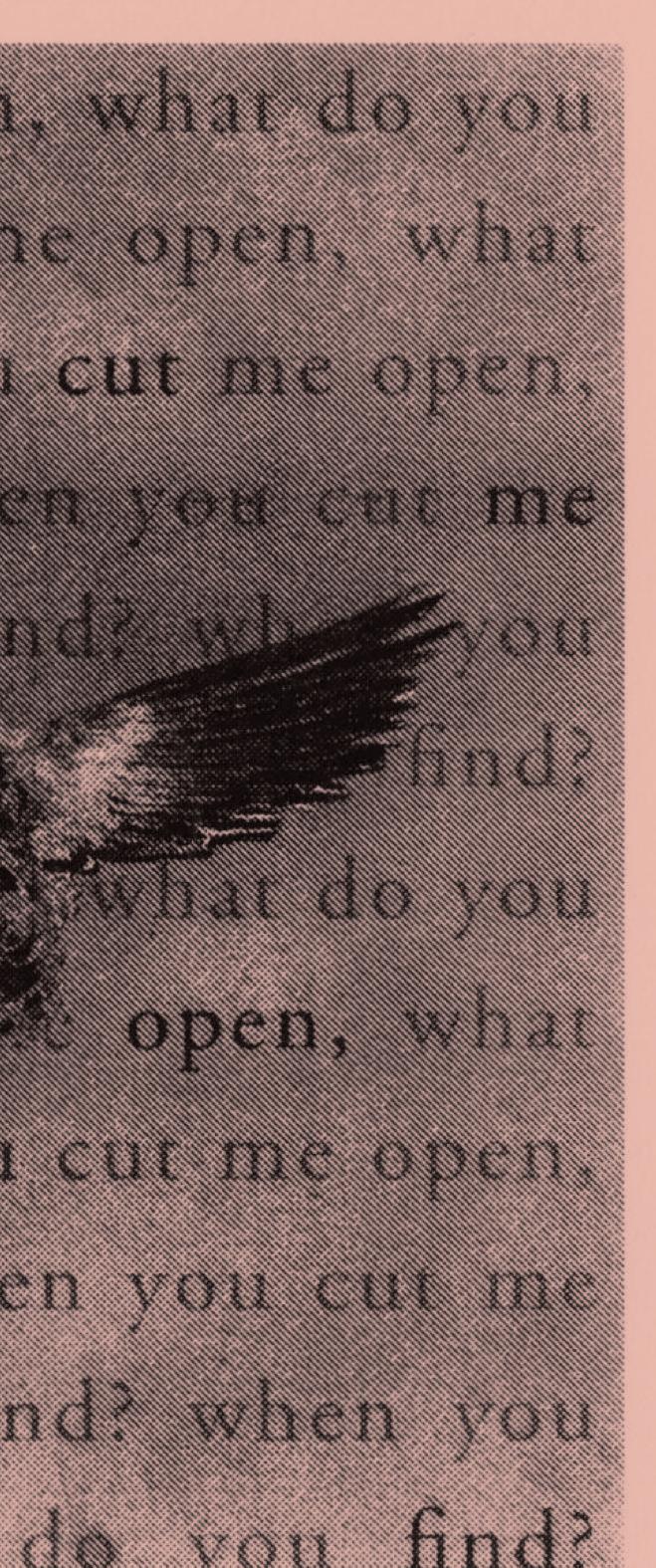

in urban areas; think rats, bedbugs, and pigeons. Yet, they are thought to be leaching off of humans. Disabled individuals specifically are often referred to as parasites on society, and because of this connection, I have used “disgusting” specimens within this series. The title Parasitology comes from this idea, as well as the concept within EcoCrip theory, that Disabled people are important members of society, parallel to the unloved members of ecosystems, such as parasites. The disgust and violence which “gross” specimens evoke is ultimately ironic, as they are integral members of their ecosystems, much like Trans and Disabled people. My series Parasitology uses text and specimen imagery to equate Disabled and Trans individuals such as myself to reviled, but necessary, creatures.
Words by Ann McCann
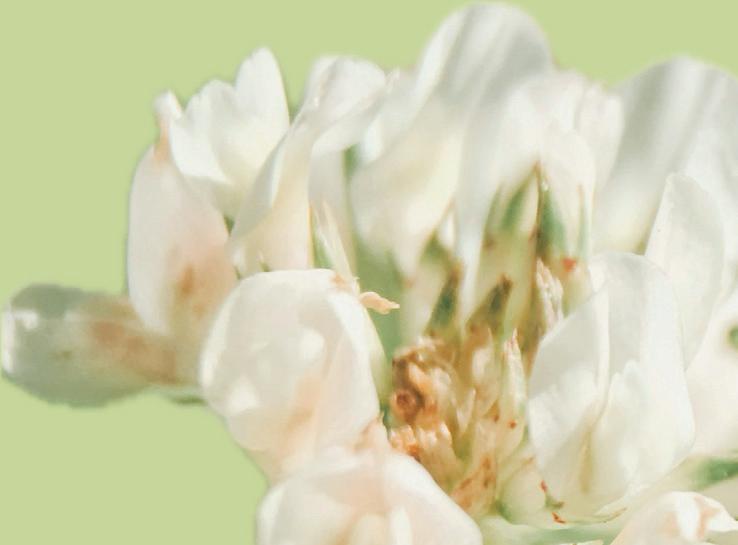

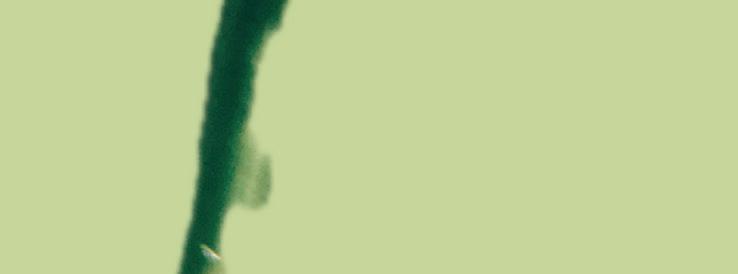
Outside it’s all California sunshine, the kind that heals and grows and ripens–full, fat, juicy. The kind that makes the hairs on your arm glisten gold and sweat bead at the base of your back. I greet the sun and squint out at the backyard and into the blooming cherry trees. The trees hum with the excitement of pollinators coming alive. I greet them with a smile and run my hands over the bark of the tree–rough and alive. It’s late Spring of 2020 and the world is full-blown Pandemic Era and it seems grief and fear are the new normal.
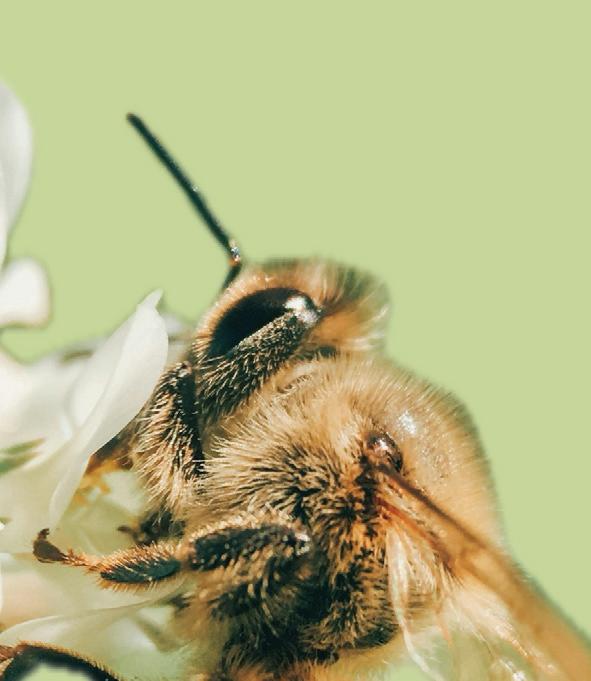

I turn on the water spigot and watch the refreshing water pool at my bare feet. It cools the hot rocks I’ve tiptoed over to get to the hose. I could have slipped on my garden shoes, but the idea of being barefoot in my sun dress in my garden feels romantic and I yearn to connect to the earth beneath my feet. I survey my garden. Not for signs of pests or a need for pruning, but for signs of life—my favorite signs of life, my bees. They buzz and hum busily along, in and out of fat yellow zucchini flowers, drunk with pollen all over their fuzzy bodies. I count the species I can see today: non-native European honeybees, native
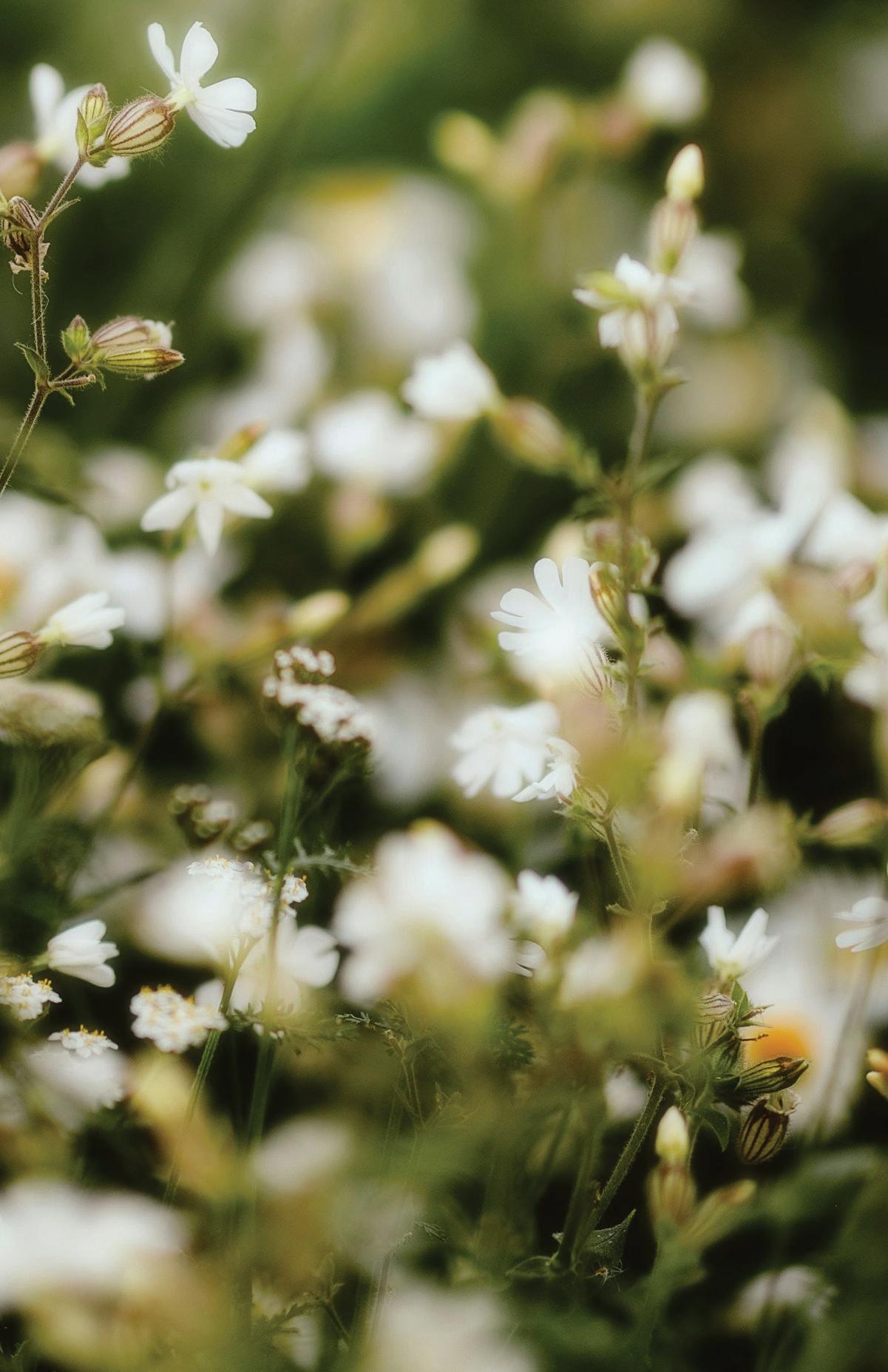
California Carpenter bees, native yellow-faced bumblebees, and native mason bees—metallic green and blue in the sunshine. They belong in this garden more than I do and do nearly as much work keeping it alive.
I bend down and turn out a zucchini flower, careful not to crease a petal, and a honeybee stumbles off the stamen and crawls across my hand, her pollen pockets bright yellow and full. After putting her back in the flower, I pull the hose over and flood the garden boxes, careful not to disturb any working insects.
These are the good times. These are not times for grief but times for salutations and jubiliations. But as much happiness as I have learned from them, my bees have taught me grief more than anything else. They taught me that the grief always comes and you must decide what to do with it or it will consume you. Where warm mornings are alive and buzzing, cool evenings (as well as the climate crisis and pesticide use) bring with it dying bees. Whether sick, cold, or old, dying bees have always had a way of finding me. Where many find fear, I have always found fondness with bees. Upon finding one struggling, I try nursing them back to health, cradling them in warm hands, feeding them in gas station soda lids in my bedroom, watching them fade in front of my eyes. Their crawl gets slower, their proboscis no longer laps up sugar water, and their tiny tarsal claws have a hard time clinging to my skin.
The first summer of the Pandemic, I felt like more bees were coming to me dying than alive, a symbolic parallel that I’m sure many who remember that time understand. I sobbed through each patient as they faded out and died over the course of our evening together. Over
and over again, grief and loss, death and its reckoning. In the middle of the Pandemic, this has become a virtue to understand: death will come, will you be ready? I found that the answer was always, no. I will not be ready, you will not be ready, no one will be ready when death knocks near them and we must learn to say goodbye. I suspect I am wary of those who carry grief like a synecdoche, the moment of loss encompassing the whole experience. Grief goes far and beyond that moment and watching over my bees taught me that mourning begins when you first imagine the goodbye. I will update you when I have found the moment that grief ends.
About my new position as death matron to bees, my father said to me, “How lucky you are, to have found your life’s purpose. Most people never learn what theirs is.” Honeybees bring their sick and dying out of the hive to keep it healthy, and while I understand this ritual, I cannot say it bodes well with reckoning with grief. And so there I would be, the last soul to interact with them. I would photograph each species of bee intently and then place them in a curio box of other insects that crossed over under my watch and care. Several times, to be the most humane caretaker I could be, I had to euthanize the bees in my freezer. It only takes about 12-15 seconds—as anyone who has let anything loved go, those seconds both speed up and drag on eternities—but as I clutched the freezer handle in sorrow, I would slide down to the floor, sobbing, until I gained the courage to open the door once again. Each bee I said goodbye to was cried over. Call it a bleeding heart, call me a liberal hippy, but to me, this death rite showed me that each soul was important and served a purpose on this planet until the very last moment it was here, and, to flirt with cliche, it shows that we all do.
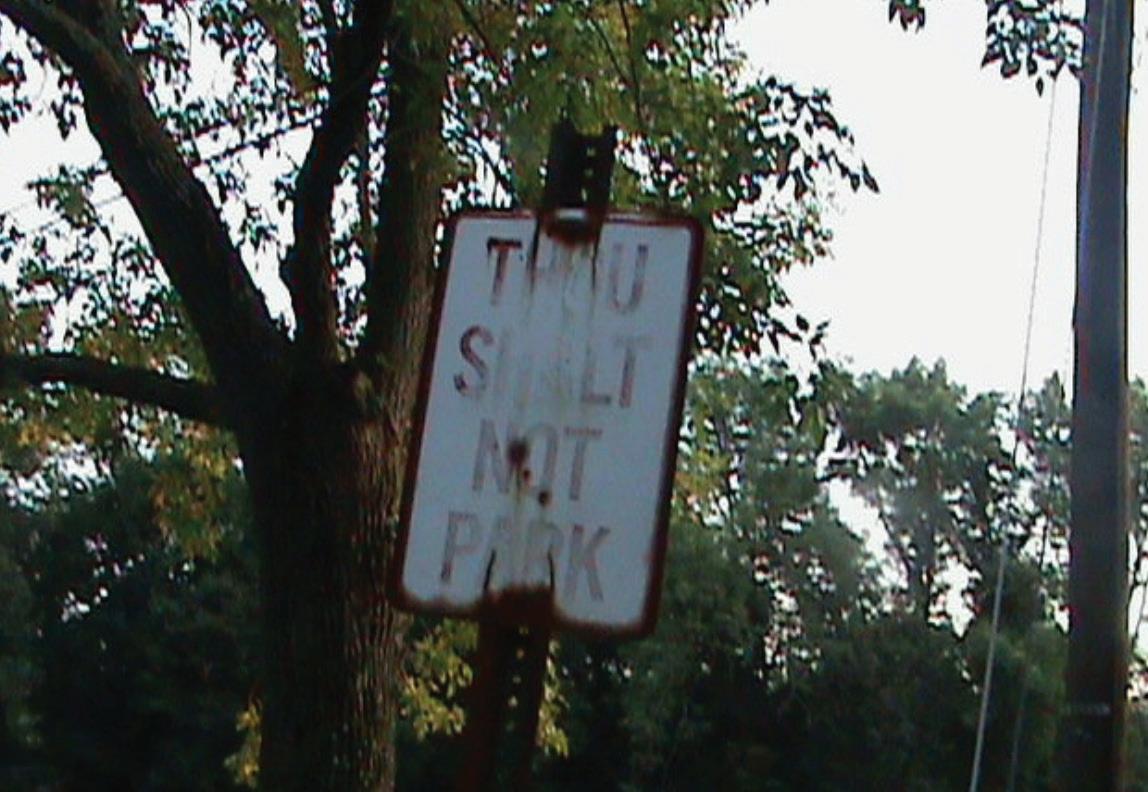
Corn leaves are sharp. I repeated the fact that had been ingrained deeply in my subconscious as I touched the very center of every green switchblade. My best friend walked on the roadside, slightly ahead of me, as I balanced between rocks, cobs, and shards of broken bottles. She led me to the same stone bridge I had crossed multiple times a month since she had moved away. More cornfields, punctuated by a white church of indeterminable age. A small clearing with a rusty sign reading “Thou Shalt Not Park” gave way to two rotting picnic tables. The wood was soaked through, so wet that you could push your finger through the rivulets left behind by scores of small insects. Moss grew without direction, convinced that civilization was right here so it could spread itself wherever it pleased.
“Down here,” my buddy, still years out from her first bivouac training but sure-footed and focused, motioned to me as she disappeared down a rocky embankment. My heart shredded inside my throat as I thought about how easy it would be to break her, how I had started to think that even a hug would shatter her ribs. I ran my hands over my own, stopping sharply at the curve of my hips. I clumsily surfed down the cascading gravel to land beside her on the silt shore. The soles of my white shoes sank down, keeping me in place until I forcefully popped them out and up onto a deposit of tiny rocks and shale. I slid out of my sneakers and planted my feet into the mud instead.
Never pull a leech off, use your fingernail to pry it up. I retained my socks, cotton weave like chainmail to keep the little bloodsuckers from attaching to the bottoms of my feet. They were ankle socks, but sometimes feeling safe is as close as we get. We walked into the water, the cool and mild current shifting around our calves as we looked for the best spots to set up my camera. The light was perfect, golden through mottled leaves. The sun was on its way to setting but wasn’t quite ready to abandon the day. A long branch hung low off the riverbank. Its bowed bark let its lowest leaves delicately drift along the current.
My life was spent behind the lens, not in front of it. Allowing anyone to look that closely would open the door for edits and pulling my body in unnatural directions was something I could do for myself. But this was my best friend, trusted in the same implicit way since we shared a staticky blue plastic chair bolted to a faux wood desk. At her first request, I handed her the camera. No poses, no direction. I spent my time under the flashbulb wading through the water, trying not to move my feet in ways that would disturb the less than thumb length fish. I let the palms of my hands touch the surface while trying not to break the delicate tension that separated the aquatics from the air. This is how I made it back to her spot near the shore, face turned to the fading daylight or bent low enough for freshwater aspiration. She was concentrating on something, pressing buttons furiously. Apprehension and excitement mixed in her voice when she turned the camera’s screen to me.

“Dude, I kind of like this one.”
Abrasion erosion is the river’s sandpaper. I took off my socks, slick with riverbed grime, and stood on the smoothing pebbles. The picture shook in my hands from what I tried to play off as low blood sugar. My face was turned down and invisible through my short brown hair, bangs hanging like I should be flipping them back to reveal a classic movie hunk’s uneven grin. The shark tooth necklace I had worn ever since my first close encounter with a massive bull shark hung around my neck evenly despite my increasingly protruding collarbone. My shoulders seemed wider, even with the slope that came from trying to suck my chest into the gaping black hole of my solar plexus. The hourglass figure I continued to try and bargain with via hunger strike disappeared. My t-shirt hung in a straight line down and out of frame. My exceptionally small and delicate hands refused to make an appearance. Muddy water and the gentle bend of the securely rooted branch created the backdrop.
Leech saliva contains anticoagulants, don’t panic at the amount of blood. My eyes moved from the photo to a small, dark passenger clinging to the skin of my leg. I panicked, slamming the camera into my best friend’s hands and wrenching the writhing thing from its feast. I backed away from the water, not wanting my contaminated blood to transfuse directly into the ecosystem. My ankle pulled lightly from its socket as I tripped over an exposed root, sturdy and pliable and old enough to know what it was doing. My best friend helped me up the bank and we walked back past the picnic tables and the sign and the church and the corn fields, back to the house where we used to share a bed and where she would now sleep on the floor even though her parents had a guest room.
Cornleavesaresharp. I repeated this fact that had been ingrained deeply in my subconscious as I touched the very center of every green switchblade.
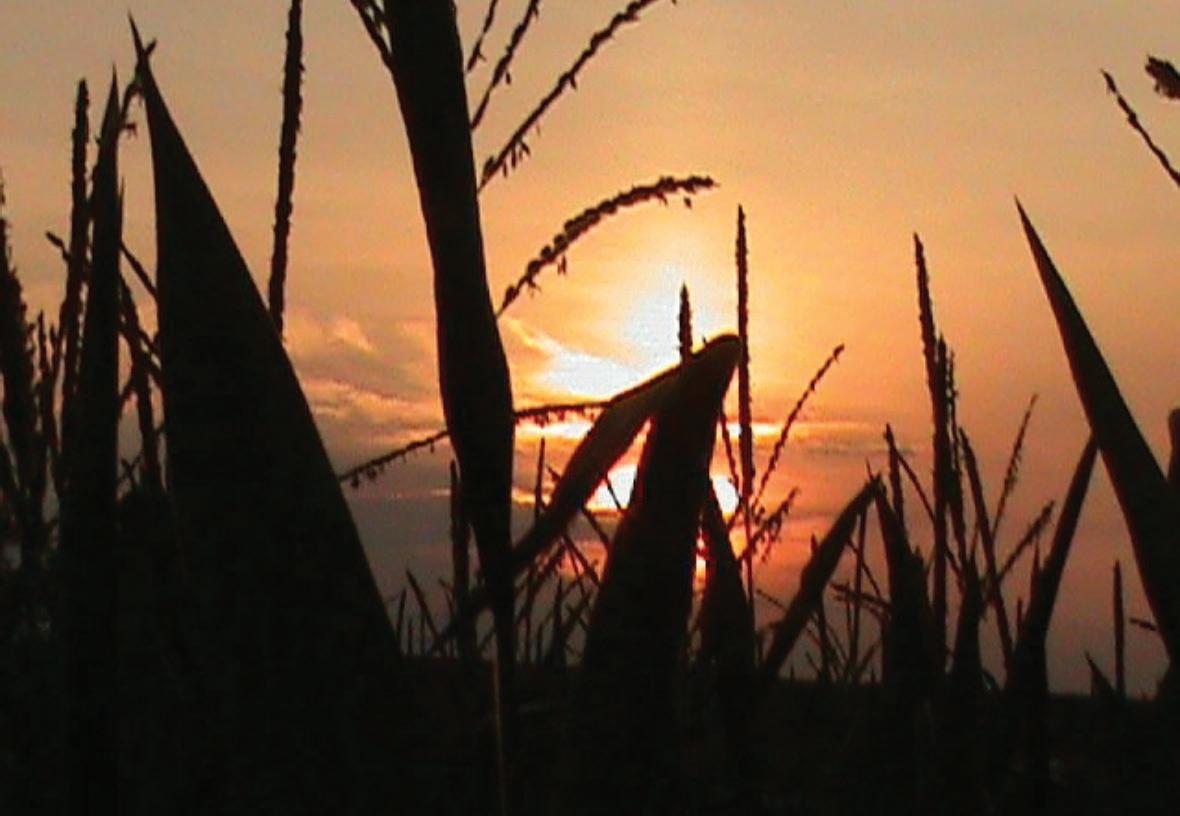
Words by Emmye Vernet
Rose and I stepped onto the trail just as the sun was reaching the peak of golden hour, the snow beneath us firming with the darkening day. We let our dog off leash and watched her gallop ahead, as we took our time behind her, moving our boots across icy, prickly barren ground. The salt pond lay just ahead, and we moved towards it, letting the imprint of yesterday’s footsteps guide us towards the glimmering blue. I reached for Rose’s hand and exhaled. “I’m happy we’re here.”
We moved to the almost-middle-of-nowhere about six months ago. Our lease in Brooklyn had come to an end, and Rose’s sister and their partner begged us to join them for the off-season on a rural peninsula in Maine, where they had both found jobs and fallen in love with the land. Hungry for a change in pace and with no definite plans ahead of us, Rose and I ended up agreeing to the pitch. And now, the four of us live together in a four-bedroom rental home tucked back into the woods, settled in the belly of the peninsula.
When we first moved in, I was shocked by the quietude of this place. I don’t really know what I had been expecting when I was asked to come to rural, coastal Maine: perhaps that there would be fellow Queers hiding out like forest elves in tiny log cabins, waiting for the gaggle of my roomates and I to arrive, and at last, start building the lefty commune of our dreams. But, that wasn’t exactly what I found. Instead. It was long drives on winding roads to get to anywhere, a social calendar that felt full if it was booked twice a month, and a tiny library that was the evident hub of all community activity.
This was a stark contrast from my life in Brooklyn. There, I had lived in what my friends and I referred to as the “shtetl,” named after the pre-WWII Eastern European villages of our ancestors. Our Brooklyn shtetl was a compact neighborhood where a tightly-woven web of Queer, anti-zionist Jews (and many, many other kinds of people!) lived just doors away from each other. We ritualized together, organized together, put on living room drag shows, crowdsourced for mutual aid, stayed up late dreaming about the world we wanted to build and the people we wanted to be at the end of it. There, in the borough that so many of our ancestors had lived, worked, and organized in, I felt a sense of lineage that connected me to something much bigger than myself.
But here, it’s undeniably different. A dense population of like-minded comrades has been replaced by a density of trees, gulls, and snowfall. In our house we carry on the kinds of conversations we had back in Brooklyn: politics, identity, art, ritual. Outside of these walls, though, it’s a different story. It’s not just that we’re far away from people we share a world-view with, it’s that we’re far away from everyone.
~
Our house sits at the edge of a sprawling blueberry barren that overlooks a saltpond. Now, in the heart of wintertime, the barren is a rolling field of empty red bushes, tall golden grasses, and dustings of snow. The ground is scattered with rocks—boulders and their fallen pieces spread across the hill the way I’d imagine it would look if another planet fell from the sky and landed on earth. Just hours after moving into our new house, Rose and I discovered the magic of the barren, and since then, it has become the site of our twice-daily walks with the dog. The routine of coming here day after day has been a lifeline of steadiness amidst the uncertainty of a big move.
It was maybe a month or so into being in this new town when one day, for the first time since I’d arrived, I didn’t make it to the barren at all. I don’t remember why: maybe heavy rain, maybe I was sick, maybe
I went to find a new trail somewhere else. Whatever the reason, the next day when I made it back to the barren and looked out towards the rolling hills and the shrubbery and the salt pond, I realized that even after just one day, I had missed it. I felt a visceral sense of longing in my gut, and was surprised by the intensity of this feeling. Had a place ever imprinted on me so quickly?
It was then that I understood that although here, in this new town, I hadn’t yet found close friends or comrades, I was not without connection. It just looked different. I was developing a relationship with the land, with the earth, with the tangible world around me.
It was, and it is, the beginning of a new type of kinship.
~
Turning towards the land as a site of connection has been a journey. When I ask a question to the forest, a tree does not respond with words. When I sing into the barren, it joins me only in my own echo. Relationship, in this case, is not about an equal exchange of words or ideas. It is instead something that exists in a space of silence, that is cultivated through listening, that can be felt in my bones but can hardly be described. Though for all the ways that it is different from the kind of relationships I had in Brooklyn, there are similarities too: my ancestors would have also resourced themselves with the land— garlic, cedar, and pomegranate—as much as they did with their people. The salt pond, the sky—these are certainly not substitutes for affinity—group organizing and gender neutral clothing swaps, but they do offer genuine support. I have been finding a newfound sense of assuredness, calm, and reverence that I wouldn’t have expected to find in the absence of my people. Being in Queer community absolutely means being in relationship with other Queer people, but I’m learning that it also means Queering the very sense of what we understand relationships to be in the first place.
I don’t know how long Rose and I will live on this tiny peninsula. For all the days that living so close to the land feels like the most life-giving thing, there are still days when the silence feels painfully challenging. Moving here, I knew that I would miss my friends back in the shtetl; the unpacking, the processing, the celebrating, the scheming. That grief is real and expected. What I didn’t expect, though, was that I would find a profound measure of support in the more-than-human world; that I would ever consider the land a genuine friend.
But I do, and for now, it seems to be holding me.
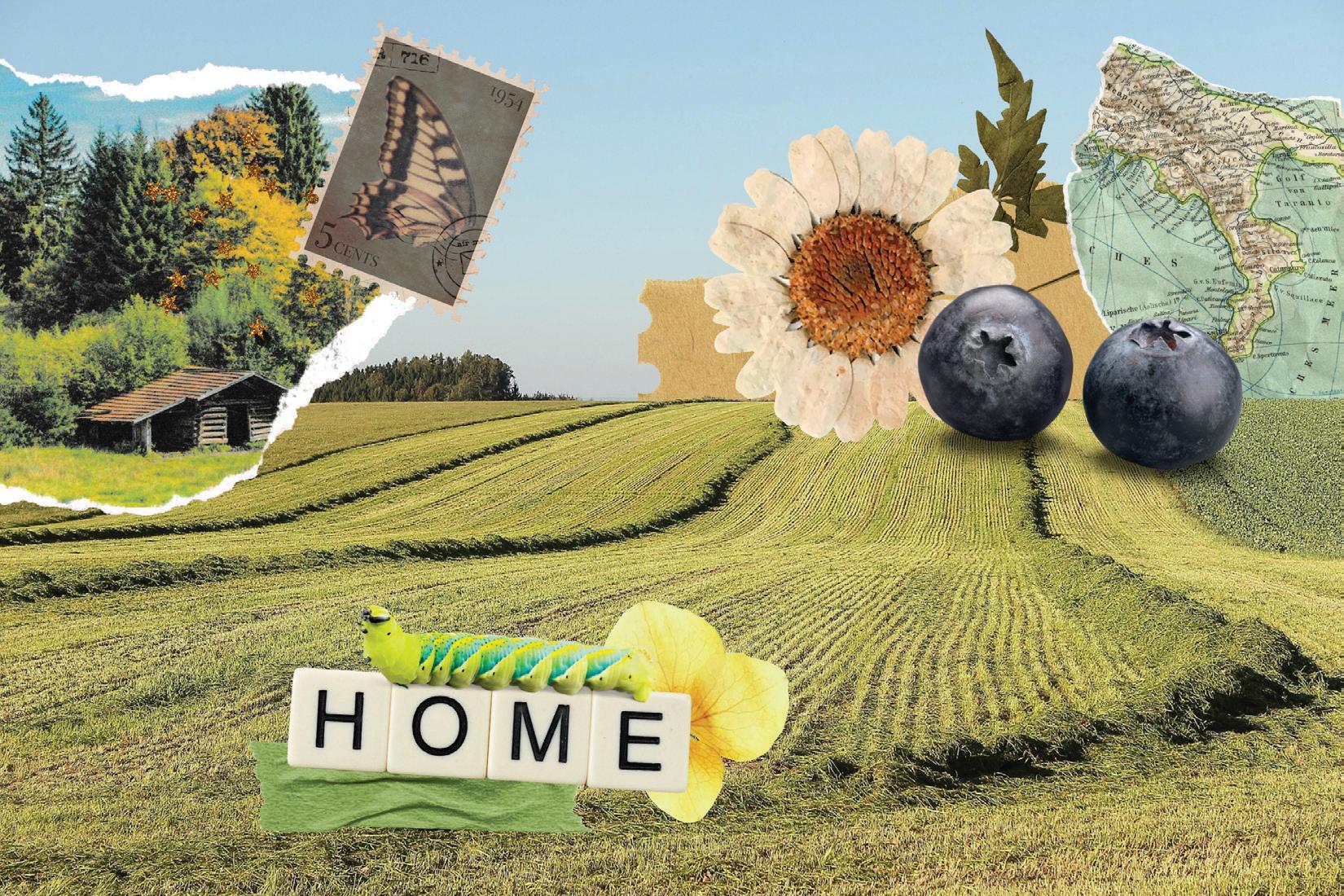
“First, I got myself born”
-DemonCopperhead, Barbara Kingsolver
“Before my grandfather died, I asked him what sort of horse he had growing up. He said,
Justahorse.Myhorse, with such a tenderness it rubbed the bones in the ribs all wrong.” -TheHurtingKind, Ada Limón
Iwas waiting for a horse to be born. I’d stopped work. I’d just turned 28. That day Nial and Bridget had presented me with a stack of profiteroles, signing the card to “Miss America.” They made up the bed in the spare room. The one with his good shirts, an unfinished floor, and a view of the powerlines, the hawthorns, the lane, the horses. It was the first house after the water treatment plant. On land that belonged in some meandering way to the church.
We were crowded into the house, lounging on a peeling arm chair, slumped couches. Put away wet. The cold hovering in our fingers. We breathed into our fists. Barn clothes were unzipped, unbuttoned. But nothing changed. We were only perched. Listening.
And then there was a horse. An utter influx of limbs. Hilarious and gentle. Nial kneeling, wiping and warming with fistfuls of straw. Bridget asking, “What should we call her?” How to answer? I’d bobbed in the hay, crouched, pitched over my ankles, watching a thousand pounds of mother tense with contractions. How universal pain felt in that moment. And how unearthly the following.
Having watched her stir on the monitor, circling and pawing. Building a nest, a bed, a nursery in which to lay, straight-legged with pain. Tipping her neck back. Triggering the chirping alert wired to her headcollar. The alarm sounding in the house, sending us into our boots. Eyeing the screen, the mare as we threaded our arms into jackets. Wondering, would she wait for us?
Barn cats dotted the walls between stalls. They’d collect around the commotion, batting at hay nets. Drawn to the smell of copper. A lawling moment of cross-species curiosity while the necessary, yet ordinary materials were lined up along the window. There were shoulder-length rubber gloves. Iodine. A series of boosters. A vial. A pitcher. A bottle with a rubber nipple. A bucket of sweet feed. A broken-off broom handle and a short length of rope. A bit of water and blood. And then there was a horse. Red as a riverbank. Falling into the world, a one-time skydiver.
The greyhound slipped like mercury amidst attendant and mother, hunting for afterbirth. Inside, she ate roast chicken, bought reduced for quick sale from the gas station-grocery store for two pounds. Bridget lovingly separating the light and dark meat with kitchen scissors, offered personalized portions with fingers flecked with gelatinous fat. But here, the animal reverted. Nipped at the blonde bloody straw with her mottled, old lady teeth.
She was warned off puncturing the flourishing f-shape of the placenta. Which was stretched and read for imperfections. Like a palm, soft and
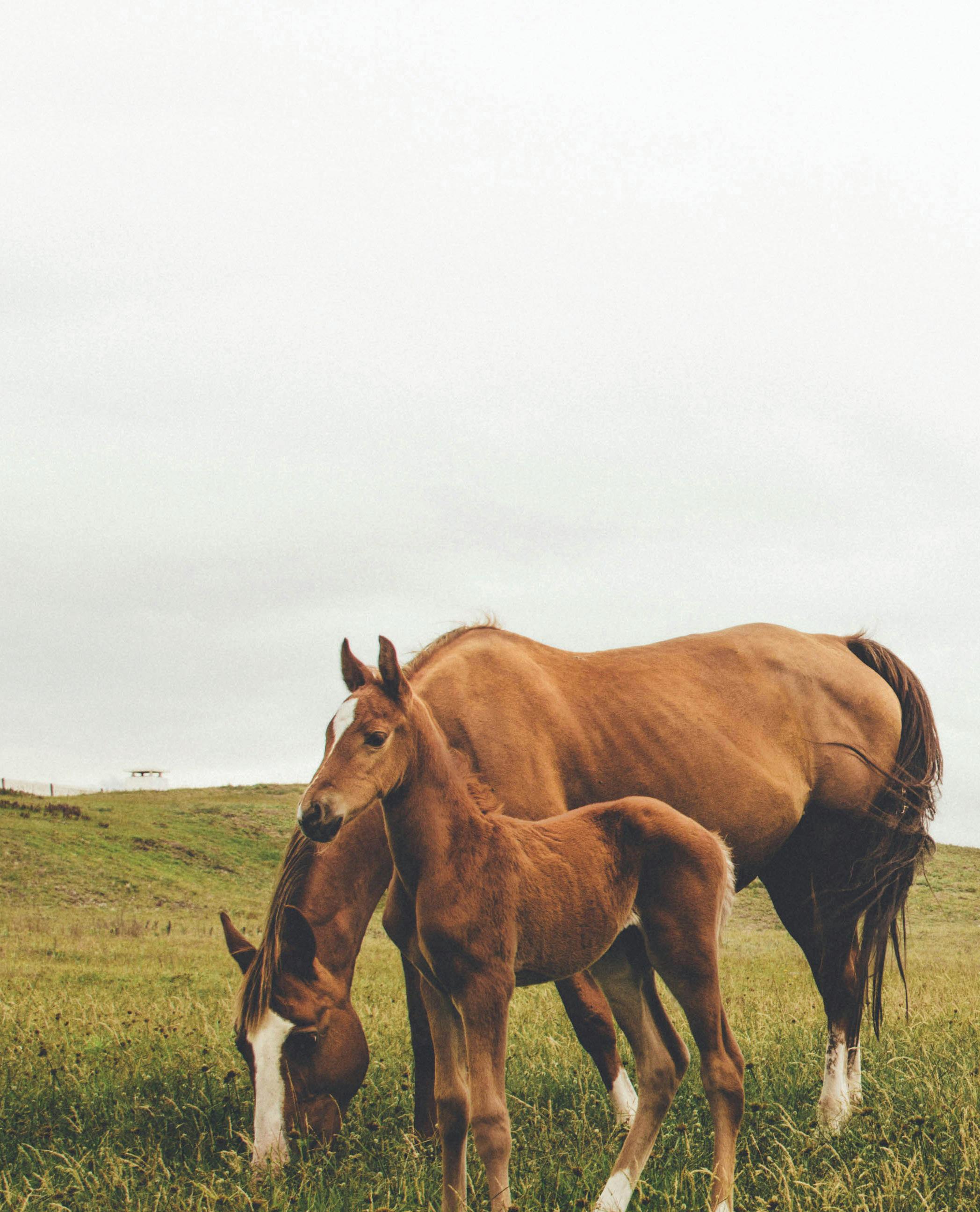
Words by Zoe Grace Marquedant ARRIVALS
secretive. We knelt, like soothsayers, searching its surface for evidence of bacterial infections. Like the inside of a cheek, this velvety sheet had bundled a baby. Here begins the first of many separations. The organ is bucketed, carried to the truck, heavy enough for the handle, then the lip to bite into your fingers. This cylindrical, artificial chest cavity is then lidded and driven. Down the length of the property to be chucked over the fence for the foxes to feast on.
The mare was grey, made of flecks that suggested something like cigarette ash, dirty snow. Her foal, by comparison, was a spent match head. Except for the edges of her eyelids. A white line tracing the eye, like a West End actor. Her future color. Her body only just unfolding now, opening with the flourish of a dinner napkin. A pocket knife. A thing built with springs and sharp edges.
The blunt of her hoofs emerging as she squirmed to find her bearing, swiveling like an office chair. Like a clock hand time traveling. Momentarily, those spring-loaded feet were tipped with an anemone of fingers. Soft, flakey like the meat of crustaceans. A protective layer meant to cushion her mother against the baby’s rocklicks. Falling away by the second, leaving as much trace as sleep. Her work began. With an inextinguishable drive to stay up, she becomes a cosmonaut. Establishing herself as perpendicular to the earth in kicks and bursts. An act of wonder. An arrival, though, only hip-high feels stratospheric.
Which had stopped everything: takeaway dinners, conversations on brown leather couches about pasts and futures, cigarettes leaned out the back door. Which gathered us to watch. Feeling as useful as pocket change. Though we played midwife, nurse, doctor. Minded her injections, her umbilical cord. Attended this 7PM birthday party, offering a tetanus shot and rumbling little reassurances.
Then, we left. We went inside for sleep, potato bread and sausages, like nothing’s different. I read the stud book over breakfast. She’s going to be a racehorse, I’m told. What do you call a contender? Born under the witness of just so many stars. “Galileo.” Is it hubris? Watching the constellation of child and mother on the television as we orbit the kettle. The fire already huffing, warming outstretched bellies. In the security camera feed, the two encircle each other. They are unaware of the day coming. The challenge set before either. The odds of success. Like, “Green Desert.” Perhaps, she’ll be a singularity. A history contorted into mythology. “Camelot.” Or magic. “Ouija Board.” Saddled with the unquestionable nature of her purpose. “Hopespringseternal.”
The night was irreversible. A moment when the math of the planet felt present and visible. As if demarcated in the air, there was a line. A set number of lives. Unknown to all involved, there had been a before. There had been showers, dinner, naps with your boots only loosened. There had been years. Months, weeks, days of anonymous, unclaimed absence. Not that there ever was too much or enough or too few of anything. But then, suddenly, there was a foal. There was one more. Arriving in the dark of the night, like a robber, a comet. A filly, oblivious and perfect. A little one of mostly limbs.
In a few hours, the two will be loaded into a trailer. There will be handshakes, and shoulder and back slaps. Perhaps a bottle of whiskey and a tin of biscuits. Owners and hires are going to gather and gaze with mouthfuls of ginger nuts. In a few years, with luck, they’ll have her run. And perhaps, she does. When asked, when given the hands on the neck, the open stretch. I’d seen the thoroughbreds on the gallops. Like gunshots.
It seemed like an unbridgeable distance between those lengths and the present. But, the will I’d seen sparking against the stable floor, the instinct to stand and run would be haltered soon enough. This is just her slot in the clockwork. She was made from the clay of her mother for exactly this purpose. She will be grown. She will be shoed and groomed. And then loosed, like flood water surging endlessly forward. Led by the mouth, as now she gums colostrum and learns to drink.

This is how she will live. Until she founders or retires or breaks down. Or is put to foal. And then everything will be as it’s been. Another beginning. Presided over by half-tame strays and stablehands all the same. A horse will enter the stall alone, swollen and impatient. And exit accompanied by something disruptively frivolous. All elbows and potential. The neighbors will paw, rattling their doors. There will be a tin cradled in its lid, warm with something fresh settled in parchment. We’ll need a name. The foxes will eat again.
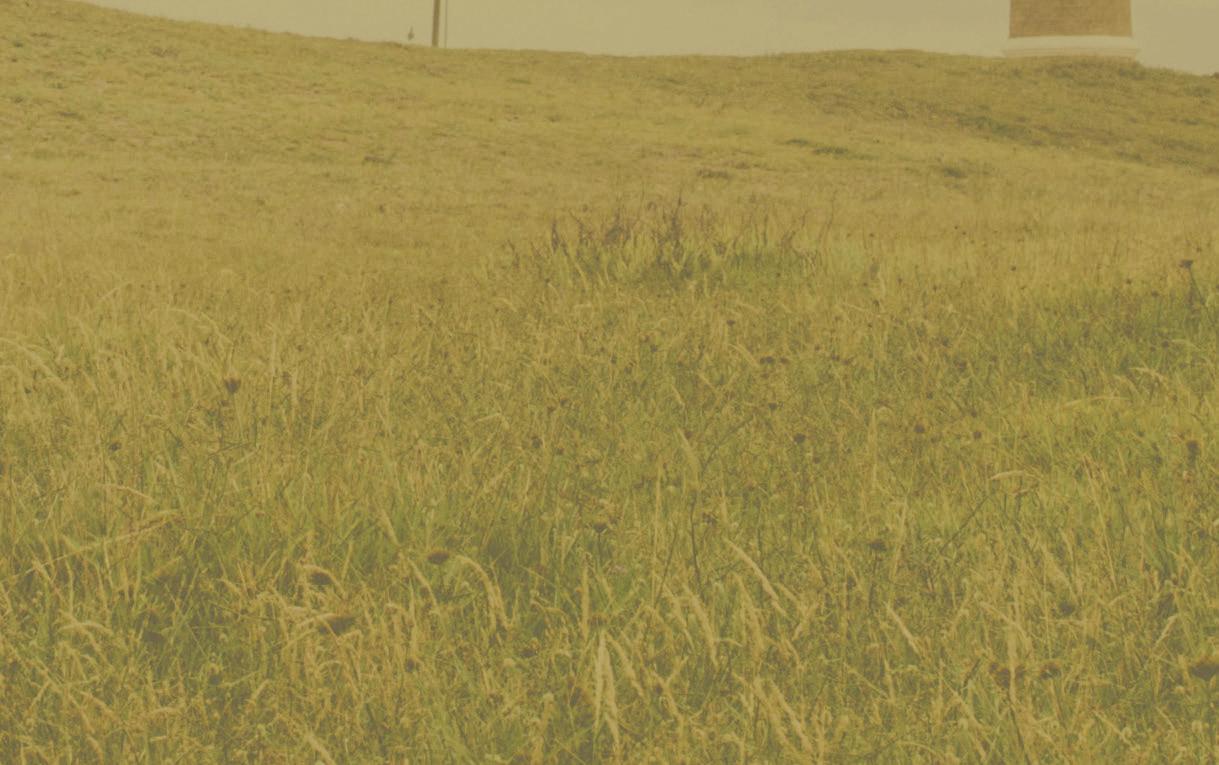
But, here, now, she is investigating her knees. The lights are off. Everything that will happen has happened. It’s quiet. Except for our footsteps pinging off the courtyard walls, as we collect the dogs with great sweeps of our arms. Beckoning them. A few velvety noses will emerge, breathing plumes of interest, aware as we are that something is different. We leave the horses. The foal, a pale stripe down her nose like a streak of exposed bone, next to her mother, waiting for more morning.

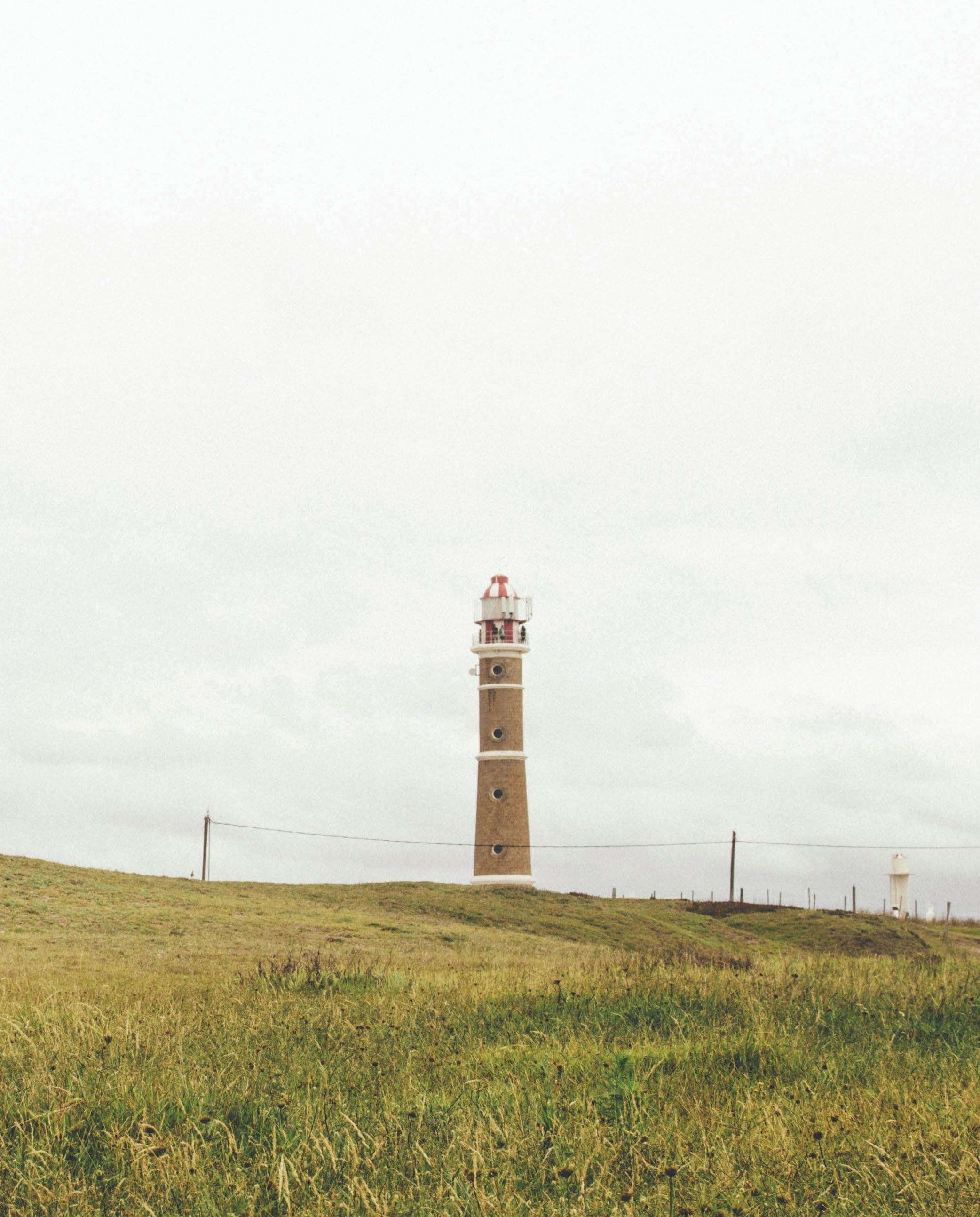
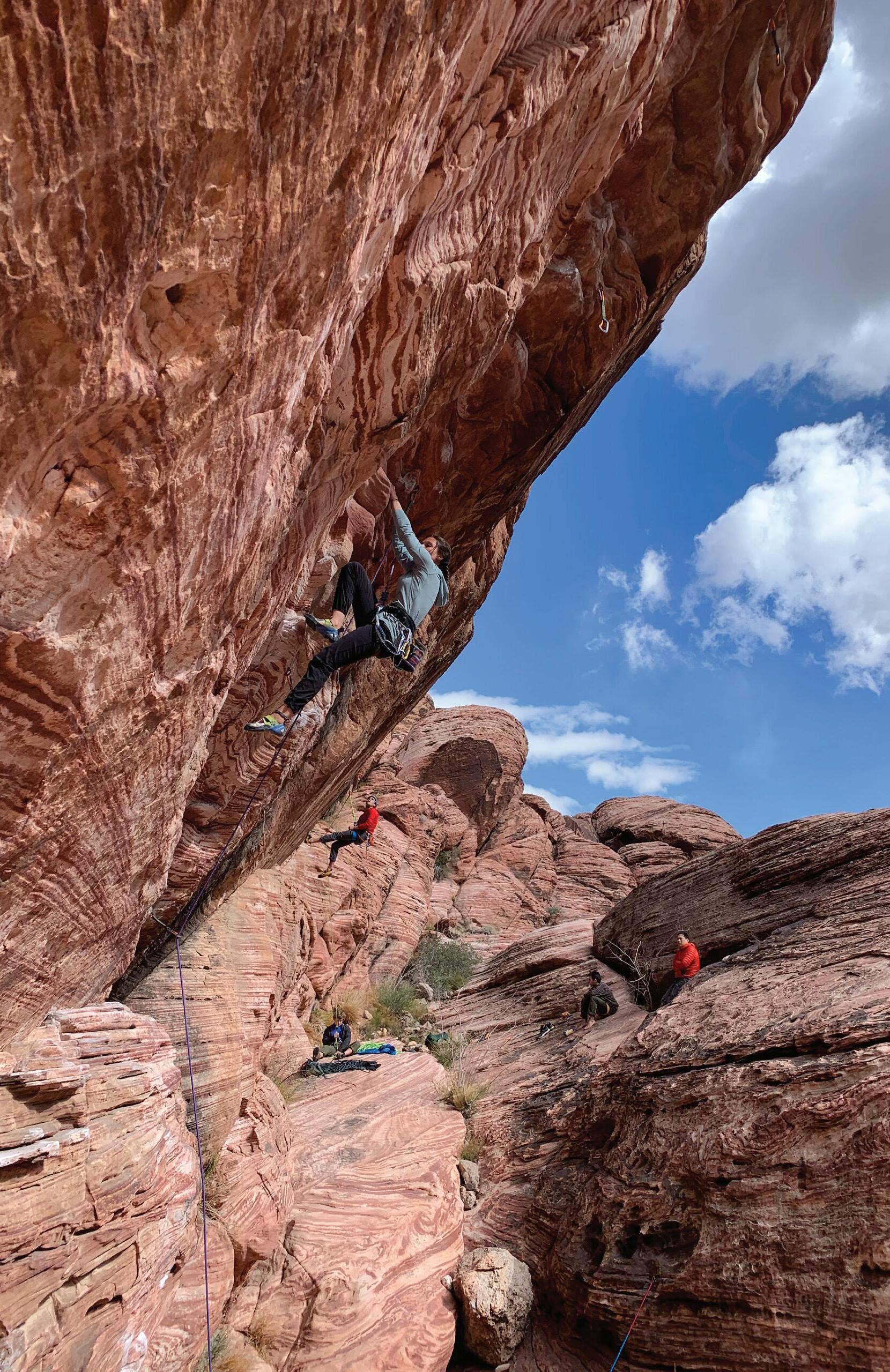
An exploration of ourselves and the rocks we climb
In June of 2023, I signed up for a beginners’ class at my home gym of Planet Rock in Ann Arbor, Michigan. I was instantly hooked on climbing from the first “Climb on!” from my belayer1. I started bouldering shortly after and realized how much climbing was in the mind.
“Okay, now, just stand up,” a more experienced boulderer shouted at me while I somehow balanced myself in a crouch. The distance between my hand and the next hold was seemingly insurmountable. My knees buckled as I willed myself to extend my legs. I fell. I’d let my awareness of myself drift to a place of shortcoming. I’d psyched myself out of trusting my body to take me upwards and the wall to stay solid beneath my toes.
Over time, I understood that each problem2 required an attitude that focused on progress. Attempting a problem asked me to embody myself, send awareness to my toes, heels, fingertips, biceps, and shoulders, and believe that my body is good enough, strong enough, and smart enough to get to the end. A puzzle, workout, and meditation all in one.
Knowing how much indoor bouldering centers me, I was curious about how climbing outdoors amplifies this relationship to self and to nature. I had the opportunity to speak with Margo Dominic (they/them), a Nonbinary climber with whom I share a home gym. They started their climbing career as a child, when Planet Rock was still located in Pontiac, MI.
What began as a weekend hobby in childhood became a passion and, eventually, a serious athletic pursuit when they attended the University of Michigan and joined the climbing club there. Through the club, Margo was able to form a community which eventually took them on a club-sponsored trip to Red River Gorge, a popular climbing spot in Kentucky.
I asked them about the difference between climbing indoors and climbing outdoors. Margo explained that climbing outdoors removed the gender binary forced onto climbers within the walls of a gym. Margo recounted one of their trips to Red River Gorge where they had a conversation with Margo Hayes, the first woman to climb a 5.15a graded route3. This was humbling and surreal given that, at the base of a rock, a celebrity in the climbing gym who would be “shaking hands with people and getting asked for her autograph”
was just another person outdoors. “It was just two dirty stinky people hanging out outside doing the same thing that they love.”
Another experience Margo shared with me took place in Cooper’s Rock, West Virginia. Cooper’s Rock is a newer climbing spot still being discovered, and the first guide book about the routes there was only published recently. Margo had the opportunity to check out Cooper’s Rock with their partner; while they were there, they encountered a man who was deeply religious. The idea that a deeply religious man would want to form a friendly relationship with someone visibly Queer, without an alternative agenda, is one many wouldn’t expect. But again, at the base of a boulder, with people all gathered around one central interest, we get to be Just People. Barriers to connection seem to crumble when we really see ourselves in the context of climbing.
This was also true in relation to the constraints of gender. The artificial boxes we are asked to contort ourselves into don’t follow us to the outdoors. Venturing to a natural climbing environment returns us to the expansive and varying experience of life.
In Margo’s words:
I think I feel more at home climbing outside as a Nonbinary person than at the gym because a lot of those binaries and boundaries kind of go away. I feel like I noticed those distinctions and gender a lot less when I’m outside because everyone’s just climbing the same rock. We’re not competing and getting put in categories or boxes that we don’t identify with, but I think it just feels a lot more welcome and a lot more like I can be myself when I’m just outside…I feel like gender doesn’t factor into it as much as it does in a gym.
In the danger of scaling rock faces, we begin to see our own. Learning to trust yourself outdoors relies on an honest relationship to one’s body, knowing what feels right, and finding the paths that match your strengths. There’s a part of this that is missing for myself at times in the gym. As a Trans man, I find myself grappling with the desire to fit in with the guys which pushes me to try things I am not ready for. Driven by a craving for community in a populated building, I can’t help but compare myself to others, especially those who are presumably cis men. Forgetting momentarily that cis is not the standard or more “natural,” I criticize myself for not flashing4 a problem above
1Belayer refers to a person who is on the ground responsible for ensuring that a fall is as safe as possible by counterbalancing the climber.
2A term for a bouldering route.
3The
my grade. Through our conversation, I began to wonder why I keep myself from connecting with other people outside of deciding I’m not like “everybody else”, and I’m not a good enough climber. This limiting belief has kept me from the outdoors.
During our discussion, Margo helped me reframed my imaginings of outdoor climbing by saying:
“In some ways, it can be less scary outside once you take the time to trust the rock and get used to climbing on something different because there’s so many different styles and different sizes of boulders. You can really start with the things that make you feel the most comfortable. Which makes it a lot more approachable than in the gym where everything is the same height and you’re stuck with the features that are on the wall…”
In my own experience indoors, there may be a route set and graded V1-V25 but, as a short climber, what counts as an easy reach for the route-setter becomes a possible dyno6 for myself. This poses an interesting problem when deciding on my next project. Before my toes even hit the wall, I am already deciding that perhaps I don’t belong on it. This stuck feeling leaves me staring at walls full of color thinking, “I could never do this outside.” The comfort of where I started has remained a gravitational force keeping me from seeing the possibility that exists beyond what I know. Margo explained to me:
“It’s definitely scary outside at first once you’re getting used to being able to grab anything and you’re not just grabbing the next purple hold…It honestly makes it easier to trust yourself and what you’re doing because you can gravitate to what you feel most natural at.”
Our conversation has inspired me to explore opportunities to climb outside. Until now, all I’ve known is the fluorescent lights, plastic holds, and the strict (and arbitrary) divisions based on gender. After talking with Margo, I am beginning to wonder if my apprehension has really been about facing myself with rugged honesty all along. Increasing my trust in myself will mean reaching past the comfortable, the controlled. Something set by other people can help train fear of heights and foster the skills needed to transfer outside. Facing something real, something that has been here longer than I have or ever will, means facing the transcendental parts of myself. I feel that in
4Flash refers to climbing to the top of a route/problem on the first try.
many ways, Nonbinary people, climbers or not, teach us to seek beyond simple definitions, to look further than the easy and obvious holds in our journeys upwards. I am grateful to Margo for sharing their experiences with me. Finding our space as Queer people is sometimes less about making ourselves fit into the constructed spaces and more about reconnecting with the Earth, which will always reflect the Queer experience.
Indoor climbing isn’t all bad. I have cheered on many strangers, asked for beta7, and felt euphoric after making it just a little further up the wall than the previous attempt even if I didn’t make it all the way up. Without climbing gyms, I wouldn’t have found my newest physical hobby. And anything that turns into appreciation of the world around oneself is a good thing. Climbing has taught me how to listen to myself. On my worst days, taking it out on the wall has given me the chance to see that I am enough for the things and people I love.
Community exists wherever we create it. Of course that is always easier said than done, but don’t let that stop you from going to your local climbing gym with just one friend. From there, smile at somebody, cheer them on, make new friends. Eventually, and I’m also speaking to myself here, get outside!
For more climbing inspiration and knowledge, you can find Margo on instagram at @margaret. margo.d!
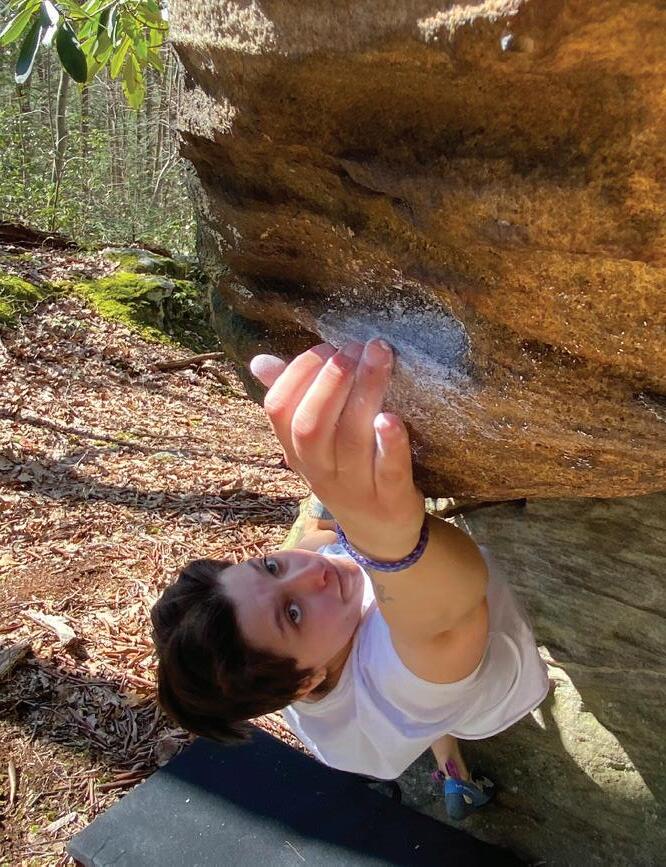
5The V Scale is the most common bouldering grading system in the United States. It starts at V0 and progresses to V17.
6Term that is shorthand for “dynamic jump” to get from one hold to the next.
7Beta is how the route is intended to be climbed.
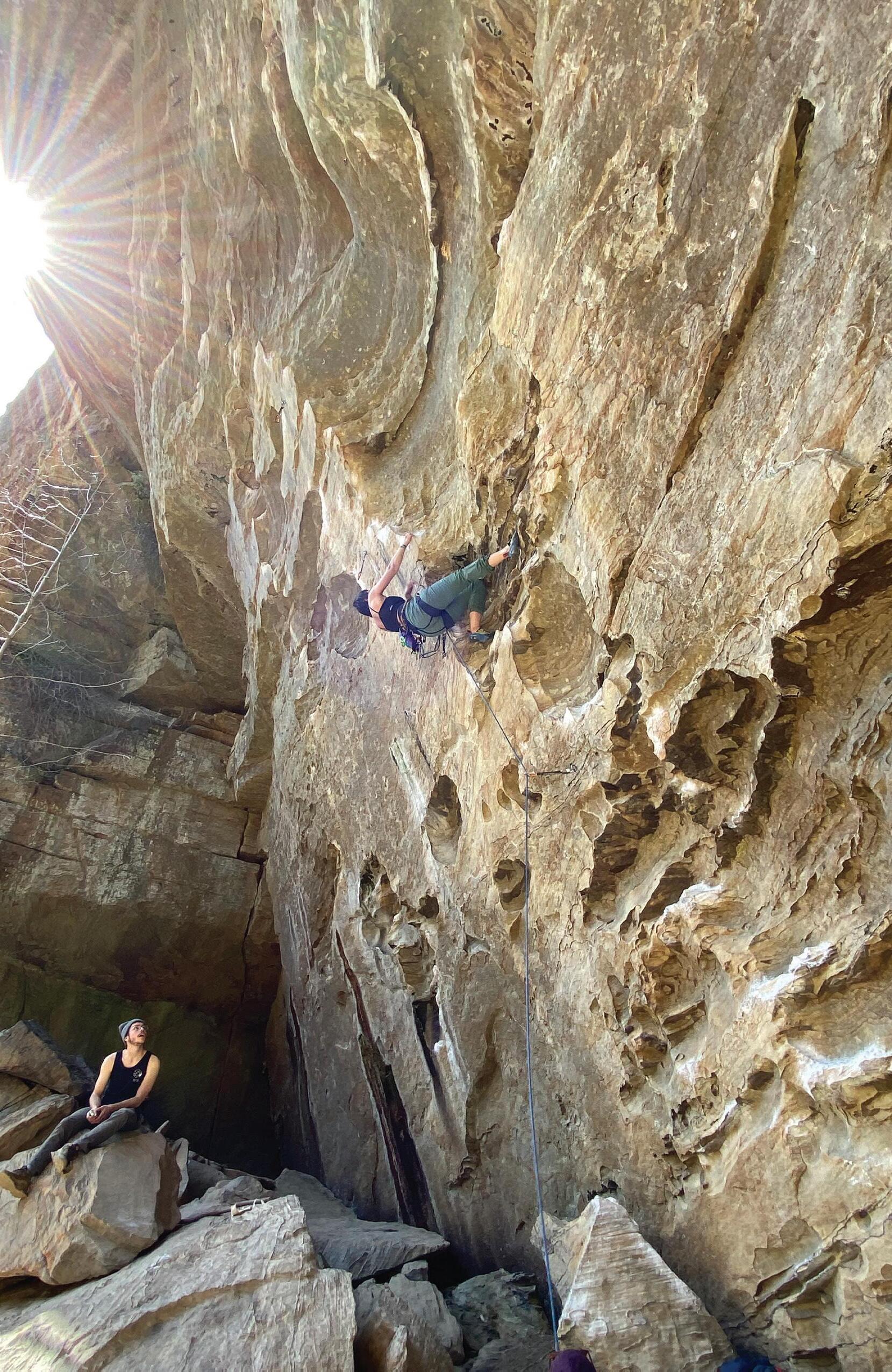
Words by Shaniqua Harris
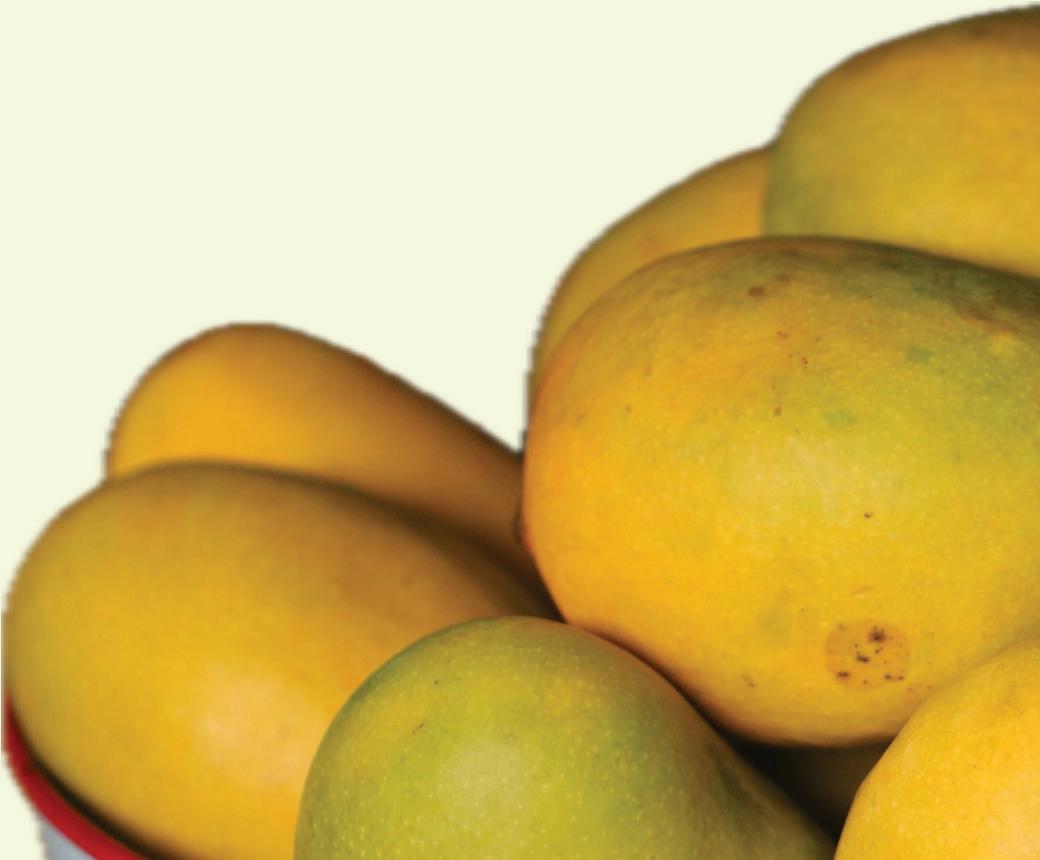





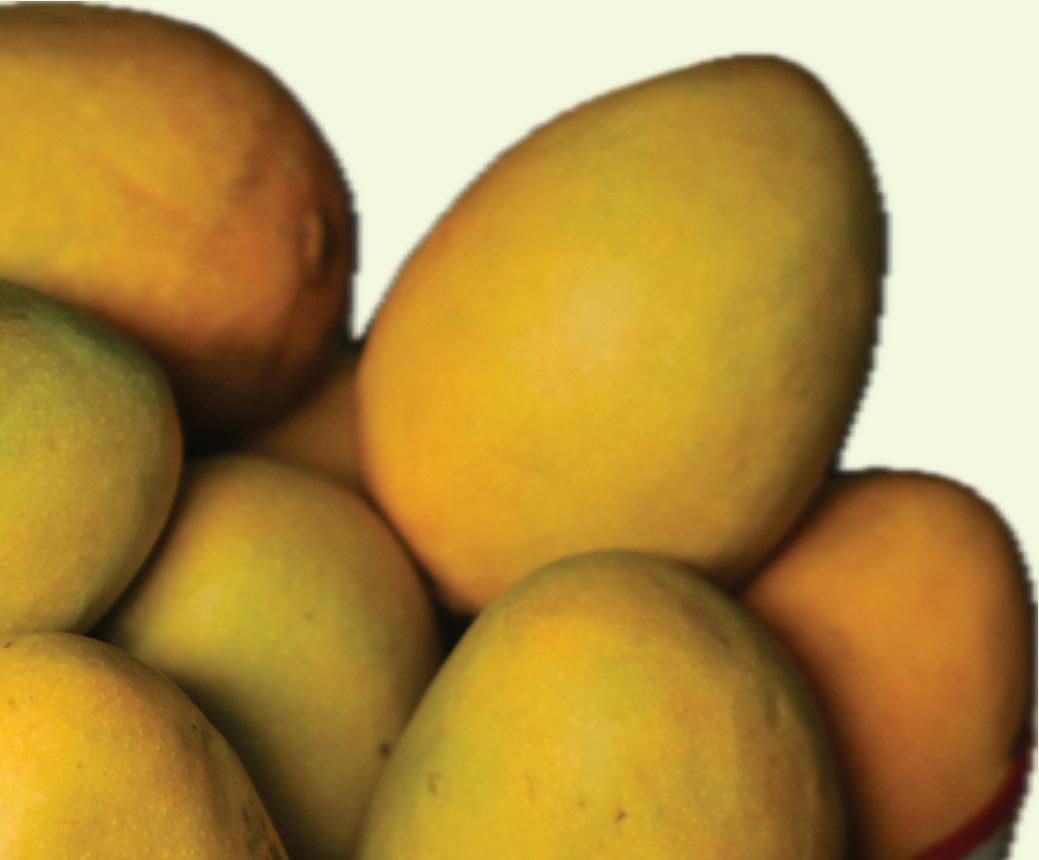


I am even years old, and it is July 2001.
The only concern I have is that black ants will bite me as I climb the mango tree. My cousins are not here today to wait at the base of the tree and catch the mangoes when I throw them down. So, before I climbed up, I looked for the softest parts of the ground, kicking away rocks and kicking leaves into soft piles.

Dashing mangoes from a treetop is tricky work, but one I’m skilled at. It’s been months since I dashed one off target into a rock or down a slope in the land somewhere hard to find. My cousins not being here also means that I can’t pick the ripe mangoes. No number of bedded leaves will stop them from juicing themselves on impact.
This specific mango tree is my favourite. I spend most summer days sitting in the crook of its limbs eating its fruit and tossing the seeds and skins into the soil. There are other mango trees here, but I never pay them mind. Their mangoes are smaller, less sweet, and the bush is allowed to grow around them so that it feels like I am trekking through the jungles I see on TV.
Though sometimes, I do pretend that I am Steve Irwin, and I am on the hunt for a mammal, though





I’m afraid of most mammals. I’m reminded of this every time our class is dragged to the zoo. But I still like to pretend that trekking through the grass that’s almost as tall as me is an adventure and the second-rate mangoes are a worthy reward.
This day, from my perch in the good tree I look at the cherry tree which is too tricky to climb and whose limbs have grown like a willow so that even the smallest child can pick her own fruit. I look at the fig banana tree and the golden apple tree, trying to see if they have any fruit on them. I throw mangoes lazily to the ground, watching them so I know where to look for them. I stuff the smaller ones in my pockets. I slap away the ants, crushing them between my fingers, feeling guilty but avenged.
From my perch I cannot hear what is happening at the house, but I can see the comings and goings. Few visitors are enticing enough for me to go to them unprompted, my grandfather calls for me when there is one I have to pay mind. Usually, a distant relation from another part of the island come to see for themselves how we’re keeping. I stay in the tree as long as I can, hoping they’ll let me be and leave, but if I stay quiet too long my grandfather will come to the base of the tree and look up it and at me.

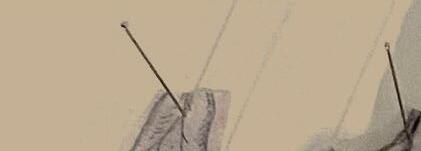





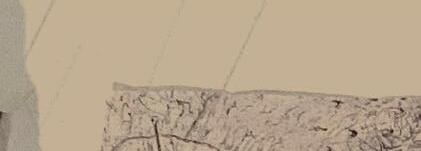
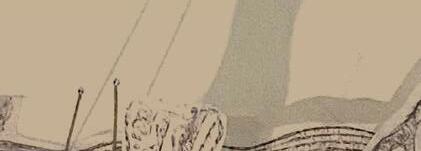




















































In the spring of 2014, my senior year of high school, my mother told me and my sister that we could pick out some perennial seeds to plant in the flower bed below my bedroom window. She’d been working on creating a secret garden in the fenced in part of the yard, and cleaning up the three other flower beds around our house proved difficult enough. Our strawberries and lavender were planted too close together and started to choke each other out. So while she battled other botanicals, she told my sister and I to pick out some flowers for the smallest flower bed.
I scanned the packets at the grocery store. I spun the carousel of seeds, slowly, the way one would look through a display of jewelry, pride bubbled up in my chest. I was permitted to choose something to grow. Choices were rare, so the weight of my decision felt as heavy as choosing what I wanted to be when I grew up. A quarterturn of the carousel brought vibrant purple and yellow in front of my face. Pansies. Perhaps it was spite that motivated my hand to collect the seed packet, but something about it made it feel like I was choosing myself.
Three years prior, my first real crush and I were walking through an already harvested soybean field. We were just two midwestern girls* trying to find something to do in the dreary last days of autumn when the leaves had all vanished, taking the color and warmth with them. The bean stalks were short and mostly crunched beneath our feet. One caught my ankle on our walk. It scraped open a tiny bit of skin. It was enough to start bleeding slightly. When we made our return to her kitchen table for dinner, I asked her father for a band aid.
He examined the scrape, scrunched his eyebrows and asked “What are you? Some kind of pansy?” I asked him what he meant. I had never heard someone call another a pansy.
“A delicate little flower,” he said.
I knew he didn’t mean it kindly. I didn’t know he’d called me something as close to a slur as he could get without me noticing that it meant something was wrong with me. Under the fluorescent lights in meijer that day, I picked up the pouch of ‘pansy seeds’ and carpet of snow seeds and couldn’t wait to grow delicate little flowers.
Together, my sister and I hauled red mulch, garden spades, and our pouches of seeds to the flower bed. With gloves too big for our hands, we pulled weeds and turned over soil. I was less than thrilled at the time to find spiders and worms (animals I adore now). Gardening was dirty work to me. Mother had asked me several times if I really wanted to take care of the flowers after hearing my squeals about bugs and dirt caked to my neck. Adamant to have something grow, I dug in the freshly made bed and gingerly planted the seeds. We spread the mulch over our planted garden.
My pansies came and went that year. The weeds took over the flower bed while I concerned myself with the strawberries overtaking the lavender and rabbits taking the strawberries. I was puzzled by plants being in “the wrong space.” When my mother, sister, and I decided to plant strawberries, we didn’t know they were aggressive, willing to uproot other plants just to survive. The lavender that had been in the same space for nearly 18
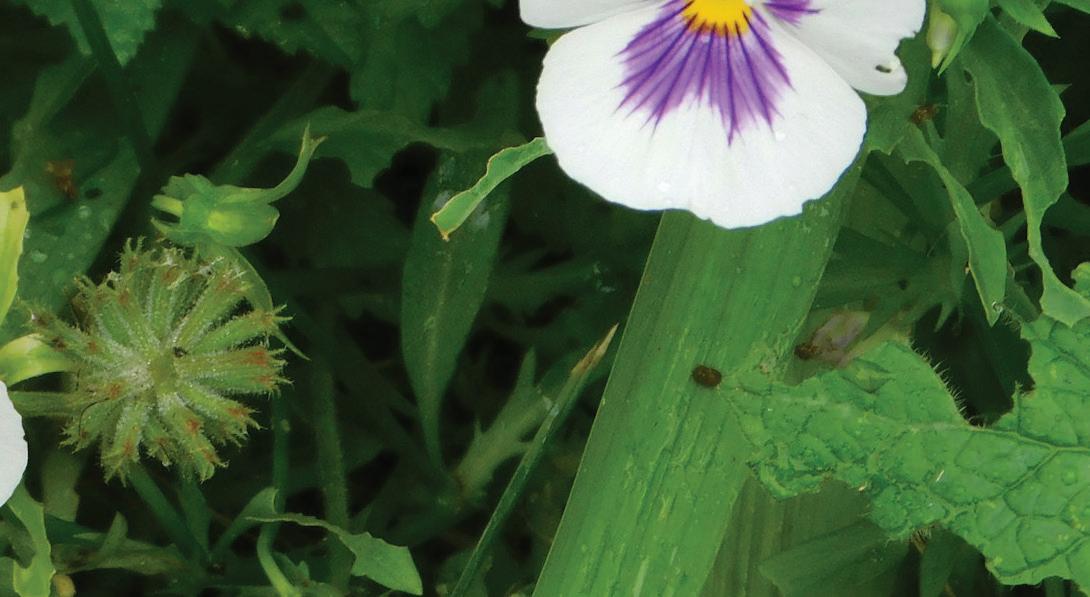
years began to give up ground to their unruly neighbor. Our desire for fruit cost us what we had known for the majority of my life. But isn’t that how life usually turns out? Something new will cost us what we’ve known, and it is not the fault of the new to do what it takes to flourish. This was a lesson I didn’t know was foreshadowing the beginning of my college career.
I moved to Texas for university. I’d chosen a christian school for a few reasons that I’d quickly regret and resent. Academically, I was shining, but I couldn’t tell a soul about my blossoming affection for women. The student handbook states on page 55 that I was prohibited from “romanticized same-sex relationships or sexual relationships of any kind.” Discovery of such acts were deemed an expellable offence.
In April, I returned to my home in Michigan with almost thirty credits and a new secret. To my mother and the university, the fruit of this affection would be eternal death. To me, there was no other choice but to cultivate this thing inside of me. To let it grow wild. To take a bite and let the sweetness change my life. It would cost tradition, my own long-standing idea of who I was. I just couldn’t give up.
On the first warmish day, I put on the too-big gloves again to pull weeds from my flower bed. Before making it around the house, staring at me in vibrant glory was a cluster of pansies standing six feet away from their original soil. They grew up through multiple layers of pea gravel. I smiled as they swayed gently in a lazy breeze, like a sigh of relief.
Delicatelittleflowermyass. I’d said to myself.
I thought about those Pansies throughout college. Dropped by circumstances into hostile soil, they showed that life and beauty is tenacious and stubborn. I learned to find the ones like me and fortify our roots through community. Many of us spoke a secret language to discover each other. I wore a mostly plain baseball cap with a small embroidered rainbow every day that somehow went under the radar. We talked about our dates and break-ups. We discussed how god must love us for believing so stubbornly we were in his image despite the opposition. On graduation day, my friends and I hugged each other. “They didn’t kick us out,” one of them yelled, grinning ear to ear with balloons and flowers filling their arms. During their time at the school, they’d been ratted out for participating in conferences with the Queer Christian Fellowship as a worship leader. It was astonishing that worshipping god with other Queers cost them a spot on stage for daily chapel at school. But they couldn’t get rid of us. We flourished anyway.
I think about those Pansies now and realize that although I have always been a seed in the wrong soil, nothing will stop me from blossoming. I can’t back down from being myself: A Transman. I will flourish anyway.
*Author chose to reference his past self as a girl because she had no choice but to conform to survive. She was the steward of the body that is now fully accepted as Trans and living his best life. It is with love that he acknowledges her.
Words by Christine Leistner
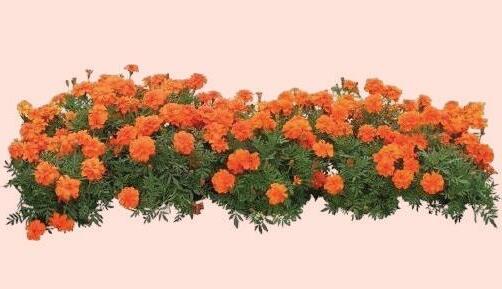
I was raised in a family with two emotionally immature parents. Growing up, they spent their days working through the familiar checklist of capitalist society-approved tasks and expectations. On the weekends, it was normal for them to spend their days mulching the garden and mowing the lawn while I watched television. My parents’ philosophy on feelings was just to ignore them until they “go away.” Feelings were like pests in the garden. Especially my feelings which got bigger and wilder over time. My mom and dad left the pests alone. Ignored them completely. Probably because their own pests were buried so deep that they were unrecognizable to them. Eventually, the pests took over everything. I internalized my feelings as shameful. The garden died. There isn’t enough mulch in the world.
My mom experienced a lot of adversity as a child. Her basic needs weren’t met most days in her upbringing. She wasn’t sure about where her meals were coming from, if she would have a bath or clean clothes, if people would protect her. So, when I was a child, she made sure I had three square meals a day, a comfortable home, and warm, clean clothes. We never missed a doctor’s appointment. She had a pristine checklist for parenting and she ticked all the boxes. She bought me these beautiful frilly dresses as a girl and beamed with pride as I wore them to church on Sunday. We offer our children those things that we never had.
But, I felt completely unseen growing up as a deeply feeling kid. Of course, this was profoundly wounding. I wasn’t able to explore myself until much later, including the Queer parts of me. I felt numb for a long time. I swore that when I became a parent, I would emotionally validate the shit out of my kids. My kids would be so aware of their emotions that they would use every word on the emotion rainbow wheel to express how they felt. They would share their feelings unapologetically and know themselves down to the bone.
My daughter was born 8 years ago and I am still struggling to figure out how to support her emotionally.
When she is angry, I would say “oh, that made you mad didn’t it? It’s ok and normal to be mad.”
She would respond with something like “shut up. Just shut up!”
When she was sad, I would get down on my knees, look her in the eyes and say “honey, did that make you feel sad? Would you like a hug?”
She would respond with “I hate you. You are the worst mom ever!” She might even take a swing at me. When she would be afraid, I would say “That seems like it was scary, ugh? We all get scared sometimes.”
She would respond with “ugggghhh! I am not scared mom! You’re so dumb.”
She would hit and scream and rage out at, what I perceived as, the slightest frustration.
I would wonder, “what the hell am I doing wrong?”
I dove into researching how to parent strong willed children. How to parent children who don’t want to talk about feelings. I tried all kinds of things.
Instead of talking about feelings directly, I would talk about a character in a story that went through a similar experience that she was going through.
“Shut up mom!”
I would try to make it funny by making a joke with self-deprecating humor.
“I hate you.”
I would try to bring up feelings when she was calm. Not in the moment.
“Feelings, feelings, feelings. That’s all you want to talk about.”
We offer our children those things that we never had.
I would wonder- “Am I killing the garden?”
One day, a friend of mine mentioned that there was a new rage room in town.
“What is a rage room?” I asked.
“It’s a place you can go to smash things” she said.
I went home and asked my daughter if she would be interested in going to a rage room. Her whole face lit up with delight.
“YES!” she said. “I would love to go to a rage room!”
I made an appointment.
Every day we talked about how good it was going to be in the rage room.
My daughter, like many humans, loves novelty. New and exotic flowers in the garden. She also loved the idea of breaking things with no negative repercussions. At home, we try not to break things. In the rage room, breaking things was encouraged.
The day finally came. We went into the warehouse. We purchased the deluxe package so that we could smash bigger items like sinks. We signed a waiver. We put on face shields, gloves, and protective gear. We picked out our sledge hammers.
The man at the desk asked us if we wanted to listen to music while we raged out.
My daughter looked me in the eyes with complete seriousness and said: “the B-52’s: Rock Lobster.”
I nodded with a smile.
We connected my phone to the sound system and rocked out.
She smashed everything to smithereens! A porcelain kitchen sink, two car windshields, glass lampshades, and several glass bottles. She swung that hammer so hard, I’m surprised her 58-pound body wasn’t lifted in the air by the momentum.
She smashed the windshields to dust and then stomped all over them with her rubber rain boots. It was the freest I have seen her in a long time.
We skipped out of the building holding hands, smiling. We talked about how amazing that experience was and how we planned to do it at least once per month. To release the pressure in our hearts.
I am not sure it’s sustainable to break shit every time you’re angry. But buried under those broken shards, the rubble, and aftermath of the rage room, there were the beginnings of fertile soil. There might have even been a seed sprouting in our garden. A seed that was created by recognizing that my daughter might need something different than what I needed as a kid or what I think she needs now.
A couple of hours later, she was upset because we had to turn off the TV.
“I hate you,” she said.
I got her ready to sleep that evening. We both laid in my big bed and I read her a story.
I looked at her and said “I am never going to give up on you kid.”
She looked at me and said “I’ll never give up on you either.”
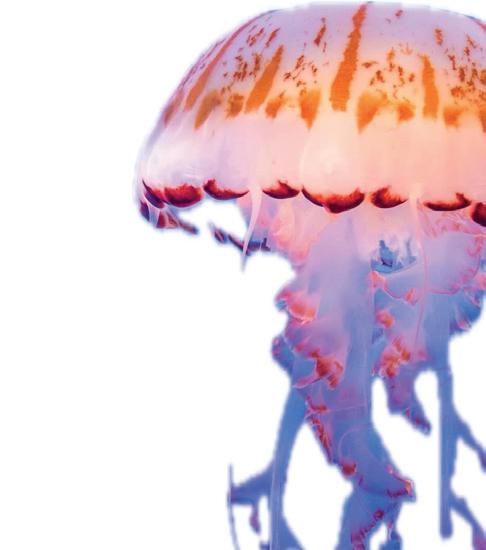
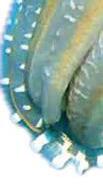
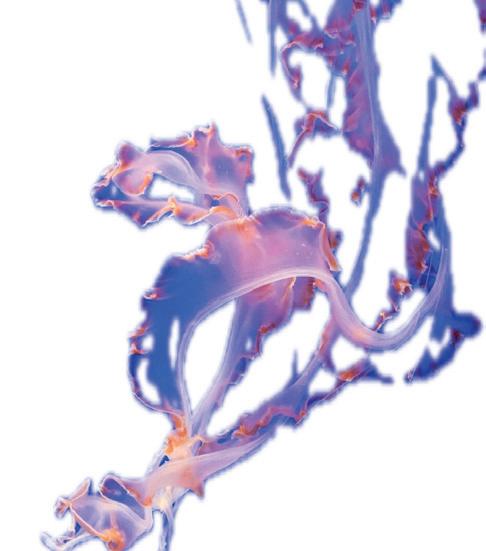




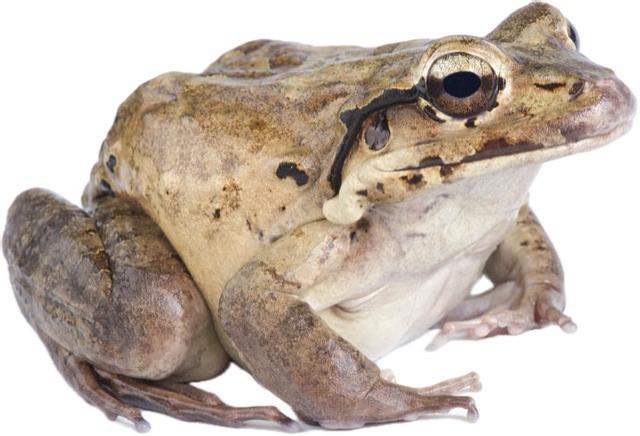

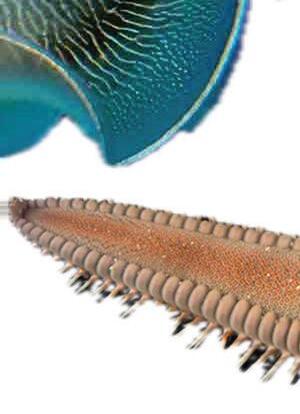
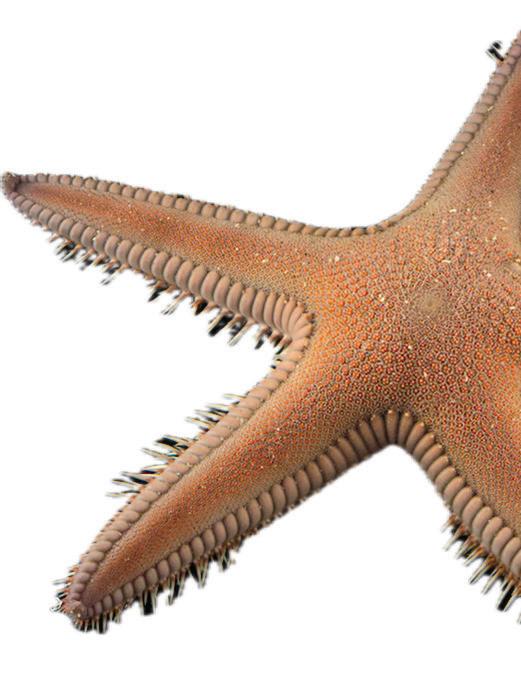
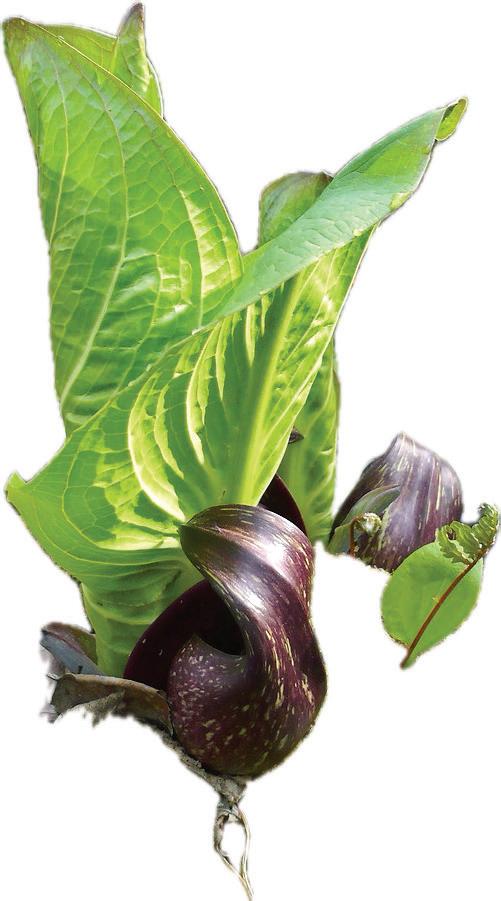
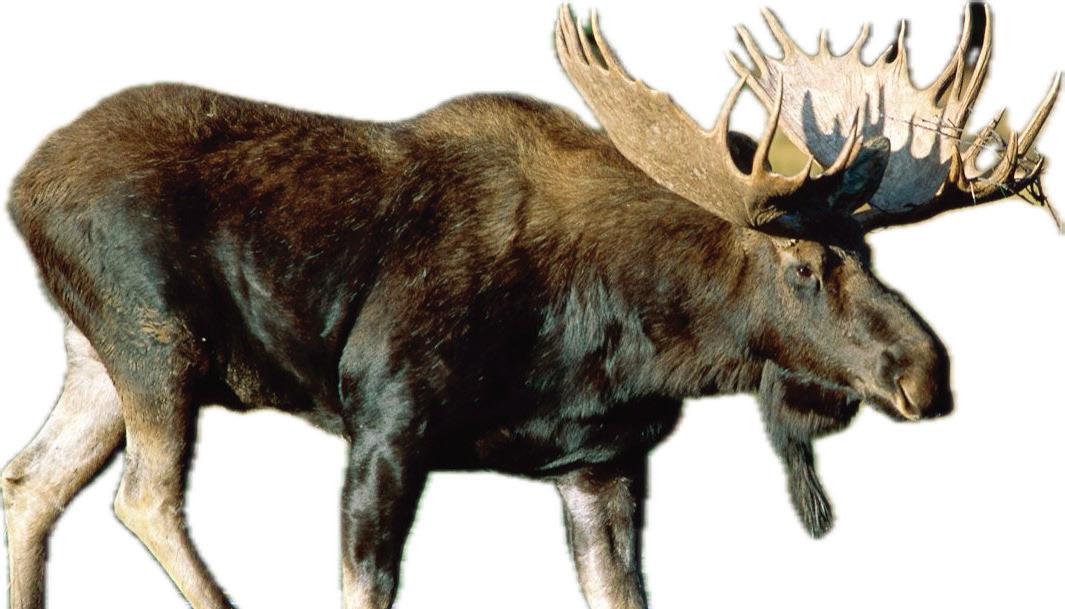
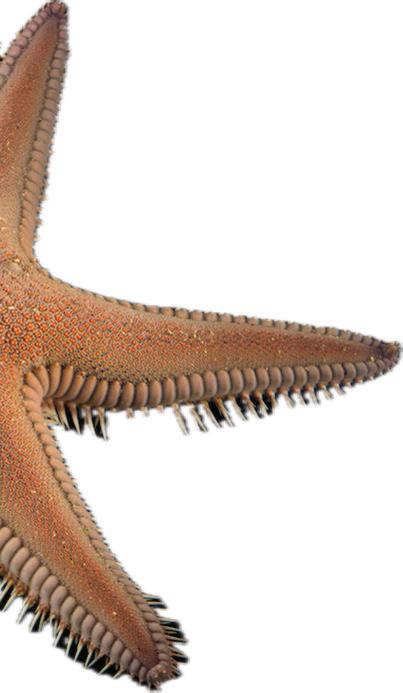
Words by Eleri Denham

The naming of things is a surprisingly contentious business. In fact, in the scientific realm, names are notoriously a source of tension and dissension. The language we use shifts and changes and so becomes nebulous, murky as a vernal pool with its layers of mud and silt. We subdivide, speak of cultivars and varietals, and yet despite this ever-increasing intricacy, our lexicon remains maddeningly imprecise when applied to the limitless diversity that exists in the world.
Names are intended to clarify, but they can be deceptive, too. Jellyfish, cuttlefish, and starfish are not fish. A mountain chicken (Leptodactylus fallax) is not a chicken, nor even a bird, but a type of frog (which does not live only in the mountains). We have ended up with a vocabulary of species that is as full of contradictions as the natural world itself.
Our assignations come coded with positive and negative connotations, sometimes subtle, sometimes not. Consider two common names for Symplocarpus foetidus: “meadow cabbage” and “skunk cabbage.” Which would you choose to have in your garden?
The categories we create are subject to the limitations of our understanding. A great many taxa have been reorganized since western science first set about classifying the natural world, and many probably will be again. And, of course, our words for living things are profoundly reliant on context: an “elk” is a completely different animal depending on whether you’re in Europe (Alces alces) or North America (Cervus canadensis). Names, then, do not always illuminate; they can also muddle and confuse and exclude.
The problem of names—their multifaceted complexity, their inherent slipperiness—is not confined to the ecological world. Humans are far from immune. We have titles and labels applied to us that do not align with what we know to be true. We may be fitted into a weaponized taxonomy, designed to excise us from the garden of mutual thriving. And out of the vast array of words available for us to choose for ourselves, so many of us will struggle to find one that feels like home.
We give names to nature with the best of intentions. But what nature gives to us is a freedom from names altogether. To sit under the canopy of tall trees, on a carpet of moss, breathing in the fresh green alive smell of the earth, is to find something that exists in defiant opposition to simple categorization. Our forests and mountains and wild coasts make no demands for the perfect word or all-encapsulating description, and instead reflect us back to ourselves: each of these environments is a thousand things and more, and so are we.
Humans may be obsessed with classification, but nature is less concerned with such things. It will allow us the grace of being nameless. It provides a reprieve from the human world’s insistence that we identify ourselves, that we permit ourselves to be evaluated and labeled. Nature can provide a shelter from examination and distortion into some other image by the lens of someone else’s vision.
Come as you are, the forest says. Leave all of your names, new and old, the ones you’ve outgrown, the ones you’re still growing into. Set them by the stream and reclaim them again when you leave. You have no obligation to them here. Here, in wild spaces, the only mandate is exuberant existence. And your place is waiting for you.
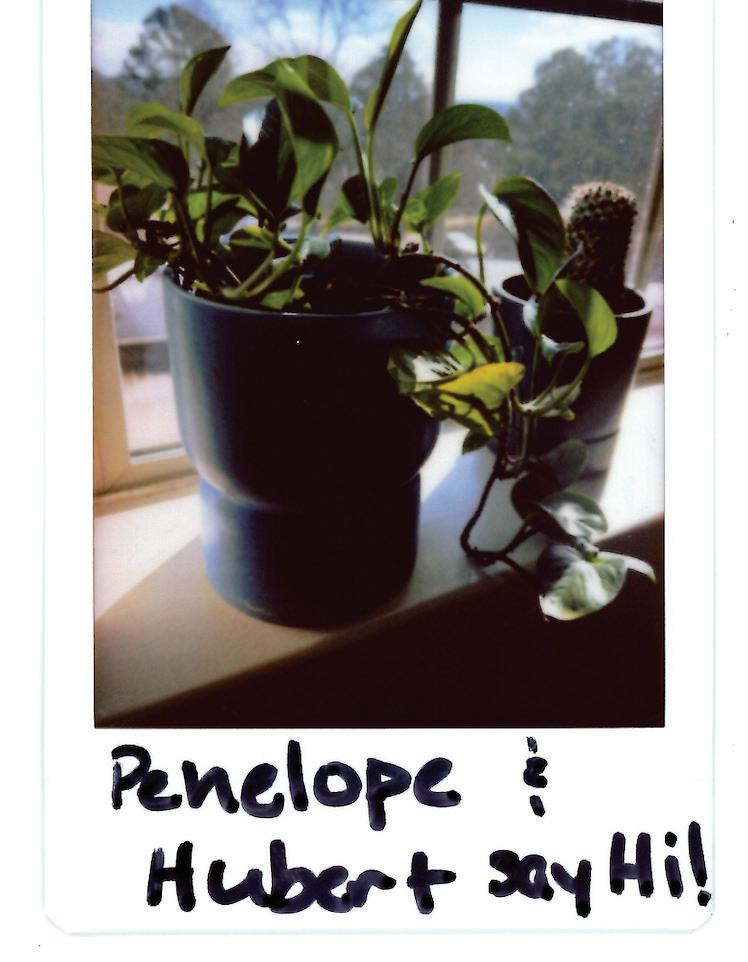
Words and Photos by Rhyker Dye



alling all former children with muddy knees, the ones who spent hours looking for four-leaf clovers in the backyard and climbed trees with no real plan for getting down— you beautiful kindred spirits.
We knew then that the natural world held a secret restorative power; but if you’re anything like me, then you may have lost your connection to those ley lines. Let’s reclaim our childhood whimsy and get reacquainted with ecological magic together.
Horticultural therapy (HT), or as I like to call it “being a loving father to a host of verdant children,” refers to the practice of enhancing your mental well-being through active involvement in plant care. Derived from Latin, “horti” translates to garden, while “culture” is the child of the verb “colere/cultus” meaning foster or cherish (let me have this, guys. It’s not everyday I get to use my classics degree!). HT is all about using leafy life partners to bring us from the brink of existential dread to a place of healing.
The first official documented use of HT is credited to Dr. Benjamin Rush—yes, the same dude you learned about in freshman PSYC. In his book, MedicalInquiriesandObservationsUponDiseases oftheMind(1812), Dr. Rush observes that patients
who spent time “digging in the garden” were more likely to recover from episodes of mania. He attributes this to the laborious and skilled nature of gardening, believing that participating in “new actions, both corporeal and mental,” allows the mind to safely divert from the body to process emotion (Rush, 1812). In other words, the physical effort and technical knowledge needed to care for plants offers a constructive way to get out of our heads and address emotional distress.
While horticultural therapy would rise in popularity among rehabilitation centers after world war ii, evidence of grassroots HT programs can be found among Queer communities even earlier in the 1930s (we just love to be ahead of the curve). Cedric Morris, a renowned artist and horticulturalist, founded Benton End in Hadleigh, Suffolk as a sanctuary for Queer artisans to live and learn in a small, welcoming community. The arts school offered a safe space for LGBT+ individuals escaping legal and social persecution, as well as soldiers and other trauma survivors in search of healing (Skellorn, 2025). Students of Benton End studied a myriad of arts from painting to literature, but all students were expected to cultivate and care for the large botanical garden.
The garden was characterized by uninhibited acceptance and collective responsibility where students dirtied their fingernails and discussed life, politics, and the arts (Shopland, 2018). Sheltered from the bigotry of society, Benton End’s gardens offered a means of productive escapism. Preserved as a historic site, Benton End still stands today as a testament to Queer survival and our community’s intimate connection to the natural world.
While we all have dreams of living on a Benton End-esque commune, modern horticultural therapy often finds its home in community garden projects and the windowsills of overpriced studio apartments. Traditional therapeutic practices historically overlook, ignore, or outright harm Queer folx, leading many to explore unorthodox methods of care within our own communities. The Queer Ecologies Garden Project, birthed through a partnership between the Alice Austen House and the New York Restoration Project, serves as a gathering space for young Queer individuals. The garden grounds are maintained by local Gaystraight alliance club members and facilitates identity exploration, creative expression, and relationship building (Alice Austen House, 2023). The gardens are a locus of healing opportunity, where young folx can find peace and support through intentional labor, group discussions, and therapeutic self-reflection.
My personal experience with horticultural therapy has been a more individualized practice. Years of convincing my husband I just need one more plant at the farmer’s market, being gifted unwanted plants at my uncle’s funeral, and inheriting plant cuttings from my grandma has molded me into a proud Plant Dad™. The kinesthetic quality of HT pairs well with my specific cocktail of neurodivergence. Whereas talk therapy and medication treated many of my symptoms, working with my plants allows me to process my feelings in a way that dialogue never has. With a strong lack of self-preservation, HT adds accountability to my life.
The responsibility of caring for my plants adds value, structure, and justification to keep going. I have to stick around and make reasonable choices so that my plants, who cannot care for themselves, thrive. The physical attributes of my plants remind me to care for myself too, offering opportunities for habit stacking. I have trouble identifying needs within my own body, but I can see when my plants wilt, brown, or crowd their pots. When I water my plants, I toast alongside them with my own glass of water. Then, I open all the windows and shades. The hydration, light, and fresh air work their magic on all of us, but it’s not something I would do just for myself.
Horticultural therapy challenges me to self-reflect as well. Even the healthiest plant needs to be pruned and repotted every once in a while. When this occurs, I carefully evaluate my own emotional state. As the scissors snip at dying leaves, I ask myself: “What thoughts and feelings do I need to consider and let go?” As I gently break apart old soil to replace it with something more airy and nutrient dense, I ask: “What am I keeping around that is no longer serving me? What growth am I avoiding for the sake of familiarity?” In this way, the plant becomes a tangible manifestation of my rather cloudy and abstract mind.
While individualized horticultural therapy can be used by anyone, it might be particularly helpful to those with alexithymia, who have difficulty identifying emotions in their own body, and those with chronic illness, who have difficulty recognizing the body’s physical needs (yes, my fellow auDHDers and lupus butterflies—this one’s for you!). HT provides a way for folx to take agency in their own mental and physical wellbeing beyond the walls of medical or therapy clinics.
Now, I’m sure it’s not a surprise, but not all holistic medicine is created equal. Rest assured, we believe in peer-reviewed research here; and horticultural therapy passes the scientific vibe check.
Individuals participating in HT consistently demonstrate decreased anxiety, depression, and stress when compared to those in control groups (Kam and Siu, 2010). Studies overwhelmingly support that an intentional connection to nature improves mental and social well-being. HT fosters feelings of autonomy and self-acceptance, while also promoting a positive outlook of relationship with others (Kidd and Brascamp, 2004). Science wants you to pirate plant cuttings from the floor of home depot and propagate a small jungle in your living room!
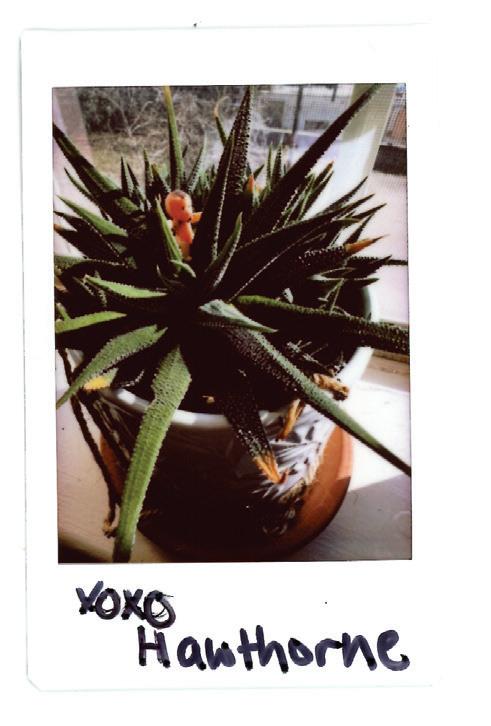
Ultimately, horticultural therapy isn’t really about plants. It’s about you. Your connection to yourself. Your connection to the wonderful wild world around you. And the magic that flows between all living things. Whether you are a dandelion fighting its way through cracks in the concrete or a pampered pothos living its best life at the indie coffee shop, let’s bloom together.
Interested in implementing your own horticultural therapy?
Awesome! Here’s a quick start up guide inspired by the Horticultural Therapy Institute (Bonazzi and Feebles, 2022):
• Shop local if you can. You’ll feel more connected knowing you are participating in your community. There’s the added bonus that you can ask questions about plant care from someone that loves horticulture.
• Start easy. I love Callie, my rattlesnake calathea, but she’s a petty bitch. Her sister, Eleanor the pothos, is a more timid child and better for beginner plant parents.
• Make your adoption official. Caring for your plants feels more important if you givethem names, pronouns, and personalities. After all, they are a living creature just like you!
Guiding Mantra: Irecognizethevalueinalllivingthings.Ihavelove tosharewithotherlivingcreatures.

• Place your plant. Be intentional: think about what spaces in your home are most welcoming and suited to its needs. Reflect on your own space in your home. Does it suit your needs?
• Give it a makeover. If it’s the plant’s growing season, repot it into a larger and more personalized pot. (If it’s the plant’s dormant season, keep it in the original pot; but you can still place it inside the larger pot for aesthetic and symbolic purposes!)
• Introduce your new partner. If you have family or pets, formally introduce them to each other. If you live alone, post your new friend on social media or share within a group message.
Guiding Mantra: I have agency and the responsibility to createawelcomingenvironmentformyselfandothers.
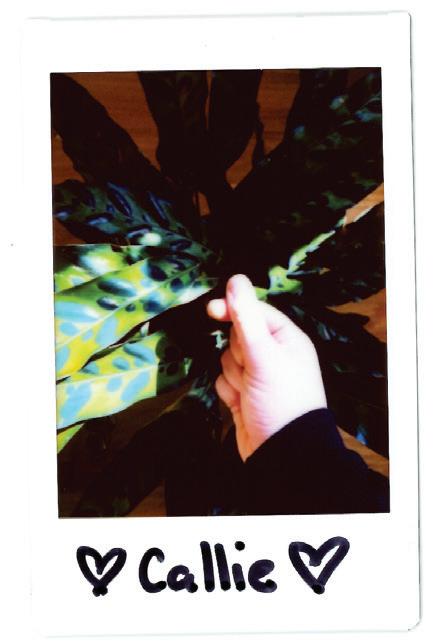
• Be vigilant of your plant’s water needs. When you water your plant, ask yourself what cues your body gives when you are dehydrated. What other biological cues should you look for in your plant and yourself?
• Give your plant sun and air. A couple times per week, open windows to let your plant get fresh air and sun (even if it’s cold). Enjoy the weather alongside your plant too.
Guiding Mantra: I am responsible for the physical well-being of myself and creatures in my care. I am actively looking to fulfill the needsofmyphysicalform.
• Talk about your day. When you have time with your plant, tell it anything and everything. Release any internal thoughts you have to your trusted friend. They will never spill your secrets (and they give great advice)!
• Enjoy the silence. Learn to appreciate coexisting in a space without urgency, productivity, or speech.
Guiding Mantra: I am willing to share myself with others. I am capableofexpressingmythoughtsandemotionsinameaningfulway.
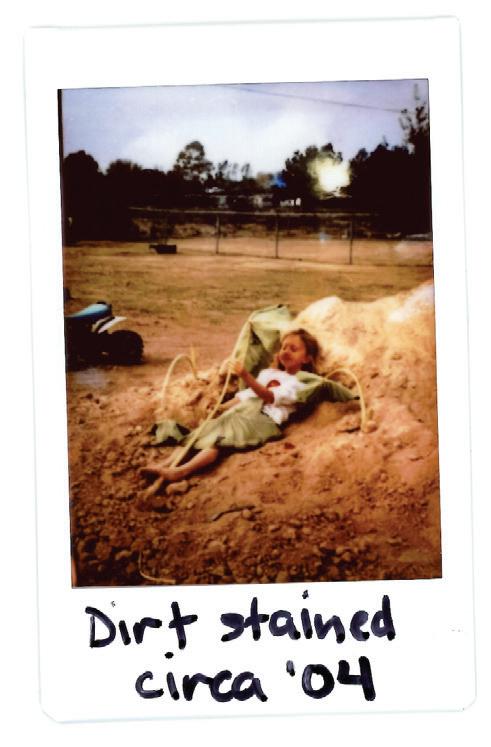
• Prune dead leaves. Gently snip away decay or browning leaves, knowing that letting go is part of growing. Talk your plant through the process by acknowledging what you need to let go of too.
• Repot as needed. As your plant grows, its needs change. Be intentional about your plant’s upgrades and changes, reflecting on your own growth and changing needs as well.
Guiding Mantra: I am capable of healing and growth. I am not defined by my damages and can take steps towards healing. I can acknowledgeandletgoofthingsthatnolongerserveme.
Individualized practices in horticultural therapy develop over time and vary from person-to-person (and plant-to-plant!). Allow yourself the grace to struggle, fall behind, explore, and enjoy the process. May your fingernails be dirty and your mind be clean!
Cherríe Moraga Queering Environmental Activism
Words by Casper Orr
“If nobody ever sees me, how will I know how I look? How will I know if I scare them or make them mad or...move them?”
Author’s note: Cherríe Moraga changed my life as a Disabled person, a Queer, and an activist. As a Disabled Queer, I had always been used to the feeling of shame and fear of taking up too much space; that my “invisibility” was better for everyone. Even as a Queer person, there isn’t always a place for us at the table if the table isn’t accessible. For years, I had erased myself from conversations before anyone else had the chance to. It wasn’t a coincidence that a month after I read Heroes and Saints, I bought my first collapsible cane. My point being; my disability doesn’t make me weak. It doesn’t make my voice any less worthy of attention. My mobility aid only makes me stronger. They are what make me able to fight for a world that we can live in together.
Iwas first introduced to Queer Chicana environmental activist Cherríe Moraga in a freshman literary analysis course where we read Heroes and Saints. Moraga’s award winning screenplay follows a Hispanic working class community in California being poisoned by lethal pesticides used by nearby produce companies. Moraga had written her award winning screenplay in response to the usage of vicious pesticides in McFarland, California, and the outbreak of childhood cancer and life altering disabilities caused due to overexposure to these dangerous chemicals. Subsequently, disability and disability activism are a recurring theme in Moraga’s environmental screenplay. Despite environmental activism having incredible overlap with disabled politics and issues, mainstream environmental activism lacks a coherent, arm-in-arm solidarity with its most vulnerable populations. Moraga Queers environmental and disability activism and how we view it by portraying them as intersecting and completely overlapping issues.
Much like racial and ethnic minorities and the working class have been exposed to dangerous environmental conditions, the disabled community has been historically subjected to unsustainable living conditions and societal constructs. But even in an attempt to fix these issues, disabled people have largely been underrepresented in their own activism. However, Cherríe Moraga Queers environmental and disability activism with her Disabled protagonist, Cerezita. While using her screenplay to advocate for environmental justice, Cerezita is not only a force for environmental justice, but also an encouragement and reminder to the able bodied and minded activists to take up arms with some of their most disenfranchised neighbors. She becomes a strong reminder that without solidarity, our voices get easily lost and ignored.
Cherríe Moraga Queers the expectations of advocacy by providing a voice to Disabled people and including them in environmental activism and liberation. The recurring idea of invisibility and the Disabled person’s relationship to the feeling of being hidden away or silenced plays a significant role in Heroes and Saints. Moraga places an emphasis on the silenced voices of the disabled community
because of the harm that silencing those voices inflicts on intersectional liberation. Autonomy within environmental justice becomes a big issue in the conversation around a lack of disabled people in society. It is the question of control and who has it; who controls society? Who controls the narrative?
It is no secret that Disabled people are often pushed into the margins of society. They are provided with little resources and often have very little community. In Heroes and Saints, we see that Ceretiza is affected by a a society that “others” the bodies of Disabled people in Heroes and Saints. She is forbidden to leave the house during the day, the only people who ever see her are her family members and her priest, Father Juan, and the townspeople regard her more as a legend than a young woman. It is this trait of obscurity that creates an environment in which Cerezita can sneak away at night to radically protest for those like her who had been martyred. The erasure of the Disabled community both creates more division in the fight towards liberation and allows for Disabled people to conduct forms of radical and shocking protest without the discovery of their identities.
Moraga writes strong Disabled characters, empowered and daring. Cerezita is not a saint, not the martyr whose life means more in death than in life. She lives the life of a hero, of an activist.
Moraga’s Heroes and Saints tells a universal story of environmental and disability advocacy, ableist societal structures, and their relationships with one another. Moraga’s focus on representation opens up dialogue for intersectional disability advocacy outside of the ableist ideas around collective action. By using the ‘invisible’ and silenced members of society, Cherríe Moraga displays disabled people in disability advocacy as not only equal to the able-bodied, but better equipped for defending their right to exist. By Queering ableist expectations of disability activists in environmental action, and disability in general, Moraga forces the reader to question our current forms of advocacy and how they still uphold the bigoted structures that we claim we want to abolish.
by Jalisa Sousa-Silva


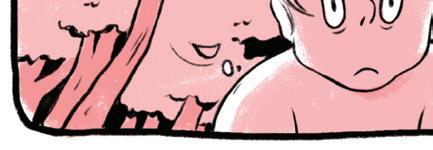
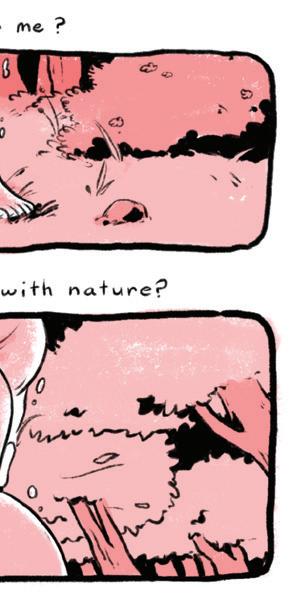
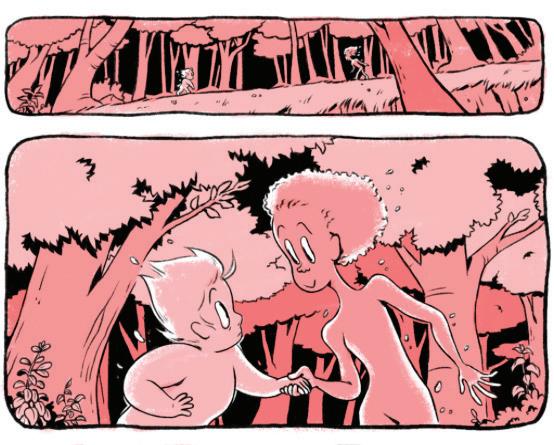

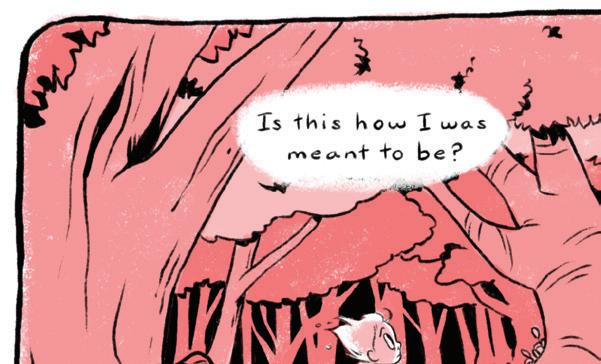
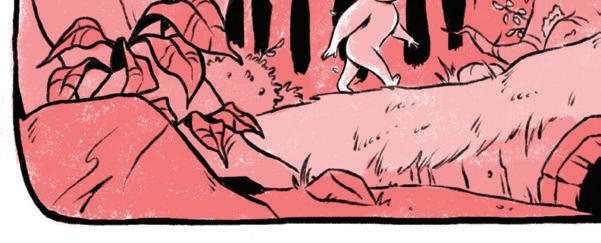


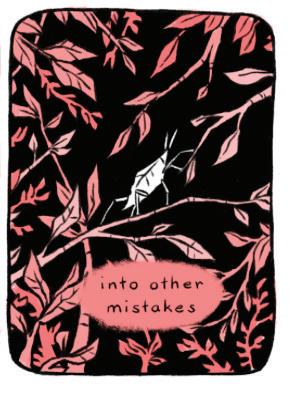
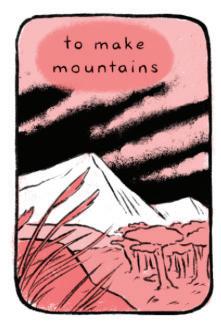
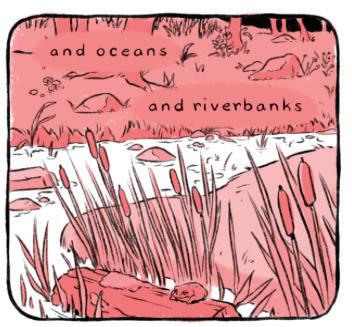

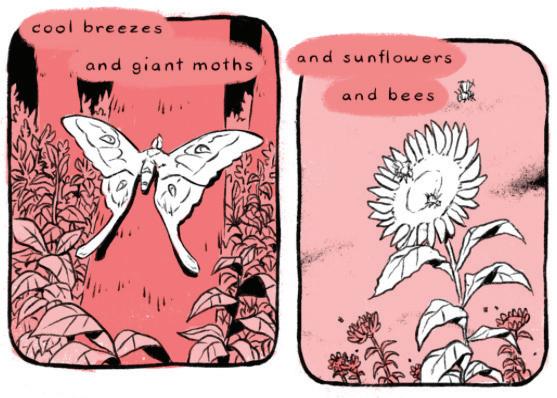
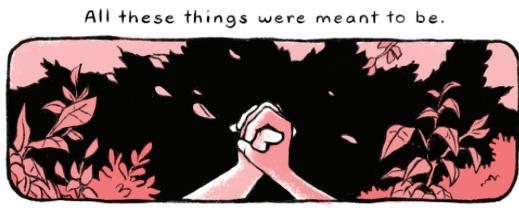

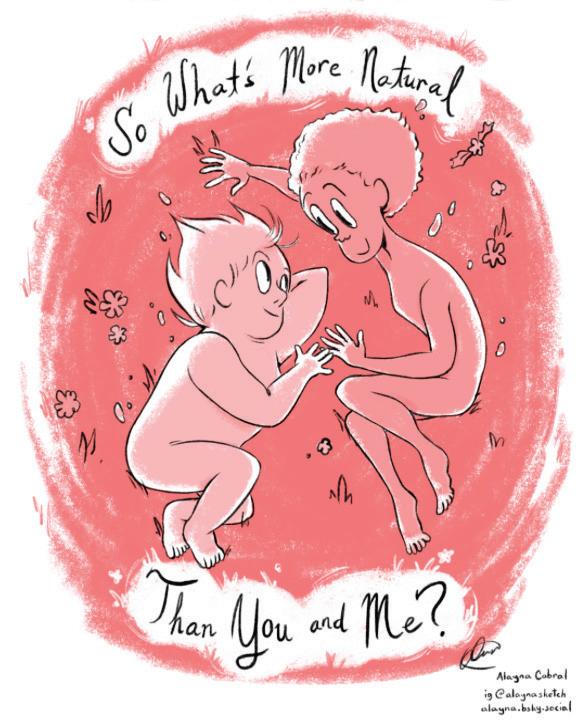
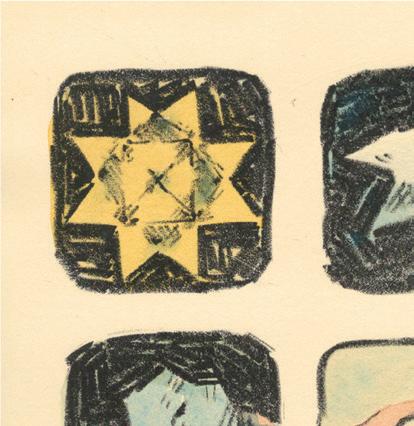


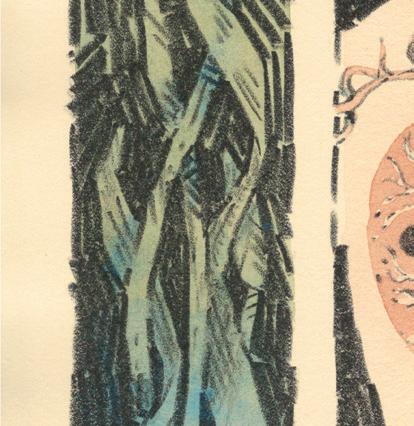
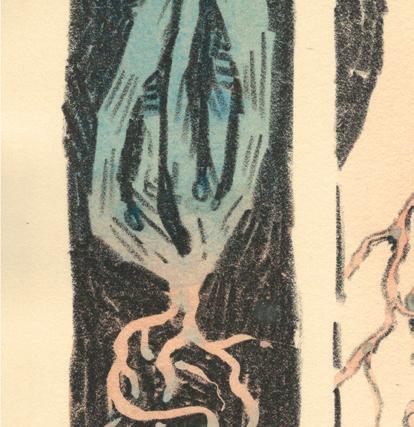
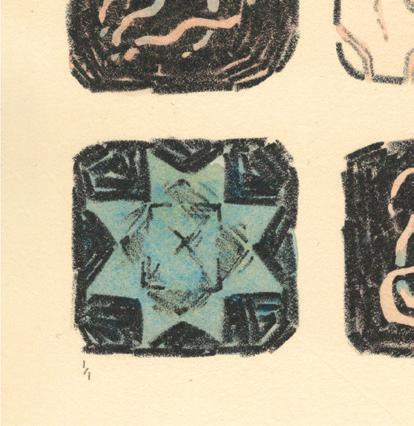
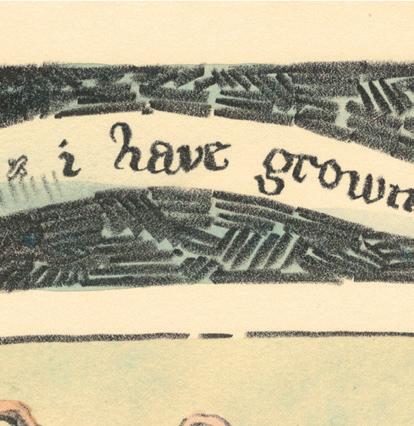
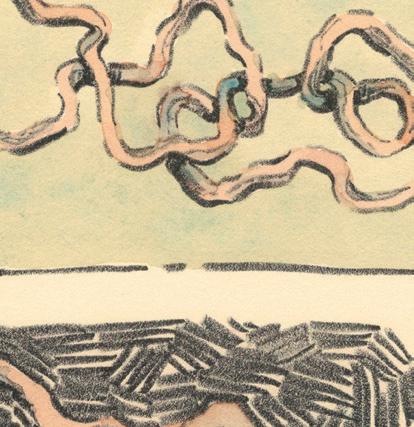

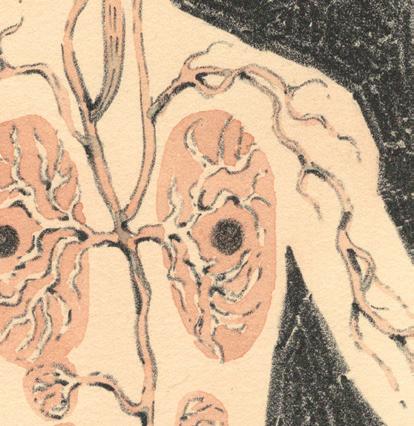
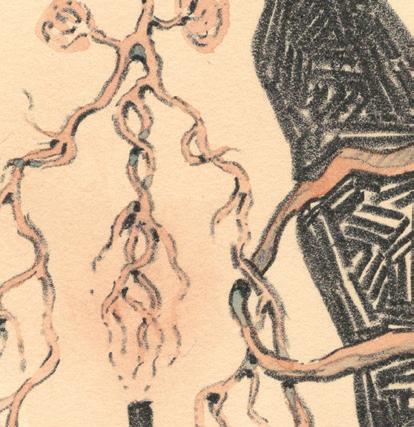
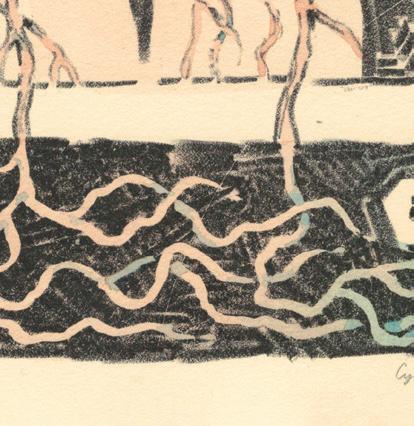
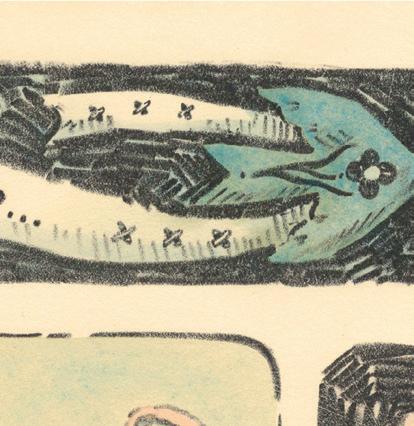
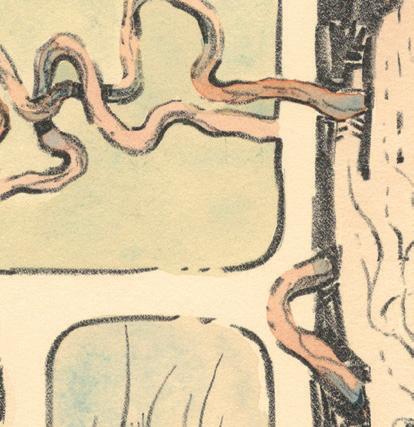
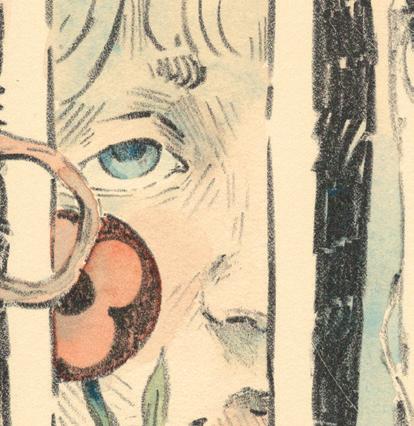

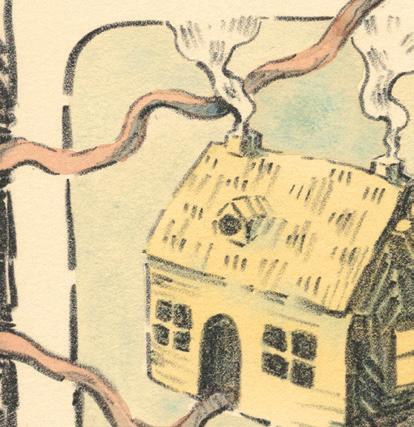

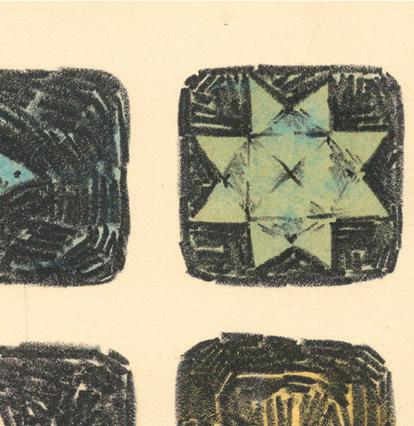
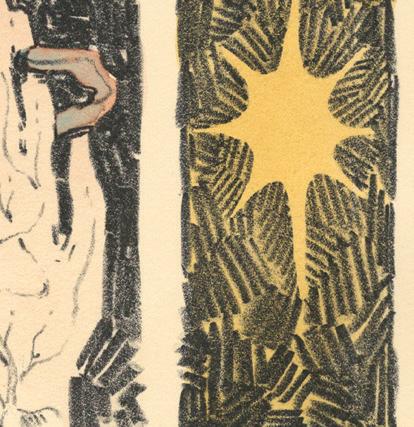
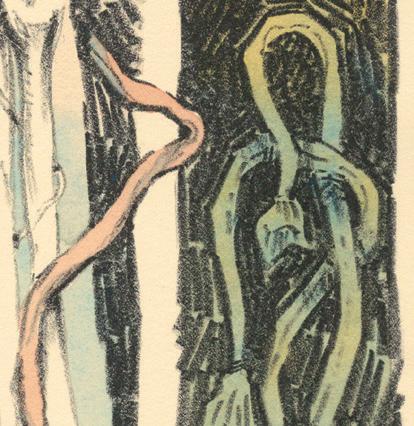


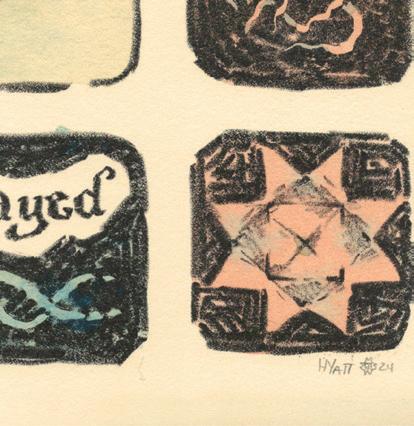
“Cycles II” is a prayer for a life lived as a Queer, Trans, Disabled person, and the cyclical nature of that existence. What better way to capture the feelings of the body, of change, than through stone lithography? You spend hours graining a slab of ancient limestone until the memory of its previous drawing is sanded away. You spend hours drawing on it with crayon, one small mark at a time. You get to know the stone in this time, it becomes part of you. You etch and you wait and you ink and you etch and you wait. Then wash, ink, print, wash, ink, print, wash, ink, print, over and over until the body of the piece is whole. Printmaking has its own cycles. It is laborious. The body and its movements become part of the work. The aches and pains from the labor linger in your muscles, your tendons, your bones. The work becomes part of your body in turn. I experienced my gender and sexuality as something cyclical as well, an act of both active exploration and gradual emergence of the self. It was a push and pull of attempting to
identify something unnamable and changing things about myself in response. A name, a pronoun, a haircut, a surgery. Much in the same way, disability is something that I came into as well. A pain here, a test result there, lost time, lost relationships, lost abilities, adaptation, mobility aids, community, joy. Building our identities up, breaking our identities down. Our bodies building themselves up, our bodies breaking themselves down. It becomes a natural rhythm, these cycles of growth and decay; they are not necessarily good or bad, but in some lights beautiful in their reality. You begin to relate to the stone that wears down under the river’s current, the irises in your grandmother’s garden that shrivel up at the end of each season. You hope that, like them, you’ll become a part of the river bed, that you’ll bloom again in spring. If the natural world can flourish through its changes, then so can we. These cycles are part of the Queer ecology of the self. I can think of nothing more natural, more holy than this.
Type: Print
Technique: Stone Lithograph with Watercolor
Size: 12"x18"
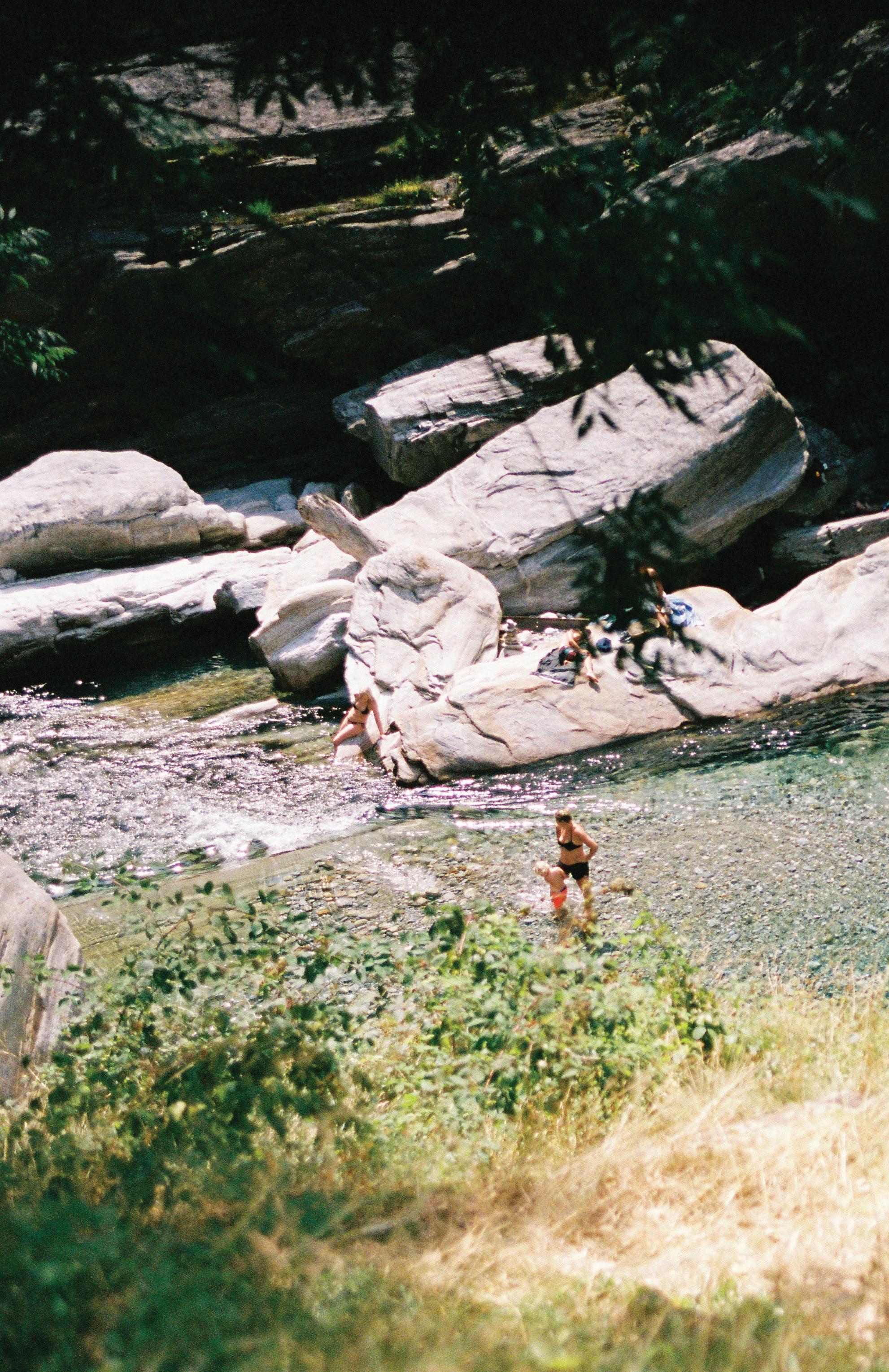
DO YOU WANNA SEE THE MIDWEST WITH ME: A DIGITAL DIP INTO QUEER RURAL
LIFE Words by Brie Coleman
Growing Wild: A Conversation Between Two CUNTry Bumpkins
Words and Photos by Bailey Bauer and Grant Kanak
Contrary to what is whispered among the heteronormative gingerbread men that often find themselves in positions of power in america, rural areas are some of the Queerest places that a person can saunter into. The attributes that allow Queer people to accept themselves and live outside of any prearranged box also make it possible for them to use their open-mindedness and creativity to work in animal husbandry, farming, and to thrive in pastoral environments.
Queer community is everywhere because Queer people are everywhere. Specifically Lesbians. Midwestern. Butch. Lesbians. Just in case you need to hear it one more time. Lesbians. Lesbians are everywhere. One such lovely, self-proclaimed Butch Lesbian Jennifer Rowray, better known around these parts as CowboyJen, knows a bit about cultivating and sustaining community as a farmhand in Iowa. “The Lesbian community has surrounded me with role models. Activism has been my thing. I was a PFLAG president for 10 years, I was on Cedar Rapids’ Pride board. I am generally one of those people that if I want a space, I just make it. I want to meet more Lesbians, so I have a Lesbian book club. I want to bring more LGBT people into my world, I just make that decision and produce events. And that’s me. If I decide I want to promote or produce something that will bring in LGBT people, then I’m going to do it. In general, that leads to those connections. That’s kinda my experience, if I want it, I just make it.” Rowray says. With her strong belief in volunteering in her community, CowboyJen has made Iowa more than just corn and soybeans. She has been a part of growing flourishing Queer spaces, atwixt the pumpkin patches and pig races. She has used her platform to give young Lesbians a mentor, someone they can relate to and respect as a fellow Sapphic human.
“Thefirstdaywewerehere,myDadandIput upaflagpoleandweranarainbowflagupit. Didn’teventhinkaboutit.Theamericanflag,the rainbowflagandtheIowaflag.”
–JenniferRowray
While the american flag has in many ways become a symbol of hate often used in rural areas by those that have a strange obsession with eliminating Queer rights and existence, specifically the Trans community, it isn’t the flag itself that is the problem. The flag and this country are meant to stand for
Words by Brie Coleman
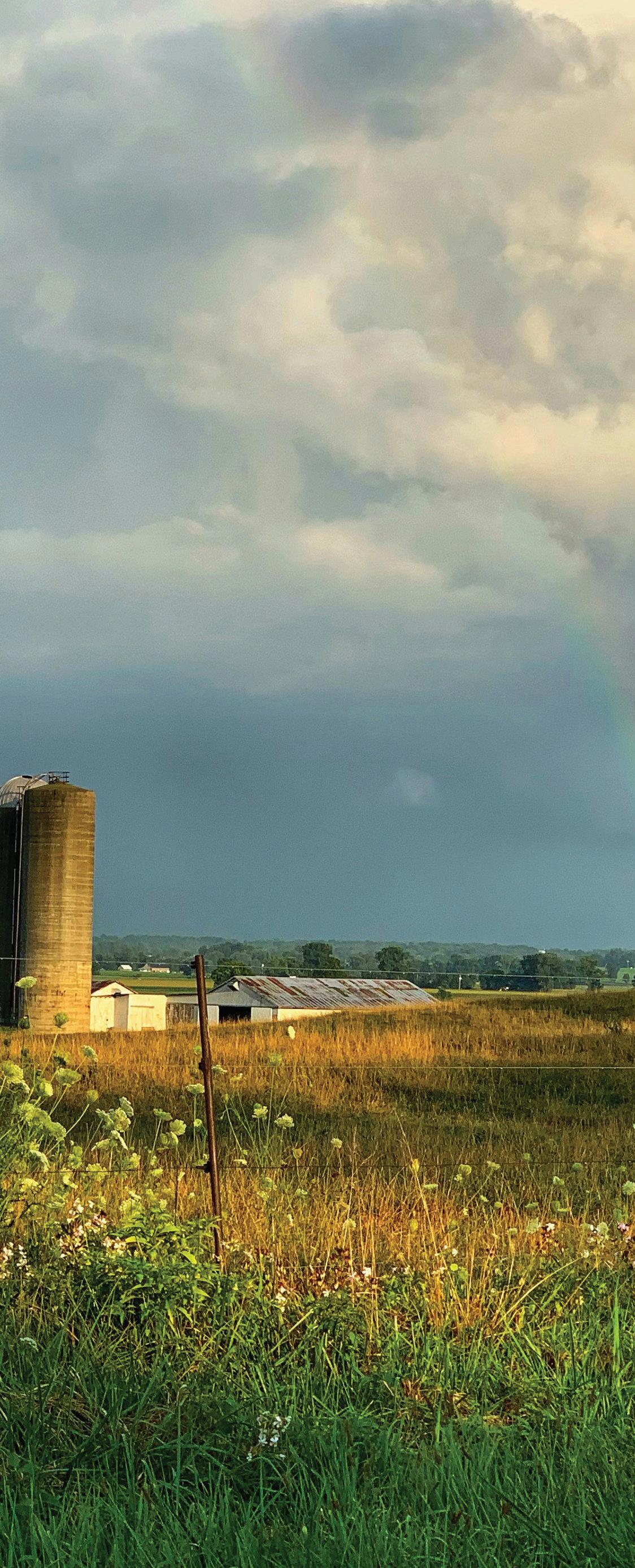
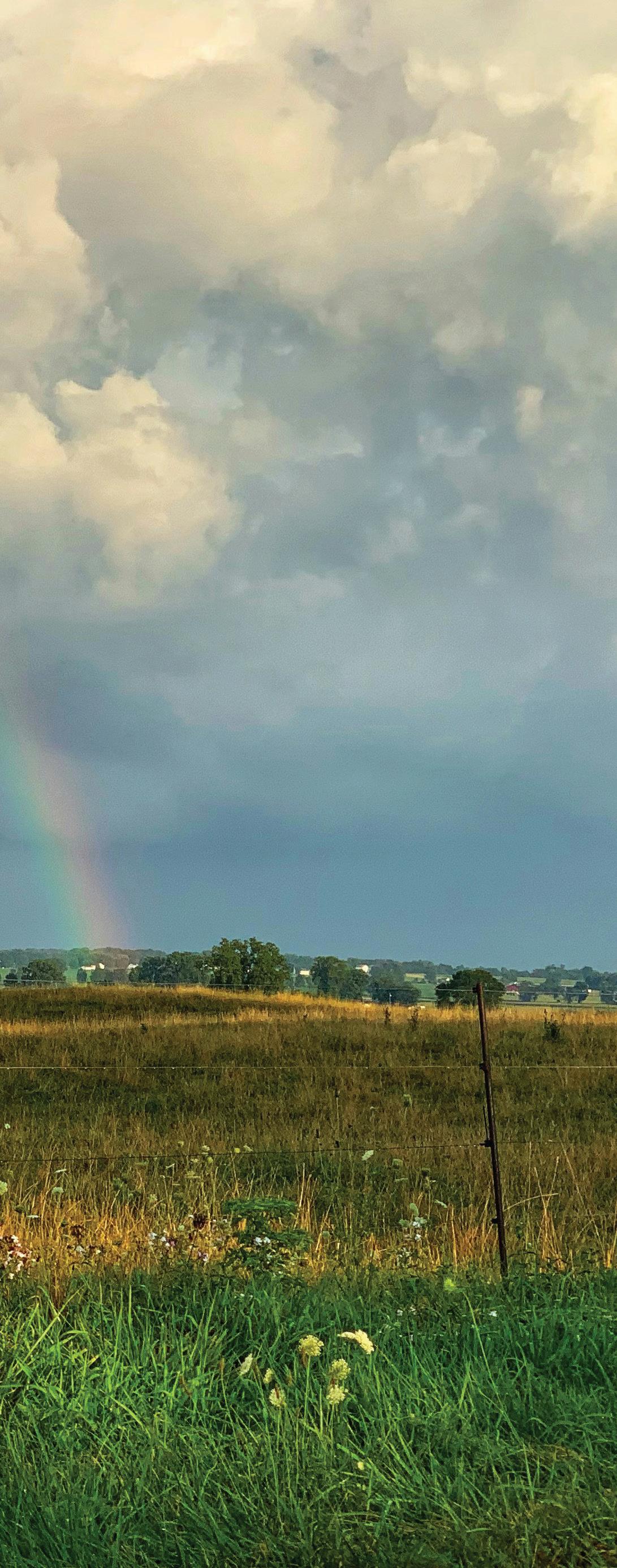
freedom, democracy and liberty. Queer people and all people that embody these ideals are the ones that should speak for this land and feel represented by its flag. Defiance against the status quo, which is inherent to Queerness, is an act of true patriotism.
Queerness is about more than who we choose to kiss on the mouth. It informs the treatment of the animals and the land. Flint Del Sol, known by his social media followers as justflintisfine, may be a rural convert but he has jumped right in with two muddy boots. “When farming and husbandry are engaged with from a place of compassion and curiosity we have a chance to learn from people and sustainable practices that have been around for thousands of years. For me, Queer as a political identity means a personal hard look at what intersectionality really means in rural places. Who is growing and harvesting our food? Who’s been historically kept out or forcibly expelled from this kind of work and living? Who benefits the most from it now?” Del Sol says of his exploration into farming culture and the exclusion of Black, Indigenous, and migrant workers from land stewardship. The same way that the government has suppressed Indigenous farming practices for hundreds of years, Queer people too have been pushed out. What they don’t seem to understand is that Queerness and nature are inherently intertwined. When Queer joy is poured into gardens, animal care, and rural communities, the world blooms and prospers. What started as a way for Del Sol to get a fresh start in open pastures has led him to allow nature to lead the way towards trusting in his “internal knowings and instincts”. In his foray into country living, Del Sol has found “It mirrors what we heard from Leslie Feinberg in Stone Butch Blues: ‘Nature held me close and seemed to find no fault with me.”’ Through his transition from an “inside cat” to “exploring the outdoors” Del Sol has discovered nature to be both Trans affirming and a source of gender euphoria.
“I’veheardfromdozensofpeoplewithsimilar experiences:Lesbianhens,Asexualroosters, andevenTranschickenswhogrowbigcombs andpronouncedtailfeathers.Natureissomuch messierandGayerthanincuriouspeoplebelieve.”
–Flint Del Sol
Del Sol will soon begin his nomad era as he and his husband take their connection to nature on the road in their new roaming home.
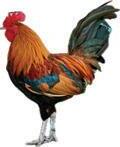
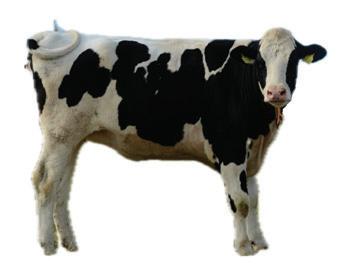
Gays and rural america go together like biscuits and gravy. It is a common misconception that the hets, given their obsession with rules and all things complacent, are the best people to be farming the land. “Farming doesn’t follow corporate rules and I love it. I didn’t realize how much character I had to build in the physical department until I started farming. As I built a relationship with the chickens’ daily patterns, I found myself craving a deeper connection to something bigger than myself. My Queerness keeps me grounded on a level that makes me unafraid to work hard and get dirty while knowing when it is time to remain soft and sit still enough so that a small animal can learn to trust me,” says Bri the ZenChickenLady as she reflects on how she has sprouted since embracing rural life. Celebrating a life of sobriety, nature has brought Bri to a place of strength where she is deeply connected to both her animals and the universe. She and her partner “help supply our community with eggs, and the animals keep us actively connected to the earth and each other.” They are working outside of mass-market production like other marginalized groups have done before them. This resistance to allowing agriculture to be a rigid, exclusionary system can be seen in communal and backyard gardens. Queer life refuses this same authority. Queer people are a source of insight into how to treat animals with “extra compassion”, given that they are a resource for us to maintain human life. There is a deep connection between the nourishment of our bodies and souls, as Queer people farm the land and create a deeper understanding of what it means to thrive, rather than just survive, in dayto-day life.
“MyQueernesshastaughtmetonoticenature; whatitneeds,howitchanges,whyitdoeswhat itdoes,whoitaffects,howourexistenceimpacts itall.TheQueertendencytorecognizepatterns, andtoappreciatedifferences,hashelpedmeinso manywayswithnature.”
–BritheZenChickenLady
Chickens are super Gay. That is a plain and simple fact. The hegemonic concept of what it means for something to be “natural” is completely and totally backwards. The truth of the natural world can only be understood once all imposed notions are released. “Nature doesn’t give two shits about ‘natural’ and I think that’s amazing. Every time we think we understand the ‘rules’ of nature, we’re humbled. Hell, I have a Trans chicken that came out the same year I did, if that doesn’t perfectly sum up how messy and complicated and beautiful nature is, I don’t know what could,” says Tea Anderson regarding how animals consistently defy human expectations. There is so much that human beings could learn from nature if they would allow nature to teach them how to make their own rules.
“Naturehasnobinary,nonormsorstereotypes or hard lines. The moon is a Lesbian and everyQueerpersonunderstandsthatmagic inherently.”
–Tea Anderson
Rural communities are rooted within what it means to be Queer. While it may at times require some digging, it is clear, once uncovered, that agricultural areas are full of rich, vibrant Gay communities that already are in every single small town and country fair. Queerness is natural. Queerness is beautiful. And Queerness is not an accessory organ that can be cut from any part of society. It flows through the plants, animals, and human beings who care for and support our wonderful planet. Queerness does not exist within these human-made and invented structures that the world tries to box us up in. Neither nature nor Queerness can be contained.
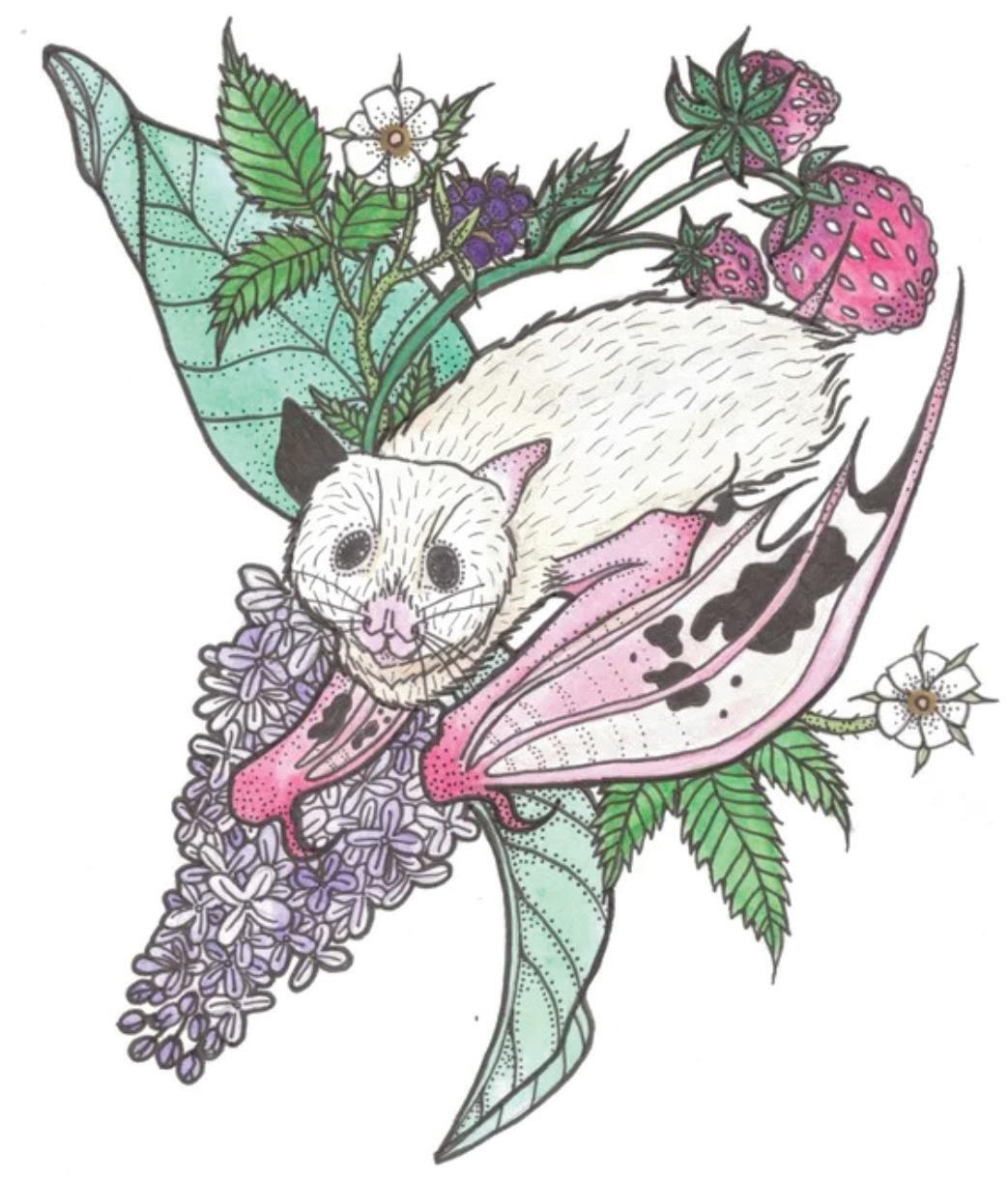
Words
and
Art by Courtney Williams
This his piece depicts a small bat expressing with vitiligo and surrounded by a garland of flowers and fruit native to the North East woods I grew in. I feel drawn to these tiny kin and feel they embody qualities of the natural world that made me feel seen and safe. They were my home in a time I did not have a tangible Queer community, and they will always be a part of my eco-family.

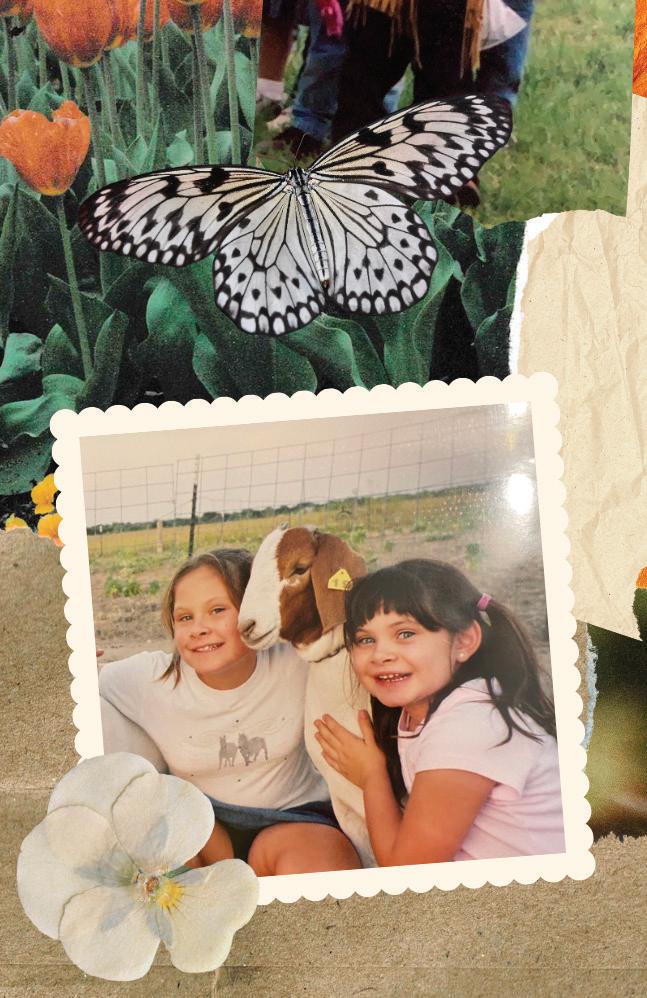
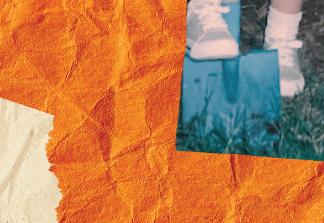
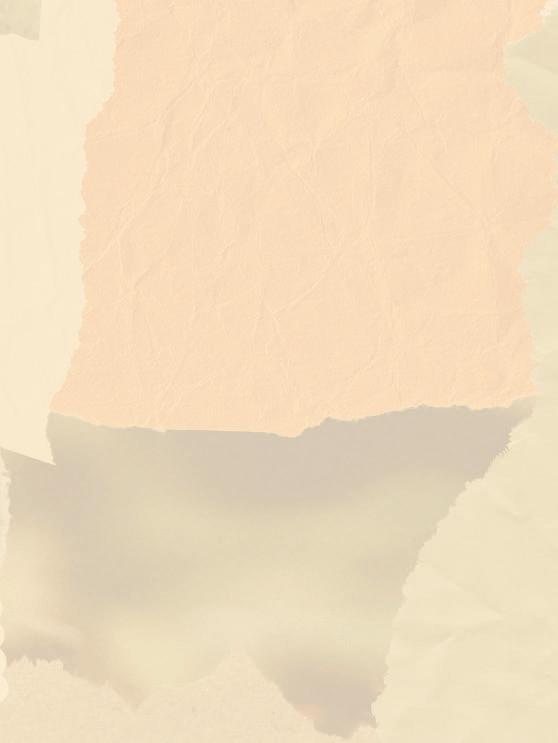

Words by Bailey Bauer and Grant Kanak
In 2014, a group of Queer teens came together in a small, rural, conservative high school just outside of San Antonio, Texas. Two of us, Bailey Bauer and Grant Kanak, lived in particularly remote environments, with Bailey growing up on an isolated goat farm and Grant living deep in Texas Hill Country. Today, we live in Austin, Texas, but we’ve never forgotten our rural roots or the impact it had on our relationship with Queerness.
In 2025, we reflect on how two country bumpkins embrace our origins among an urban Queer community.


BB: Did you spend your early childhood in a rural area? If not, what was it like transitioning to a rural lifestyle as a kid?
GK: My childhood can be defined by the different places I have lived—mostly in suburban San Antonio as a child. We moved a lot, which afforded me with the luxury of getting to explore different landscapes and the disadvantage of being the new kid at school every year of elementary. After numerous moves, my mother discovered a gem way out in the middle of nowhere, Hill Country Texas. Forty-five minutes from the nearest grocery store, my parents found their slice of heaven. I remember shouting and hearing my words echo back. The country was listening to me like the city never did. I loved being loud and free.
GK: What is one of your defining memories of connecting with nature?
BB: I was always more fond of the animals than the land itself, so probably the day I got Speckles. Speckles was a massive black and white goat with horns that curled around to his back. He lived in a pen with my sister’s horse and they were absolutely inseparable. When I got Speckles, he was the runt of the litter, too small to sell at auction. They had put him in this tiny pen where people were throwing their trash. When I asked about him, some man with a 10-gallon hat told me he wasn’t sellable. At 7, I didn’t know that meant they were planning on culling him, but I could tell their plans weren’t good. I started crying and begged my father to save him. He gave the guy $10 and the little dude went home with us. Speckles lived for almost 15 years in the company of my sister’s horse and grew to be the biggest goat I’d ever seen in real life. He was a friend and a real companion. When I was small, he’d even let me ride him like a horse!
GK: Did you ever feel isolated from other people as a child? If so, what helped you or made you feel less alone?
BB: There was definitely some isolation, especially since we literally lived somewhere isolated. But, Speckles and the other animals were a big part of helping with that. I always felt so free around animals. They don’t judge you, they don’t mind when you cry. Usually, when I was angry at my family or felt alone, I would go out to the goat pen. I’d lay there and look out at the huge cornfield in our backyard and the wide, unblemished sky and just realize how much bigger the world was than
me and my problems. The goats would keep on eating and pooping and the sun would keep on shining and there was a whole horizon out there to explore.
BB: How did the rural environment affect you growing up? Do you think growing up Queer in the country affected you differently than if you had grown up in a more urban environment?
GK: Country boy is in my DNA. Growing up was like driving down a country road, an occasional pothole and rougher through some stretches but overall the wide open spaces made it worth the bumps. I didn’t know I was Queer for the longest time, so it was me and the country for all I cared. The only solace for my isolated country bumpkin living was to be outside with nature.
GK: When did you first realize you were Queer?
BB: The first time I remember having a crush on a woman was seeing Linda Cardellini as Velma Dinkley in Scooby-Doo (2002). But, I think the first time I started to realize I was actually Queer was freshman year of high school when a baseball player called me a Dyke at a football game. At the time, I didn’t know he was onto something, but it did get me thinking…
GK: Yeah, looking back on it, I realize now why everyone knew I was Queer before I did. It was because I stuck out like a sore thumb—I didn’t dress flashy at the time but I was definitely polar opposite to the country jesus agenda. Our high school was smack dab in the middle of a cornfield—imagine taking classes in the middle of Children of the Corn—I was not going to assimilate because they didn’t accept me. I was going to stick up like a weed until I found my bouquet of beautifully unique flowers like me. The polarizing rural environment made our connections even stronger as it felt like it was us against them. Little did we know that although we walked the halls carrying different views, we all loved the environment that we grew up in.
GK: Speaking of the environment we grew up in, did you ever feel scared living in the middle of nowhere?
BB: My backyard is basically an acre of grass, with this massive, ancient oak tree at the center of it all, and then 100-something acres of sprawling field.
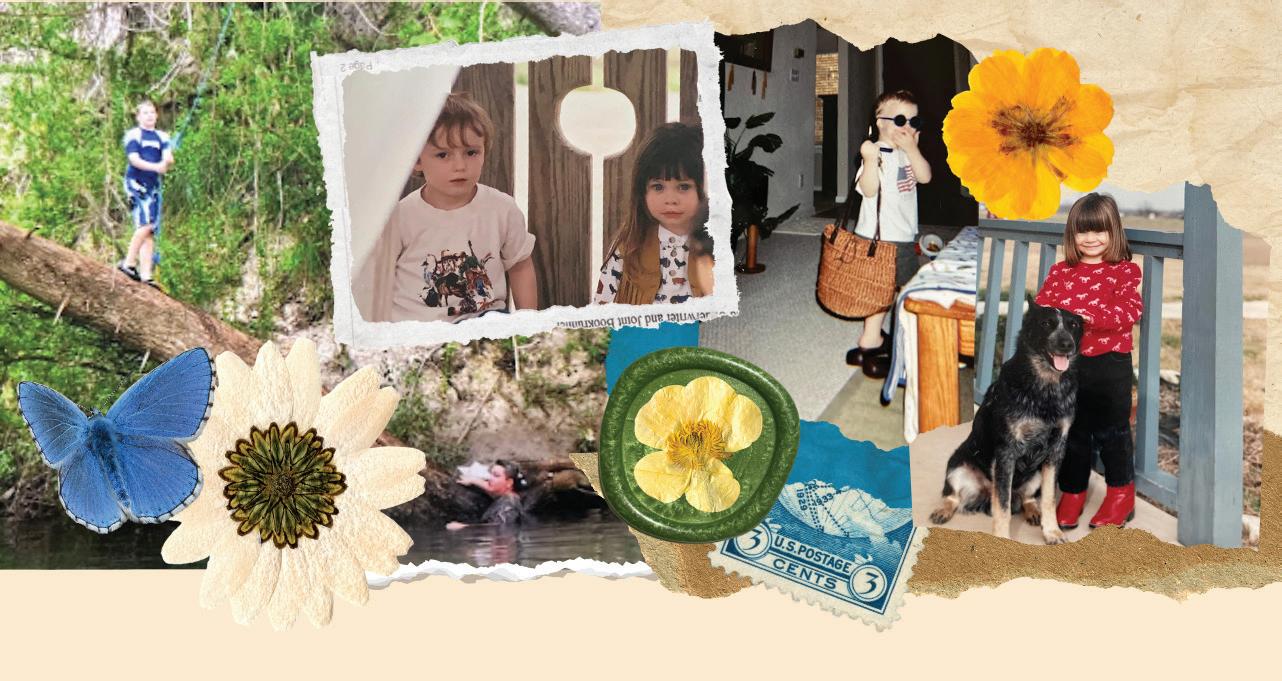
When you looked out into [the fields at night] sometimes a shining silver eye would stare back at you. It was easy to let your imagination run wild; the silver eyes are aliens (not deer or coyotes), ghosts hang out around the tree, the goats are conjuring Satan. The horror genre almost become comforting; it reminded me of home! Horror also introduced me to a lot of pieces of Queerness that have become essential to my identity. I think of Chucky saying “gendah flooding” like five times a day. I don’t think I would have discovered that wacky wonderful world without that particular environment to inspire me. In a way, growing up rural helped me become more me.
GK: With all that fear, did you ever suffer from agoraphobia?
BB: You know me a little too well. Yeah, definitely. I wasn’t scared of outside, but a lot of rural communities are so close-knit and so conservative, especially ours. I felt there was only one way to be a person, especially a woman, in that community and I didn’t fit the mold. As a child, I was super active in my community. I went to 4H [a club for rural kids to raise/show animals, learn life skills, etc.] meetings, church classes, and all that jazz. But as I got older, I realized I didn’t fit in with those people. I blamed nature and the animals for a while, and it wasn’t until I moved out that I realized how badly I missed [both things]. I remember tending to the horses of a former employee and thinking to myself, “I love this! Why did I ever stop?” It’s so interesting, because the animals don’t care one way or another! They don’t care if you’re Gay or Trans or whatever. As long as they get fed. Animals don’t judge you, people do.
BB: How do you maintain your relationship with that country side of yourself now that you’re a little more removed from the environment?
GK: Moving from the country to the city was a big transition for me. Austin kind of feels like my personal slice of NYC in Texas compared to where I grew up. Although I do not have the silence and the starry skies like back home, I make up for it in my community and the Queer family that has raised me throughout my adulthood. But my connection with the environment has not ceased. I still have to go outside and touch grass every day in order to feel sane. I bike everyday, usually thirteen miles through the trails near my house, and it’s my getaway. [When I’m with nature] I feel accepted by something more than the people around me. It almost makes me feel tapped into the universe.
BB: Do you feel Austin helps you maintain that connection? What do you think it would be like to be in a different, more urban city?
GK: Park systems are incredibly important within urban areas. Thankfully, Austin has bountiful parks with connected bike trails which makes exploring the terrain especially fun. If you don’t like one park you can follow the trail a couple of miles to the next trailhead. Not only do park systems provide a connection to nature, they also provide Queer people connection to other Queer people. Cruising the Austin park trails can foster relationships and environmental connections. When I moved to the city, I had to find my taste of the country. I do plan on moving to a more urban city like NYC or Chicago in my thirties but I do fear that I will crave wide open spaces.


GK: When you moved to a bigger city, how did you remind yourself of home?
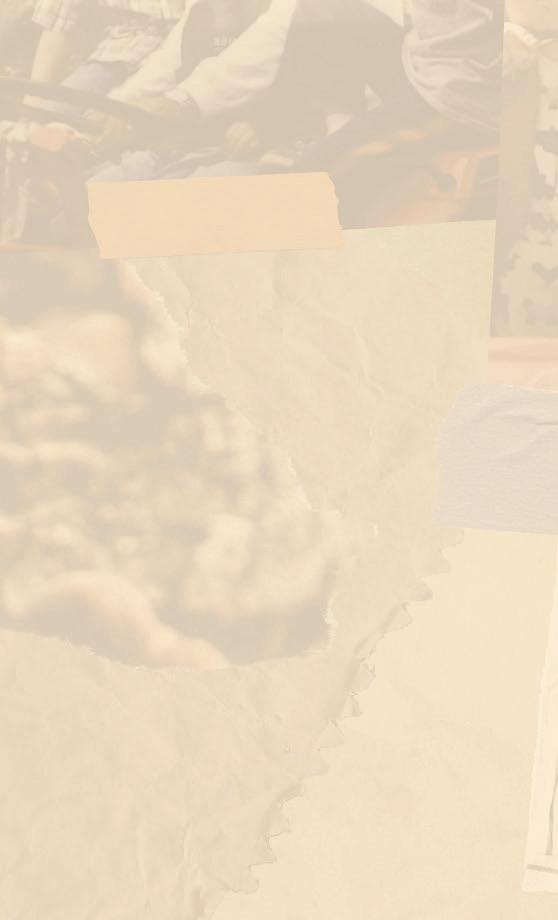

BB: You really do gotta touch grass at least once a day. I agree that Austin is a good intermediary for those who feel a connection to nature is important. There are a lot of hiking trails, lots of lakes, and lots of Queer people from similar rural backgrounds. I think as much as nature is important, being around people who feel similarly about maintaining that connection to their environments is just as important. When I lived in Brooklyn, it was a little harder to maintain [that connection to nature]. I spent a lot of time wandering aimlessly around the parks the city had to offer, quite literally hugging trees. Having a pet and lots of plants also helps maintain that balance. While living in a more urban environment has been better for me socially, I do get a bit sad when I spend too much time away from nature. Frequent visits to the farm help.
GK: I know that you cannot take the country out of the boy. Can you take the country out of the girl?
BB: [Laughs] Absolutely not. You can try, but she’s in there. But you know what they say, country girls make do.



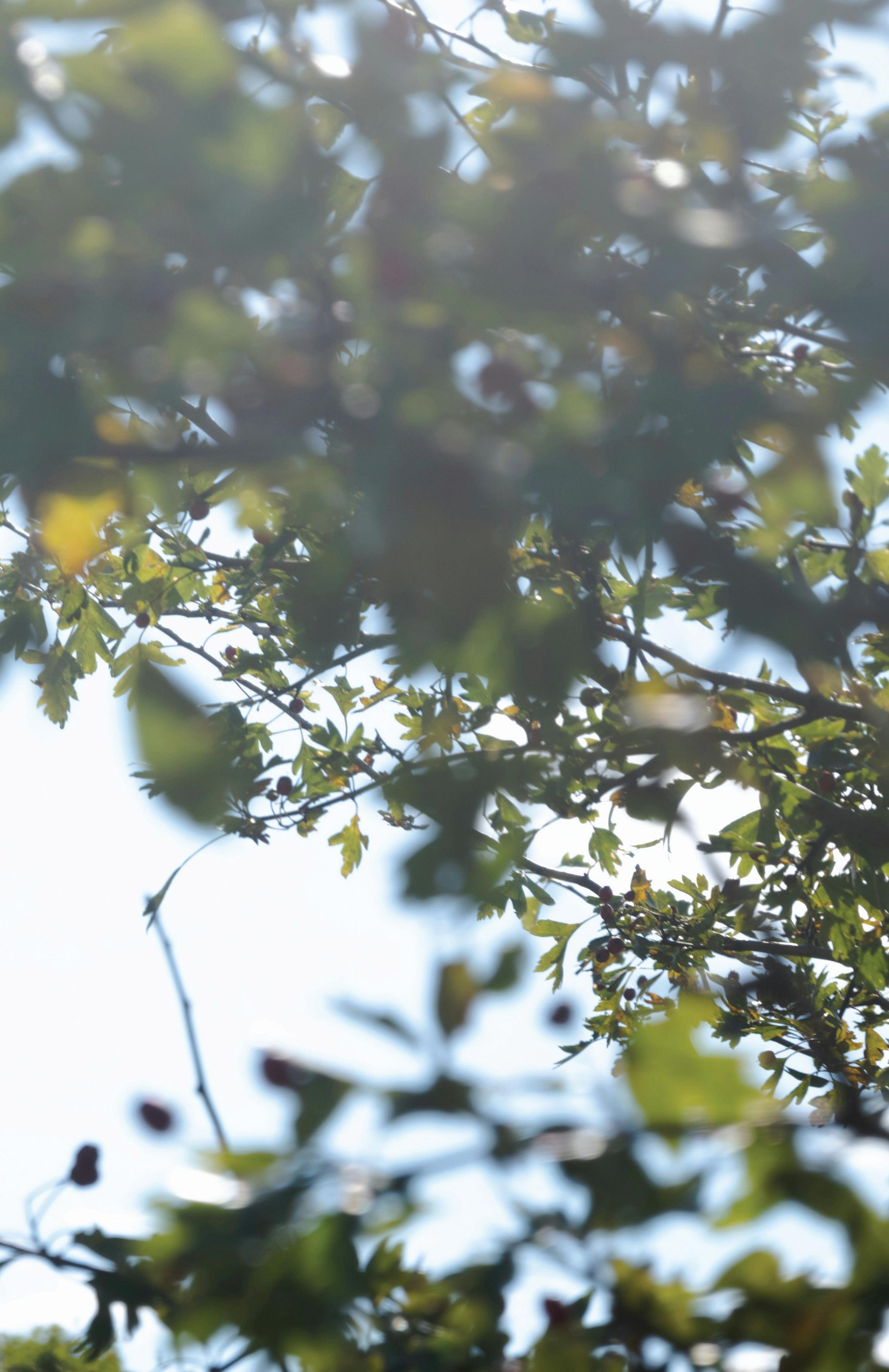
A Televised Warning Art by Angel T.
Art by Angel T. Dionne

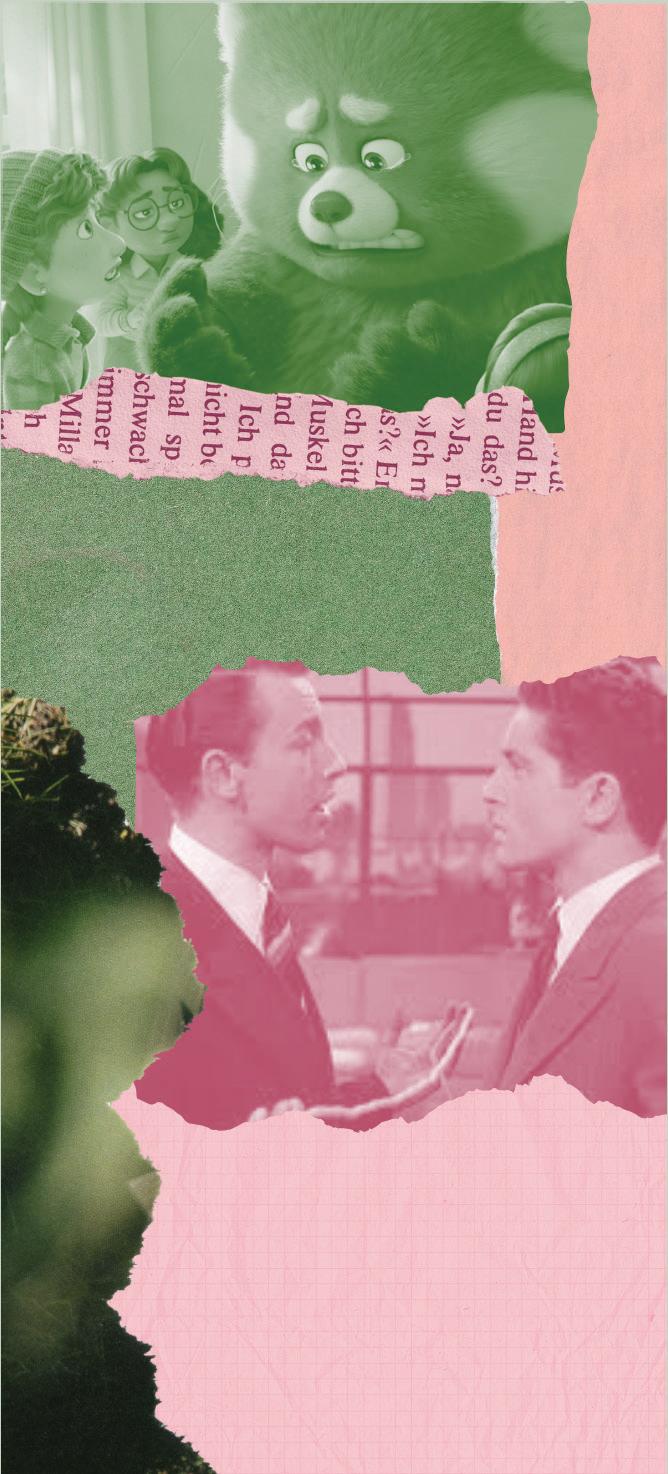

Words by Taylor Michael Simmons
Despite what my parents might think, there is nothing unnatural about being Gay. Okay, that’s a little unfair to my folks, who did say they’d “love me no matter what” after I came out to them, but it’s a catchy opening line and I’m not above the occasional fib. It is true, however, that I was unfortunately raised in a cishet household. And I went to high school at a time when Hilary Duff had to ask teens to stop using the word “gay” as an insult. So I had to rely on early exposures to the Hex Girls and Danny Phantom to show me that maybe there was something more. Something that many, including my family, have labelled as ‘weird’. The truth is, they’re the weird ones—shutting themselves off to a fundamental truth within the human condition. Centuries of socialization has crafted neat little boxes for them to fit into, and they’ve gladly stuffed themselves inside. But it doesn’t feel so good living in a box. Truth be told, it’s simply unnatural. Of course I’m just talking about people that refuse to admit that some cartoons are hot, certainly not using that example as a literary device or anything.
This go-around I have four films for you. One shy of the usual five. Forgive me but I was finding it difficult to write (with the stress of the holidays, and the fires, and the ever increasing presence and seeming embrace of fascism) and also it turns out I was accidentally ignoring the submission guidelines. Oops. Who knew that writing a handful of silly little film reviews takes up more space than one thoughtfully written and genuinely vulnerable work of poetry? I’ve realized through therapy that I use humor as a defense mechanism, and no matter the level of validation I receive about myself and my work it will never be enough. Anyway, see ya later.
Domee Shi
Our parents pass down all sorts of things to us: poor mental health, high cholesterol, religious trauma, maybe even the odd positive thing (although that’s rare). Listen, parents are not inherently evil. But boy is it easy for them to fuck us up. They grew up before the advent of cognitive behavioral therapy, so they haven’t really done a lot of processing of their own. Maybe your grandfather didn’t hug your dad enough, or your mom had a mother who constantly criticised her appearance, or some other example. Either way, sorry buddy, you gotta deal with that now. But we are a generation of cycle breakers. We have access to the tools and systems of support to deal with our shit and prevent it from passing onto the next generation. And they’ll be mentally healthy and personally fulfilled just in time to be climate refugees.
Being thirteen is hard. Sure, you’ve probably, to a certain extent, overcome the horrors of puberty, but you’re still too young for gainful employment. And honestly, if you’re not actively being exploited by the machinery of capitalism, then what’s the point? Luckily, Mei’s parents own and operate a local temple, allowing them to skirt canada’s child labor laws and use their daughters’ surplus labor for profit. Now, we’ve all known a girl like Mei, and maybe we’ve even been her ourselves. She is a perfect student. A loyal friend. A dutiful daughter. Turns into a large red panda from time to time when overwhelmed. Of course, like many families, Mei’s has been cursed and the women are forced to carry the burden. Luckily for Mei, there is an ancient ritual that can bind the elemental spirit of the panda into the locket or tamagotchi of her choosing. But maybe she’s had enough of her family making her decision for her. Maybe she likes turning into a big fluffy animal. Wouldn’t you?
Turning Red is slept on. It got released directly onto disney+ (barf) during COVID and, of course, it can still be found on the streaming service now. But since I fundamentally don’t believe in disney+’s right to exist, your boy found other—perhaps looked down upon by the powers that be—ways to watch this film. Like most pixar movies, Turning Red can be interpreted as an allegory for the Queer experience. Also, like most pixar movies, the Queerness is hidden just below the surface because Walt Disney is a coward and we wouldn’t want to scare the shareholders with a loving and tender moment between two people of the same sex, now would we?

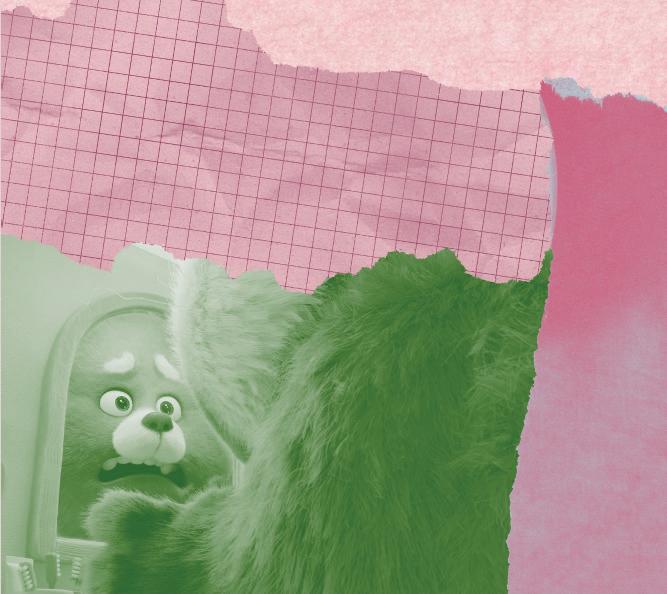
letterboxd/ buzzfeed
makes the list. This is particularly fascinating considering his five-star letterboxd reviews include Glengarry Glen Ross, Challengers, Stop Making Sense, TÁR, The Social Network, Dekalog, The Shining, Moonlight, and, for good measure, Stop Making Sense again. A perplexing yet endearing containment of multitudes. This elite sommelier keeps insisting you pair your Wagyu steak with Capri Sun, and he might be onto something. No hate to Turning Red. I’ve never seen it.


Alfred Hitchcock
Despite what they tell you, fluoride in the water and cultural Marxism haven’t made humanity Gayer. We’ve always been Gay, babygirl. In fact, some of your parents are probably Gay. You should ask them about it next time you see them. Could be fun. Point is, people have been Queer for a while now — it’s just gotten easier to be open about that part of ourselves. Now, more and more people are able to explore a part of themselves that had previously remained hidden. Revealing that Queerness is not something new, just that it had gone unseen for far too long. I am only recently starting to explore that part of myself because it’s scary and it would have been ‘easier’ to just let it be and continue on as is. But what a shame that would have been! Now I get to talk to cute boys on hinge. And time after time, they disappoint me by almost immediately letting a carefully crafted bit die just so that they can ask me how my day is going. For the love of god, can we not just joke around for a bit and then maybe kiss in your car sometime. Fellas, we have to do better.
Two men strangle a third. For no apparent reason an acquaintance of theirs is dead. But these men, like that one kid in history class who wouldn’t shut the fuck up and most white Gay men in west hollywood, think they’re better than everyone else. So culturally and intellectually superior as to be capable of the ‘perfect murder’ and immune to any of the associated consequences. Of course, they are not actually as superior as they believe themselves to be, but they are impeccably dressed, clean shaven, and clearly fucking each other. Now, it’s never explicitly mentioned in the film because even though men were definitely fucking each other in the ‘40s, the US government still wasn’t quite ready to admit that to itself. But these two men are clearly boyfriends. And Jimmy Stewart might just be their third.
Like many of Hitchcock’s films, Rope is dripping with Queer subtext. But Hitchcock did not make this film alone; an entire team of creatives (many of them Queer) contributed to its creation. And during a time of overt government censorship and an industry-wide adherence to a strict code of what could and could not be shown to the American public, these creatives were able to make a movie centered on two Gay men and their relationship. It just so happened that these Gay men were psychopathic killers and the relationship between them is seemingly more killer/accomplice. Oh well. Can’t win them all.
Kelly Reichardt
Maybe it’s just the anxiety disorder, but it’s so over, fam. We have been not-so-slowly killing our planet ever since the industrial revolution, and those chickens are coming home to roost sooner or later. It’s okay though. I’m probably just being irrational. Certainly, the united states government will use what’s left of our ever-dwindling time to pass reasonable, common-sense legislation to combat the causes of climate change and its subsequent effects. What’s that? Not gonna happen? We’re gonna get really into fascism instead? Well, okay then. So what’s a girl to do when her government outright refuses to do anything about what is the greatest existential threat of our time? Blow some shit up. I’m just now realizing it’s probably not such a great idea to publish under my full legal name. Oh well.
Three ecological terrorists walk into a bar. They ask the bartender for some water. Bartender says, “sorry folks, out of water, that man over there bought it all and is now selling it for three times what it cost.” The three ecological terrorists walk over to this man and shoot him in the face. This causes some tension in their relationship. Night Moves is about three activists desperate to make a difference. Disillusioned by the glacial pace of ‘progress’ in the face of the avalanche of man-made ecological horrors, they are compelled to take direct action. They’re going to blow up a dam. But can they get away with it?
Reichardt has crafted a deeply complex and rich film that is difficult to sit with. Night Moves forces the audience, especially those of us inclined towards activism, to reckon with a contradiction that is perhaps inherent to our humanity. We possess the passion and will to take direct action against the horrific injustices of our time while being unable to shrug off the natural instinct for self-preservation. Long story short, it can be difficult laying your life on the line for the greater good when you have games on your phone.
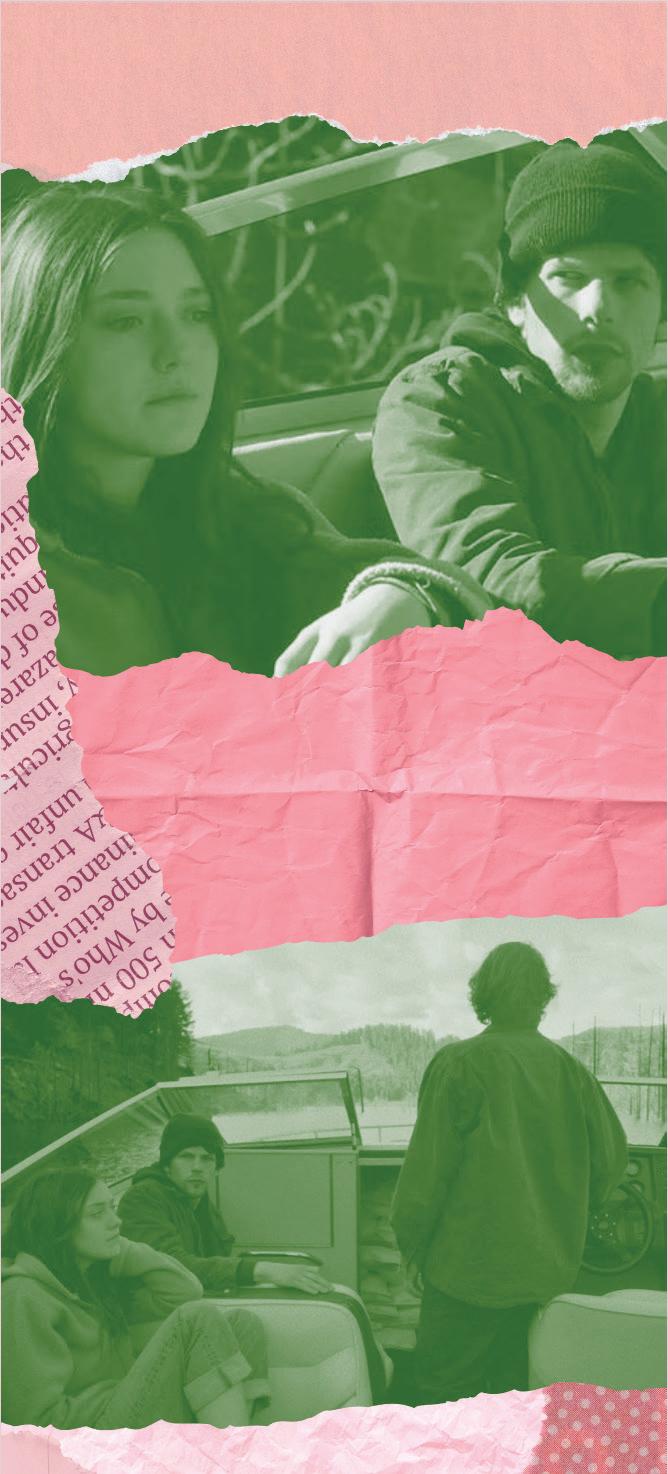

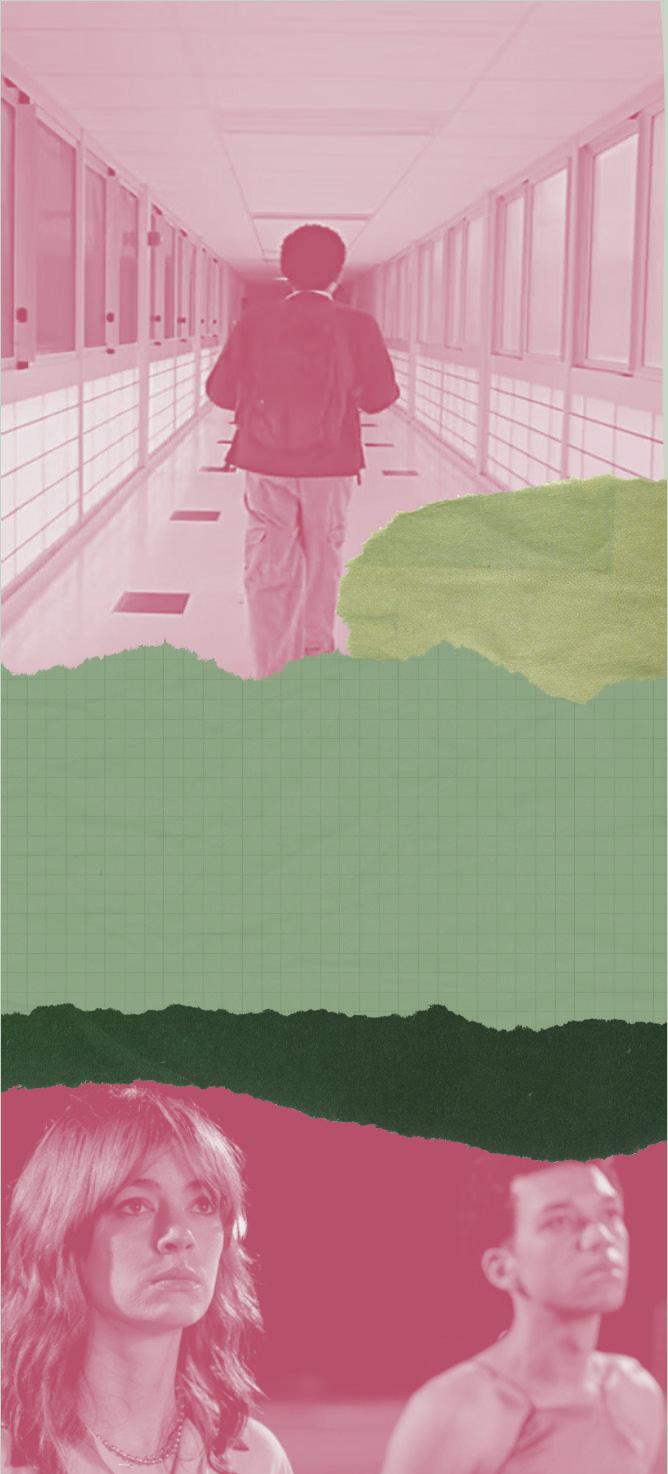
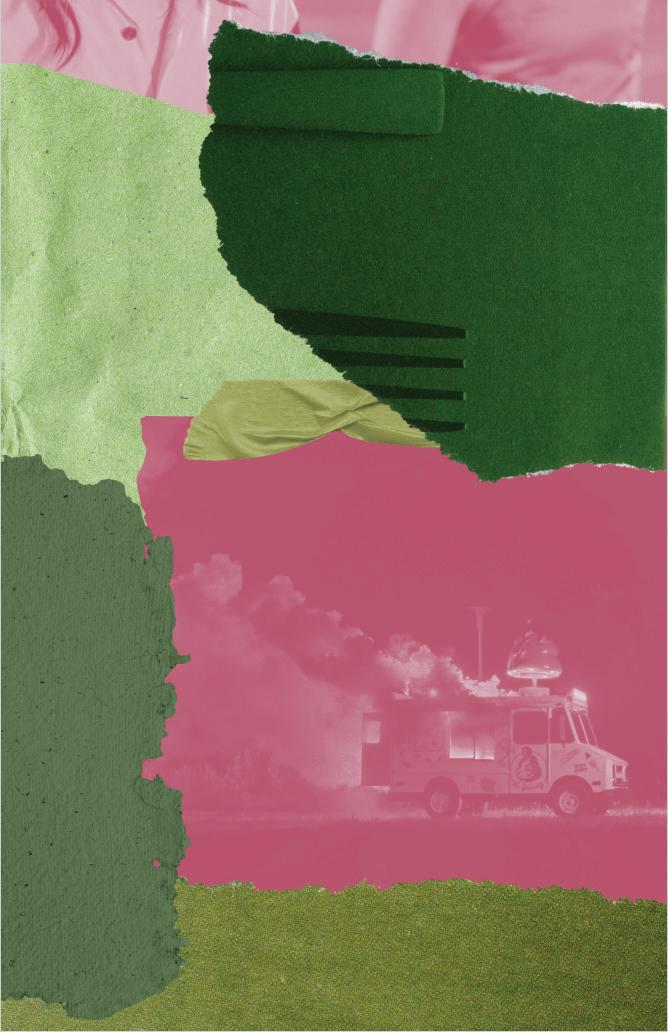
Schoenbrun
Do you ever look back at old pictures of yourself and ask “who is that?” You know that it’s you. Your mom made a point of telling you how cute you used to be while she gestured at the person in the photograph. So it must be you. Haunted by vague memories of having that haircut, getting those jeans for christmas, and, for some reason, putting them on your body, despite them being blindingly hideous. Luckily, you’ve changed. But you still don’t recognize the person you see in those photographs. That’s not you anymore. Maybe it never was.
At first glance, I Saw the TV Glow is about two outcast teenagers. Both Owen and Maddy are quiet and shy and socially awkward. But they find a type of family in one another — some small solace amongst the horrors of high school. Their bond is formed through a shared fascination with a late-night show called The Pink Opaque, and like most last-night television programs from the mid-’90s targeted at those of us stuck in the liminal space between childhood and adulthood, it is almost upsettingly frightening. Regardless, Maddy lets Owen watch the show at her place, but only if he can successfully sneak out of the house and away from the lead singer of Limp Bizkit (who plays his father) first. As time passes and Owen delves deeper and deeper into the world of The Pink Opaque, the line between reality and fiction begins to blur. And as Schoenbrun unveils the truth about what is happening, the audience is left with an overwhelming sense of dread that does not simply go away.
When I saw this film for the first time, a young man who had been sitting next to me in the AMC signature recliner turned and asked, “did you get any of that?” The only thing I could think to say was, “no, isn’t that great?” Over time, through reflection and discussion, the meaning behind I Saw the TV Glow became clear. Of course, it’s an allegory for the Trans* experience, as well as an homage to the nostalgia of ‘90s TV, and shows like Buffy the Vampire Slayer and Twin Peaks. But it also speaks to a more universal truth of being human. We often pretend to be someone we’re not. Instead of being ourselves, we defer to the expectations placed on us by others. And to deny oneself is a death of its own. Our existence is finite. We will die. It is a certainty. But don’t worry, my friend. There is still time.
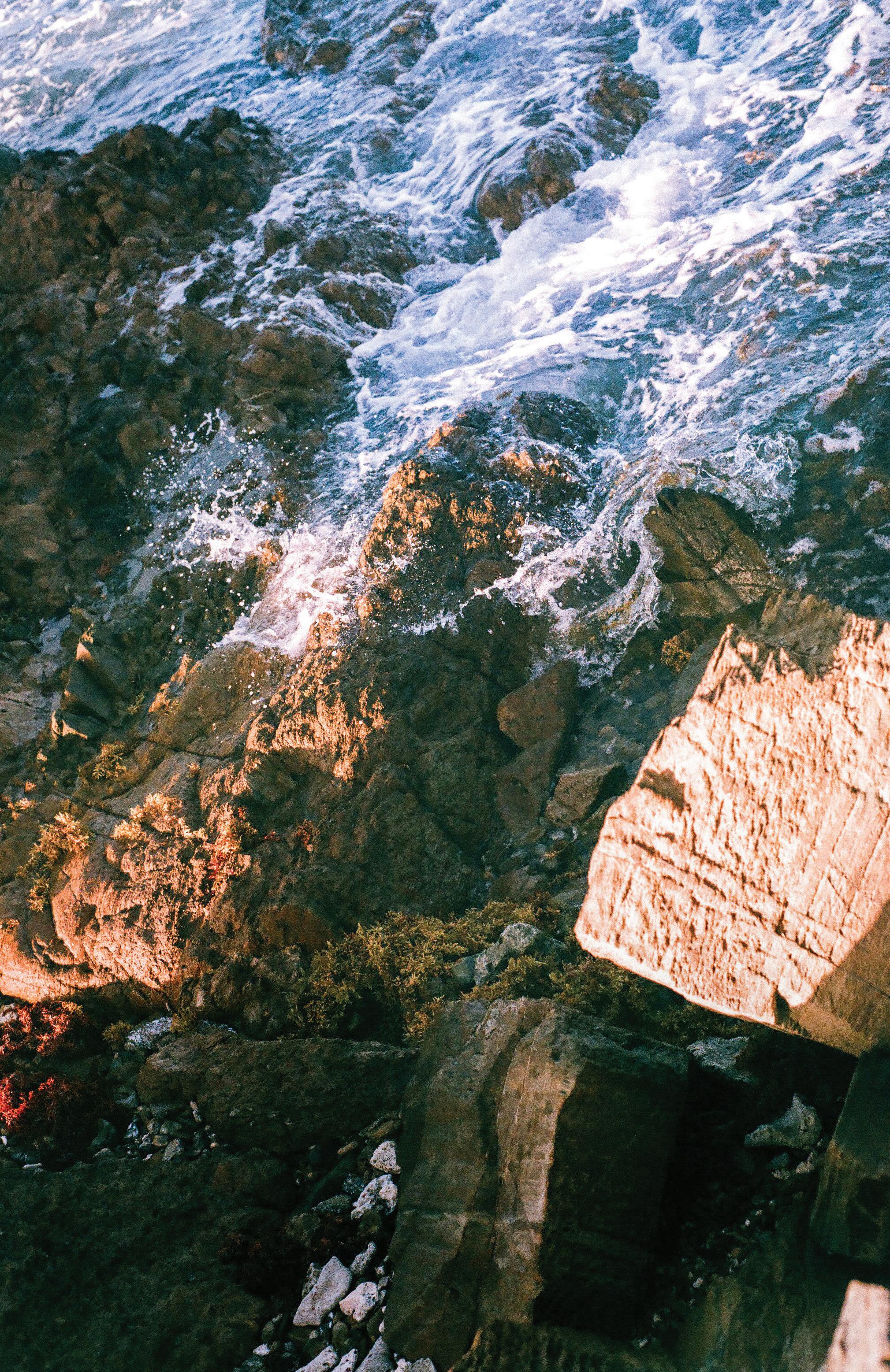
When I was a Fern Words and Art by gp
Gender Revolution Words and Art by Emily Vance Brown
BIRDMURMURING Words by Shelby Pinkham
pegging, a pastoral Words by Melanie Robinson creek baptism Words by v.w.l now my dreams lay dead like a limp cigarette Words and Art by Azad Namazie
The Protest Sign Says “The Closet is an Awful Place to Die” (or, In Which I Ponder Creationism) Words by Johanna E. Hall
Hobby Farm With You Words and Art by AJ Dent over warm bodies Words by von reyes
CITIZEN Words by Mazerick Betko
Life continues to flow steadfast in its refusal will Words and Art by Amber Jaitrong Rooted Words by Figueroth Lavalle
Songbirds in sun in showers Words by Bri Campbell
Thoughts of Winter Fields by Andrew Wyeth Words by Liv Soter ode to the small gods Words by Gaby Bee
fecund dreams in rural iowa drought Words and Art by ashley hunt
Nitrogen Fixation Words by Bennett Rine
Words andArt by gp
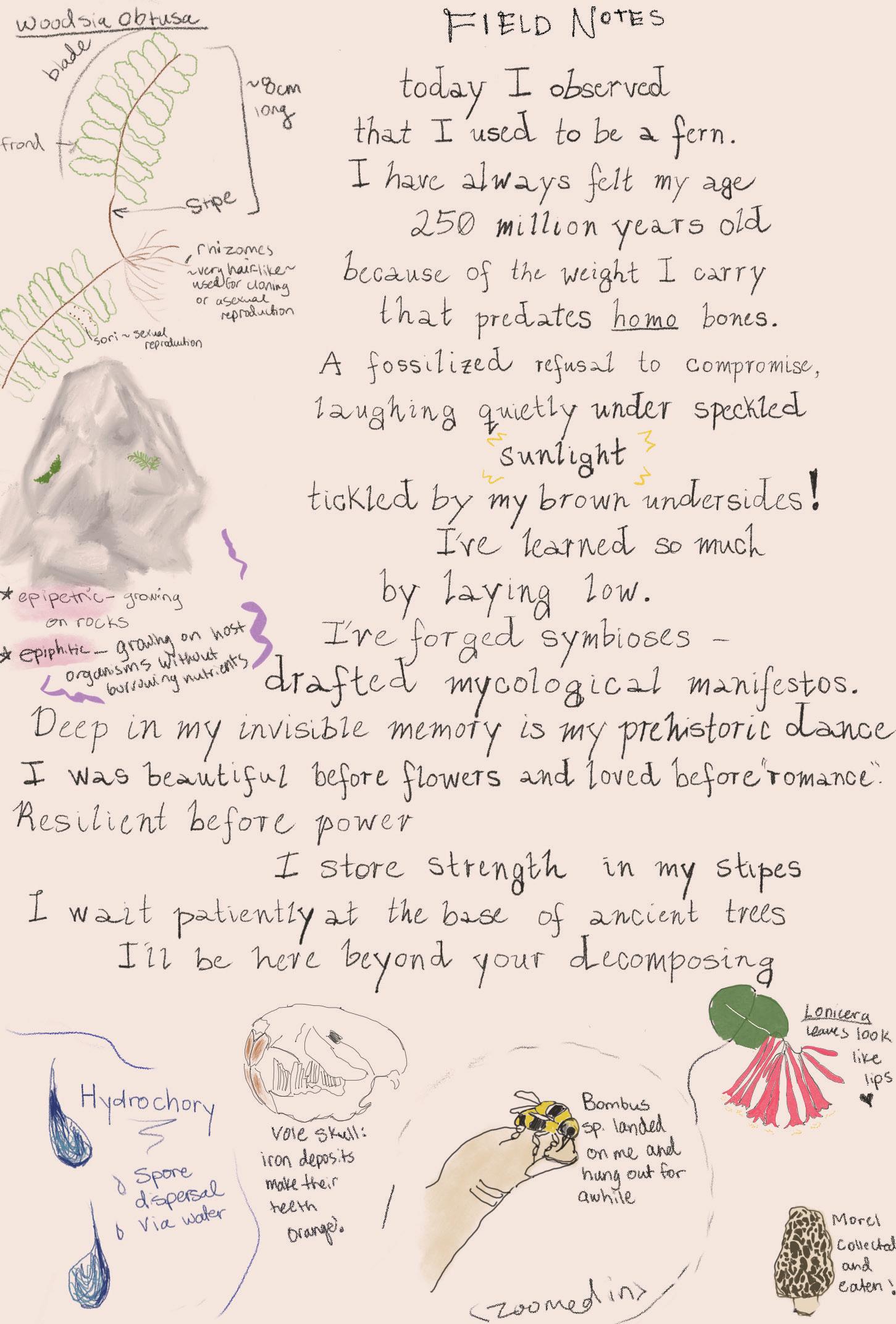

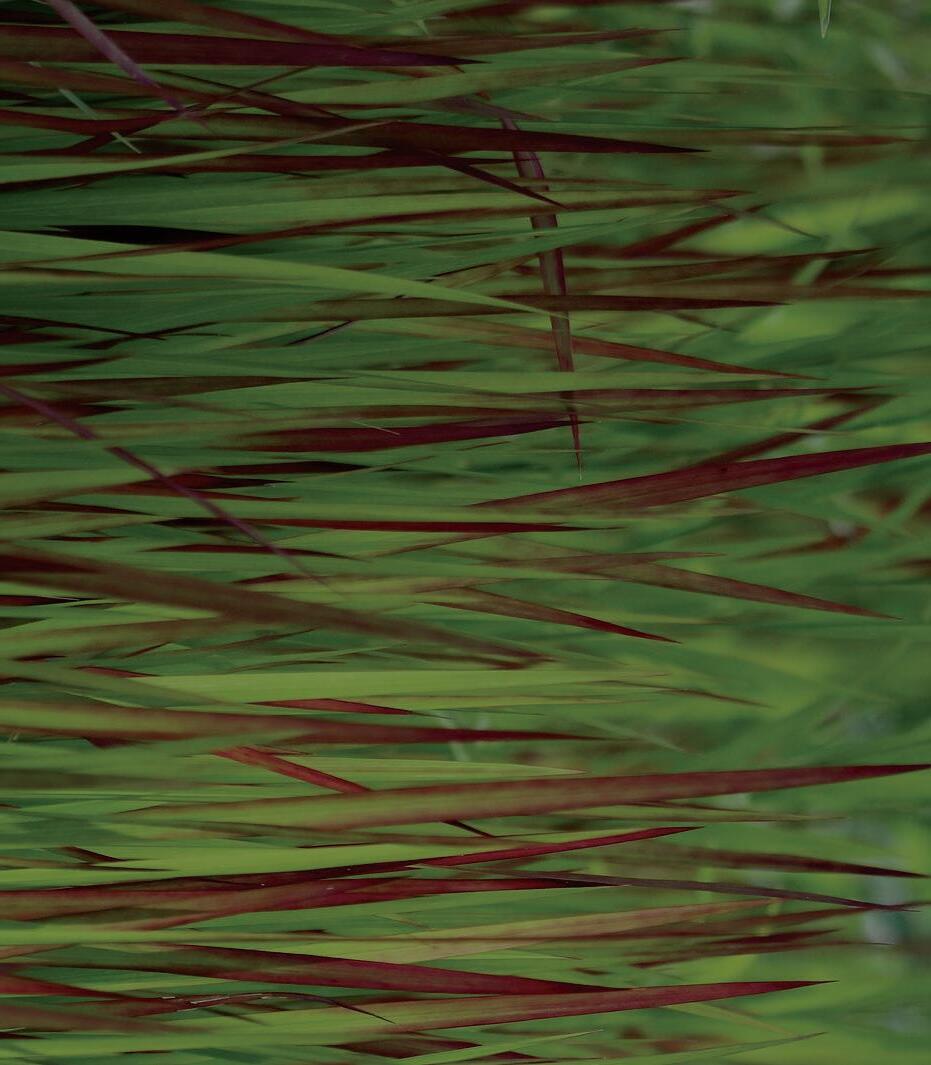
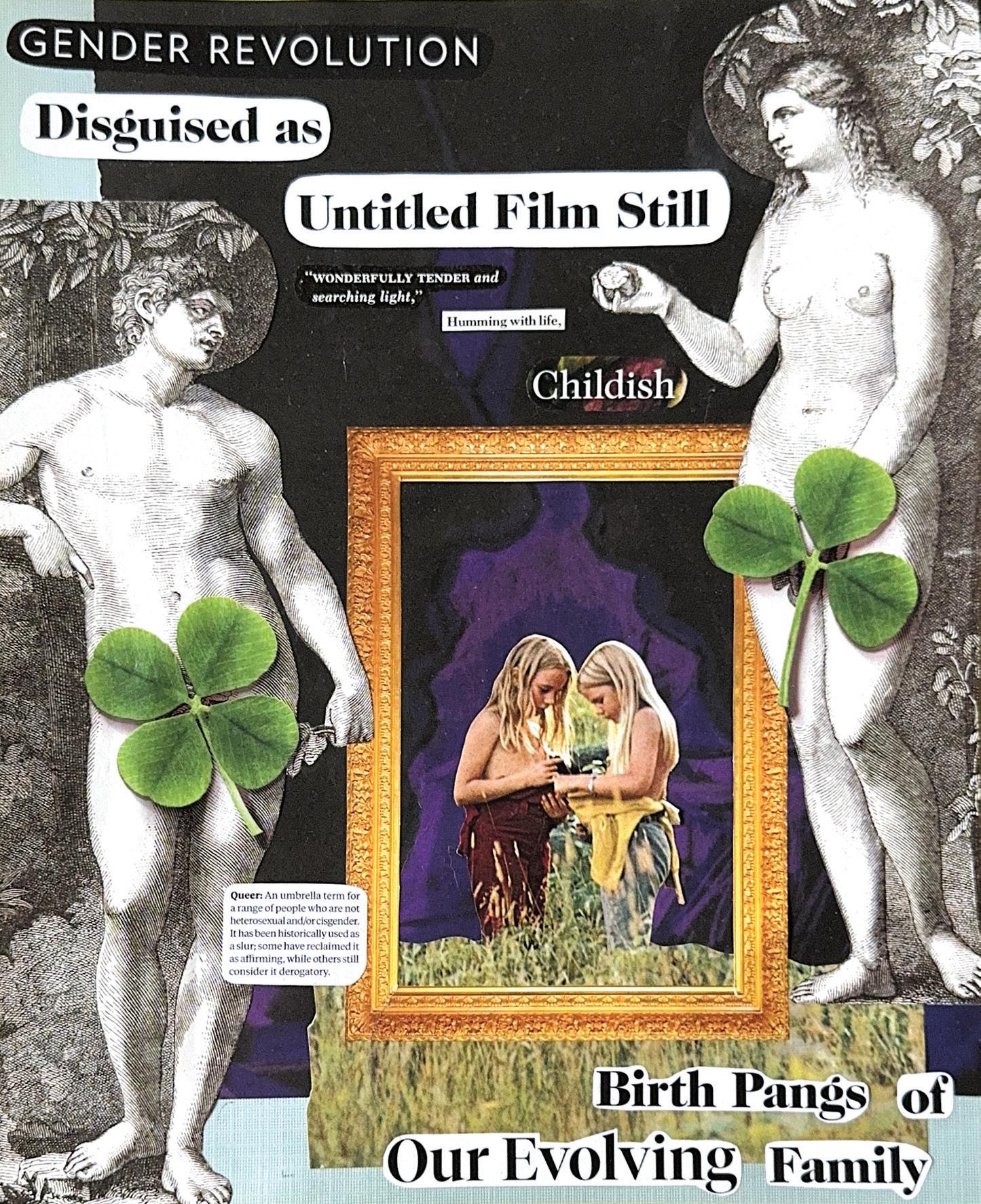
Words and Art by Emily Vance Brown
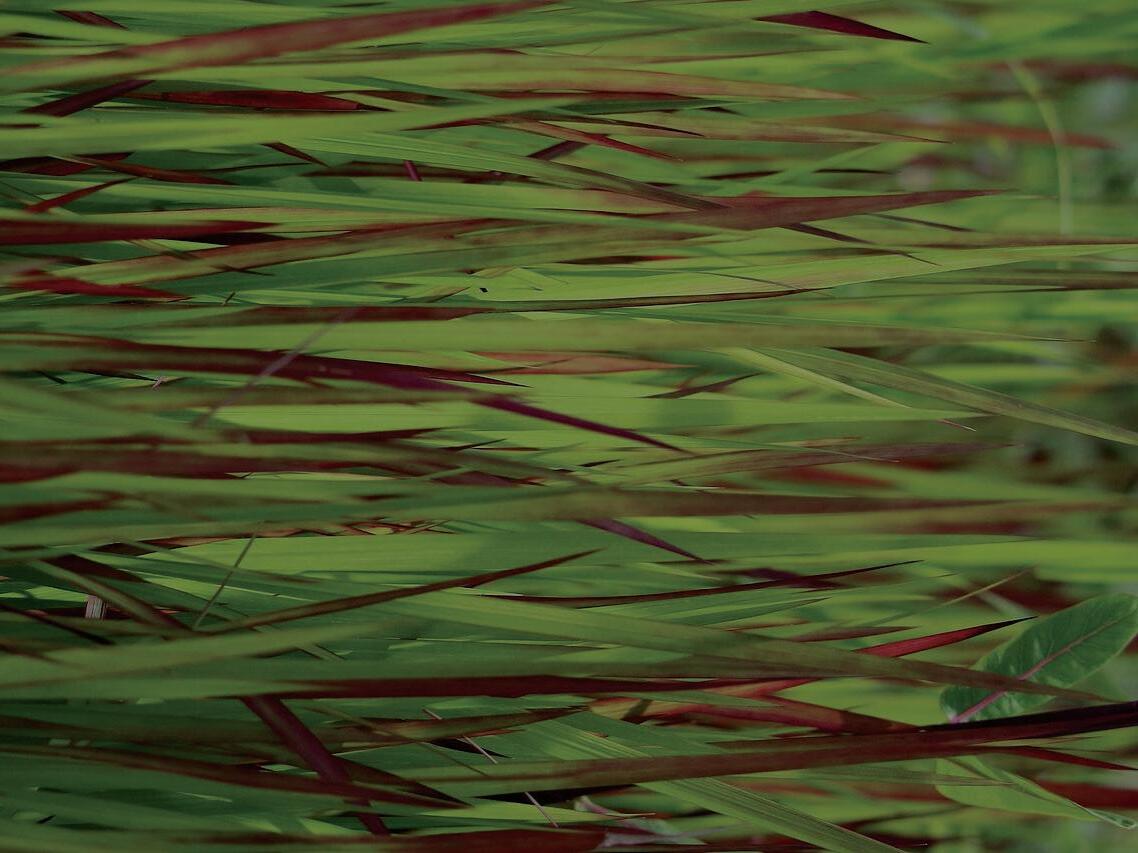
swallows as in real / real as in wench wings fluttering / vibrating realness / rustling of the actual factual / whir slogged corporeal magpie / wet raven / a kind of wetness proving reality of living crows / slosh, raven, skitter / an inching corvid / teetering on the precipice of are you ok? / whore wings ruffling pork / open open open close open open open / what seen here? / sunbathing, wingdrying / ultrasound flapping / beak screams reverb off the soil / oxygen of a freelance trick twittering / tolerating your tree bark attitude / tumbling tree lungs / glob of blood / uproot to take hold of feathers / to memory bird memory / to sexualize evolution / to empty your seed / to empty your mind of desire / a release / tight chest / a release in tight branches / a leaf drips / a leaf flutters up / You want pollinate / want eat / want memory / want sleep / want sleep / want sleep / want hold / want cry / want grow / want live / want want want / as in, am I here, a twittering camgirl / as in let’s go dismantle birds / as in some things must be real / birds as in ripping roots / a disturbance in festering networks / chirp / skybirth / a birth of skies / endless cheepcheep / reflexive leaves / dirt dragging against skin / dark night / corn crunch / warm gravel / what memory tree what memory? / to fixate on luxury erasure / to hum / to reorder jackknife frequency / to grow feathered gender / to reach slutty ornithology / to grab binoculars / to want to know taxonomy / to feel conservation biologist / to breathe wildlife surveyor / to transplant ecology / to rip out chicks from the nest / to incise bird chests / to eat their little hearts /
Art by Chloe Parsons
Words by Shelby Pinkham
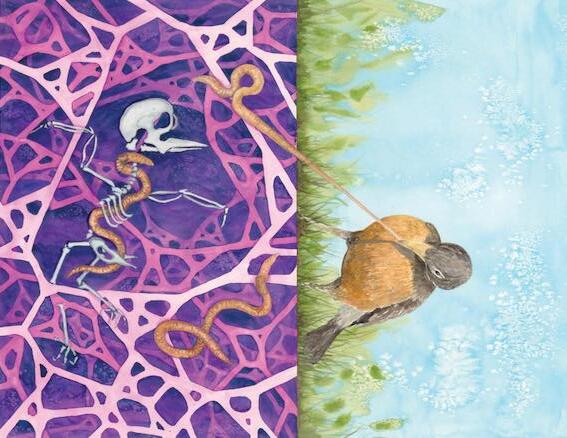
Words by Melanie Robinson

You seem a cathedral, celebrant of the spring which shivers for me among the long black trees.
– William Carlos Williams, “Spring and All: Chapter XIII [Thus, weary of life]”
polite cactus wrens linger with eyes that glint across dusty, placid twilight
old book said someconsiderthejoshua treetobetheugliestplantinexistence
baby yucca moths snuggle sweetly to its acrid flowers & ossified leaves growing in
bullet time—i watched the crooked-mouthed poet piss all over the coxcomb mountains
his dumb silhouette was marred by tawny clay & a marmalade sky freckled with vultures
he writes about old trucks & a polished walnut bowl he made for his young mistress
a carpenter, a tourist in snakeskin boots & a pearl snap—truth isn’t
surmountable, yet i rode him & called him daddy—forgive me, patsy
cline, it’s the mojave, the tequila cured with rattlesnake meat or
the clouds o’keefe stretched into canna lilies—you know i can’t say no
to a ceremony or a garden filled with the sloughed skin of insects
lean into the artifice, salvageable keepsakes—beige macrame, prickly pear
syrup, ornate ashtray, pricey prerolls, pushpin night, sheer
linen curtains, a desert cottontail munching on bony shrubbery
in the distance—what a scene, what a performance
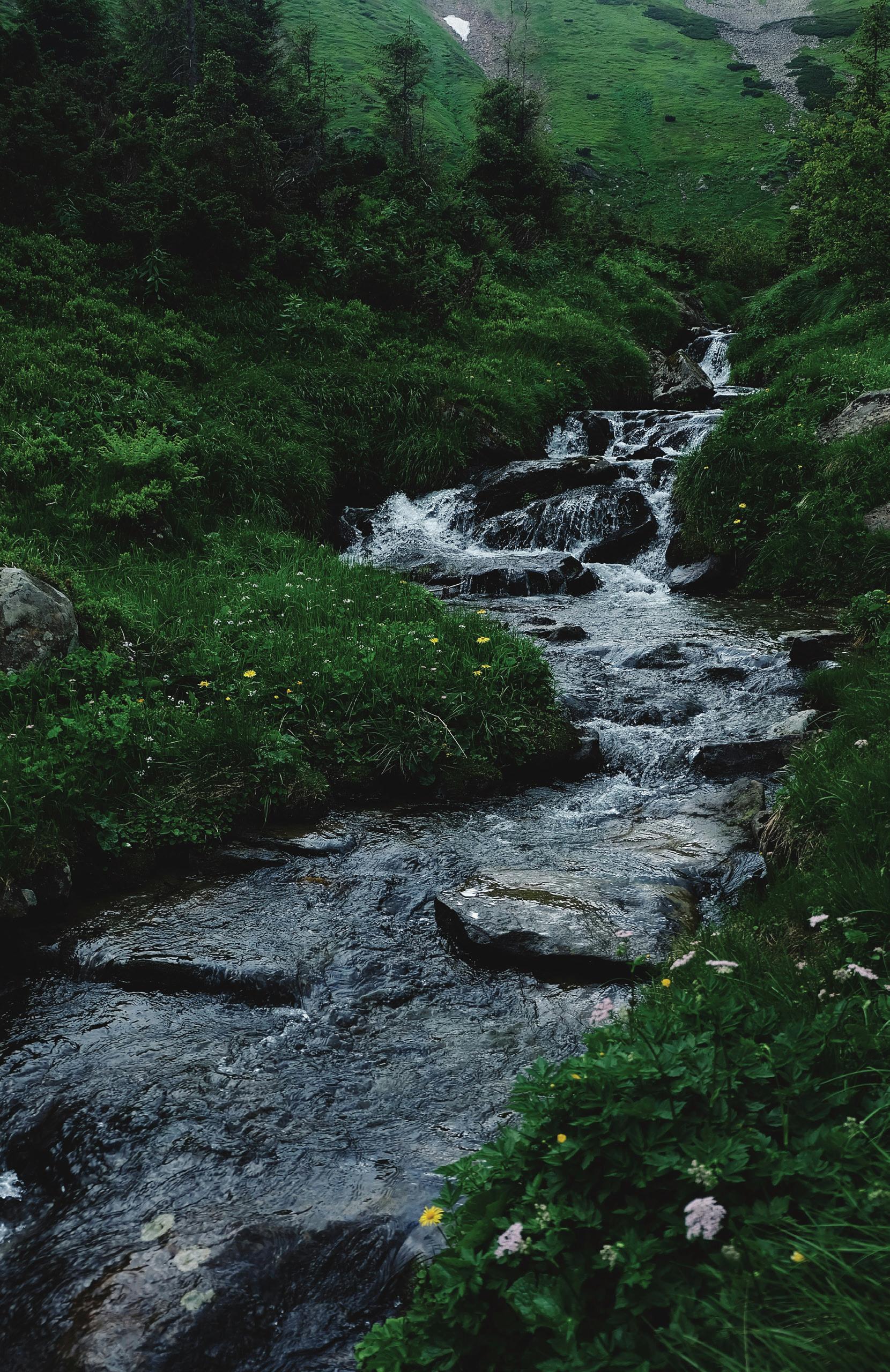
Words by v.w.l
my toes dip into the creek. frigid currents swirl and intertwine around my bare feet. two fish stare back. a row of their children pass safely behind their piercing gazes. i feel afraid. i stay by the shore, watching them watching me.
another summer begins. we dissolve into the chlorination where we live every year. My sister dives into the deep end, striking a pose before landing. Everyone else is inside, out of sight.
i stay by the steps. i cannot move, cannot walk. a tampon wedges my guts and my thighs apart. i stifle tears. my sister finds me a raft, a floating lounge chair with a cupholder. i lie in it for hours. when mom calls us for dinner, she finds me in a pool of rosy water. i am not allowed back in.
we are woken up early. the sun paints our neat bed sheets orange. the blackberries are tart and stain my fingers black, blue, purple. i squish the too ripe ones in my palms and stick them together. tart, sour. birds pick their favorites further down the fence line, watching. waiting for me to get too close. their songs fill the silent work. i want to go back to the creek shore, or the pool, but
now it is time to make a meal. three generations of women is that right? toil over potatoes and dumplings, the tv droning low as my father and grandfather wait patiently. i tell my mother it’s not fair, none of this is fair, and why do I have to get my period anyway? how is it fair that i can’t swim like any (other) boy could? unimpressed, a peeler is pressed back into my small hands. no answer. the work is done and
now it is time for bible camp. we sing songs and read stories i have never heard before.
i only know of noah’s ark. They tell me how the animals went, male and female, and i wonder what they would do with me.
i think of the creek fish. will the babies still be safe when their creek becomes a sea? what shore will those eyes keep me to in a world covered in water?
abigail comes to bible camp, too in the valley of missouri hills. she talks about husbands and kids. her voice carries the choir and her long blackberry hair shimmers. petals fall out of her mouth. butterflies well in my stomach.
wanting.
i am asked if i have a boyfriend more times than i can count. their leering smiles and “knowing” giggles are poison in my lungs. well, why don’t you have one? they say, and i don’t know. i don’t know. i retreat into my favorite place. my farm, a scratched up disc spinning on my gamecube. my farmer,
a boy,
meets a blonde girl in a red dress on a bridge each night. i tell her (whispering) that i love her. in my room, the hand-painted angel on my dresser is silent. she says nothing as my farmer and the girl stand together in knowing quiet. the river is the only sound here, the music waiting to start again on either side of the bridge.
lungs tight from labor, i drop another rock into the creek. we build a stone path across the water, following the bends farther than we have ever gone before. the fish are there though. i know they are watching, the way they always are. my sister climbs a tree, leaving me wading in the water.
the boundaries between “me” and the cold blur and i sink into the numbness. the sun is bright, brighter than in the pool. the water sparkles. it is alive—it breathes. i breathe with it, deep, impossible breaths. i look up into the leaves and the ghost of another’s fingers grasp mine.
For a moment, I am no longer afraid.
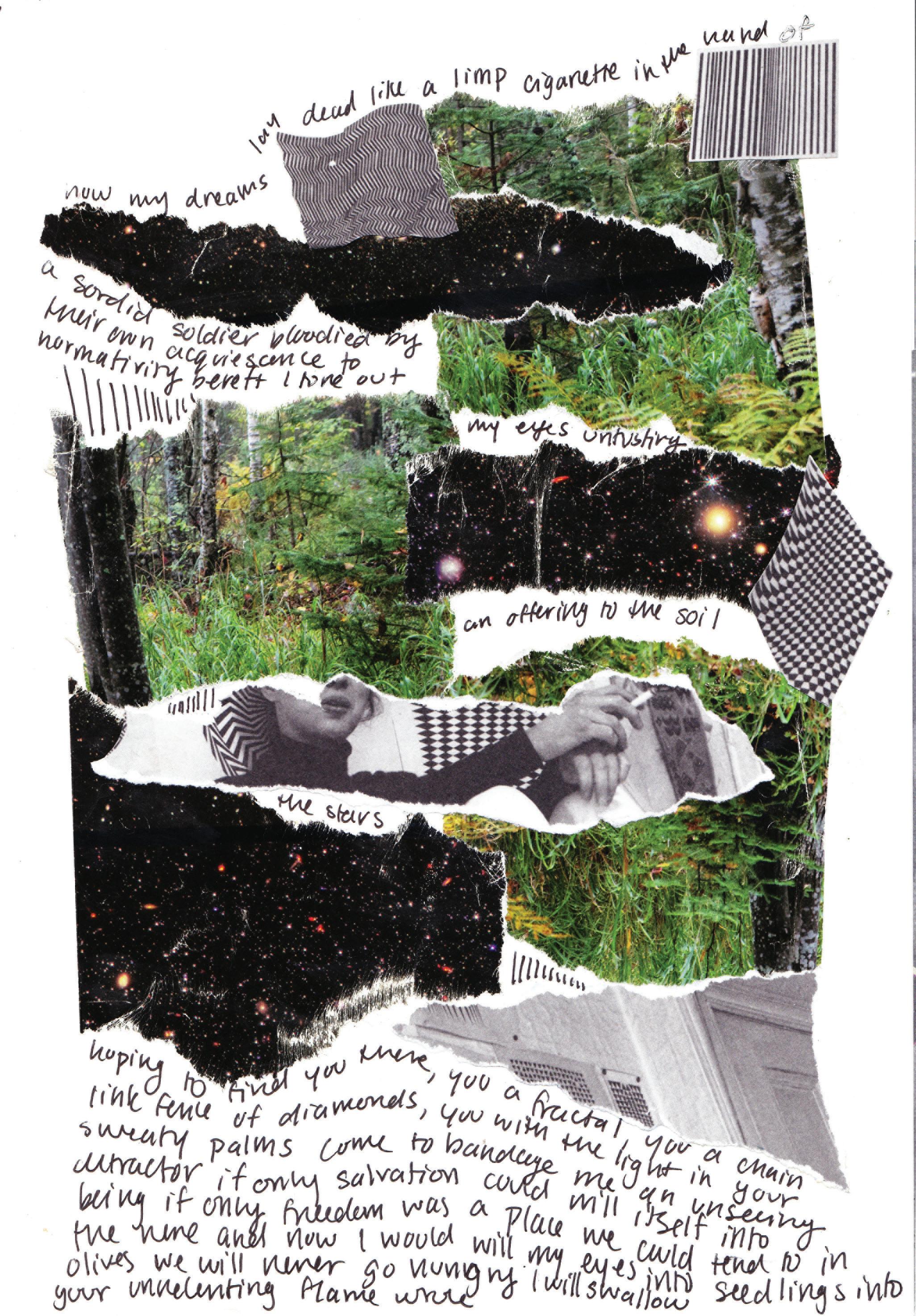
Words and Art by Azad Namazie
Words by Johanna E. Hall
Photo by Averie Bueller [APB Photography]

In the Beginning—after the angels and animals had settled into their hierarchies, after the wild and waste had become something that could hold a garden, after Day and Night were gently pulled apart, Earth and Sea shepherded into place— Male and Female He created them.
A little while later, the Smithsonian shows me a fossil long abandoned by its ocean, the shadow of an animal that evolved before eyes did, still learning how to be looked at. We crawl out of shells carefully furnished by our ancestors and leave tentative footprints in the sand, hoping the museum plaques will be kind to us. Mine will begin:
The woods I grew up in hold sunsets well, Day and Night admitting their overlap, the stories we tell a map but never the land— and how beautiful the land is, the beaches and horizons, the way we carve out a life, neither beast nor angel, cursed to labor and blessed to cultivate.
Evolution continues creation the way I loved before I could speak love into being, the way I forget my friends’ old names but never the first girl I held hands with, the way my lover is in the story the way I tell it, and the God they say created Male and Female— who hovers over the face of waters where some are just now learning to swim— hands us the plow.
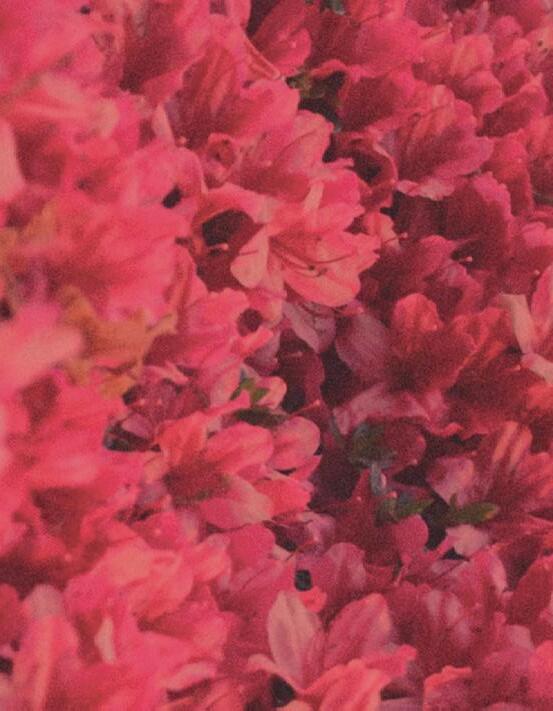


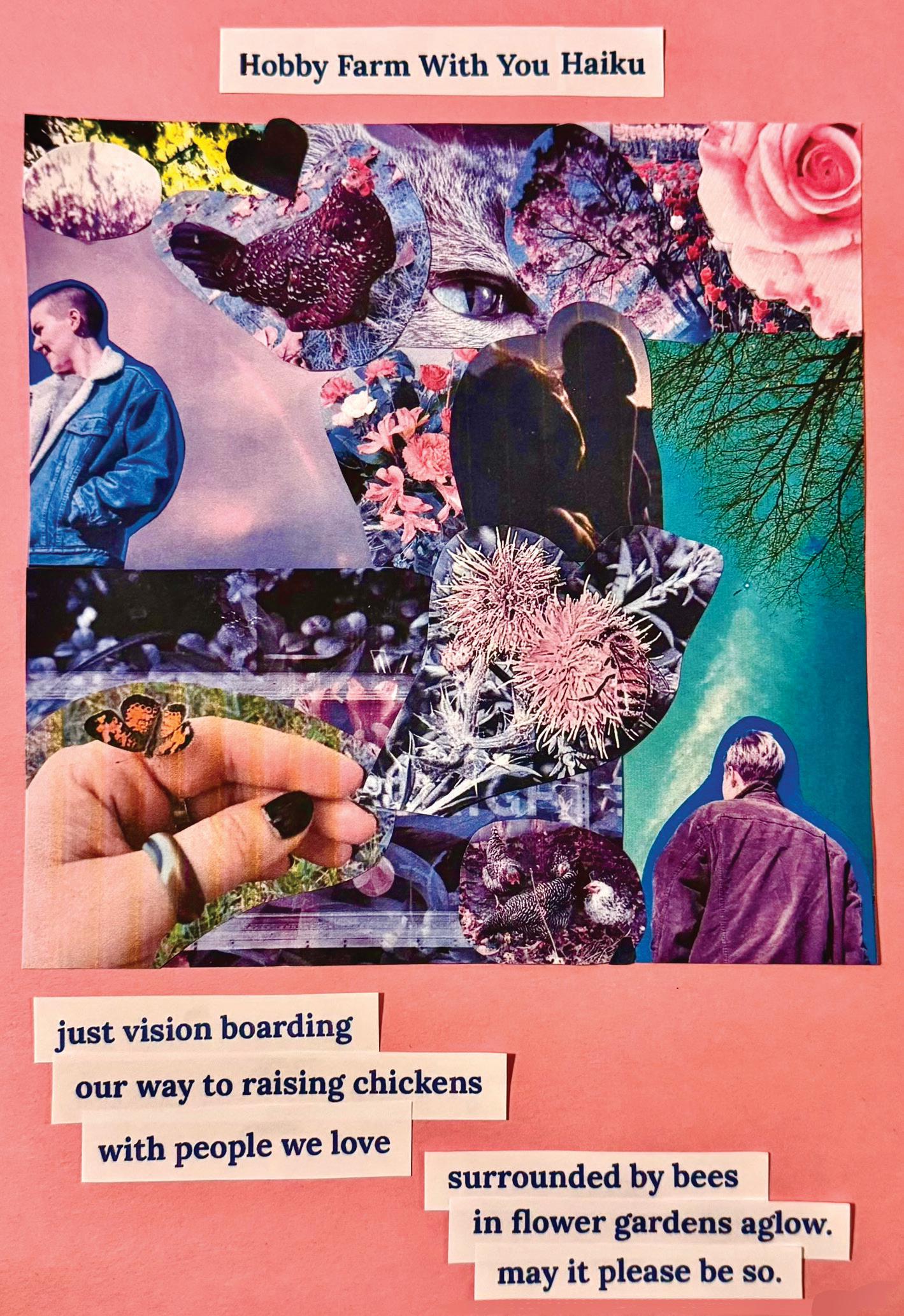
Words and Art by AJ Dent
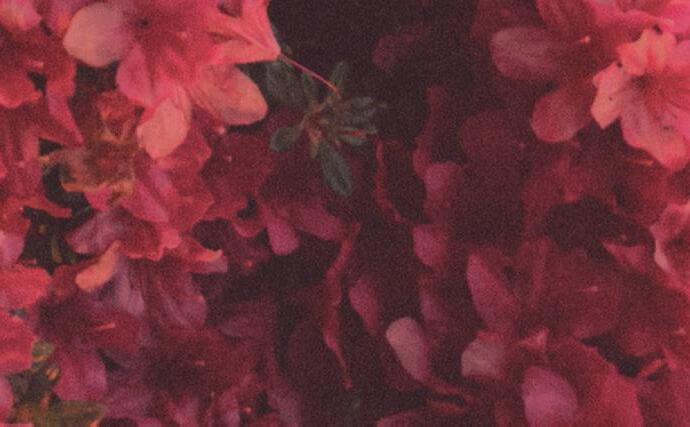
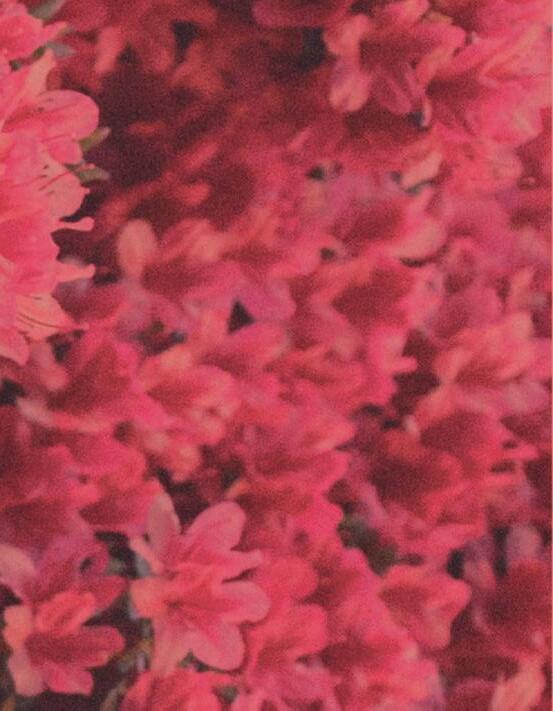
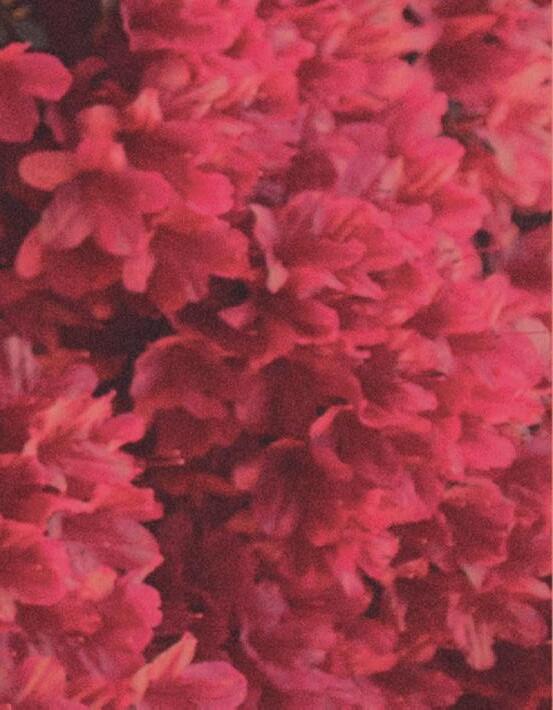
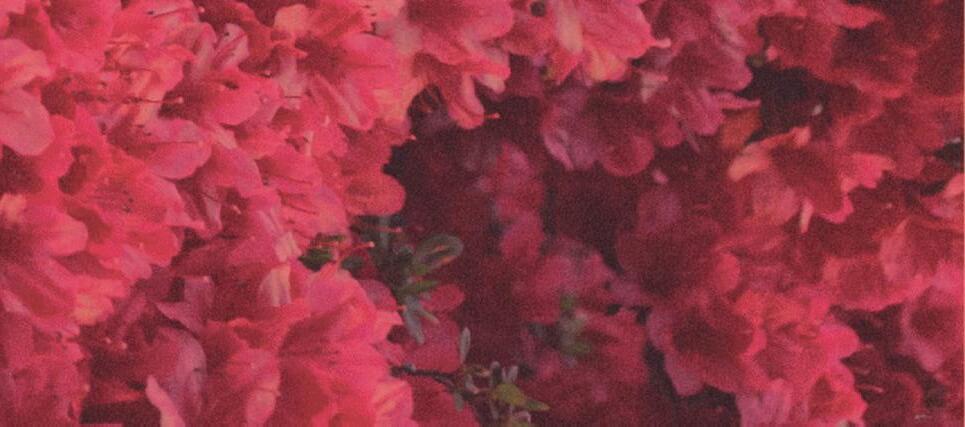
Words by von reyes
Art by Sanna Koskimäki
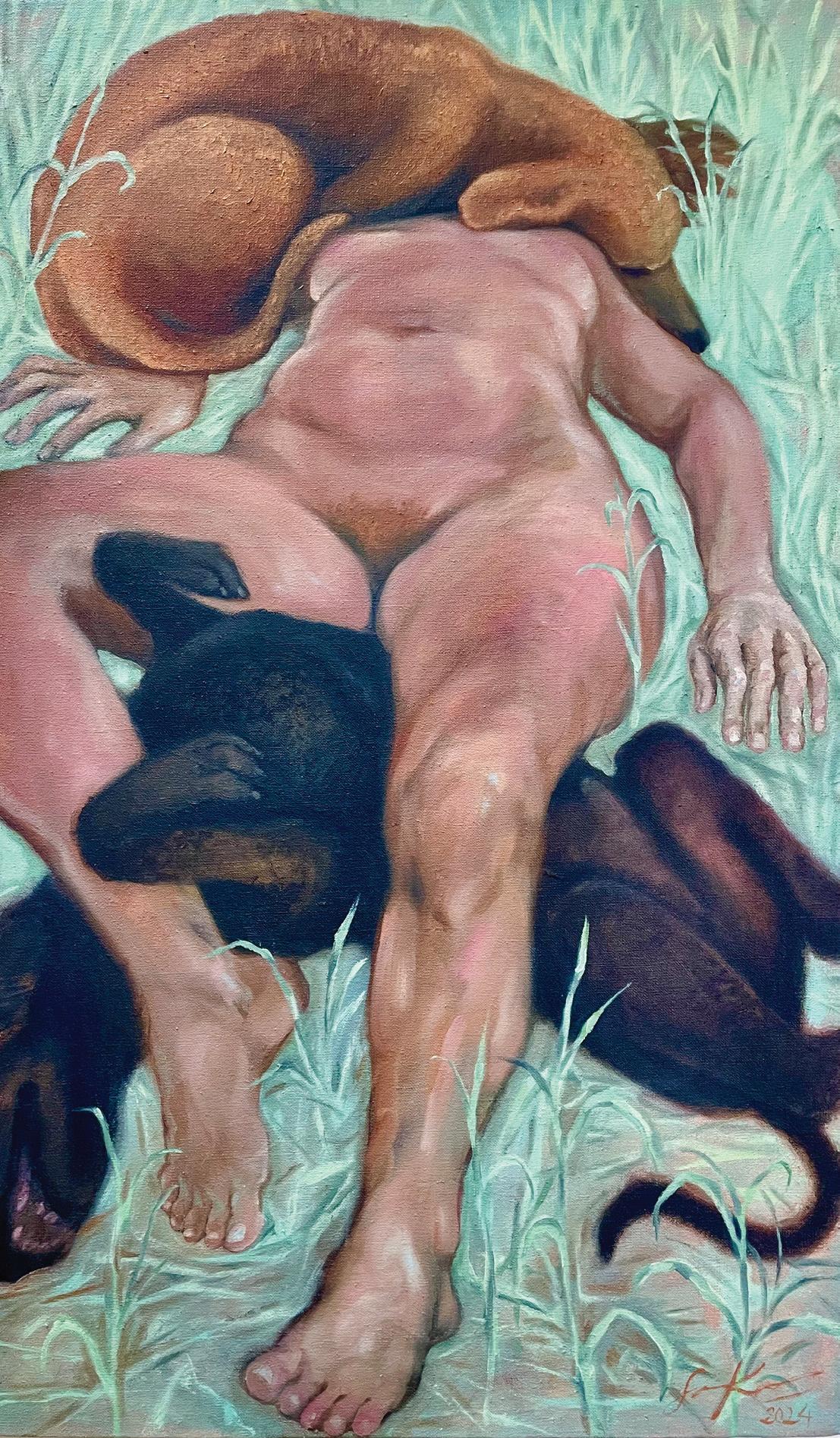
something about the cold allows me the rapture of denial. i feel lobotomized by the breeze as i crack the front door to check the mail. perhaps it triggers the primordial numbing of our bodies; my presumed 98.6° plummeting from the ice in the air. i used to long for colder days, when my belly was empty and my brain was full of artificial chemicals. i could feel the static in my synapses spread across my arms like i used to on my porch during hurricanes. i’d call a cab to the only club in town where i could kiss other boys like me. i was severed, no systems online inside the flesh that prickled in the chill. but then, and even now, things always feel real in the summer, when my salt-slick sweat reminds me that my skin is attached to me. the stick of your searching fingers stays behind long after july. or rather i’m attached to it, stitched into the muscle tissue, tethered and worldly, fated for the loam. i hope when i return someday i’m fungi or moss or scattered among the microorganisms floating in the sea foam across your toes. i hope you think of me when you smell the brine on the breeze at sunrise. or the petrichor in the pews when it rains on sunday. i hope that it’s still summer.
Words by Mazerick Betko
Art by Nat Deam
I imagine a city where the buildings breathe. Water enters and they exhale water discreetly through their porous stone and wood grain like a soft sponge shrinks and grows on the back patio through summer storms and drought. I imagine in the city trees everywhere and fruit blossoms and I cannot see the end of each garden because it all feels like a garden and everywhere is a garden. The people who live here love their lives and they love to live and they move with intention and curiosity and their strangest movements result in grace. Sometimes they play games and play with each other, sometimes they are very quiet, enjoying the feeling of their own flesh wrapped around themselves in their homes and under the sky and sometimes they are very loud and their laughter rings through the streets and leaks out open windows and onto open hearts below and they tell each other stories and subtly salivate over fresh food with each other.
The land grows and rolls across itself into hills and flat patches that you can see all the way across and the land has wounds and the land heals and there is a river that flows generously through everything and it pools up here and there into little ponds for healing and we swim and thank it for visiting before the water continues on in its own current. I say hello to the people and I say goodbye to the people and I feel tall and bright because I know that I matter and my presence here matters and I feel soft and strong and breathing comes easy because I sleep well here and I eat well here and I am not afraid of my neighbors and I feel alive when I wake up in the morning because the sounds of the birds tells me I am so and I feel alive as I walk through my city because I see it and love it and it sees me also.
In my city we are not afraid of food or rot or fruit in the street because we care for ourselves and we move rotting fruit into piles of soil and the rats do not bother us because they want not for there is enough for them in the fields and forests nearby and when the people are hungry they eat food from the trees on the street and they wave at their neighbors and they do not fake a smile because they trust one another to care for each other in every authentic state and so they wave with a smile when they feel so and they wave with a scowl if they feel so or they wave with a flat face if they have no feelings in that moment because they are not afraid to be honest with their neighbor in the morning from across the road as the light of the sun says hello for the first time every time and when I see my neighbors scowling I wonder what they feel and my heart remains open and when I see my neighbor smile I wonder what they feel and my heart remains open and when I see my neighbor wave with a blank face I wonder what they feel and my heart remains open and I remain open in the morning as the sky pours light on me and I remain open in the afternoon as the sky soaks me in light and I remain open in the evening as the earth drips light on me.
I walk through the garden at the center of town and I thank god for giving me skin so that I might feel the exquisite grace of the wind on my body while I walk and I do walk around the river bed and thank god for my tongue so that I may taste the air and the aromas and understand the robust the lives of organisms in the riverbank and I thank god for the sound of water and wind and of my neighbors laughter and for the movements of my joints in the meadow and I could cry with the knowledge that I matter both in the moments I share and the moments I tell stories about later.

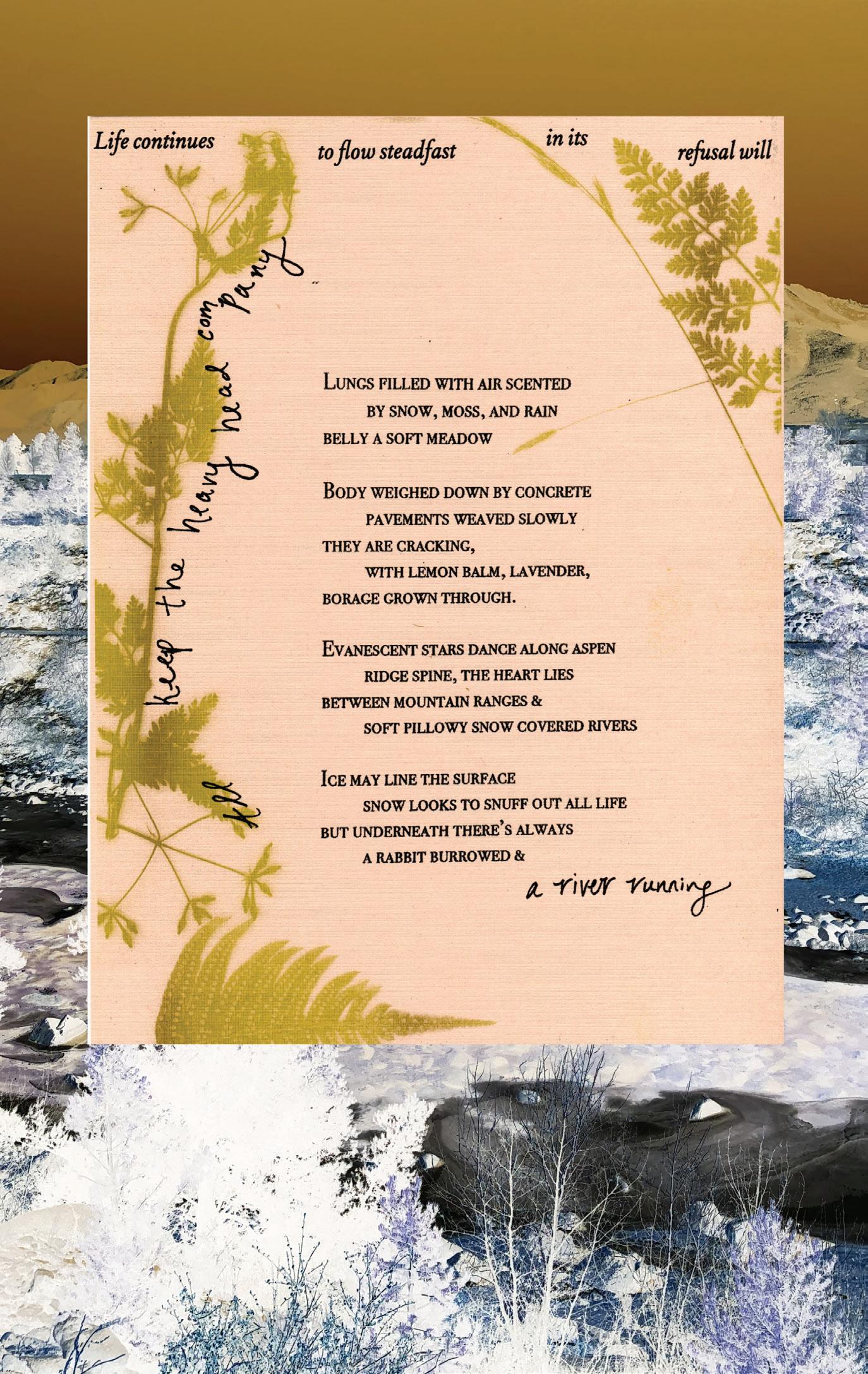
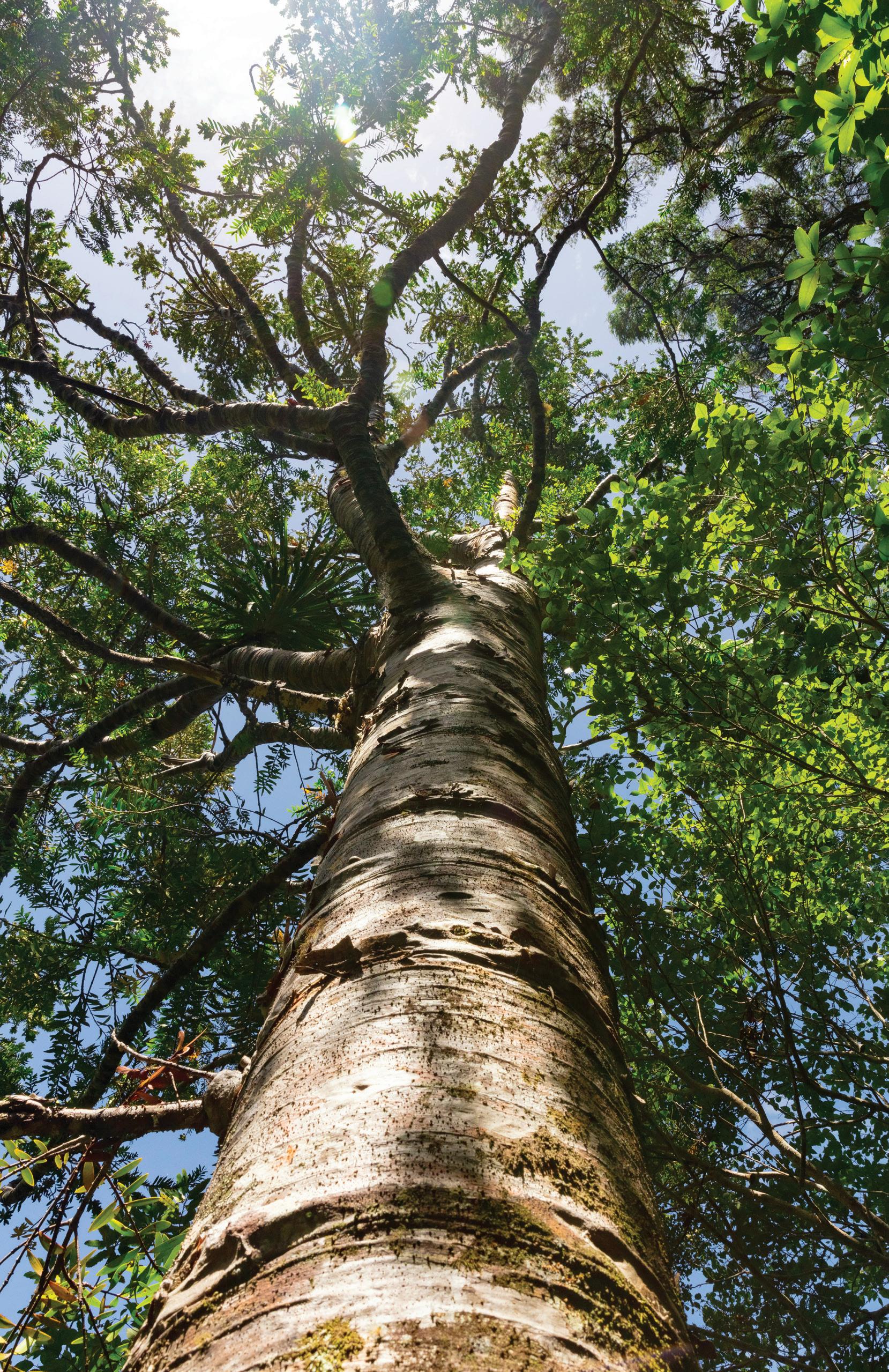
there’s this tree, contained within chain link walls, housed just outside a welding supply warehouse. in twenty years, the warehouse will be nothing. the tree will still persist. this is what’s visible: a small square of bleached dirt, and a presumably-doomed sapling. this is what’s not: roots—raging against concrete confines, intermingling with mycelium militia, and reaching, through root caps, to break bread with their kin.
in twenty years, the pavement will be nothing compared to the pressure.

Words by Bri Campbell
The flowers are fluorescent, falsettoing look at her, blowing her bubbles, to watch Earth throw up her arms, giving her bare chest to the sun, shrubs of jasmine are cursive to the nose, breasts upturned, as God and her gouache have a field day, under a layer of blond, wisteria bundles are indulgence for the onlooker. To be lacquered in green, gardenias just the used tissues of those who missed the warmth, to be budding and withering feels worlds away, again.
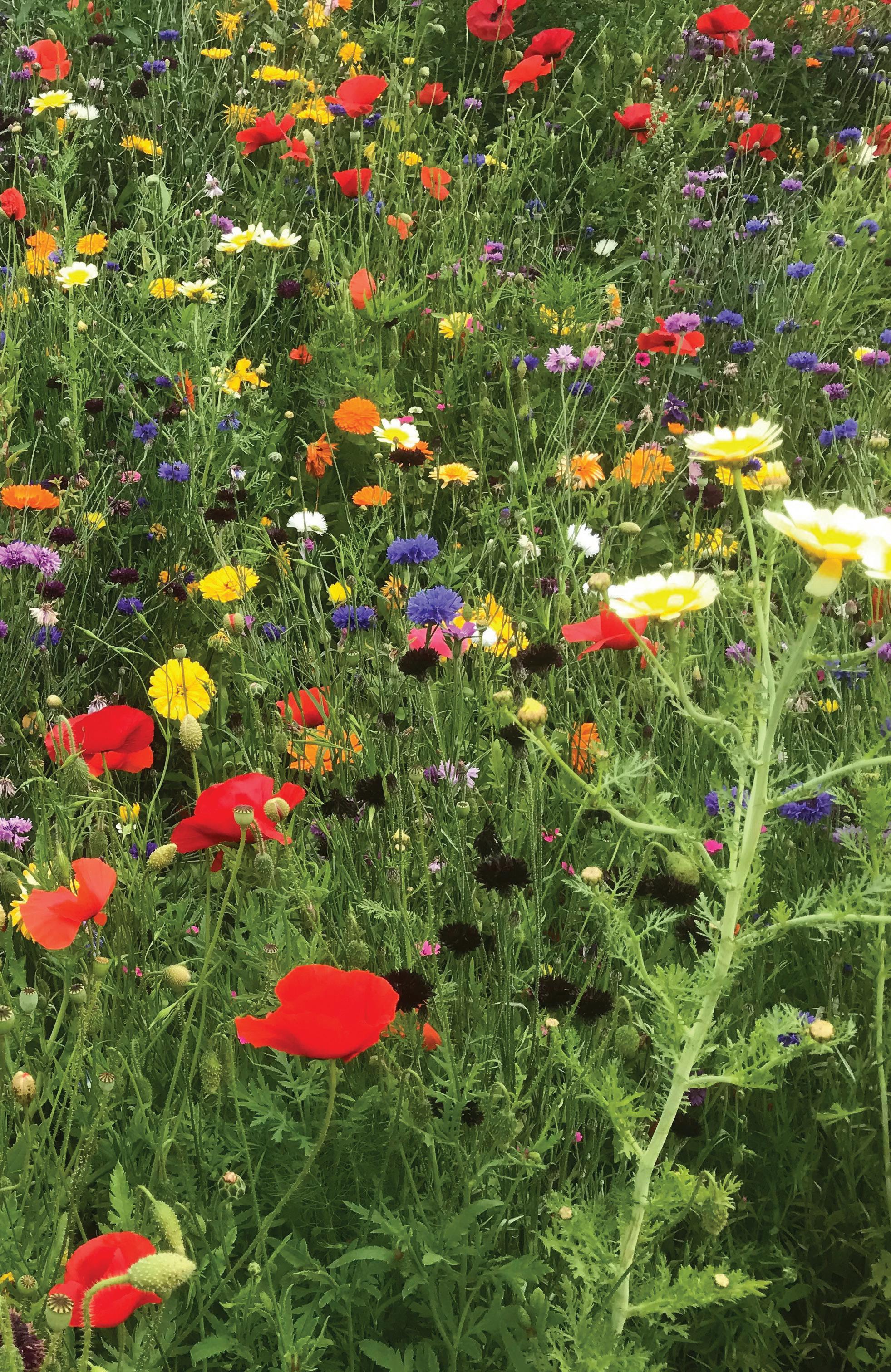
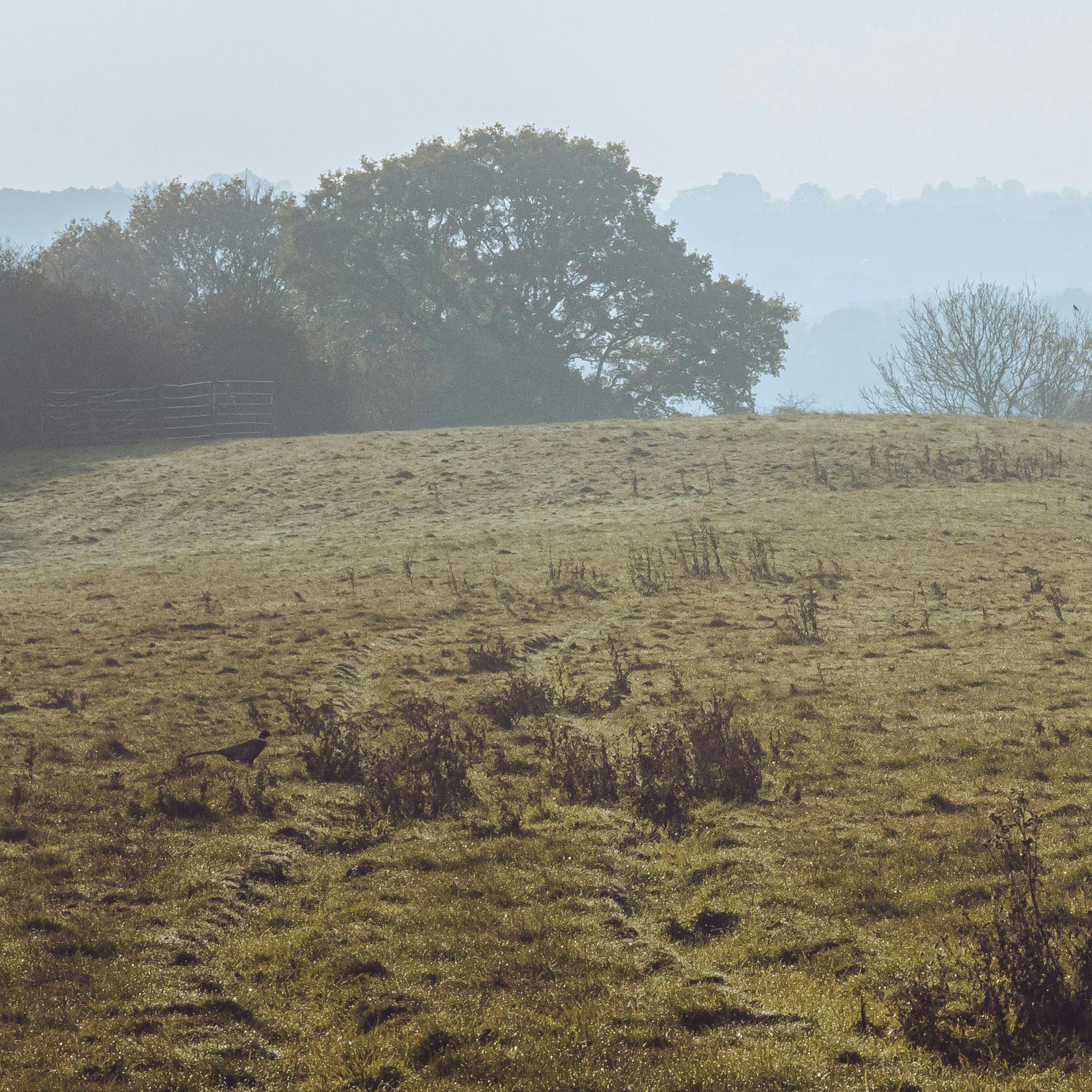
by Liv Soter
Cold, dry, and aching.
No snow with its icy brilliance or slow, steady hydration. It’s not the kind of winter that promises fast-flowing meltwater or romantic blossoms brewing in bulbs under an insulating layer, unseen, crisscrossed by the paths of rodents.
No shroud to cover the slow decay.
It is a winter of prevailing winds—unrelenting.
Winds that blister, crack skin, and numb toes. Winds that wear you down before you have time to realize you have been bracing yourself for decades. Before you have time to realize your rage.
The scaffolds of crops lay abandoned, stiff in the fields. Three lacy skeletons—the husks of ground cherries rustle against each other. Blades of withered grass pierce the low grey clouds, searching to spear an obsolete sun.
Leafless trees stand at attention far off along the receding ridgeline. A transpicuous strip, dissecting property—land carved up, tilled, furrowed, seeded, harvested. Fallow. Past the shaved stubble of cornstalks, a hulking barn and farmhouse pretend not to notice.
The crow is dead long enough to freeze, claws curled inward, unable to decompose.
It summons me—get down, knees blunt on frost-hardened earth. Level with the creature—its dissolution precluded. Too cold, too dry, perhaps too acidic. The body is suspended. Exposed.
Feathers shiver. I hold my breath. The anguish of waiting for the conditions of transformation.
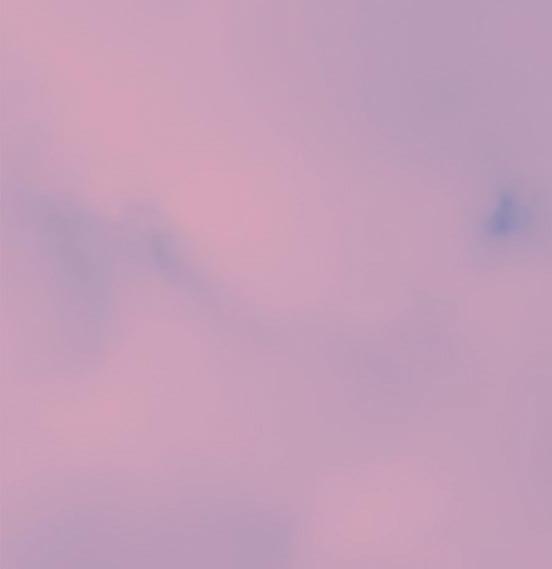
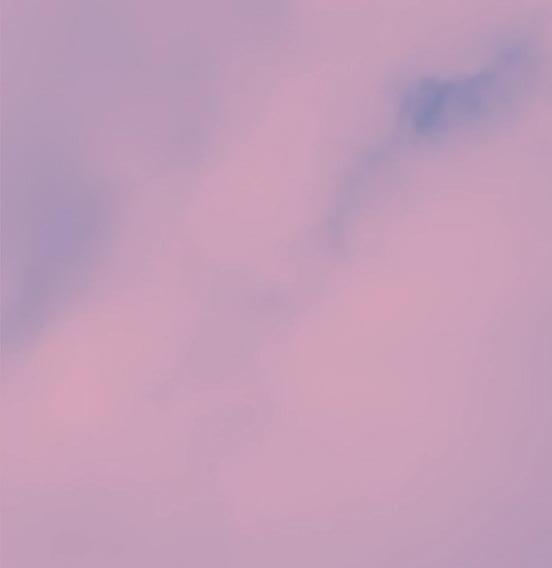
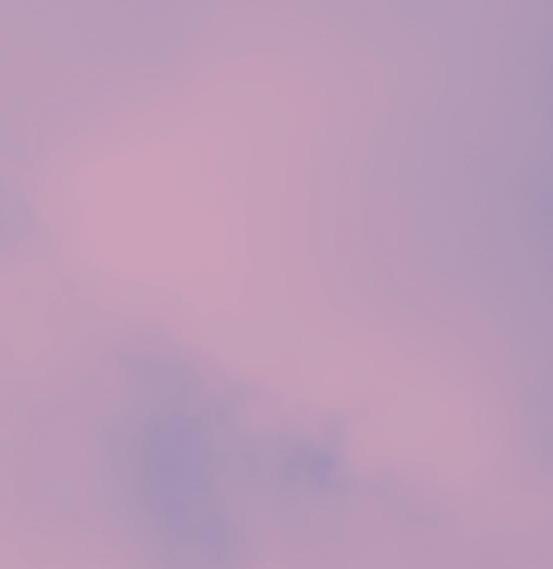
compound mirror of the mantis shrimp – your gaze leaves me reeling. moonscape of lens/prism/microscope, absorbing a spectrum of light we can only begin to imagine in dreams, hallucinations, in waters unwelcome to those of us that drink air instead. your Queerness effervescent. you blink: tens of thousands of shutters shutter – click, close, open back up. they say you are not complex enough to coalesce the spectrum of your sight, to process the fullness of your prophecy, that the wondrous world filtering in through your eyes is lost in a game of telephone you play alone. i think otherwise, think you know best. think you were cassandra’s own muse, think we are too ashamed to admit our fear of the future to read ourselves into it, embarrassed by the ways we cannot anticipate every need, every craving, every desire. please, lead us into tomorrow’s dazzling forecast let us be ready for your fierce vision, your divinity – let us never look away
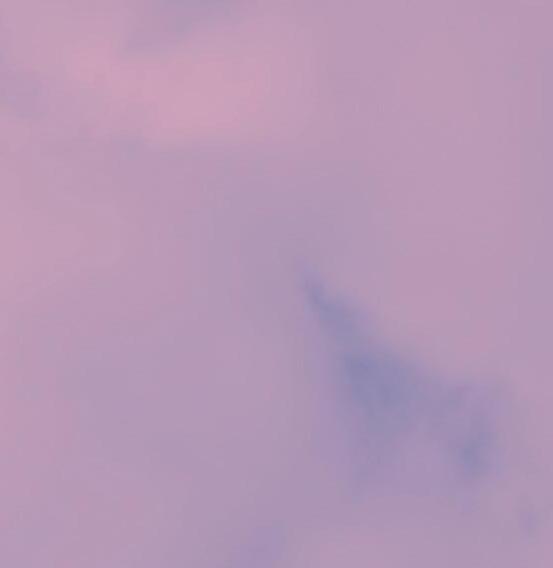
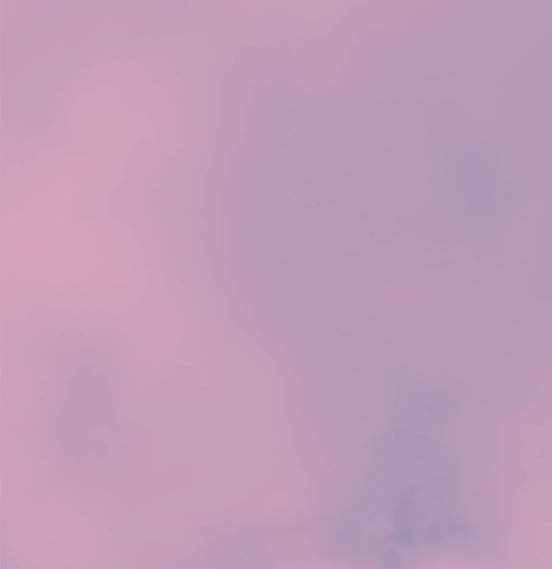
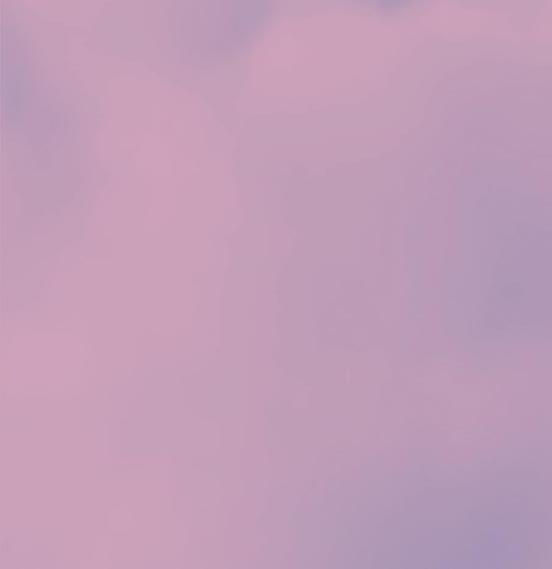
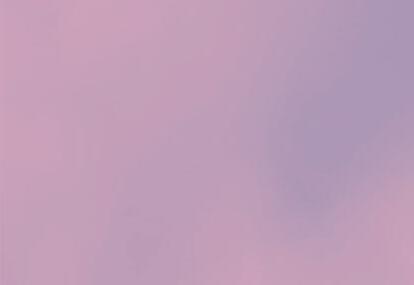
Words by Gaby Bee
Art by Chloe Parsons
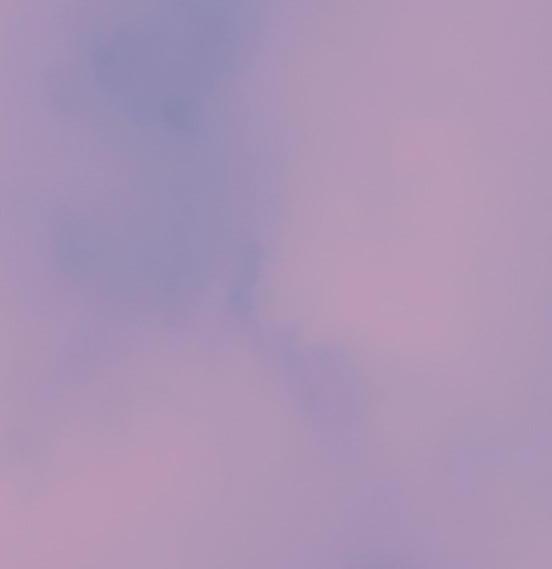
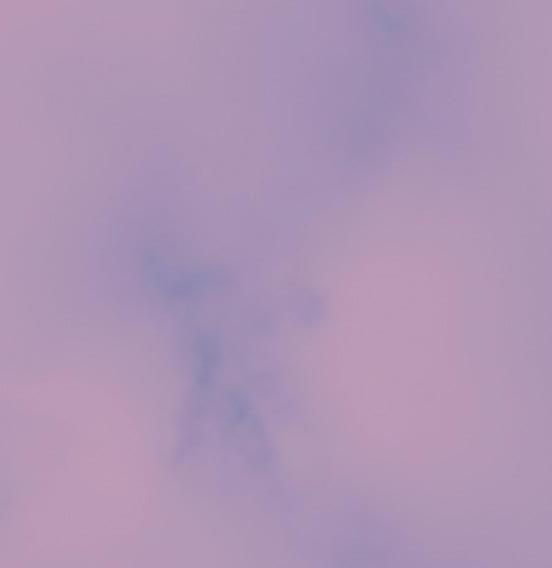
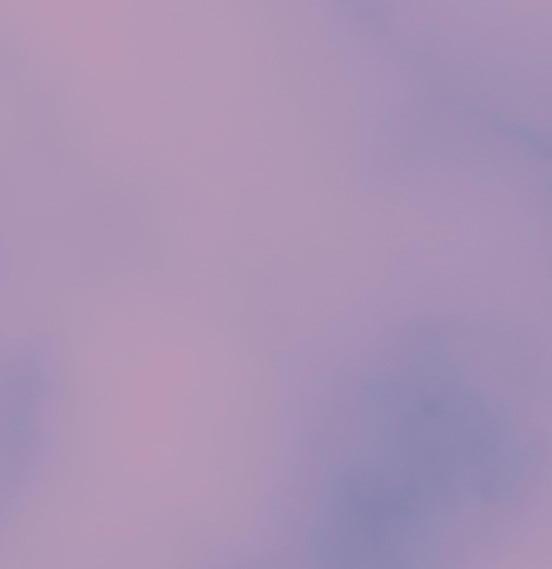




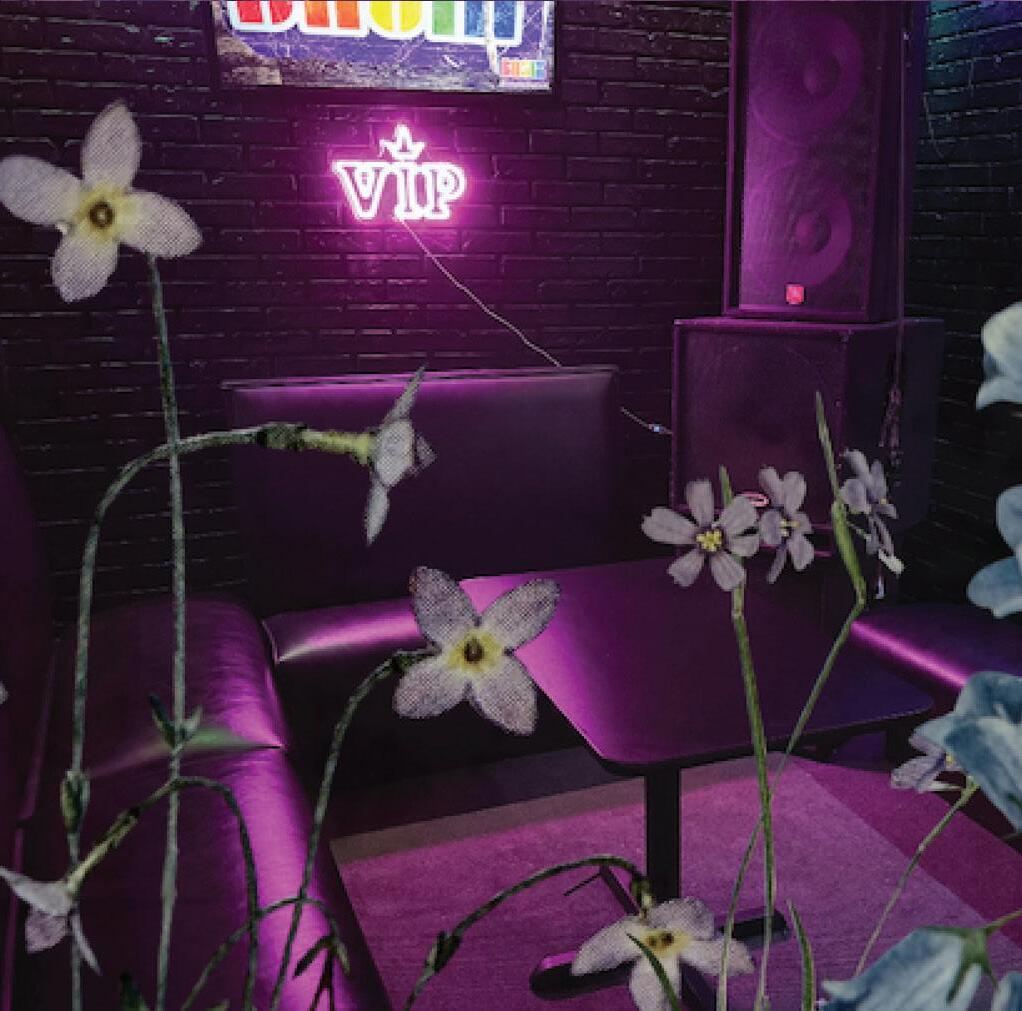
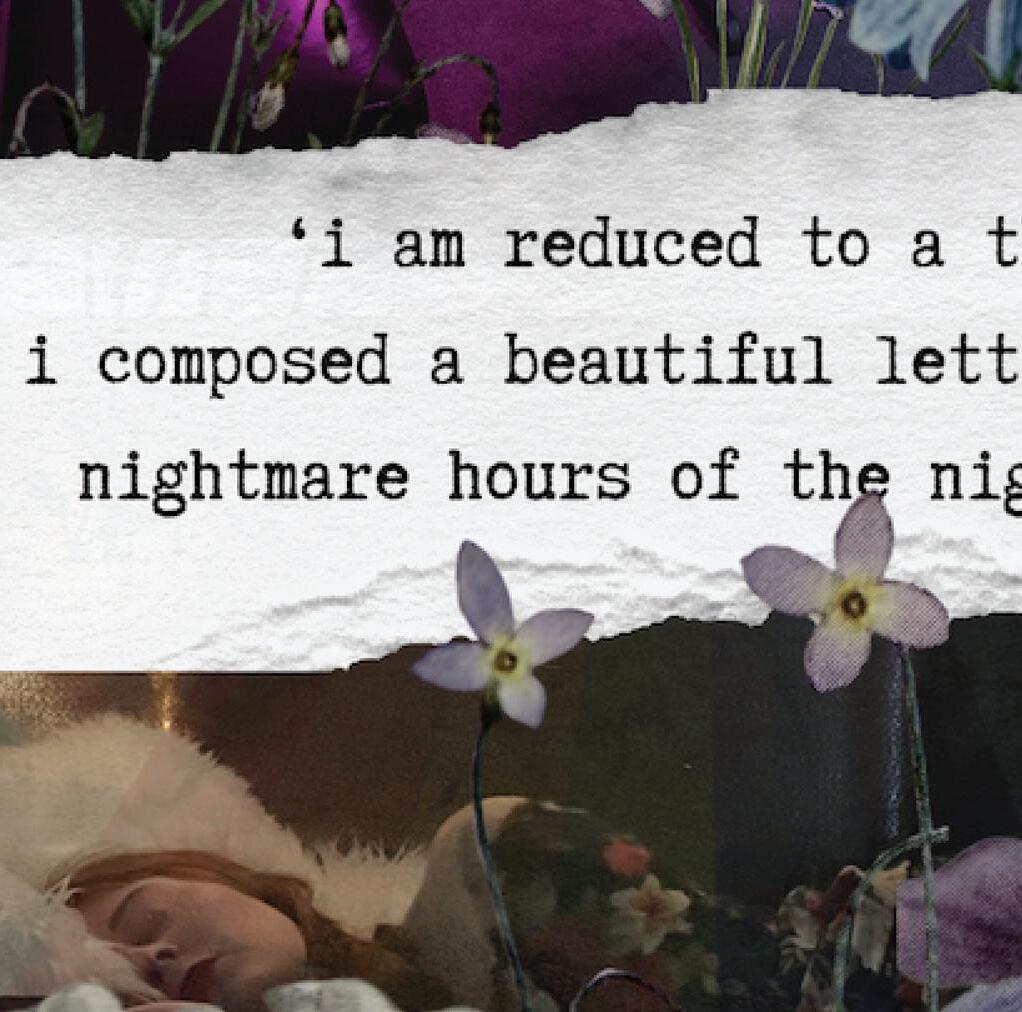
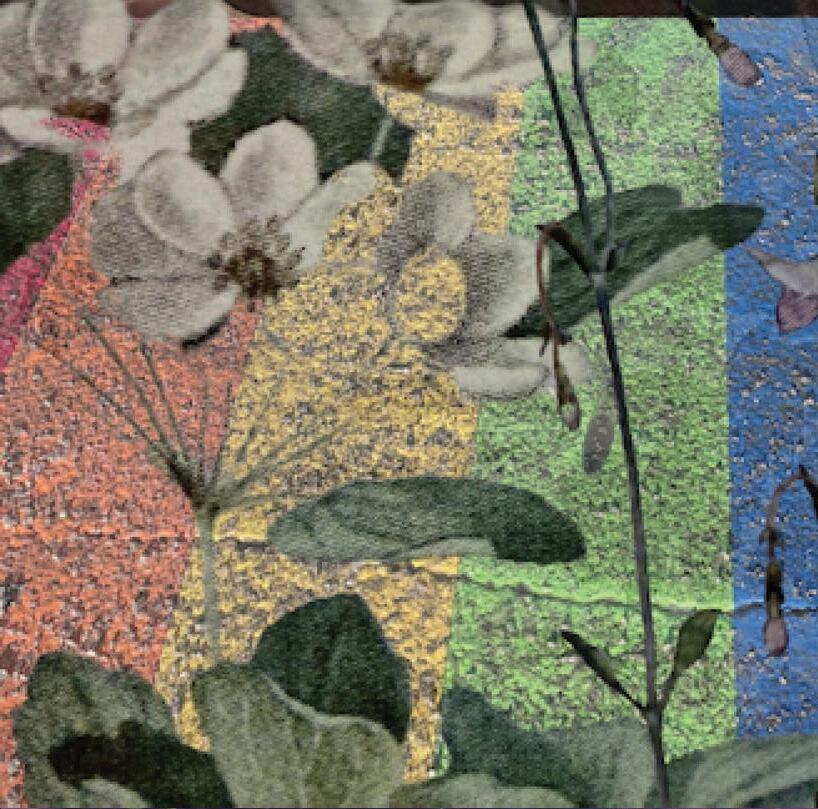

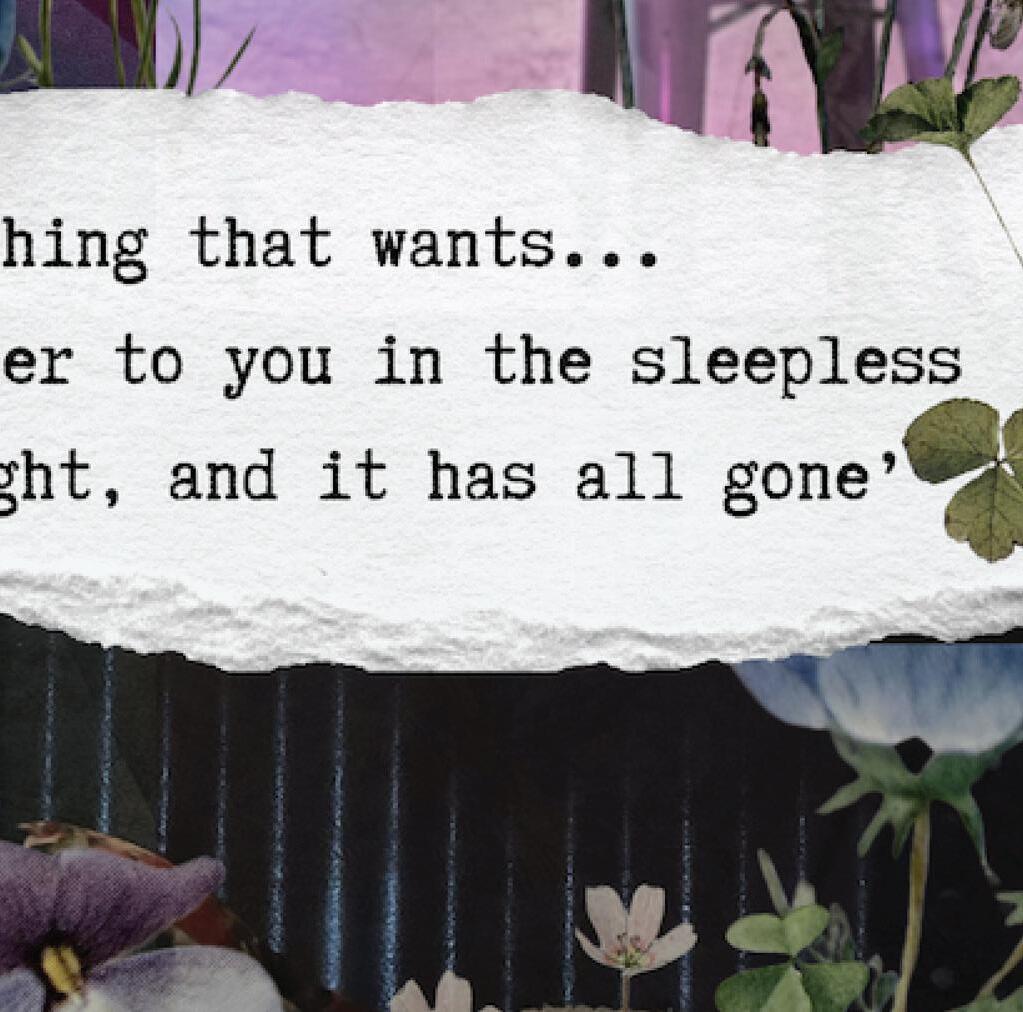
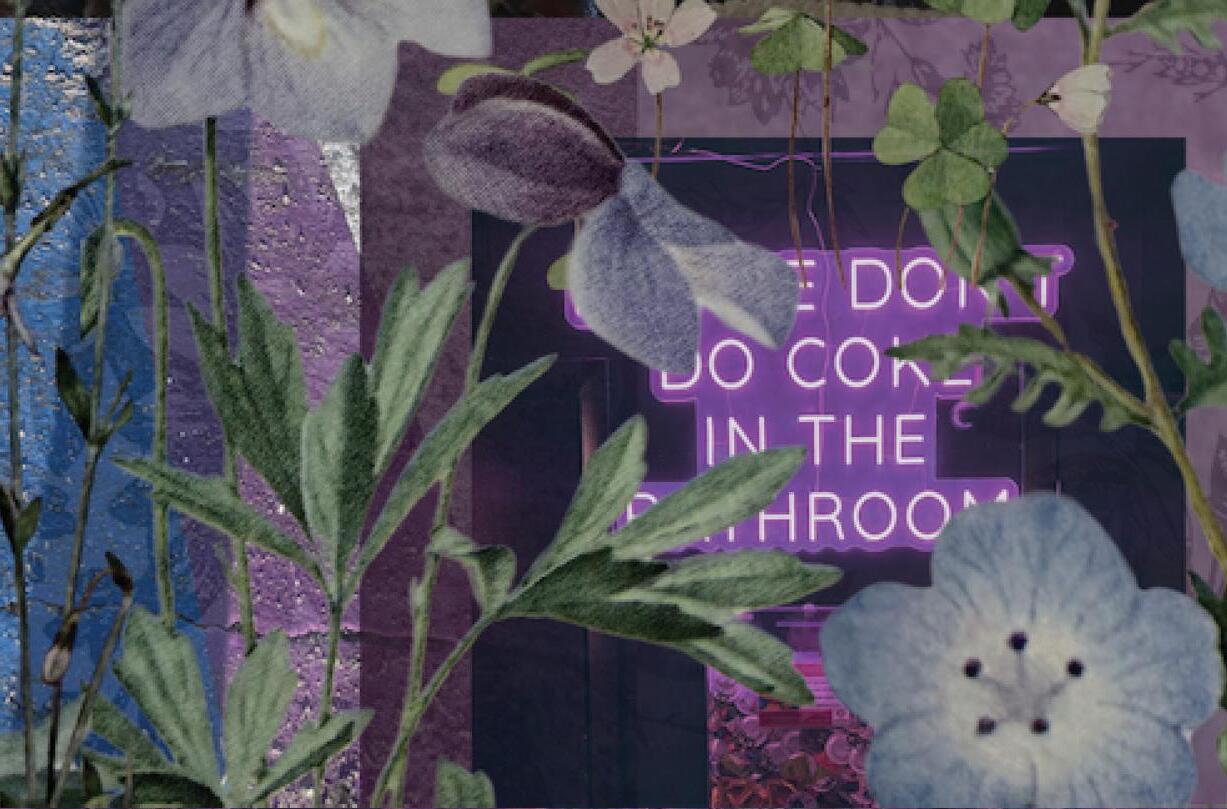


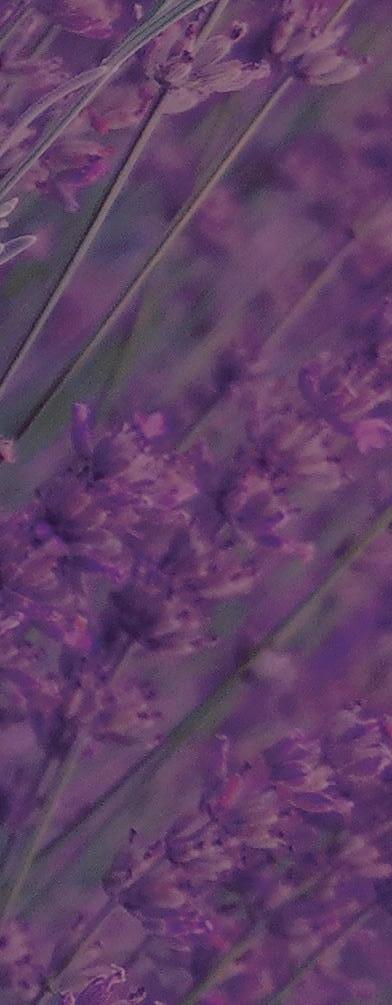
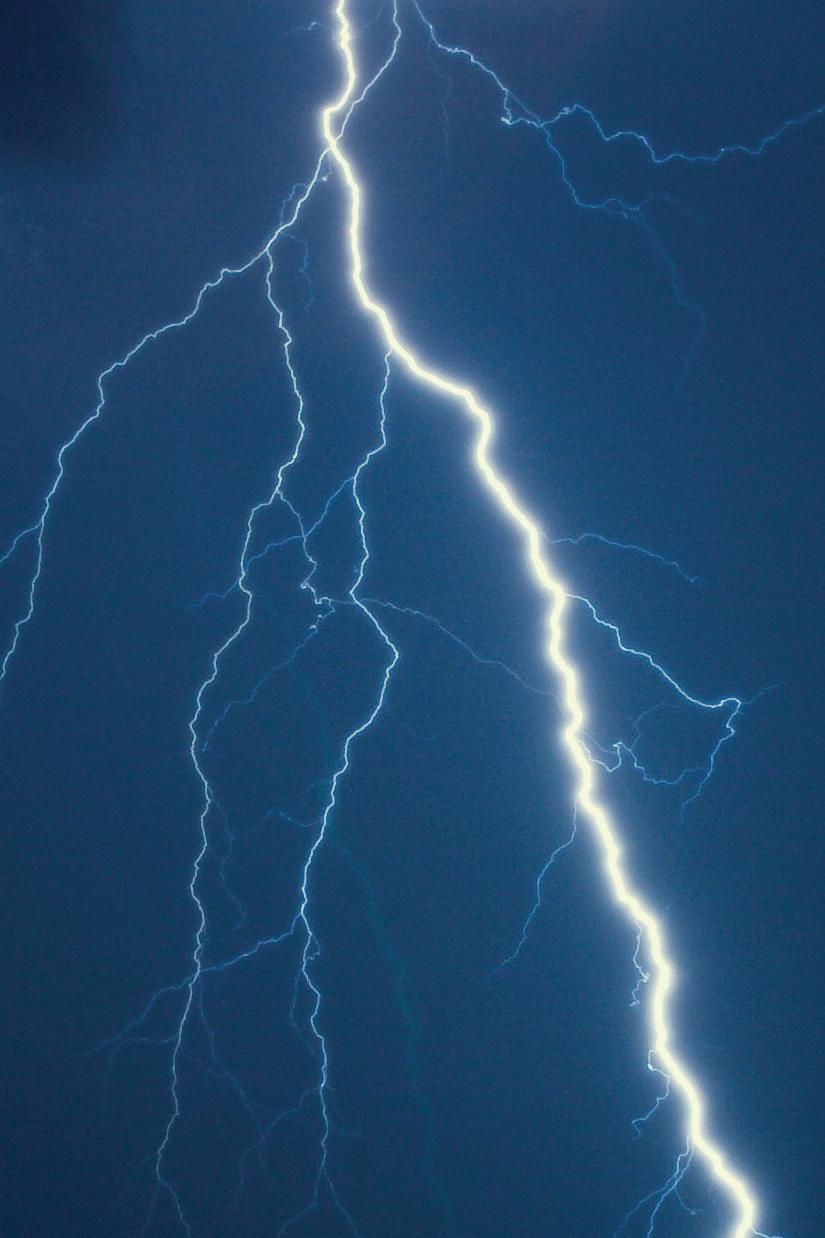

Words by Bennett Rine
today i am tired of wires that don’t ever work, chewed by the dog and frayed at the end.
today i want a portable charger that fixes things and can regenerate cobalt all on its own.
today i am like the pile of nuclear waste down the road. my phone is dead, i am fertile and could spawn my own godzilla but i would still have the same hands, same footprint
the same house painted beige. some days i think mom is right when she says i am just against the world and wound up, so in love with the color blue.
i start with imagining us as a blue cord heaven yanked down by lightning filling the whole sky with something acrid, i couldn’t explain even if i tried.
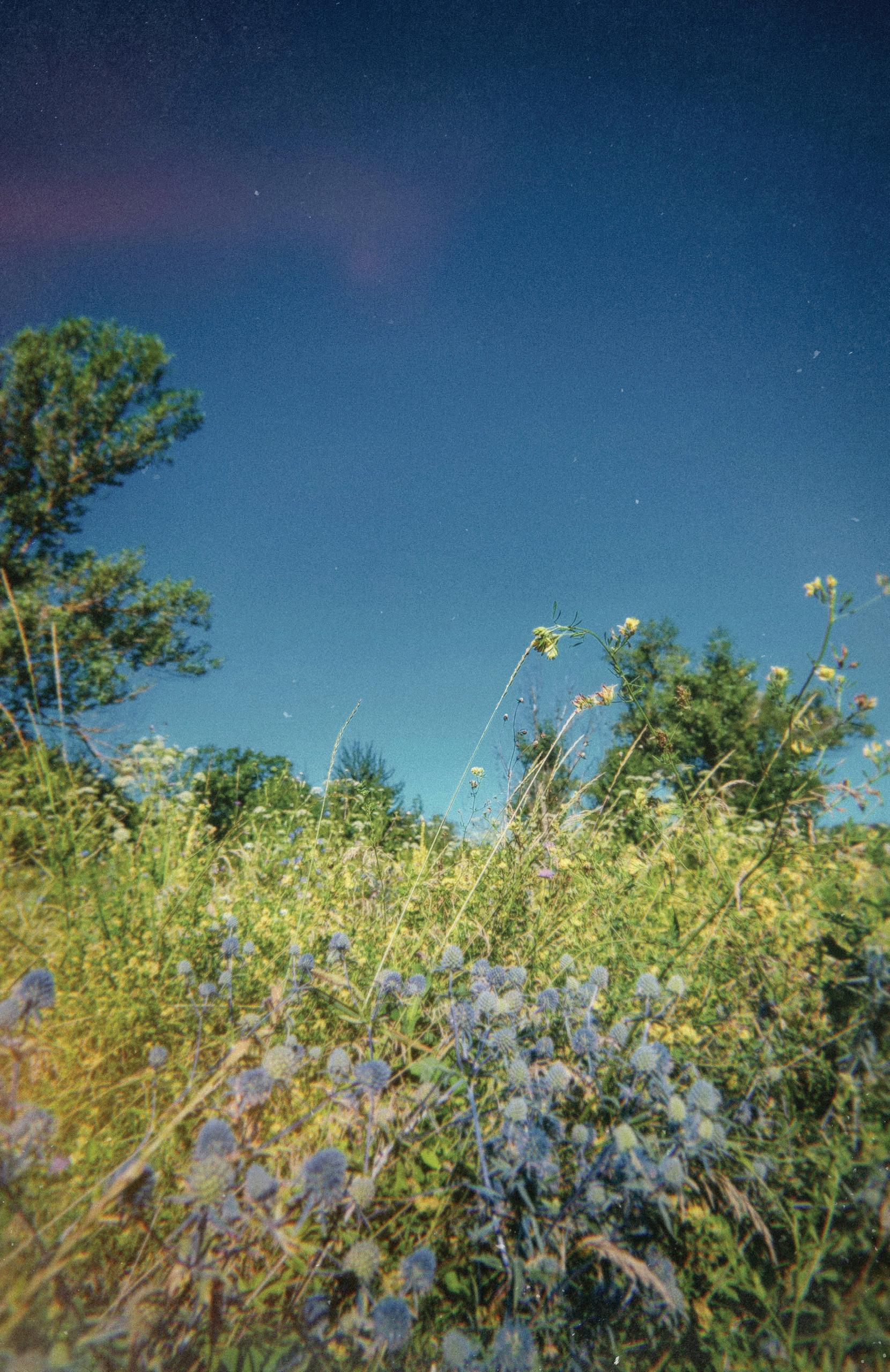
Transitive Verbs Words by Em Buth
Archaea Words by Morgan Champine
Wildflowers Words by Surya Du Preez
Look to the Mangroves Words by Gale Winegarden
Modern Marsyas (Self Portrait with Beer and Deer) Art by Emerson Hayes Jermstad You Are A Telephone Pole Words and Art by Tzushan Chu
City Landscape Words by Caroline Brink
Words by Em Buth




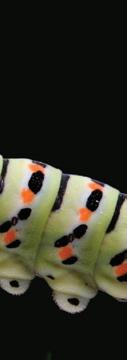
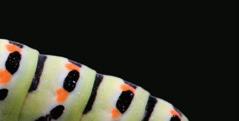







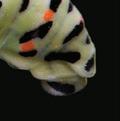
I’ve been finding more embroidery cloth in the same antique mall every time I visit. Isn’t that funny? How something becomes easier to find once you are always searching for it? Now I know how they should look—tucked between piles of linens and smelling like mothballs and old lady perfume, sandwiched between two shinier looking things. Often they lay out floral scenes, or otherwise simple patchwork shapes. Sometimes they open up into forests. The tips of my fingers occasionally break out into hives from my embarrassing dust allergy, one or two red itchy burning welts, lit flame from the object and its memory. And still I take the embroidery artwork home, and I don’t wash it.
But this is not why I am writing to you.
I am writing to you to tell you that I slipped again the other day. Right after I took my testosterone shot. The needle plunged down and I was someplace else.
And yes—the passage was a slipping. Well, maybe ‘slippage’ is a more apt word, to describe how it moved me like a needle through fabric. And I could see this somewhere through a tiny pinprick hole.
I think you know what that feels like.
Most importantly though, I am writing to tell you I miss you terribly, and that I want you to know about the slippage and how I am not sure what causes it.
Of course it started a lot smaller. It was between blinking pauses, and in that between, I wasn’t. One of the first times I noticed it, I was at the grocery store. The lines were long and everyone was wrapped up in getting to the register. I asked the cashier if today was one of the store’s busiest days, but I heard the response come from my own mouth, and I could stare back at fidgeting hands from over the register screen. His thoughts were on a dog home alone and he had a hunger like mine. He was not impressed, and from his throat I said:
“Monday and Sunday always are.”
And when I was him, I saw his memories folded out like tendrils of embroidery thread, on a canvas that patches together, almost limitless. Every thought, a knot. All tied to each other.
Which is to say, we were both very tired.
When you slipped, it was always into the things I never knew could have memories. Old fox furs, brass knobs, wedding gowns, broken cameras, memorabilia lunchboxes. You loved standing in the middle of Savers with a grin on your face, recounting to me how one teapot got all the way out here. When I would come home at night after work, and crawl under the bedsheets, I could feel from how your body tucked up that you had slipped into the scenic oil paintings and quilted landscapes that adorned your walls, places that neither of us had seen in person. Except for the lone lakeside cabin that sits framed on your nightstand. You know the one, we stayed in it for a long weekend many years before, and on many succeeding visits, as a corner of the world that felt uniquely for ourselves. Now it is caught in the shaky needlework I made for you one birthday, so you could still visit, while we were not there properly.
Disappearing acts aren’t so uncommon, but this is not disappearing. It is a removal, and a movement. We have both talked about how it feels to not be at home in this place. Because it is hard here, and evil sometimes too. Once, you told me we would’ve met anywhere and everywhere. And I agree. I was always meant to find you.
I am looking for you now.
Since the initial catalyst, I tried learning how to control it, but I’m not so sure that is entirely possible. More is lost when we bring in ideas of conquering a space, a body, a mind. But now I can’t even walk into the grocery store without moving from person to person to person, while my body drools over the vegetables. So I avoid
it entirely. Where you embraced the things you could slip on and in to, I’ve learned to be afraid of.
One time, as you traced my freckles as if they were constellations, we talked about memories that feel as if they are happening from above, in third person. This slippage feels more of the same. And sometimes I don’t remember myself, only everyone else.
When I slip now, I am often in the pines. Just as I was when I was taking my testosterone shot. I became the moose whose head now hangs heavy and dusty in the cabin. I moved through his eyes. And while I was there, I saw you. You were walking through yellow trees and I could feel every lift-prick fall of leaves. We were in the leaving place, and your movement was beautiful. You looked up.
And then I became the conversation of the trees in those woods, and their threads aren’t embroidery, but rather tangled delicate spider webs, all the more they held each other. They knew I was with them, transitioning through their language of interlocking movement. I followed you as you were walking, and as I looked for what you were heading towards, I came back to, sitting on my bed, with the needle remaining plunged.
I told you that while taking my HRT shot, I must wait five seconds after injection before pulling out the needle. And so it goes. The removal of it is my least favorite part. I forget how long the needle is until I am taking it out, and I no longer want to hold it straight. I manage just fine still. I cap the needle and put it in the empty laundry detergent bottle.

It must have been only five seconds that I was there, seeing you through the trees, as the trees. But I felt dusty like the lapping folds of embroidery patchwork in the thrift store, or the moose whose eyes were replaced with marbled glass the first time we saw him in the cabin, before I became him.





But that is how I know you are someplace I can look for, past or future, because you were in those woods too. All parts of you, your physical body, your mind and soul. And since you had slipped, I didn’t think it was possible, but now I am looking for you more frequently and fervently, hoping you will recognize me too, maybe taking the form you can most recognize me as, the body that found you in the first place. And isn’t that
ironic? The first time we met, I had slipped on the sidewalk and you caught me. I had slipped to you.
You always marvelled at the lace on display behind museum glass. I visit now nearly every day, hovering over where they are pinned— hoping that you are caught in the lattice work, if only for a moment, and can see me staring back. If you are there, I wonder if you feel the hands that moved the thread as you were made. The click-clack of knobs in the same place over and over. I also hang up every embroidery design on the wall, windows for you to peer through, if you get a chance.
Or maybe for a moment, you are reading this too, from the marbled glass eyes of a moose that hangs over my head right now. I always told you I wanted to visit that cabin once more. I hope you can read my message in a bottle and look for me too.
I think I may have a pretty good idea, as I have had time to write to you, what causes my slipping. Yet, I still have no idea what caused yours. And maybe slipping is the process of the degree, so to speak. Slipping connotes the movement, and slippage the degree to which one falls, but now I’m looking to what that destination really is. You moved into those things of the past, and I of the present, but I think this emerging thing is looking towards the future. I know how you felt as we braced each other on the train platform, before I was holding onto air. The slipping took your body with you this time. I hope you are safe while you are moving through to your destination. In no time at all, I will slip again to you.


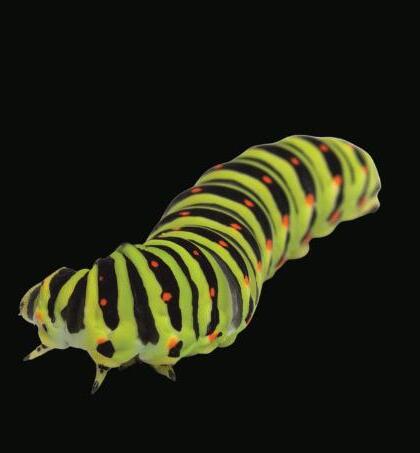



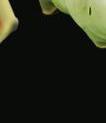
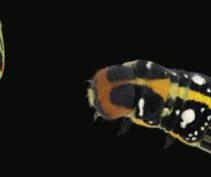


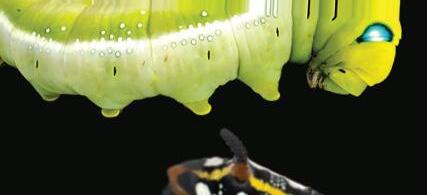
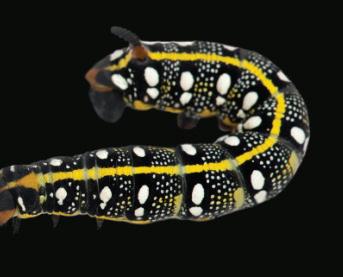
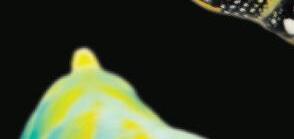
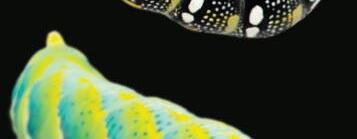
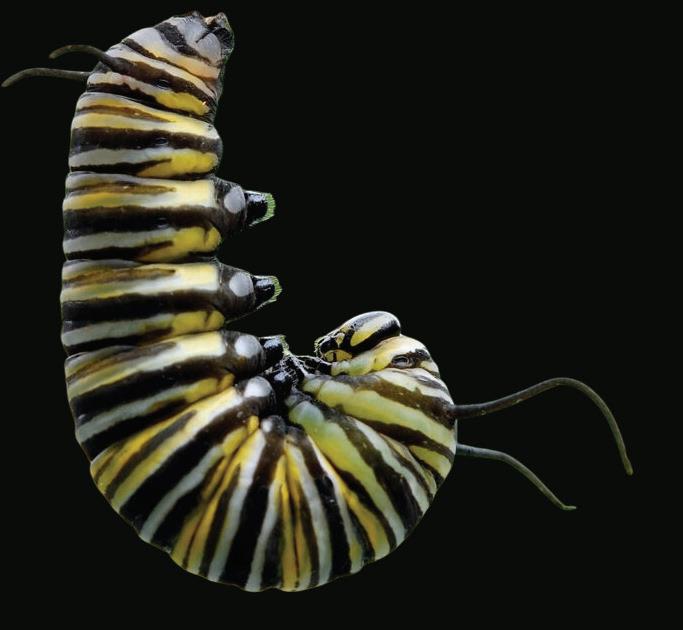
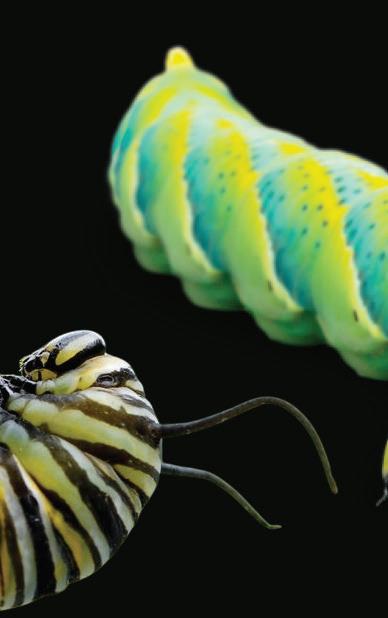

Words by Morgan Champine
by Katie Hilliard
Ancient, of course, depends on your definition of time. Is it always existing? Is it slowly creeping? Is it stretching into the vast expanses of the universe, palms reaching for the end of the world as we know it? Or the end of the world as we don’t know it? Does an apple tree flower in arctic conditions? Subatomic ones?
The cauldron of energy hisses at us from under the tectonic plates. Bubbles of life whisper. They sing. The notes are a bit flat, a bit sharp, but it’s a song all the same.
Astrobiology is made up. It has to be made up. There’s no way—literally no way that’s true. That’s not a real subject. Space doesn’t have life.
Does it?
Magma burns just below the Earth’s surface. It smells like your grandmother’s moltenhot chocolate chip cookies. It bakes the edge of your skin pink like the sun around the chlorine stink of a public pool. Weeds are pioneer plants—they spread fast, like a stumbling paralytic infection. Like a ray of starlight leaking through a window.
Mycelium networks buzz under the soles of your feet. From your toes to the tip of your head, they tell you the honest truth. Everything in the world, through a vast network of creeping fungi and fierce little atoms, knows each other thing. You’re not the only thing existing in this whole wide universe. You can’t be the only one. It’s statistically impossible.
Nature recognizes nature. Biodiversity is a product of time. Your diversity is a product of self.
In the harshest, hottest of conditions, in Florida, in the red deserts of Utah, inside a terrestrial celestial hot spring, on a potato farm in Idaho, you pull your cap back and glance up at the stars as they flash pink, white, blue. You’re staring at the past, a million light years away from you. They look at you and see the future. A comet gets caught in the fine hairs starting to sprout on your chin. A little old to grow a beard, but the stars won’t judge. No one who matters will.
Archaea pound on the glass door of the petri dish. They leak out the sides, spilling over in gobs of iridescent neon. You grab your friend’s hand and tug them through the parade crowd, forming an ester bond. You are the powerhouse of your community.
Your lemon tree is dying. You bury poppies in the soil nearby. Soon, biology will be discovered, but not by you. Not by me, either. By all of us.
The inner workings of a eucalyptus leaf bore over the edges of your vision, splitting like Venn diagrams, a whisper of watercolor sap holes. It curls like helixes, forming life and tears itself apart. You know it, intrinsically, grew up with it nestled in the empty space next to your heart.
The hedge in front of your mother’s house has gotten out of control. The woman you love wears her battle scars like arcing rainbows. Somewhere, in every place in the world, a blade of grass lets out a breath.
The universe smiles at you, curling like the stem of a daisy. Does it know you?
Of course it does. Haven’t you been paying attention?


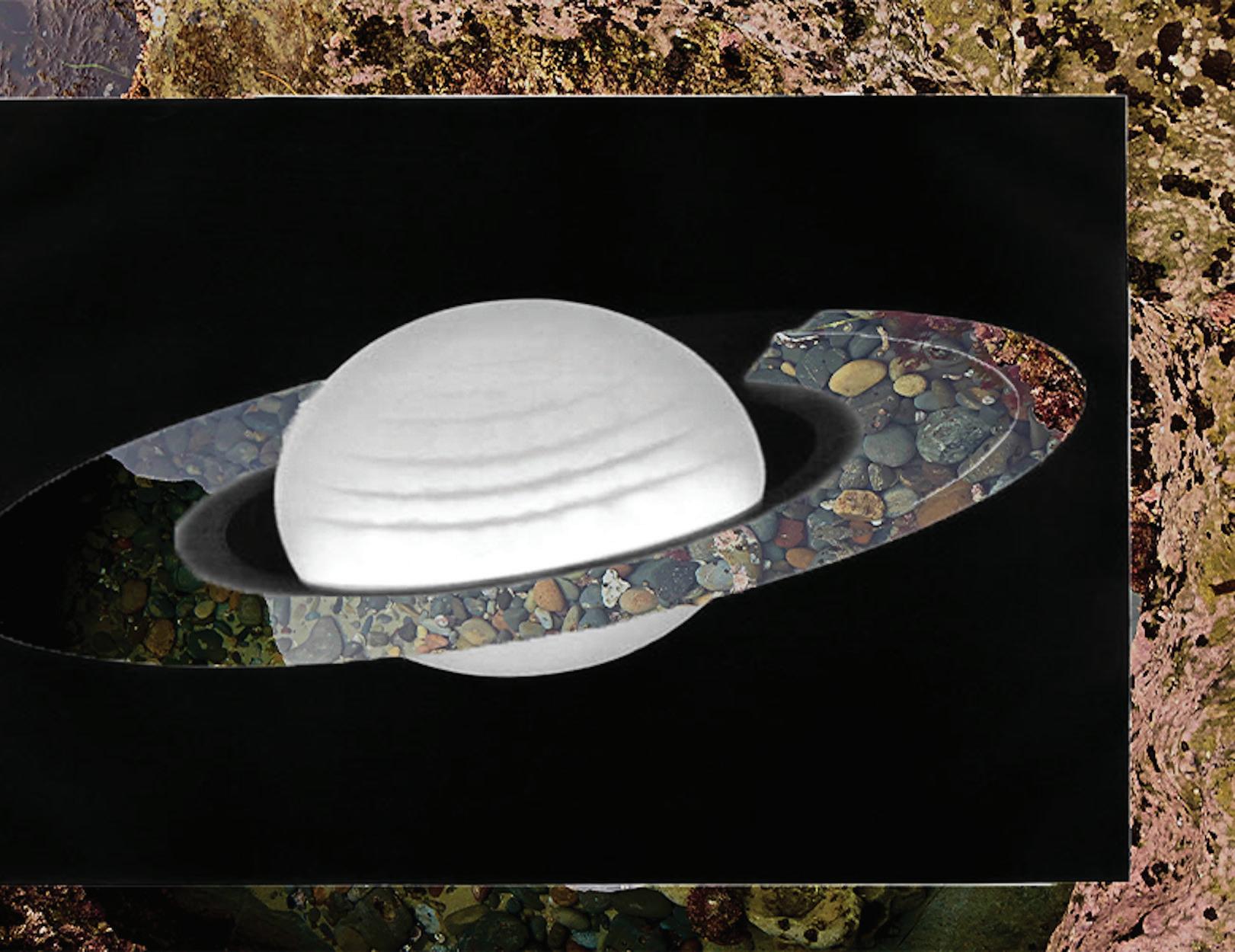
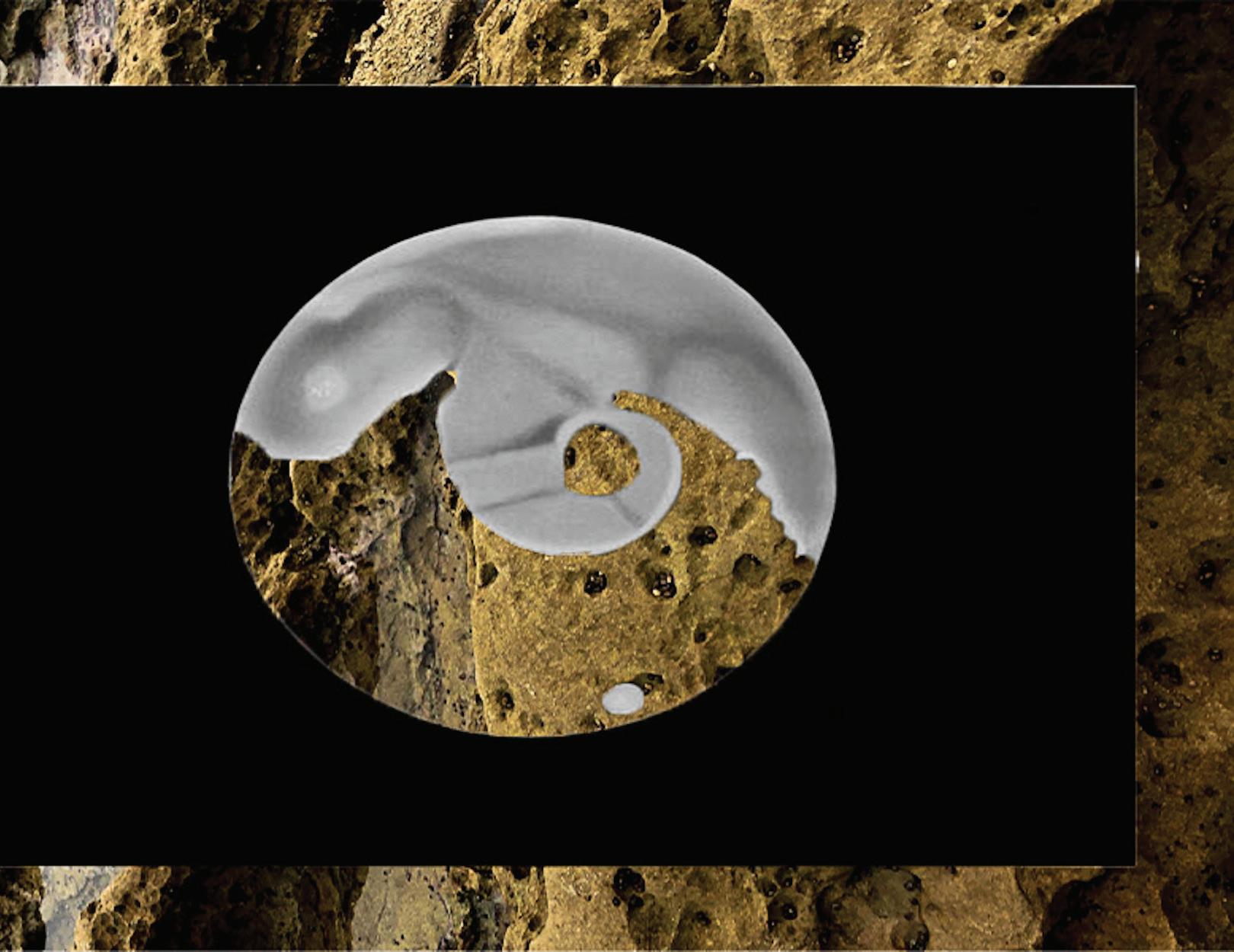
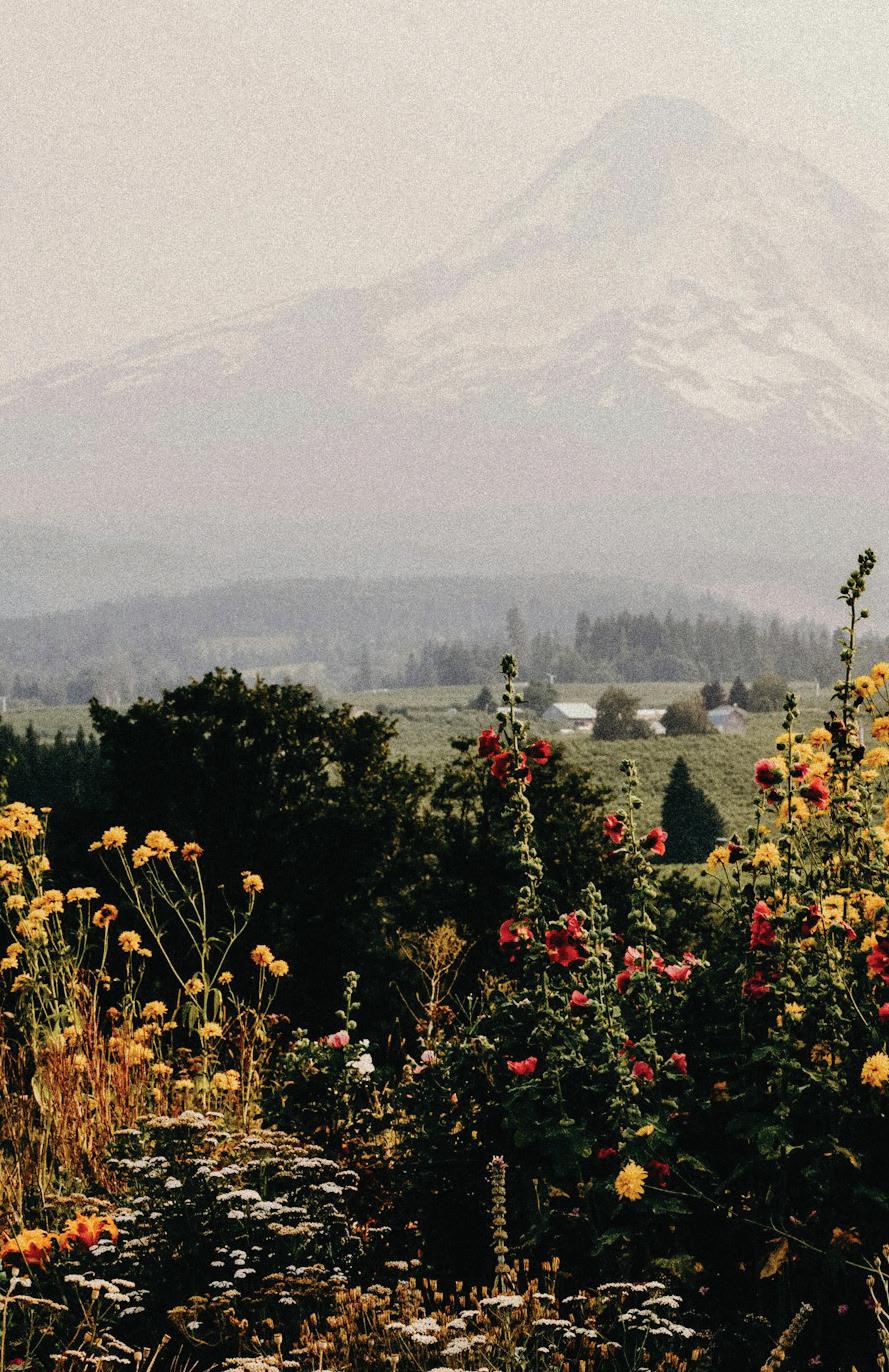

Words by Surya Du Preez
CHARACTERS:
ROHIT, has spent the last year categorising flora and fauna in an abandoned parking lot. Lost, questioning.
ELIO, has spent the past year with Rohit in the lot. Grounded, comforting.
SETTING:
An abandoned, crumbling parking lot near a dead mall. The lot has been completely covered in plants and has developed its own ecosystem.
ACT ONE
SCENE ONE


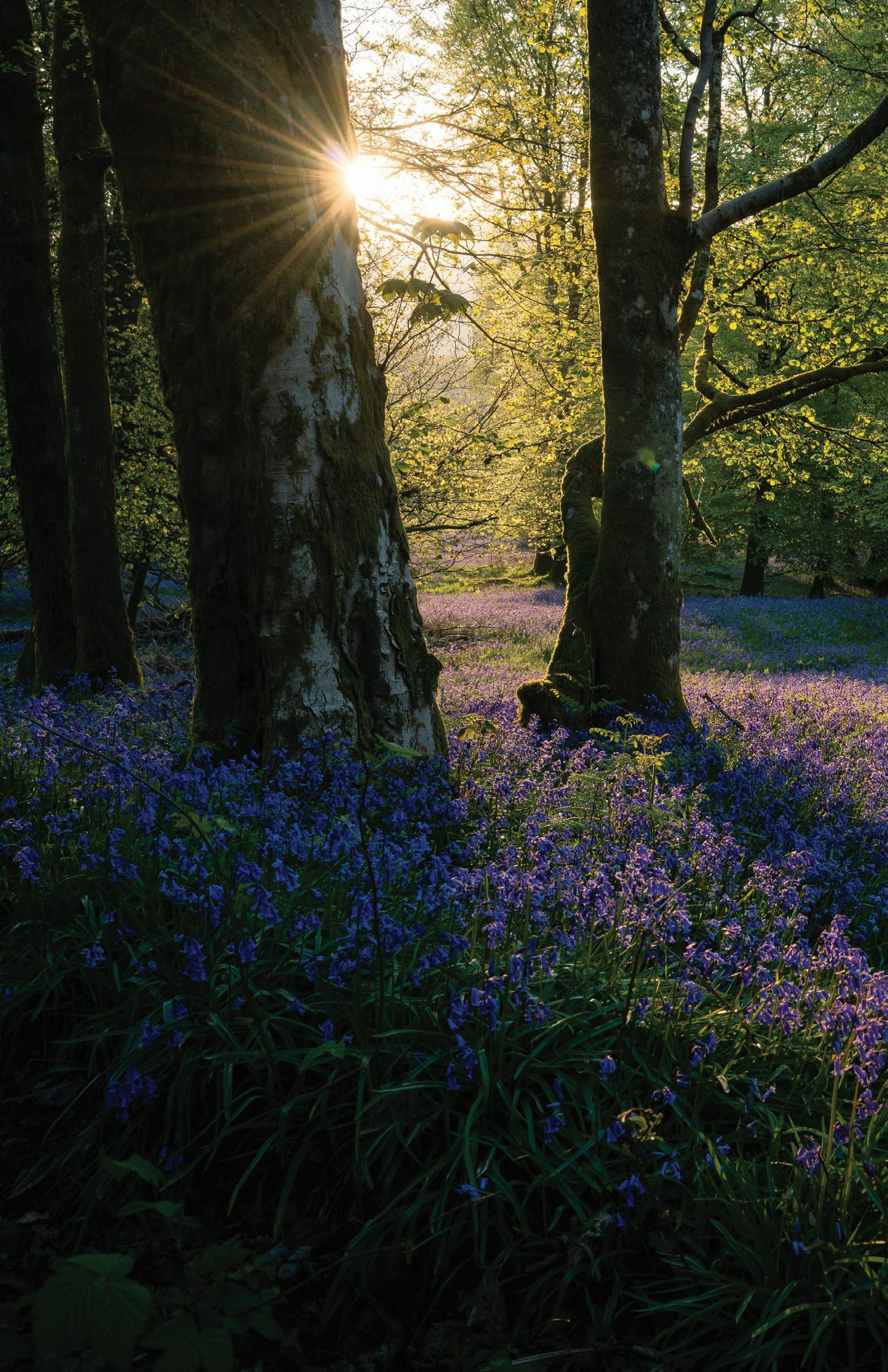
ROHIT
SOFTLYSPOKEN,CURIOUS.
ELIO


XE TILT XER HEAD TO THE SIDE.
Sometimes, I suppose. What brought this on?
ROHIT



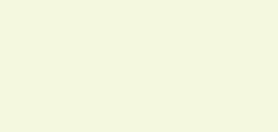
ELIOentersfrombehindalargetreewithvineswrappedaroundthetrunk.
Brightsunlightsanabandonedandcrumblingparkinglotnexttoadeadmall.
ROHITissittingdownbythelargestpatchofflowers.

Elio, do you ever feel like home is actually much farther from where you live?
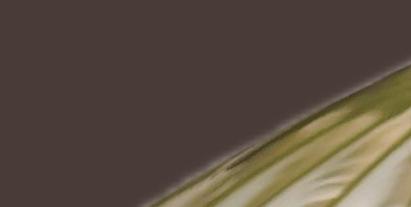


ROHIT FROWNS SLIGHTLY AND PURSES THEIR LIPS.

dirt
ELIO

ELIO MOVES TO BE IN PHYSICAL CONTACT WITH ROHIT.
It is wonderful here, isn’t it? I suppose I don’t quite feel at home anywhere but with you either, and the lot makes us seem more at home than ever.
It’s just... something about this empty lot spurs something in me. Our entire year was spent labouring under this sun at every possible moment, months spent categorising every speck of life and learning as much as humanly possible about them. When I sit here among the bugs and dirt I’m half sure I’ll start photosynthesising. I feel more at home here, with the wild daisies and you in my lap, than I do anywhere.


XEWRAPTHEIRARMSAROUNDROHIT,TURNINGTHEIRFACETOWARDSXEMSELF.
ROHIT
ROHIT LEANS MORE INTO ELIO’S HOLD.
I think it might have something to do with the flowers. They’re all so connected, intertwined. Their roots are tangled with each other regardless of their genus or species, they share their resources and bloom under the same sun, stuck in the confines of the same tar. I feel like that, sometimes. Stuck.
ELIO
Stuck where? We have the whole world, Rohit, you don’t need to take root. That’s the good part of all this, we can get up and go any time. We can migrate like the Monarchs and the birds. We can archive more hidden utopias like this one. We can do anything, go anywhere. Who needs one specific home when we can branch out and make home everywhere?
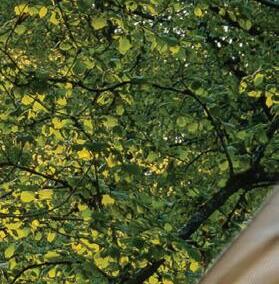


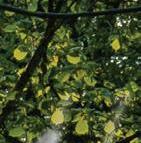
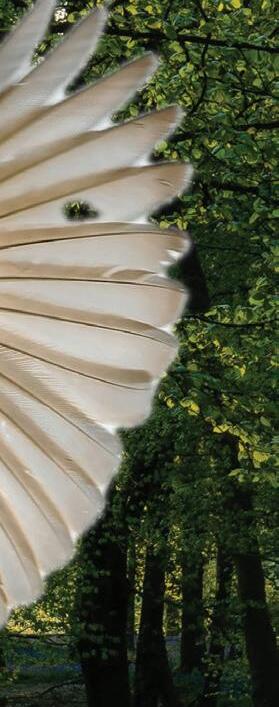
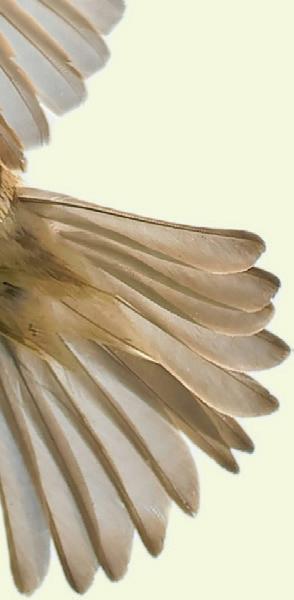


ROHIT
ROHITLOOKSDIRECTLYATELIO’SFACEANDGIGGLESABIT,TRAILINGTHEIR FINGERS GENTLY ACROSS XER ARMS.
So we’ll, what, be like butterflies then? Summer-hopping across the globe and traveling from flowerbed to flowerbed?
ELIO GRINS AND STANDS UP. XE MOVES TO PULL ROHIT UP TOO.
ELIO
Not quite.
ROHITANDELIOSTARTWALKINGACROSSTHELOT,THEFLOWERSSWISHINGASTHE COUPLE WALKS.
ROHIT
TrailingbehindELIO,smilingwidely.
Oh? Then what will we be?
ELIO
ELIOgrinswider.
We’ll be like wildflowers, sprouting anywhere we want, decorating the world with colour. We’ll be us, the weeds, the hardy stalks of dandelions, the vibrant rain of petals. The creeping of vines, the slime of a snail trailing where they’re not meant to. You and me, my love, will be unshakably everywhere.
ELIOANDROHITWALKOUTOFTHELOTASTHESUNSETS,HANDINTERTWINED.A MONARCH BUTTERFLY LANDS NEAR THE SPOT THEY COUPLE PREVIOUSLY OCCUPIED AND FLUTTERS ITS WINGS. CURTAINS
Words by Gale Wiegarde
Driving on I-1 and looking out the window at the brush lining the shoreline, we take in the Mangroves. Tree roots intertwine and grow away from their trunk, reaching for one another, connected in their own world, seemingly separate from our own world.
With the windows open, the salty air fills the car and the speed of the highway creates a wind that provides temporary relief from the sticky, humid air surrounding us. Even in the heat of the evening, we hold hands across the car console.
Waves start to come in, bringing high tide and marine life with them. Hydrophobic roots keep saltwater from being absorbed while the leaves purify the water for new guests. Young Rainbow Parrotfish play in the shallows, safe from predators.
We pull off onto the turnpike. The shoulders of the road turn from painted white lines and asphalt to sand and stilt roots. I let go of her hand as the car turns, adjusting my hold on the pyrex dish balanced on my lap. It’s Southern hospitality—you cannot show up somewhere empty handed (and key lime pie bars have always been her favorite).
The currents ebb and flow. Waves bring dirt and silt mixing it into the sand. With the movements, the trees grab hold, fighting erosion and forming new hidey-holes for Goliath Groupers. As the sun begins to set, oranges and pinks dance across the sky while small Tree Crabs blend in with branches as they climb and seek out a leafy dinner.
We drive a few more miles before pulling off into a friend’s driveway. Their house sits atop stilts, surrounded by a mix of Mangrove and Palm trees that line the pebbled path. Adorned with large windows, we can see into the kitchen where a friend pours drinks and another leans on the counter as they tell stories of their latest adventure. We are right on time, but our friends are always early.
Cicadas serenade as the sun sinks lower. Great Blue Herons make themselves comfortable with their young, nesting in the higher branches next to one another. They look together, admiring the painted skies over open ocean waters. Barnacles build off of one another on the branches and roots below. Hurricane season is on the horizon, but these trees and communities have withstood storms in the past.
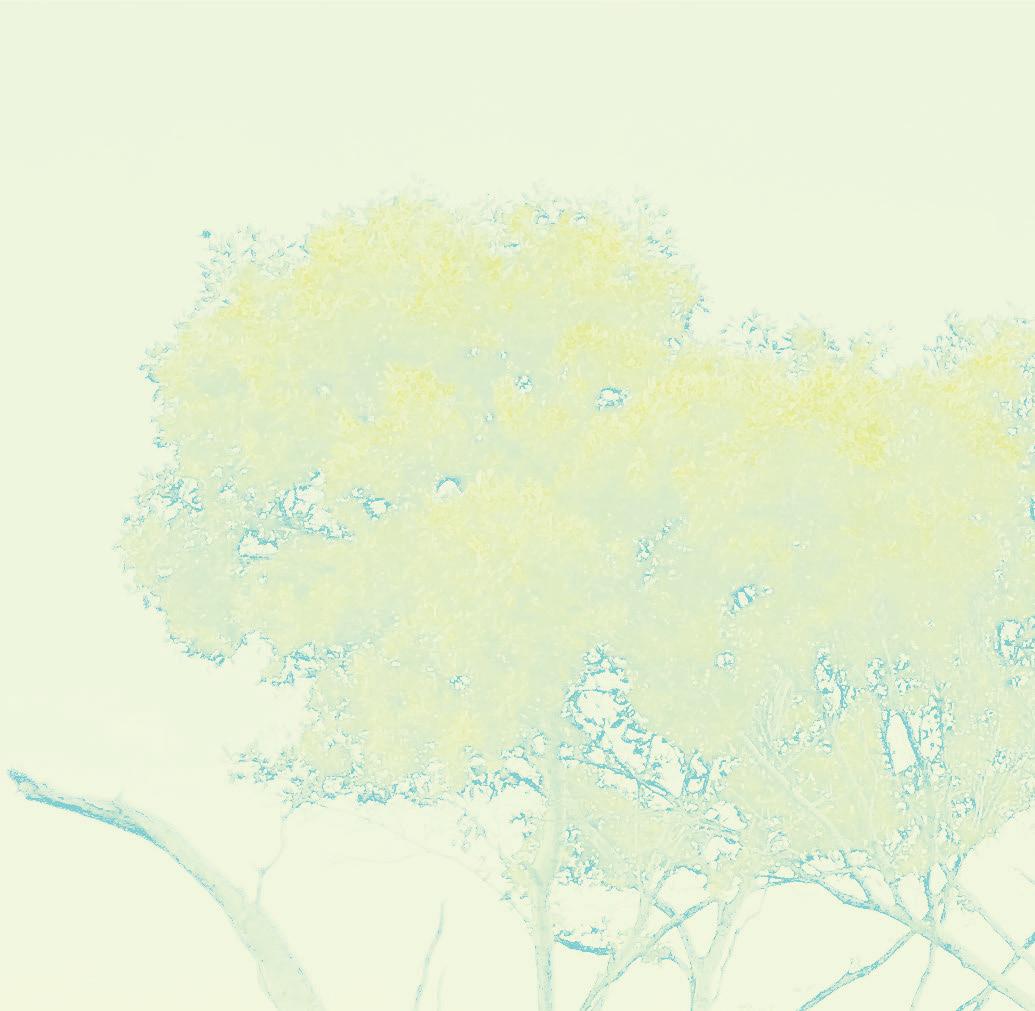
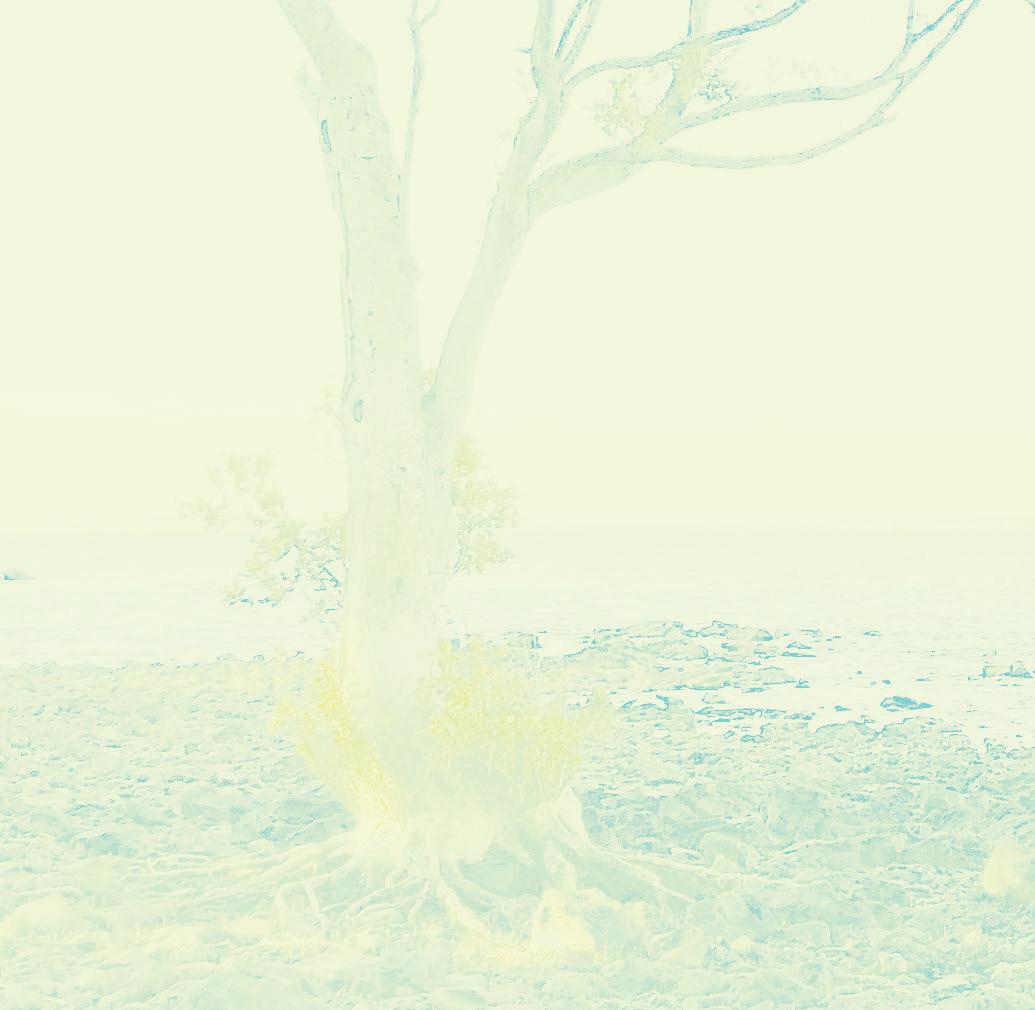
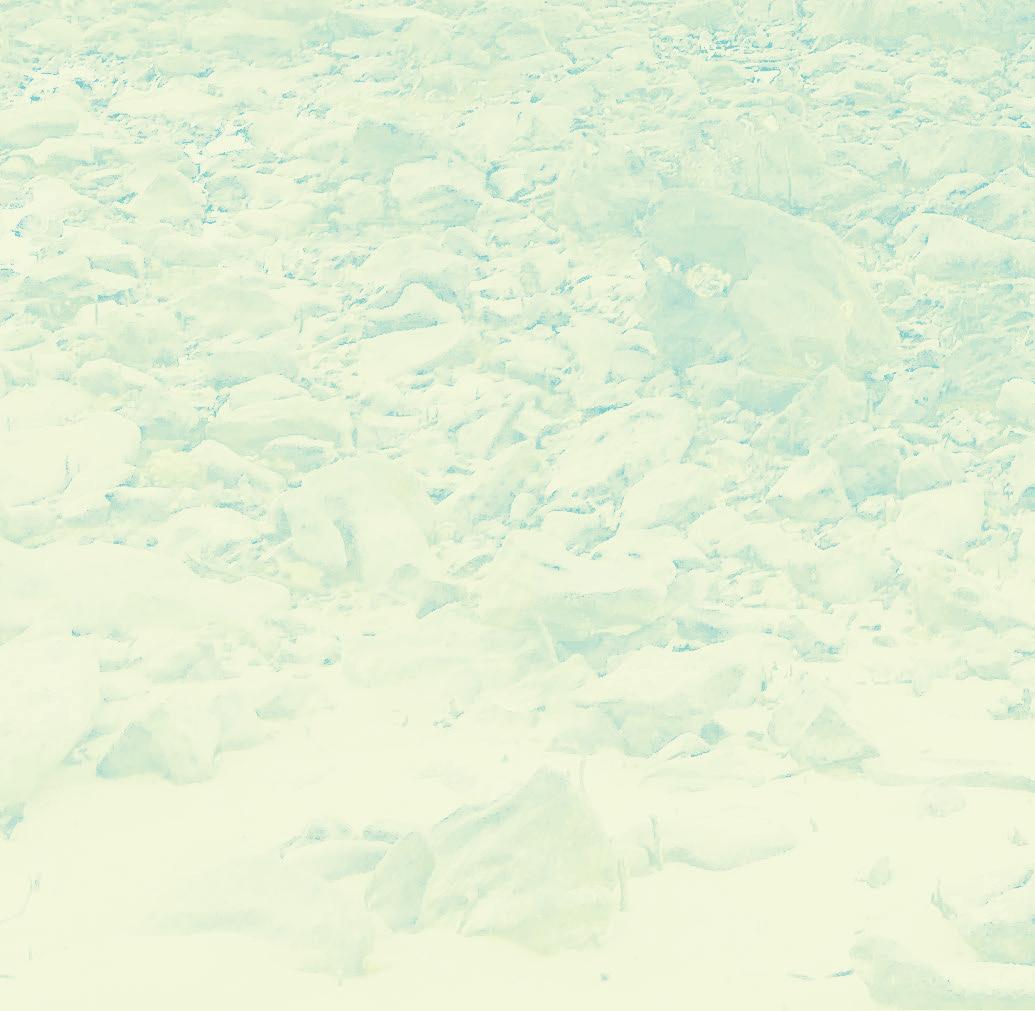
We climb the wooden stairs and open the door, welcomed by the refreshing air conditioning and sounds of laughter. I place the dessert amongst the other dishes on the cool granite countertop and make my way over to the bar stools, exchanging
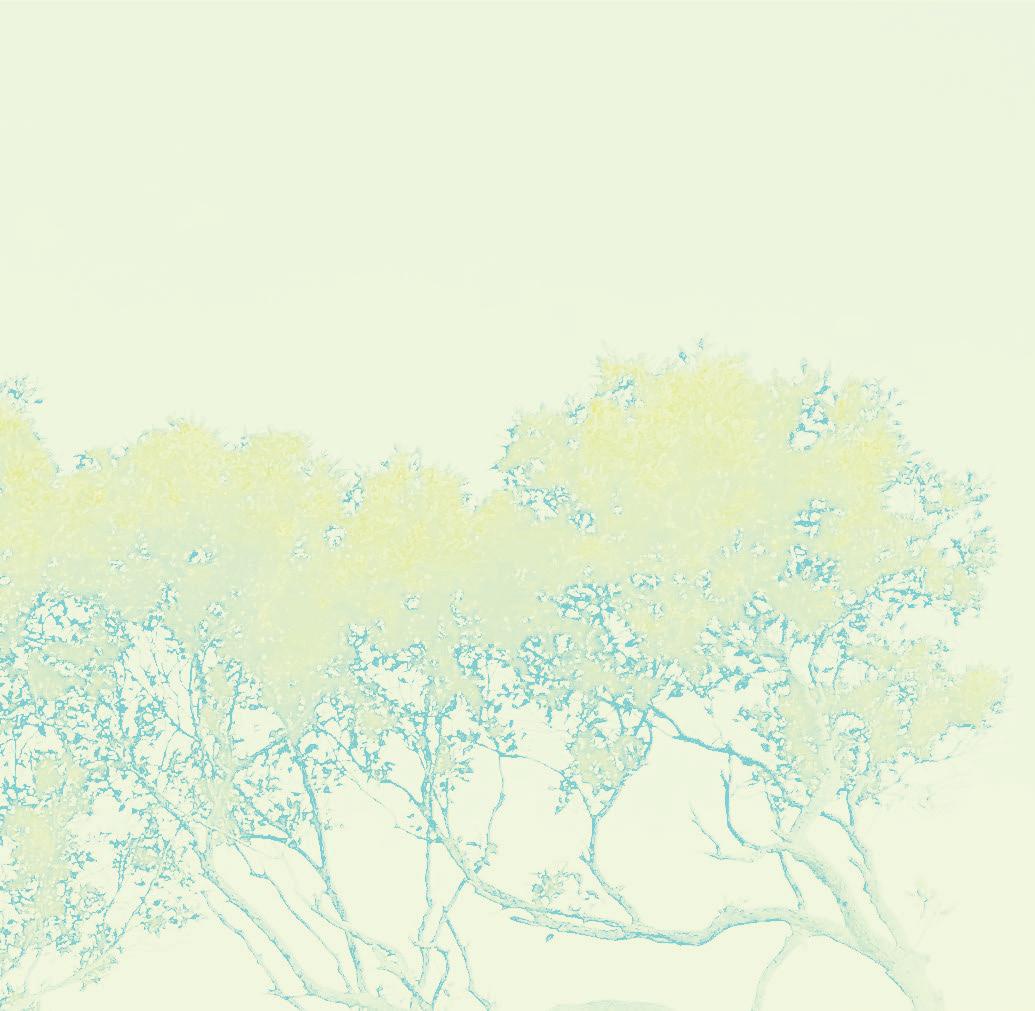
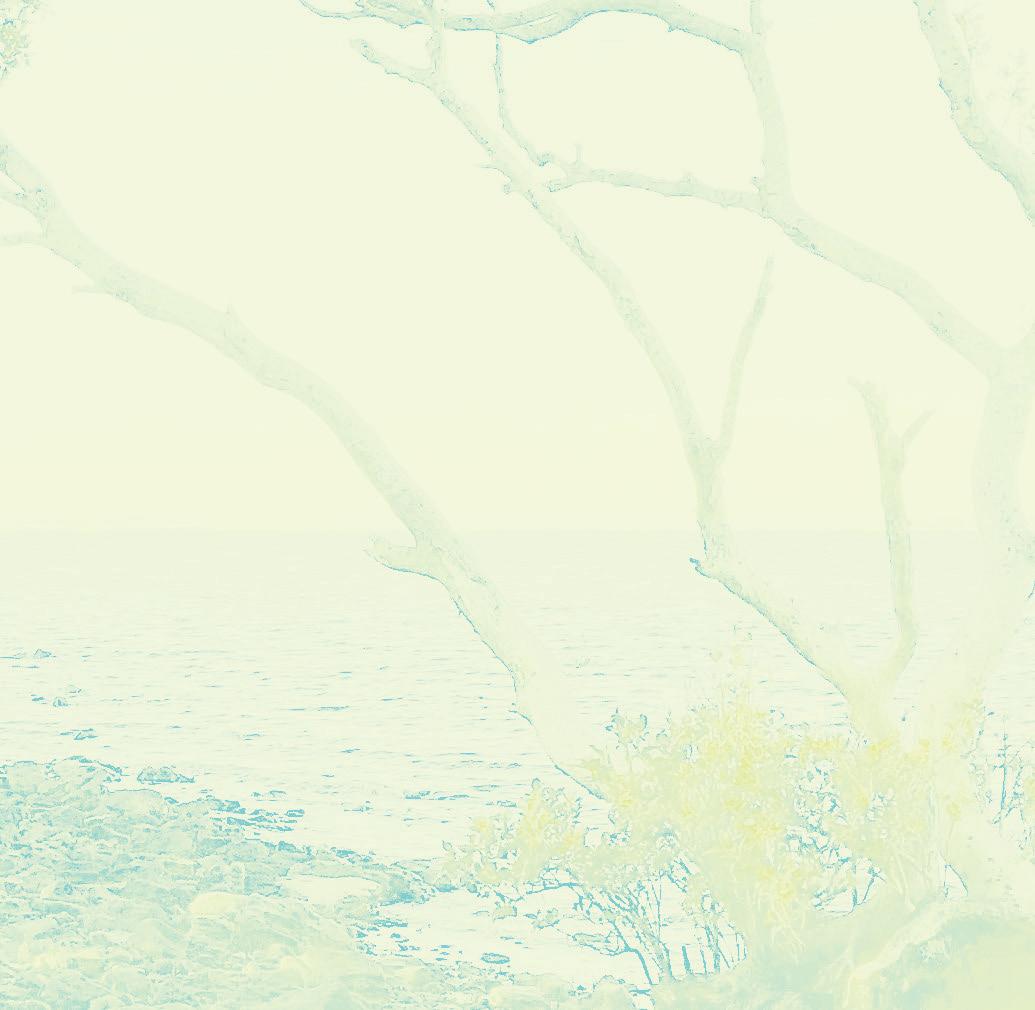
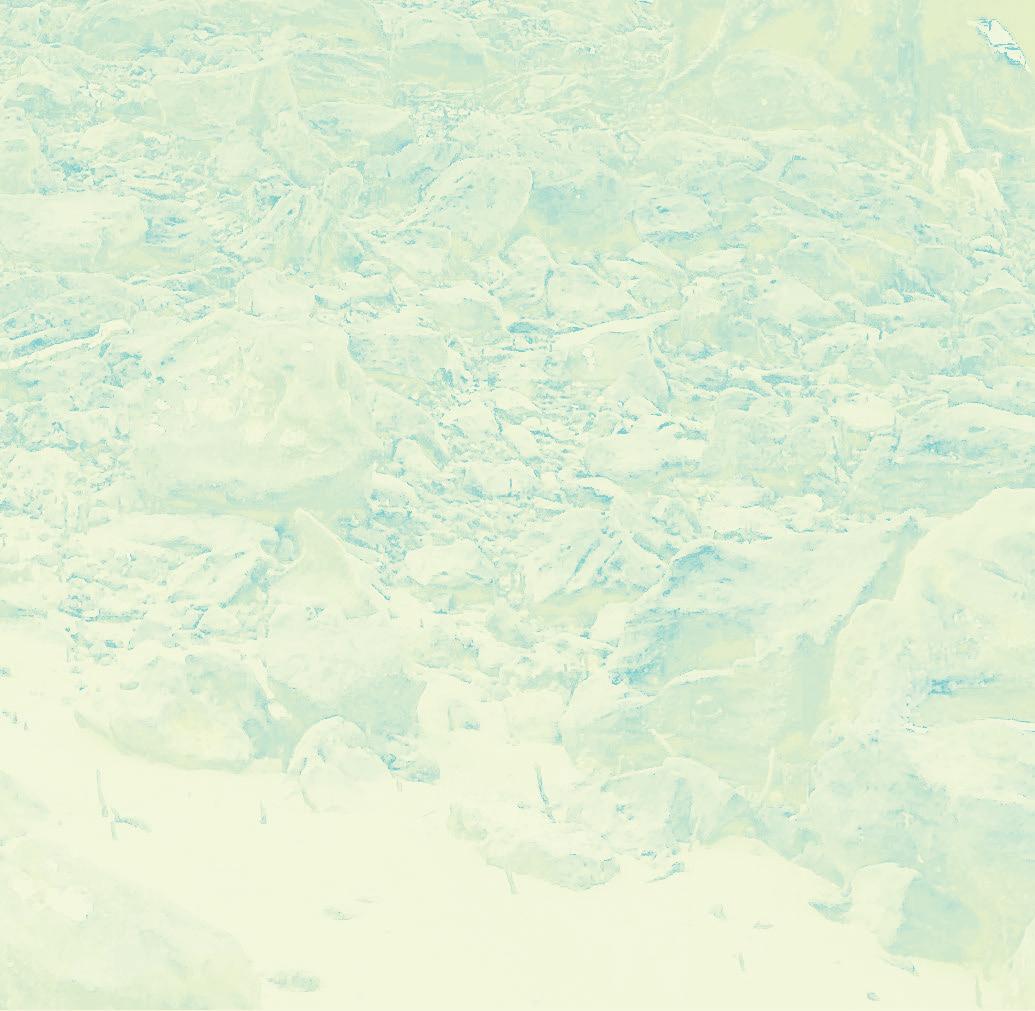
hugs and salutations as a drink is placed in my hand. Margaritas and game night, a sweet reprieve from work and the political happenings of the past week.
Bills signed into place meant some of us could not use chosen names and pronouns with their junior high students (they still plan to but what happens when administration catches on?). Top surgery (or any gender affirming surgery for that matter) was out of the question for a few of us so long as we stayed in the state we called home.
I cannot ignore the looks that we get while doing a simple task like grocery shopping (I needed butter for the key lime bars and held your hand while we waited in line).
Tequila and card games are an effective salve for the short term, but the reality of our day-to- day would not go away with another shot (nor is that the best coping method, my therapist would remind me on our weekly call). Laughter carried a melancholy tone throughout the evening. Conversations of moving and what if’s sprinkled in. What do we do when our mere existence is being erased? How do we cope and go about our days?
We look to the Mangroves. The plant is an entire community. One that grows together—multiple species living in unison, giving and taking. When the hurricanes come, they hold strong against hundred mile winds. The weaving of roots creates a breakwater. The waves are strong and the branches sway, some leaves are blown away, but the marine life hidden underneath seeking shelter lives on. After multiple days, when winds die down and torrential rainfall turns to a sprinkle, lizards make their way up branches to soak in streams of sunlight.
In these times when the world is cruel, we come together. Community leans on one another. Together we laugh, we cry, we celebrate the small wins, we mourn losses, and each day we work to combat the political machine that seeks to crush us. It is not easy work, but we persevere. It is through organizing, protests, creating, education, sharing resources, and intentionally caring for one another that we can make moves against the harmful legislation being implemented.
No matter how the winds may rage and the waves crash on the coastline, may we remain resilient. The Mangroves have been and will continue to be—so will we.
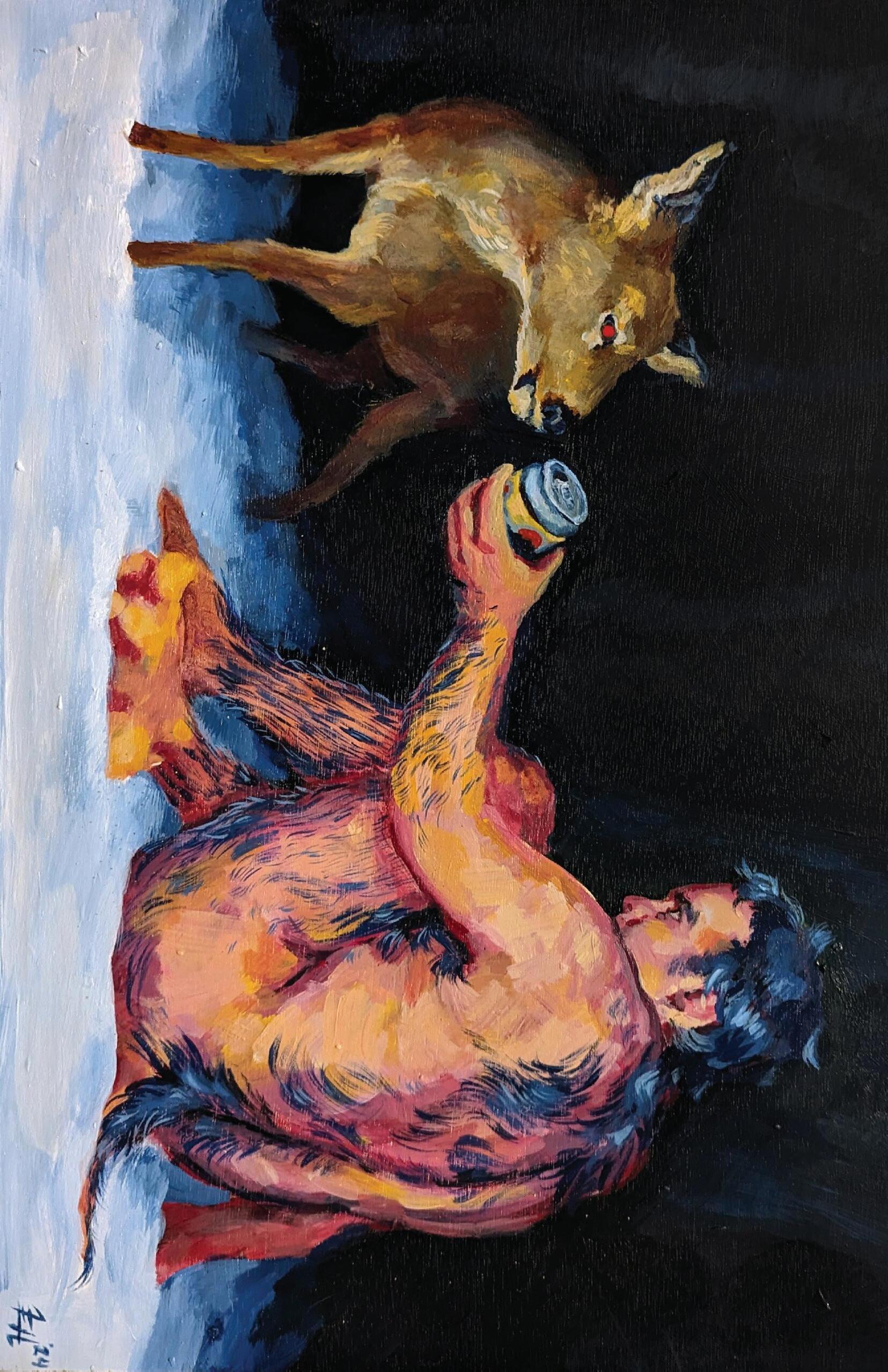
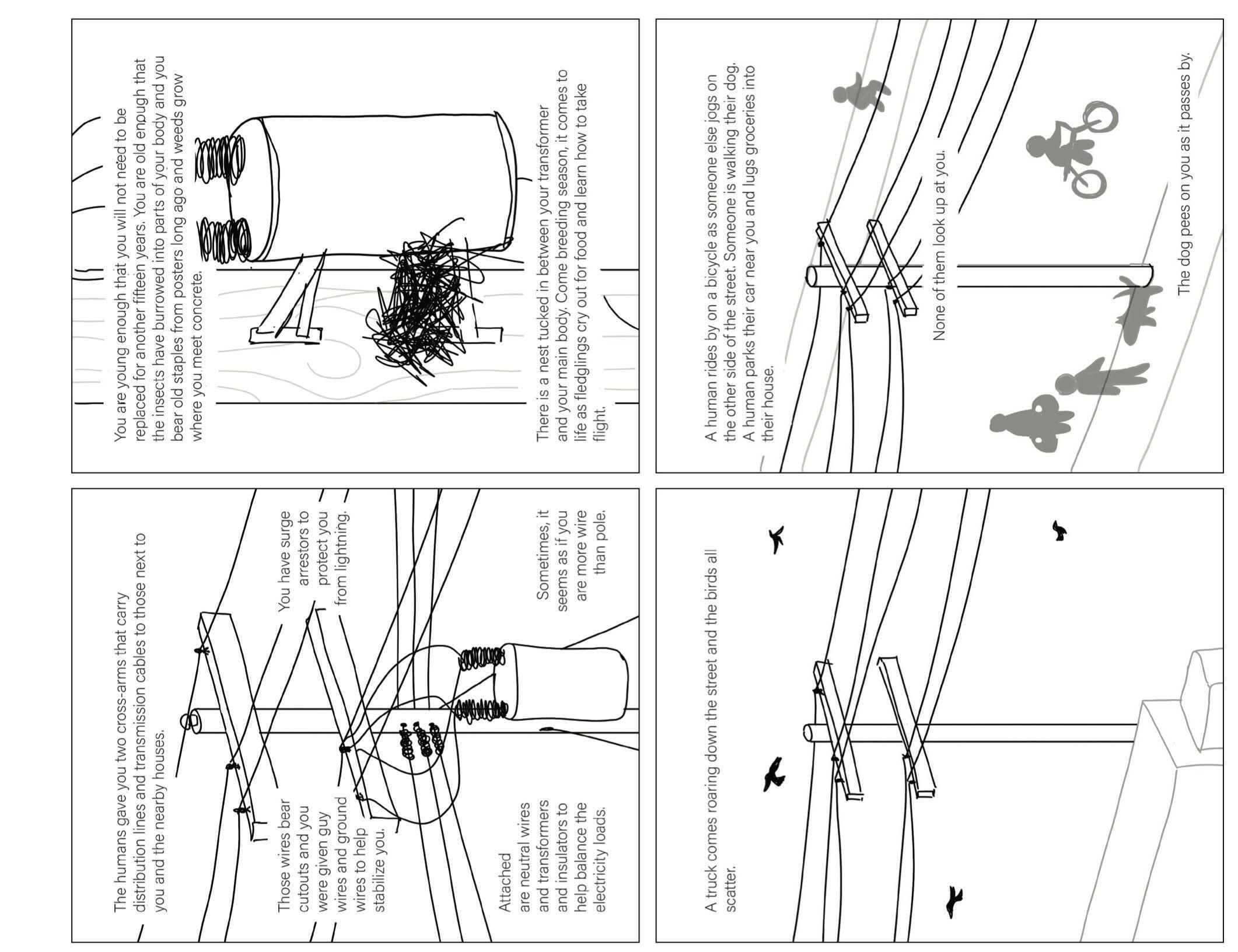
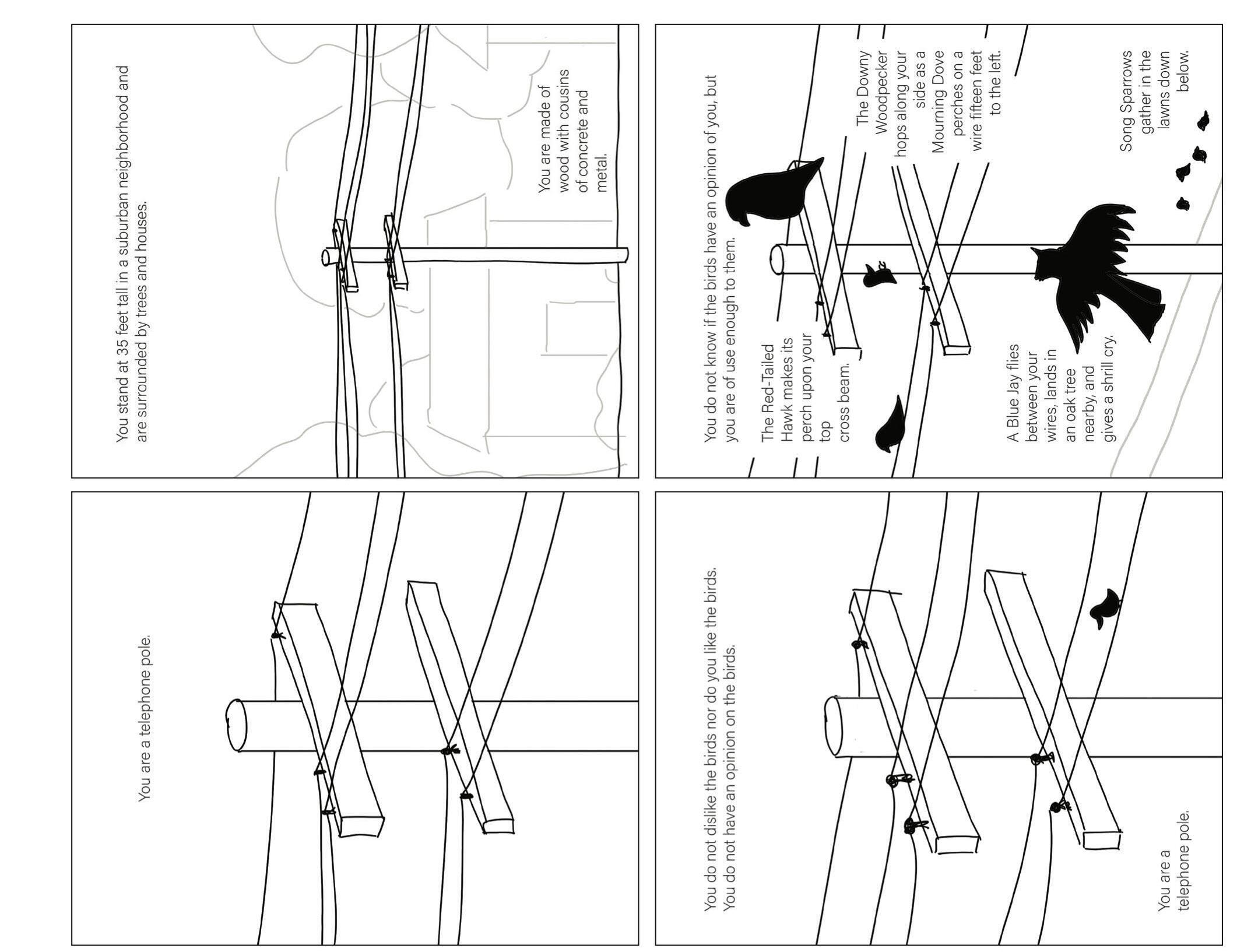
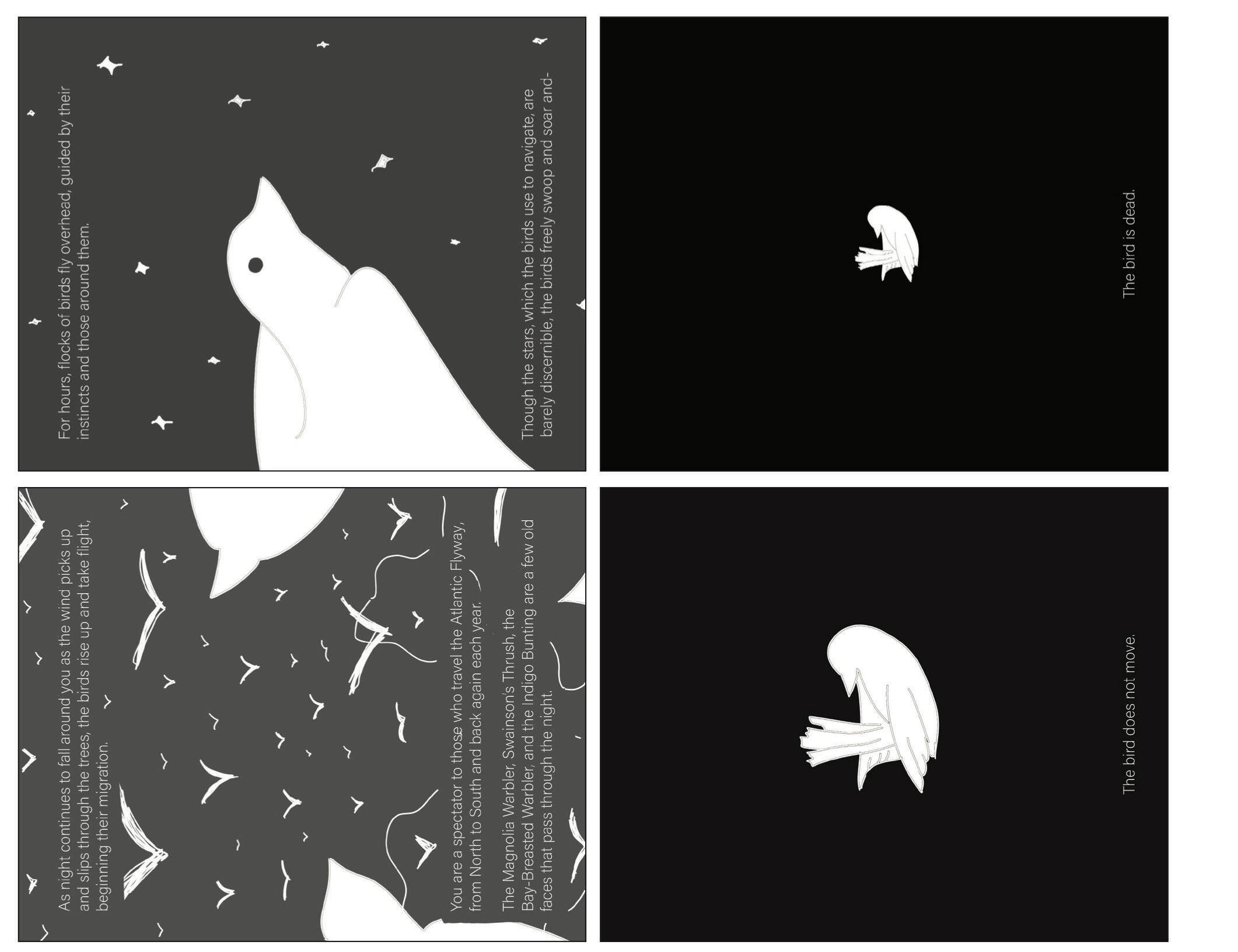

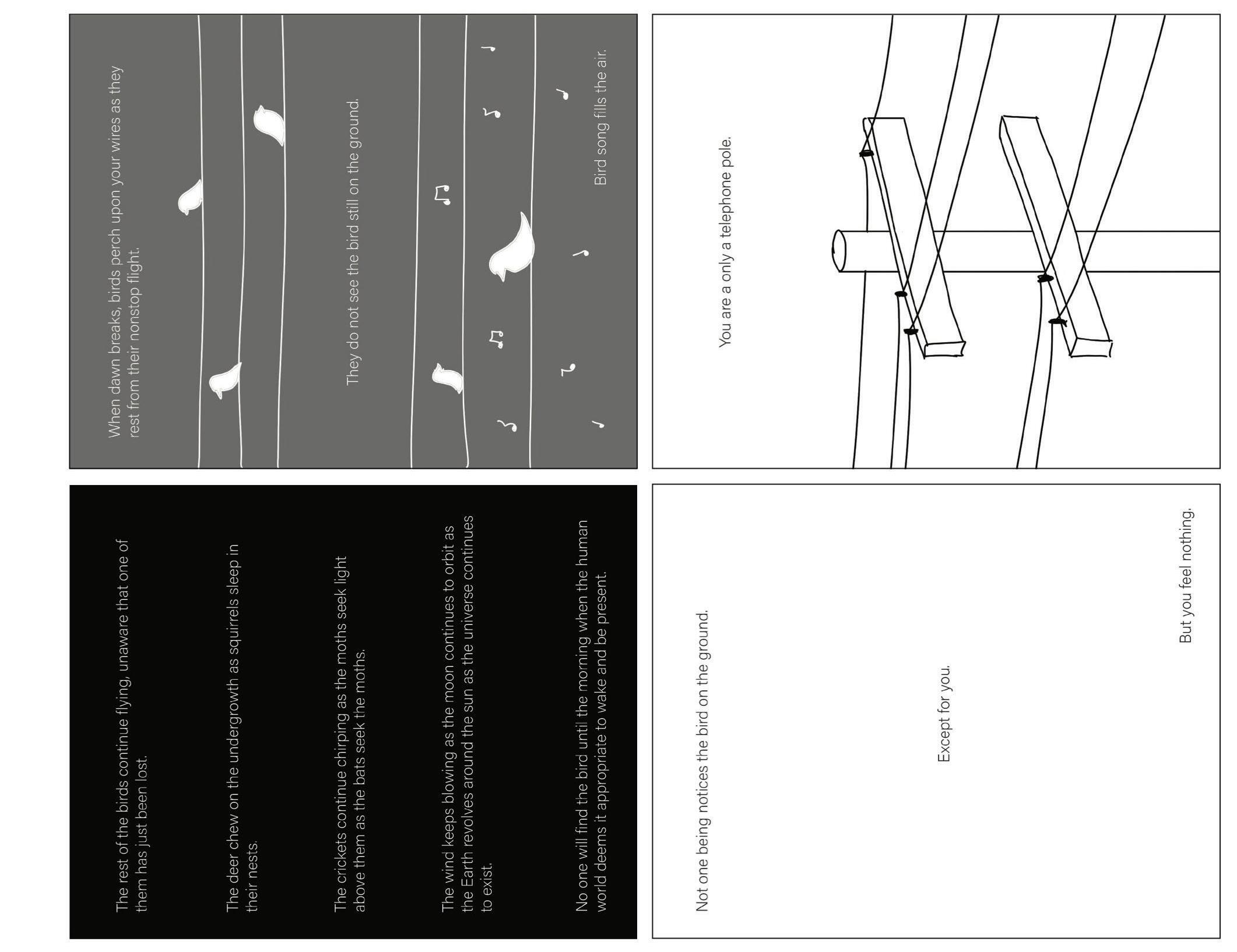
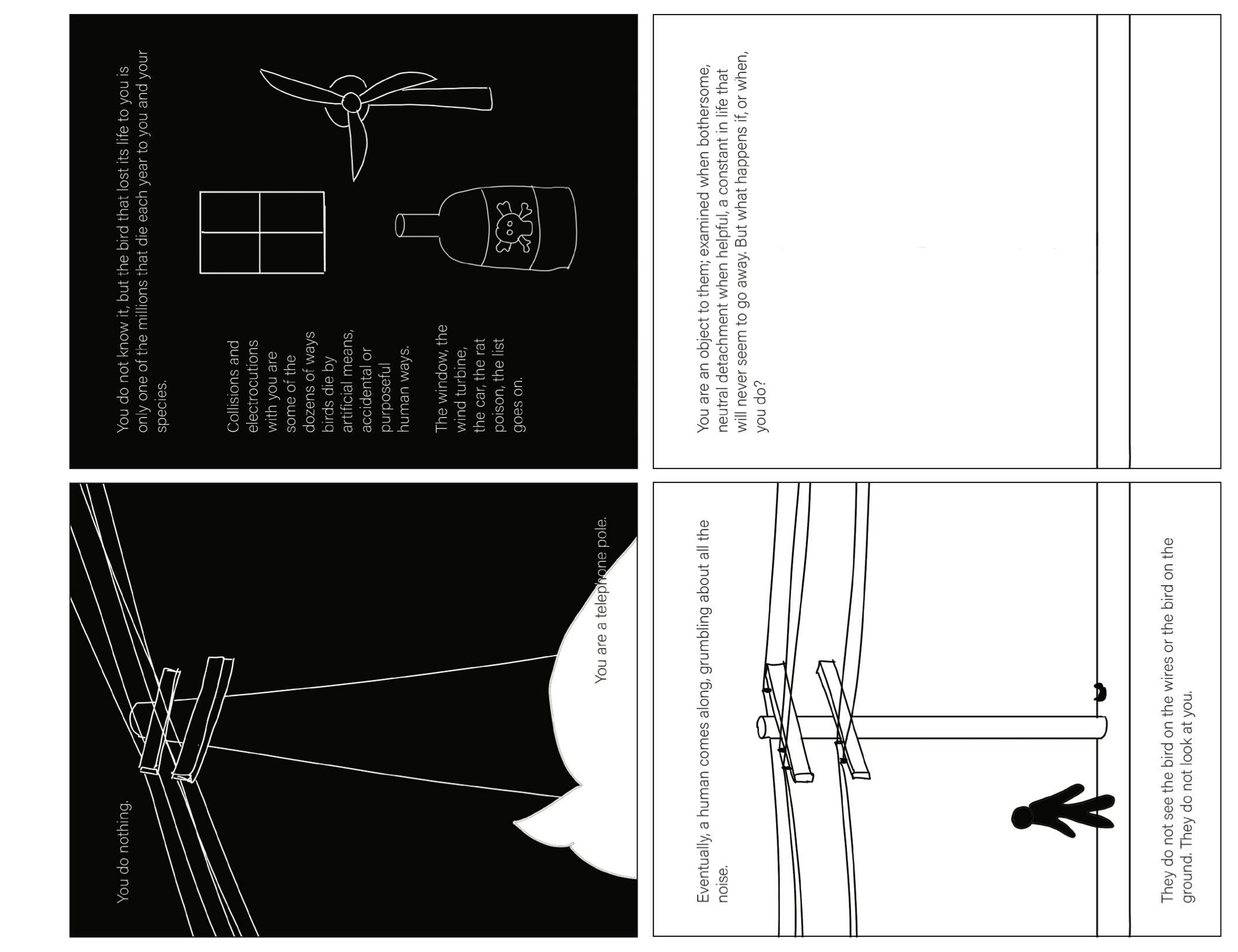
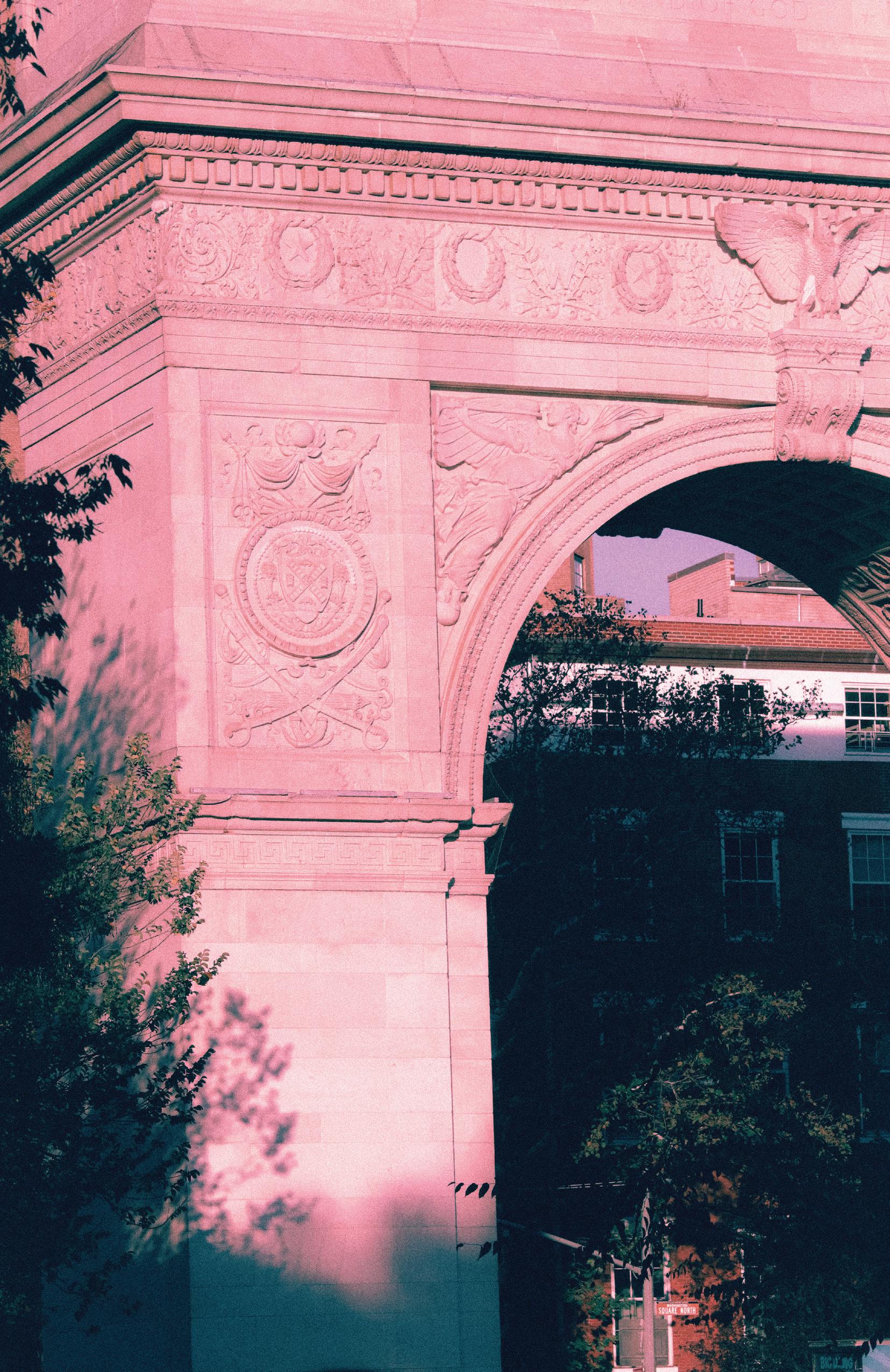
Words by Caroline Brink
Thememoryofoursweetnessissosaccharine,Ialmosthavetoviewitthroughawinterwindow. Frostandnostalgia.Yourfacetoodistanttoseethefreckles.Fourmonths, three, two—
Before we begin, I must tell you a story. The month we met, I struggled to eat. I was growing into the hard, sharp knife of a rib, the fierce blade of a spine. I felt nourished by you in a way that made me feel more of substance. I was walking by the river. I paused when I thought of you, my mind went totally blank with pleasure. This is when a bluejay crossed my path, landed just feet away, and stared at me as if looking after some dream.
My mind was made of mountains and ghosts. Not much open space in the city, but after that I lingered on every landscape long enough to see you. It was April then. The air was still cool, and we drank strong coffee and orange wine, and our pockets rattled with the change about to come. I had no idea. No premonition. No sweet cherry blossom dreams of lying together in the grass, fingers brushing. My dreams were never sweet, so you rarely appeared in them. I didn’t understand what you were. Animal, creature. Tender doe in the street. Soft hearted spirit in a loud world.
That month, Sammy was teaching me to plant Lupine seeds: sand their rough outer casing away so they can break through the hardness of themselves. On nights when I couldn’t sleep, I ground the seeds at a table in my room until my fingers bled. My hardness wasn’t so easily shed.
Writingalettertoyouisliketryingtoripupallthecitysidewalksandfindtheplaceswehaveburied underneath. Too much history. Too many layers. You always thought there was nature in every space. Watch for it, youtoldme.So,Iamwatching.
We went walking by the river often, following its watery eye up and down. Time capsule estuary. It knows our geography, our beginnings. The rabbits we traced in paths by the weeping trees. We exhumed poetry, dirt paths, salted coffee, flowers in a vase, pots of dirt and seedlings. The intricacies of it shocked me. Too real to be a dream. Paper cranes. Lucky stones. Bird baths where we sat and watched time at the speed of feathers. Your fingers on the hem of my jeans. I was shocked by how I wanted you. Wanted to hear your voice in my mind, telling me to sleep, telling me to watch the sun, telling me to grow out my hair, untether my body, uncut the tips of my fingers and let the light fall on my cheeks.
Everything I’d ever known was cold and blank and empty; white fence dreams I’d been sugar fed. My home a snow mine. My history, my own quiet growth was a library of rules and place settings. Fences. Paperweights. Glass and gilt. The smell of money, lurid, cold green. The smell of new pain. New paint. The structure of what walls looked like, when you’d been the one to build them. My mother said nothing when I first told her your name. She asked me about the “good strong boys” I’d be meeting. Cold city. Plastic dreams. Frames with the even four faces of a preconceived notion.
Loving you was something different, like getting free of the city walls. This felt like open grounds and the howl of the moon and the rush of new water when it’s been melted from its iceborne limits.
The cold split like a root. Smelled like turned earth, butter rich decay, regrowth. A person’s hands. Your hands.
Buried under snowmelt, the core of me was such an unfamiliar thing. I wanted to touch your shoulders, kiss your dusty kneecaps, lick the dirt off your palm.
Missingyouisanopenemptiness.HowIwanttorunintotheloveyouofferedme.HowIwantto fill what I learned to let lie.
God, it was good. The moon big as a bulb. The smell of charcoal and citronella and the sweet, bright scent of the summer green. Yellows that turned soupy in the evening. Trailing your bicycle through the gloaming. You said, I think bicycles are a vehicle for queerness. I felt boyish and free. Going nowhere but home. Forgetting what it meant to be cold. I thought maybe you could keep this for me—a dream of never-ending dawn.
YouareaskingwhyIcannotbemorehonest.YouareaskingwhyIamlettingthisthingbetweenus, thisbeautiful,verdantdream,getlostinawashofsaltandsmoke.Thereisnothingtoleavebutour history,scatteredbeforeitevenbegan.Mylove,thereissomuchyoudon’tyetseeofme.
I thought that dream could last forever, but slowly, slowly days turned. Your hair was getting longer. I noticed this like I noticed the leaves changing. Spaghetti hair theorem. Dust on your pants from the studio. For a moment, the nightmares felt like smoke in the air. But we left our thoughts out in the darkness too long; they turned to rot. The world got in. So many things to bear, and we were just a slit in the larger fabric of an enormous shroud. I dreamt of death. Gently at first. It was beautiful and empty like lukewarm water. When I told you, there was such sadness in your eyes, I thought you might be disgusted by my hunger and my knife edges.
Ithinkyoumightwatchmeweighfoodandpickcrumbsandgohungryandfeelashamedforme. IthinkyoumightrollyoureyeswhenI’mtoocoldtoremembermyownname.Ithinkyoumight findtheenormityofmegrotesque.SometimesIfeeldarknesstooheavytospeak.SometimesIcan’t rollmyRs.SometimesIhavedirtundermyfingernails.SometimesIdon’twashmyfeet.Sometimes Ican’tremembertheSpanishverbfor“tobe”or“tocry.”SometimesIthinkthere’sfartoomuchof me,andoftentoolittle,butnevertheyou-sizedspacethatIwishIwas.
You taught me to translate art, our understanding of beauty through the lens of history. What really is a Greek vase then, but magic? The way the unmarred porcelain remains unscarred by the fire. I would like to devour you. I would like to leave you unmarred. Is it possible to leave a thing unmarked by the beauty and soot of our love?
You loved jazz music. We went to that bar with the big windows, the one with the horse-sized statue of a human hand. We danced slowly to a song I’d never heard. It sounded like summer nights. The lights were orange and thick, and even in the winter, I thought of the evenings with you when the sun held the whole of our geography—a sunny night, a velvet night. This was what I wanted; this was enough. You took my colorful thread, worked at the knots, tangled beautiful dreams, eagles and swimming and pills. Every thought new weather.
But I left that night, and I couldn’t see the stars. My body moved like water that’s been frozen. Fissures at my edges. Black shell of a mirror that dusts with snow.
It was so dark, I could see the nightmares, could rap my empty knuckles on them. News feeds. Telegraphed pain from other people, other places, toxic bones, too much sleep, too little. I left my hands out of my pockets, let them go cold, and you were watching me like I was a feral knot of something starved.
Butevenafterallthatiswrongandright.EvenwhenIcan’tseetherestof theworld.Iwantyoutoremindmewhatgrows.Iwantyoutoknowthat I remember everything you told me in our dreams. I want you to know itisenough.
Iamtellingyouthatthisisenough.
I remember how you looked at the cracks in the sidewalk, the trees that grew with the fences, the delights of a frozen river, golden sunset, field of tulips, first snow. Iterations of a landscape you wanted me to see. We traced it together like the lines of your palms, the creases behind my knees. Attention you said. Attention for the things that have no voice, the things that get weeded, upturned, overrun. Attention, you said, is an act of love.
Iguess,whatI’dliketotellyou,isthis:Iremembereverything.Iremember whatyoutaughtmetobuild,whatyoutaughtmetosee.Iamlearningto build things for you. You who see dark and turn it into dawn, you who knowthetopographicalmapsofcitiesandthenamesofplantsthatgrow onporches.
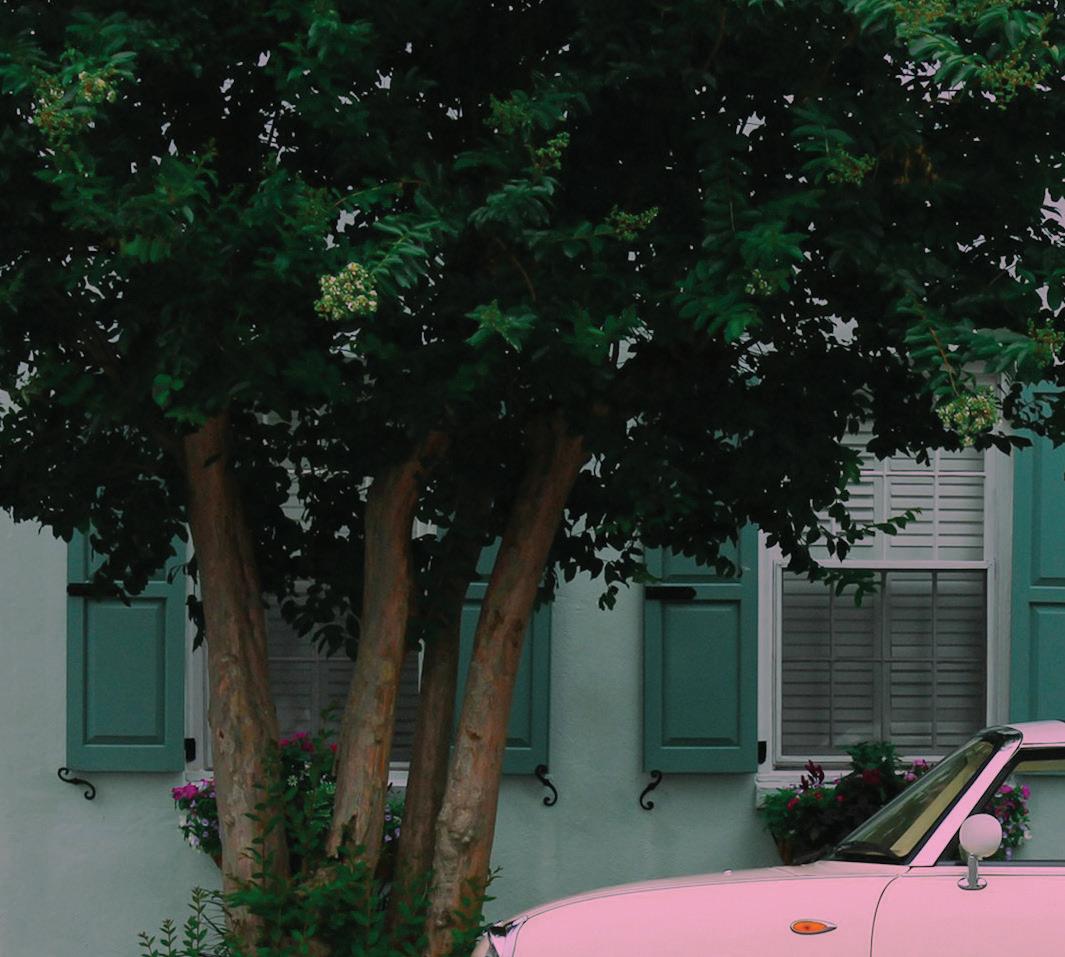
IwantedtotellyouIpickedupshatteredpotsandlittledriedseedlings. AnditisforyouthatIrememberwhatintricacyfeelslike:Liliesinavase, Charles Mangus’s clown, jazz, sea salt shakers, the moon. Red thread, blue thread. China bowls, figure eight knots. Roots in the cracks of the sidewalk. Vines in the lattice of fences.
Dreamreport.Dreamreport.
I am dreaming of you and you are happy again. Memory making—memory in a field of our ownsymbols.
I’mholdingallthisordinarymess,anditisenough.
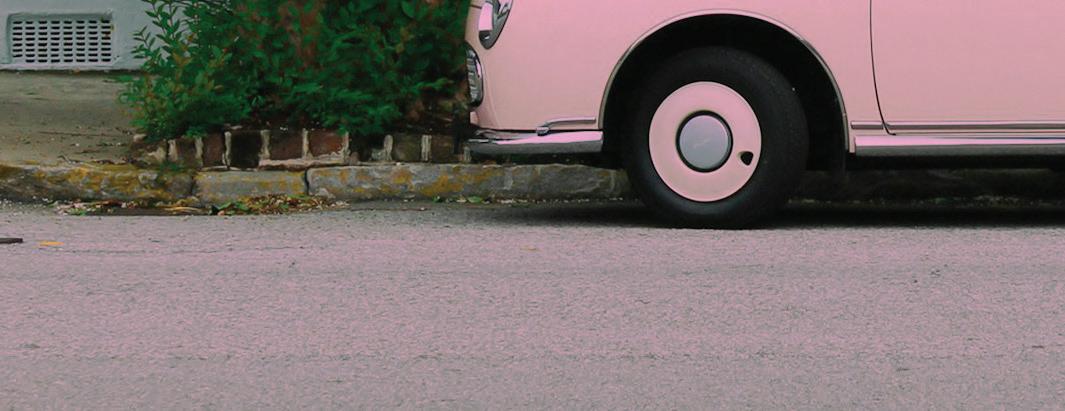

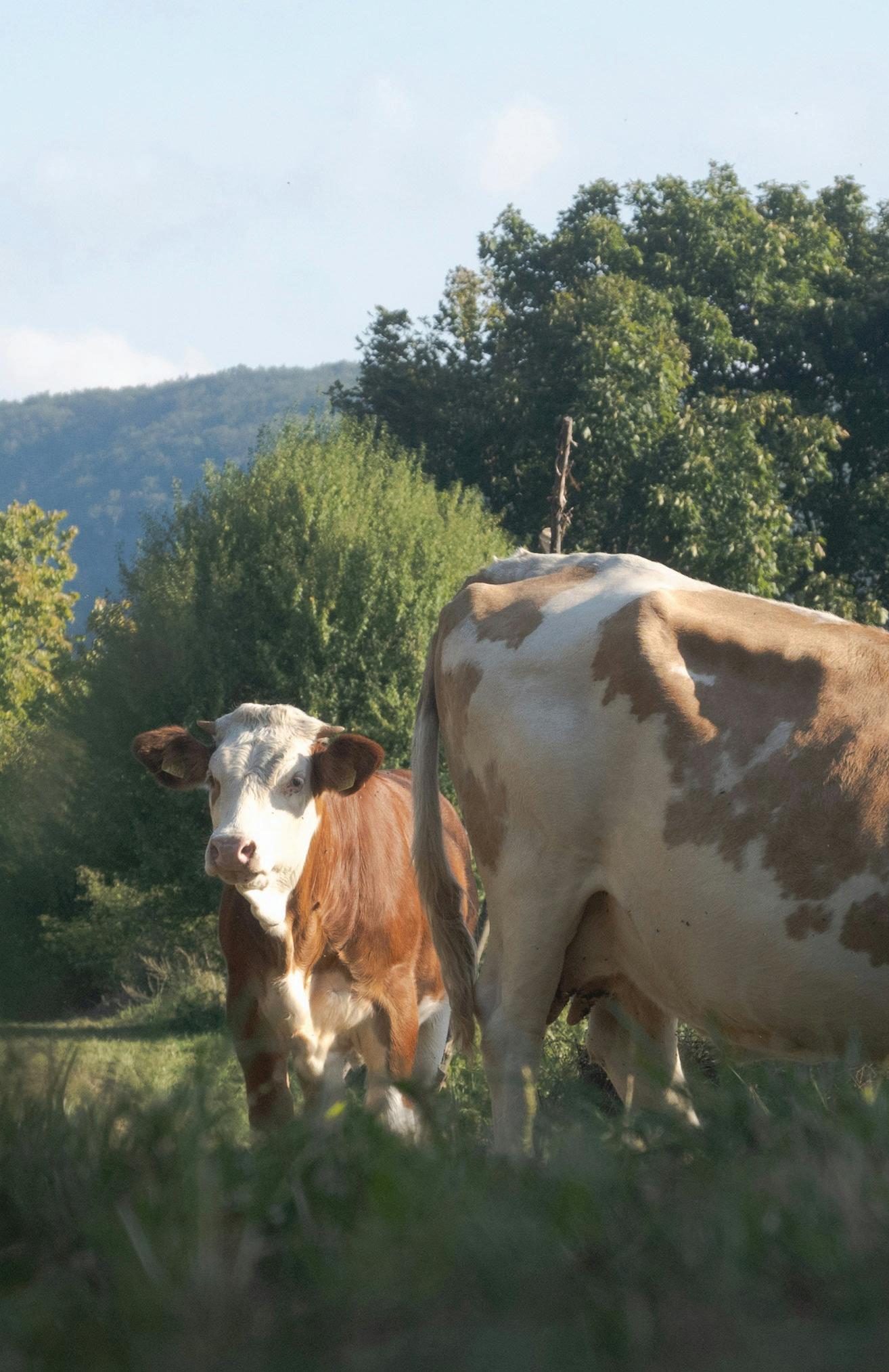
The Official Fruitslice Crossword Puzzle Words by Micah B Threading Forgiveness Through Time Art by Layla Razek
by Micah B



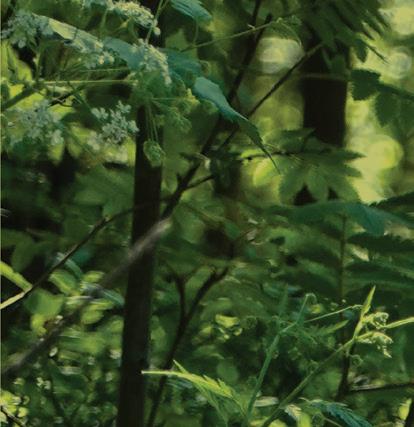

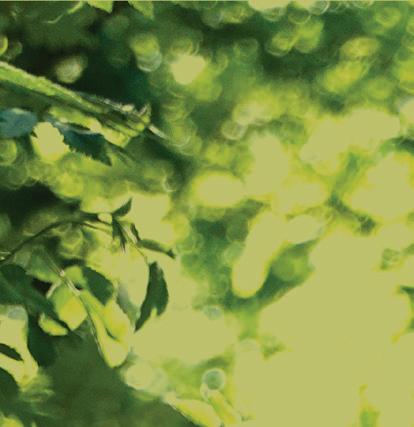
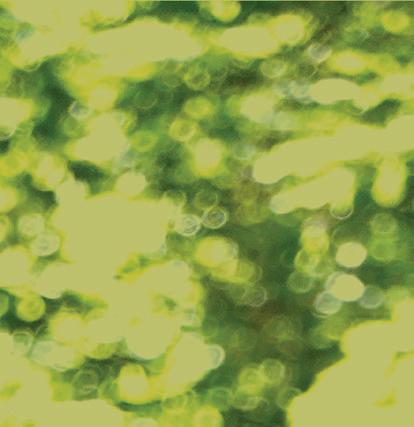
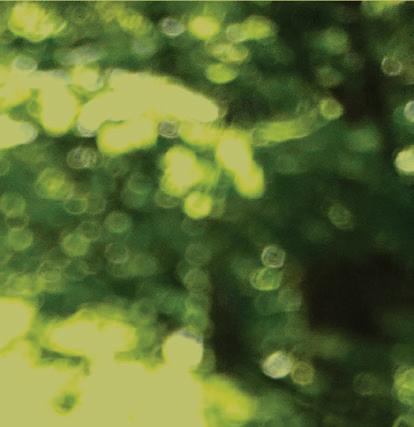
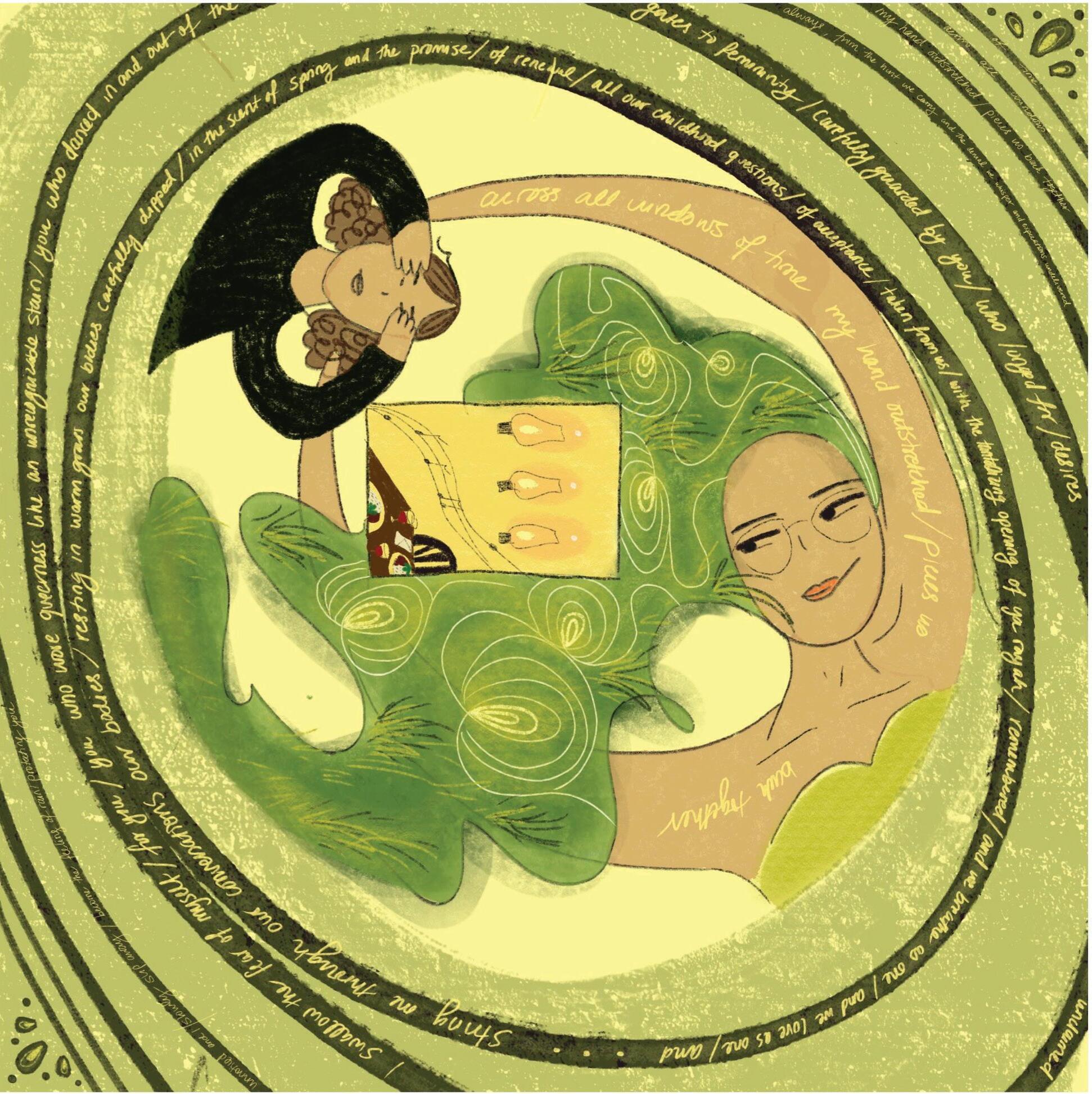
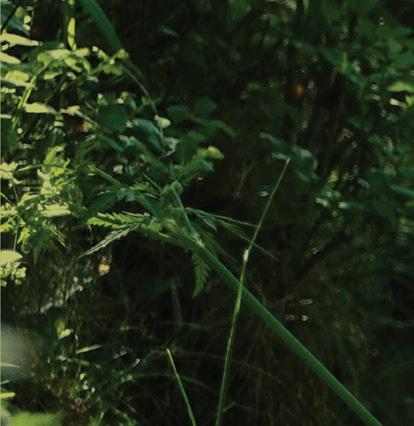
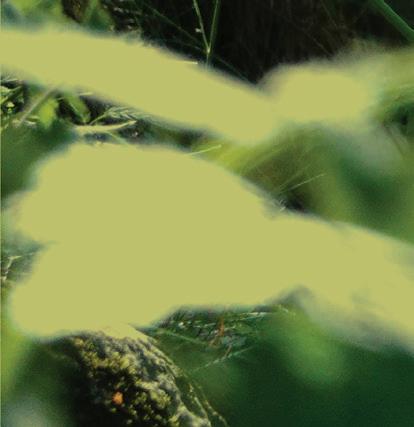


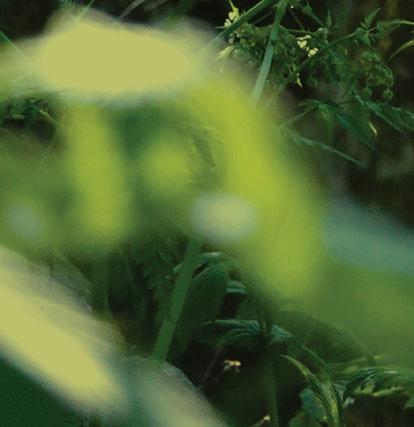
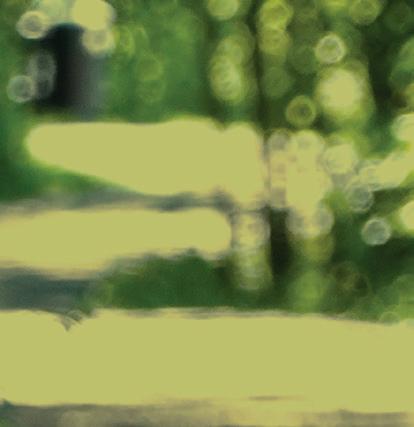
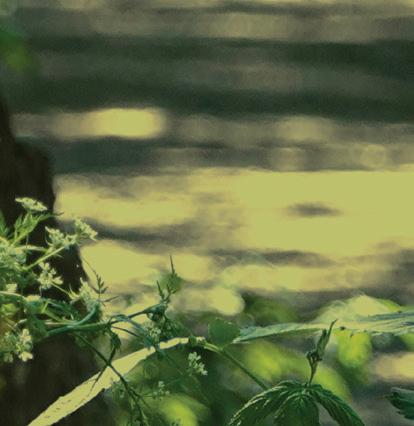
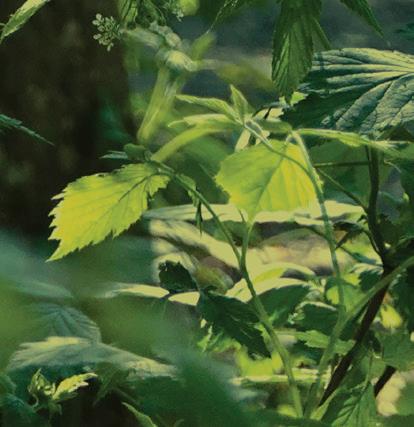
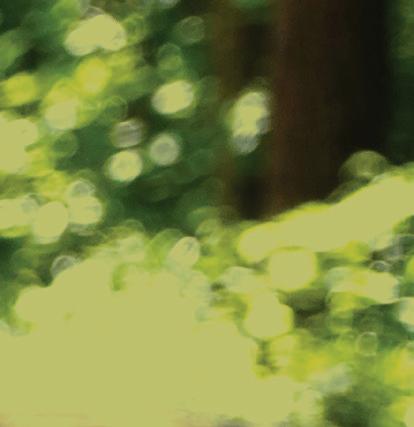

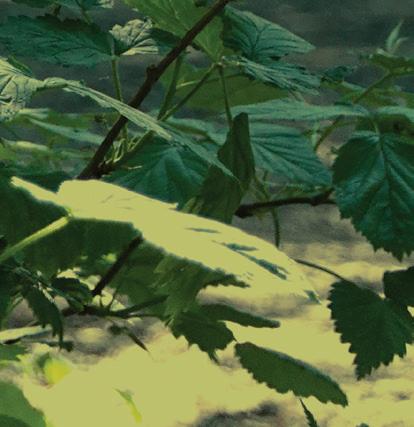
ALapointe (she/they) is a multidisciplinary collage artist and filmmaker based out of Los Angeles. Her work has been featured in VICE , BuzzFeed, and in galleries across California. Her work challenges the constructs of truth, memory, and identity, repurposing obscure and personal moments lost to time, to build an entirely new composition. A explores trans identity by fabricating new memories--collecting found photos, shredding them, and assembling them into new contexts. website: www.alapointe.net ig: @lapointe_work
AJ Dent (pronouns)is a Seattle-based poet, cartoonist, and photographer, whose art is driven by outdoor adventures and internal tumult. Her work has appeared in Papeachu Review, The Stranger, and Poets Reading The News. website: www.digitalaj.org ig: @digitalaj
Alayna Cabral (they/she) is a sequential artist, animator and illustrator based in Los Angeles. Their illustrations and films have been exhibited all over the world. She holds a BFA in Animation from the Massachusetts College of Art and Design, and has been a professional storyboard artist for over 7 years. website: www.alaynacabral.com bluesky: alayna.bsky.social ig: @alaynasketch
Amber Jaitrong (they/them) is a multimedia queer gender fluid artist, poet, and bead worker. Their ancestors come from Laos, Thailand, Patawomeck lands (occupied Virginia), Poland, Lithuania and Ireland. Their heart belongs to these soils as well as Arapahoe lands (occupied Colorado) where they grew up. Their work explores themes of queer love of all types, nature, kin, grief, and desire. They recently graduated from the Poetry Portfolio program at the Independent Publishing Resource Center. ig: @amber_gets_creative
Angel T. Dionne (she/her) is an associate professor of English literature at the University of Moncton Edmundston campus. She holds a PhD in Creative Writing from the University of Pretoria and is the founding editor of Vroom Lit Magazine. Her writing and art have been featured in several experimental and surrealist publications. She is the author of a surrealist poetry collection, BirdOrnaments, (BrokenTribe Press, 2025) and a short fiction collection titled Sardines (Pen & Anvil Press, 2023). In 2024,
she published a surrealist chapbook collection, Mormyridae (LJMcD Communications). She is also the co-editor of Rape Culture 101: ProgrammingChange(DemeterPress, 2020). website: www.angeldionne4.weebly.com ig: @angel.t.dio_
Ann McCann is a sapphic poet and essayist, chronicling California in the tradition of Didion. ig: @beegirlfriends
ashley hunt (she/they/fae) is a writer, artist, and sapphic femme living in iowa. she is a vegetarian witch, a mother to four cats, and a reader of cards and stars. fae is a libra rising, scorpio sun, pisces moon and whimsical weirdo. they are an editor for Fruitslice and their creative works have been published in The Naked I:Recognize/d, performed by 20% Theatre Company, and shown in 237 Collective’s MORE PRESSURE resistance arts gallery show. ig: @untitledmemoir
Averie Bueller [APB Photography] (she/ they) is a portrait photographer / all around creative. She moved to NY to pursue acting and her photography. She graduated from SCAD and ever since has on the path to creating and finding herself as an artist. Averie loves making people look at a photo of themselves and truly see the beauty they own. She creates to relate. ig: @apb__photography
Azad Namazie (they/them) is a trans poet, playwright, and multimedia archivist from Los Angeles. ig: @azadnamazie.mkv
Bailey Bauer (she/her) is a writer, editor, filmmaker, and graphic designer from Austin, Texas. After growing up on a goat farm, she’s developed a special interest in analyzing the connection between our bodies and our environment. She has previously been published in Fruitslice: A Queer Quarterly. website: www.baileybauer.com
Bennett Rine (he/they) is a poet and artist living in Los Angeles. Their work explores themes of nature, desire, dreams, and memory and has
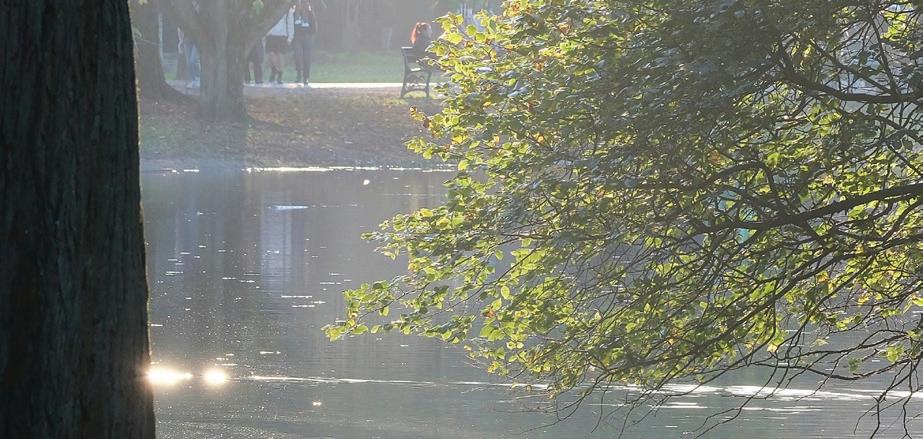
Bethany Leigh Greenman (she/they) is a playwright, screenwriter, and stand-up comedian based in Los Angeles. She obtained her BFA in Playwriting at Ohio University. Awarded the Virginia Hahne scholarship, she produced a reading of her fulllength play, TEMPLE, at the Undergraduate Playwrights’ Festival. Her work can be found in the 2016 issue of Echoes, the Summer 2024 issue of TheCoachellaReview, and the 2025 Valentine’s Day issue of Rabbit’sFootMagazine. In February of 2024, she won the Go Try PlayWrite Contest, presented by Kumu Kahua Theatre and Bamboo RidgePress, for her monologue ""Lilies"". ig: @dudebethdude twitter: @dudebethdude
Bri Campbell (she/they) is an Atlanta-based poet and collage artist from Orlando, FL. They hold a BA in Creative Writing from Florida State University.
Brie Coleman (she/they) is a writer, photographer and educator from Virginia. She has a BA in English, an MEd in Education and is pursuing an MA in Literature from George Mason University. Their work was published in Volition Art & Literary Magazine and Braindump Mag. They write poetry and prose with a special interest in journalistic writing. Brie’s passion lies in telling the stories of queer people and highlighting the loveliness of everyday gay life through the use of multiple genres of artistic expression. ig: @briecolemanwriting
Caroline Brink (she/her) is a writer exploring the intersection of queerness, feminism, and the environment. She received her Bachelor’s degree in Creative Writing at Trinity College of Hartford. As an undergraduate, she was awarded The Alumni Prize in English Composition in 2020 and 2021, as well as The Trinity Alumnus Prize in Prose Fiction in 2021. Her work has been published in Trinity’s literary magazine, The Vernacular and in The Drum Literary Magazine. Caroline currently works as a publicist and editorial assistant at Godine. She is devoted to writing and plans on continuing to develop themes of resistance and change. She lives in Cambridge, Massachusetts. ig: @carolinebrink_art Casper Orr
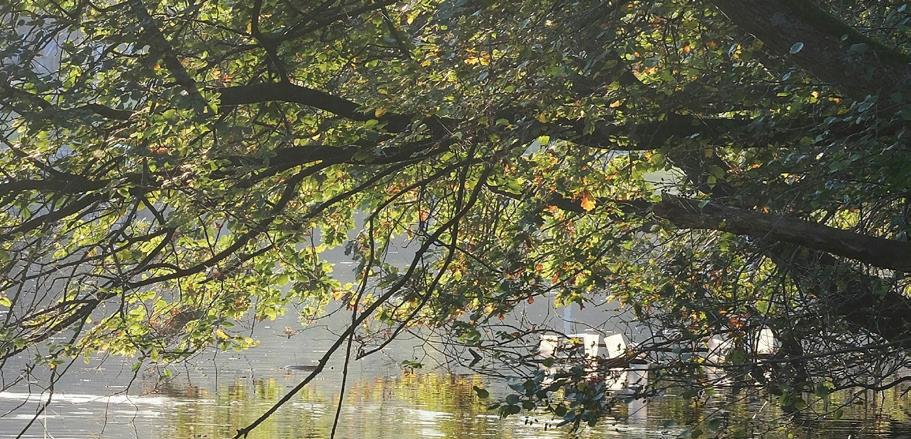
Jersey. He’s a Senior Editor and Nonfiction Section Lead for Fruitslice while he studies literature and creative writing. He has previously contributed to Fruitslice, Noise Made By, Gypsophila, Bitter MelonReview,ClementineJournal, and more. He has work forthcoming in The Bitchin’ Kitsch. ig: @androqurrr
Chloe Oloren (she/her) is the Founding, Editor-inChief of Fruitslice:AQueerQuarterly
Chloe Parsons (she/her) is a co-creative artist, cultivating intimate relationships watercolor, cyanotype, and floral collage which all have elements of nature she can’t control, and require that she collaborates with water, plants, and sunlight. Her relationship to her art is powerwith instead of power-over. Western society is grappling with climate catastrophe and collapse in dissociative and hyper-individualistic ways, and the field of ecology offers solutions and perspective shifts towards interdependence and imperfect progress. Chloe's “eco-sensual” art bridges the gap between science and embodied awareness. She aims to show how humanity is a co-creative and essential member of the web of species, how we exist both in ecosystems and as ecosystems. website: www.whollychloe.com ig: @wholly.chloe
Christine Leistner (she/her/ella) works to examine human experiences and identity through a natural lens. She is a creative writer of poetry, personal essays, and short stories. Christine is an associate professor in public health at California State University, Chico. Her doctorate is in health education and her academic research and publications are focused on sexuality among Queer parents. She lives in northern California with her two children and many pets. vwebsite:www.csuchico.edu/phha/people/ faculty/leistner.shtml ig: @christine.leistner
Courtney Williams (they/he) is a queer/trans botanist, science writer and artist based in southern California. They have dedicated their life’s work to science literacy: creating interactive art and educational content that centers a deep admiration for life science, ethno-ecology, and herbal medicine. Their work has been shown at Connect San Diego Gallery and The Heart of Art Gallery in Hollywood, featuring their series “nature vs nurture”. Courtney had a formal background in English literature and biology, and is a contributing writer for The Oath. website: www.cmbotanical.com tiktok/ig: @quart.jestour substack: @cmbotanical
Dejan Ann Kahilina i Perez (she/her/ʻo) ia is a queer, mixed poet and writer with ancestry from the Hawaiʻi Islands, Puerto Rico, Okinawa, Portugal, Germany, and Sweden. She currently writes from Puyallup territory. She has been published in Hawaiʻi Review and recently closed a group exhibition of AAPI artists called, “... A Familiar Taste.” Her work (re)members: to her family, to her culture, and to her homelands. Her joys come from words, from her students, and Indigenous futures. She received her BA in English and Gender Studies, and a MA Candidate at the University of Hawaiʻi at Mānoa for Pacific Islands Studies.
Dominic Scicchitano (they/them) is a writer and artist based in Phoenixville, Pennsylvania. Their writing centers on human-environment interactions, often exploring nature themes through a Queer lens. When Dominic isn’t writing, they’re almost certainly birding. Their work has appeared in DownEastmagazine.
Eleri Denham (they/she) writes fiction, nonfiction, and screenplays. They are interested in maps, myths, and all the other ways humans have found to make sense of their place in the natural world. Their work has appeared in The Ilanot Review, Central Oregon Book Project, Whale Road Review, and elsewhere. Eleri lives in Oregon with their partner. website: www.eleridenham.com bluesky: @eleridenham.bsky.social ig: @eleridenham
Em Buth (he/they) is a non-binary space cowboy and writer. He loves DJ-ing to empty rooms, running around in the woods, being haunted by all that has happened and all that will be, and making coffee. You can find him right here editing for Fruitslice, or see his work forthcoming in Room Magazine. He desires the liberation of every/body from every/binary. They love you. ig: @em.buth
Emerson Hayes Jermstad (he/him) is an artist and illustrator located in Michigan’s Upper Peninsula. His work explores conflicts between man, nature, and religion and has been shown in several galleries in Michigan. Emerson is in his final semester pursuing a BFA in Illustration at Northern Michigan University. website: weatherheavy.com ig: @weatherheavy
Emily Vance Brown (she/her) is a poet and multimedia artist based in Austin. Her work explores themes of gender, grief, and community, and she is currently working on her first novel.
Emmye Vernet (she/they) is a writer, student, and friend living on Penobscot land. She is currently studying Theopoetics at Earlham School of Religion.
Figueroth Lavalle (he/him) is a poet, songwriter, and fanfiction writer based in Florida. His work explores themes of identity, attachment, mental health, and hope in the face of adversity.
ig: @uhohbeartoday
Gaby Bee (she/her/tbd) is a queer, xicanx writer in her perpetual-life-crisis living in her ever gentrifying hometown of so-called Austin, TX. Gaby writes to make sense of the ways we relate to others, the earth, the cycles of life and death, and the general chaos and grief of existing. Gaby’s work can be found in Moist Poetry Journal, Wussy Mag, Infrarrealista Review, Liminal TransitReview, and other scattered spaces.
ig: @gabybeesknees
Gale Winegarden (they/them) is a writer and poet living in Southern California. Their work explores themes of growing up, queerness, identity, religion, mental health, and relationships. Gale is newer to sharing their work with others, but they most recently appeared in Queer to Stay Zine. In their free time, Gale loves to spend time with their wife and fur babies at home.
ig: @guacitlikeitalkit
gp (they/them) is a non-binary/trans biologist. They earned their Master’s degree in Biology in 2023 at the University of Central Oklahoma. Now they are a botanical specialist, queer activist, and urban resource coordinator. For gp, queer ecology is not only a historical phenomenon but an active reality. When they arrive at a field site to determine the best mode of habitat restoration, they are actively queering ecology. When they write poems in their field notes and kiss the bees, they are queer ecology. The more attuned they are to nature’s connectivity, they are queering ecology.
ig: @geesuhs
Grant Kanak (he/him) is a creative with his head in the clouds who explores music, writing, acting, and filmmaking deep in the heart of Austin, Texas. When he’s not snuggled with his cat Ziggy, you can catch him working on his next project!
ig: @sentimentaldrive
Jalisa Sousa-Silva (she/her) is a printmaker based in Chico, CA and originally from the Central Valley. With ten years of printmaking experience under her belt, she pulls from inspirations like camp, video games, body horror,

and queer history. Through colorful visuals, her narrative work explores how we express identity while including an uncomfortable underbelly to ground her figures. She received her BFA in Printmaking at CSU, Chico in 2023 and finished a residency at Pedal Press the following year. Since graduating, she works as a freelance artist and teaches workshops on the medium. ig: @boyneptunes
Jamayka Young (any pronouns) is a storyteller writing about African American culture, identity, and folklore. Their work seeks to serve as prayer, archive, and critical fabulation for African American history, present, and futures. Jamayka is a Cave Canem Fellow whose work has appeared in ReedLiteraryMagazine ig: @jamayka__
Jess Beaudin (she/her) is a queer, values-led lens-based artist living in Secwepemcúl’ecw (so called Kamloops, B.C.). Her work often highlights systemic short-comings and advocates for grassroots change through art. Recently, Jess has been creating 100% Indigenous-to-place film developers to replace traditional film chemistry - which is toxic and environmentally degrading. website: www.jessbeaudin.ca ig: @jessbeaudinmedia
Johanna E. Hall (they/she) is a femme dyke mostly-poet from Charlottesville, VA whose writing generally features lesbianism, God, disability, and various troubled pasts. She’s been featured in Beaver Magazine, Geez Magazine, Beloved: A ButchFemme Zine, and issue 4 of Fruitslice! website: www.johannapoet.com ig: @johannahallwrites
Kam Bradley (he/him) is a Trans, Michigan based writer and film photographer. His work focuses on the mundane as an expression of Queerness as “normal.”
Katie Hilliard (she/her) is a photographer and multimedia artist based in Ontario. Their work touches on topics such as identity and community. Katie holds a BA in Art History and is currently employed as a Sports Photographer.
Kota Ball (they/he) is a trans* writer and activist from New Jersey. Often a horror enthusiast, dark and obscure themes often make their way into their autobiographically inspired pieces. They graduated with their JD from Ohio State and their MA in Community Psychology and Social Change with a focus on Diversity Narratives from Penn State and see writing as one of the many ways to resist and redefine the systems around us. ig: @cosmicfishbear
Layla Razek (she/her) was born in Philly and raised in Montréal, centering community building, social justice, and creative advocacy as she goes. With an affinity for bringing people together and building spaces of radical joy, she is also a curator and connector. Gravitating to affirming spaces where Black women who forage aren’t an oddity but simply interested in their own survival. Where lineages of resistance don’t bring shame, but inspire. Where the water lapping from a freshwater lake and the rustling of pines means she’s safe.
ig: @layla.razl
Liv Soter (they/them) is a farmer and artist based in Maine. They hold a BA in Human Ecology and have a passion for feeding people.
ig: @livv_pdx
Mazerick Betko (they/them) is an interdisciplinary artist and teacher in Birmingham, Alabama with a background in metal work and songwriting. Their teaching and writing practices intersect the personal inner worlds we all inhabit with the connection and vulnerability required to be in community. Mazerick’s work has been published in Red Rose Thorns online journal and featured in broadside form at The Crows Nest ecological art gallery in Baltimore, MD. They graduated from the Maine College of Art and Design in 2020 with a Bachelor’s in Fine Art: Sculpture and a minor in Public Engagement. website: www.matanahbetko.com ig: @softwarmstones spotify: mazerick
McKenzie Janisz (she/her) is a mixed-media artist, photographer, poet, and singer based in Philadelphia. She holds a BA in Music from Ramapo College of New Jersey with a minor in Philosophy. Her guiltiest pleasure is Hot Cheetos Mac and Cheese, which is disgusting but delicious.
Melanie Robinson (she/they) is a poet, journalist, educator, artist, business owner and sometimes musician, based in Los Angeles. They hold an MFA in Poetry from Texas State University and have served as 2019-2020 Poet in Residence at the Clark House in Smithville, Texas. Their work has been published in numerous journals, including Kingfisher Magazine, Rust + Moth, Radar, Hooligan Magazine and more. They currently own and operate a small content writing business and are in the process of completing their first manuscript.
website: https://linktr.ee/melkristeen ig: @melkristeen

Micah B (any pronouns) is a San Francisco–based student who is continually curious about their fellow humans. You can catch them feeling simultaneous wanderlust and homesickness, leaning on a friend’s shoulder, and navigating cities by nearest boba shop. They love tea, finding actual uses for the oxford comma, and doing and creating crosswords. They are currently vibing with their family, lying on a bed, and writing their Fruitslice bio.
Míša Štorková (they/he) is an emerging artist, craftsperson, and educator studying at the University of Calgary, currently based on Treaty 7 land but originally from Czechia. Míša’s primary mediums are fibre arts and printmaking, though anything employing a hands-on mixed media approach lies within their interest. The scope of their art practice focuses primarily on the disabled experience, matrilineal relationships, and what we pass down intergenerationally –whether that be in regard to biological and/or found family. Míša strives to make works which question what we view as Fine Art, and to give voice to the ‘Othered’. ig: @mold_munchr
Morgan Champine (they/them) is an undergrad studying English at the University of Utah. Their work has appeared in The Occult Digest, Community: The Power of Storytelling, Sweet ‘n Simple Magazine, and will appear in Ode to Death: Review. They are the Opinion Editor of the Daily Utah Chronicle and co-president of student-run theatre company Open Door Productions. Morgan loves to write emotional, abstract scifi, and is always open to a conversation on quantum physics.
Morgan Hyatt (they/he) is a printmaker and illustrator based in Long Beach, CA. As a disabled queer artist, their work explores the relationship between the body, sickness, memory, and the natural world. Their work has appeared in Sojourner’s Magazine and Muse. Morgan is currently a BFA studying Printmaking at CSULB. ig: @magpiemohr
NatDeam (they/them) is an interdisciplinary artist based in Iowa. Their current work in printmaking and book arts aims to highlight the relevancy of queer ecology in the Midwestern Anthropocene. They are an MFA candidate at Iowa State University’s Integrated Visual Arts Program with a concentration in printmaking and book arts. They also hold an MFA in Creative Writing and the Environment from Iowa State and a PhD in French Liiterature from Stanford University. Inspired by the intimate connections between local and global experiences of climate
change, their work has been supported by grants from the Mid-American Print Council and Iowa Arts Council and exhibited nationally and internationally. ig: @deamwood
orion (aka puppy) (they/them) known informally as puppy, is a multimedia artist based in Tulsa, Oklahoma. They seek to deconstruct and work through their own connections to animals as a way of better understanding the self and perception of their experiences. Their work most often depicts natural colors and freeform acrylic painting. The recurring theme within their works of all medium is a “stray dog mentality” of fight or flight and submission.
commissions: www.ko-fi.com/orionsbelt
Rhyker Dye (he/him) is a writer and editor from the Arkansas River Valley with a love for creative nonfiction. Most Saturday mornings, he can be found haunting local coffee shops as he writes best alongside indie albums and whispered gossip.
ig: @writingsinreverie
Roman Campbell (he/him) is a Florida-based trans author, radical friend-lover, cosplayer, little treat enthusiast, and cat dad whose work explores gender, sexuality, and what it means to be disabled, neurodivergent, and queer. His pieces have been featured in Fruitslice, Neon Arts and Literary Magazine, and The Healing Muse. In his free time, he enjoys drinking iced oat milk lattes while writing fanfiction (thinking about men), reading fanfiction (thinking about men), or staring at a blank Google Doc and hoping words magically appear. ig: @romancampbell_
Salena (@zonked_art) (she/they) is a multidisciplinary artist based in Jersey City, where she lives with her wife and their pup. Her work, inspired by advocacy and nature, explores the intersection of social justice and environmental issues, using a variety of mediums to create pieces that encourage reflection. Through her art, Salena strives to foster deeper connections between humanity and the natural world. website: hitheresalena.wixsite.com/create ig: @zonked_art
Sanna Koskimäki (she/they) is a fine art painter based in Helsinki, Finland. Their work delves into the complex relationships between humans and animals, exploring themes of connection, posthumanism, and queerness in nature. Their practice envisions utopias where humans and animals coexist in harmony, challenging traditional power dynamics. website: www.sannakoskimaki.com ig: @saqkoskimaki

Shaniqua Harris (she/her) is a Bajan Brit writer based in London. She writes auto fiction, short stories, poems, and essays. Her works explores women and their untold (unlistened to) stories, plantations, tourism and the Caribbean. She holds a BA and an MA in Creative Writing and is currently pursuing a PhD, and knitting socks as a form of procrastination. ig: @shaniqua_harris substack: www.shaniqua.substack.com
Shelby Pinkham (they/them) is a Chicanx, bipolar poet from Bakersfield, California. They earned an MFA at Fresno State, where they taught composition and poetry. In 2022, they were selected for Lambda Literary’s Emerge Editorial Scholarship and fellowship at the Writer’s Retreat for Emerging LGBTQ Voices. Additionally, their book, Rx / suppressor, was named a semifinalist in Noemi’s 2022 Poetry Prize. Their writing has appeared in ANMLY, ctrl + v, Huizache, and HoneyLiterary.
Sophie Mutiara Nova (they/them) is a queer, character-driven and oft-rewritten, halfIndonesian, SLE-diagnosed Writer-Director (Writing Fellow of the ACEX TV Initiative, Finalist of the Emmy’s TV Academy Foundation Directing Program). Their dramedy TV series have been awarded at the PAGE International Screenwriting Awards, ScreenCraft, and countless others; their fantastical film work’s screened internationally. In publishing, their debut monster book CATCH LILI TOO was spotlighted by the Golden Crown Literary Society (known for honoring Allison Bechdel). Originally from Chicago, Sophie’s now based in Los Angeles (Dartmouth College BFA & MFA Film Directing CalArts). When not writing or rocking out, they perform Indonesian traditional dance with Burat Wangi.
Surya Du Preez (they/xe/he) is a 16-year-old poet, storyteller, and visual artist with a focus on navigating intersectional identity through all forms of art. They are a volunteer writer in multiple online publications, such as the Queer Gaze Mag and Taxi Society Magazine. They are currently studying visual arts and design in highschool, and xe hope to build a career centred in print media.
ig: @sun.sp0t tumblr: @funkylittlelesbo
Taylor Michael Simmons (he/him) would like to apologize to everyone he’s ever been mean to. He didn’t mean it.
Tommy Rider (they/he) is a multimedia artist focusing on printmaking and film photography, based in Southern Alberta. They explore themes of class, gender, land, and the “Other” within their work and recently had their first solo show, “Within Barren Lands,” on these topics. Rider will soon graduate with a BFA and BED from the University of Calgary and is pursuing a career as an Art Educator.
ig: @teeth._mouth
Tzushan Chu (she/her) is a writer of fiction and screenplay with the occasional foray into poetry and comics. Her work primarily focuses on identity, both with the self and cultural identity, and the relationships within the Anthropocene. When not reading or writing, she can be found playing ultimate frisbee or learning how to crochet.
von reyes (he/him) is a Durham, NC-based writer focused on illuminating masculinity and Asian diasporic identity through essays, poetry, and speculative fiction. he explores themes of surrealism, transexuality, existentialism, and ancestry. he attended East Carolina University and UNC Wilmington, where he received his MA in Sociology. his work is featured in Fruitslice, Same Faces Collective, A Coup of Owls Press, t’ARTmagazine,fifthwheelpress, and more. website: www.vonreyes.com ig: @vonrxyes
v.w.l (they+) is a writer-artist based in the Midwest. Their writing is rooted in their intersecting identities as a queer, auDHD, disabled, Mad adoptee. Underpinning their work is their BA in Sociology and minor in Women and Gender Studies. More of their work can be found on their substack.
substack: www.moordra.substack.com
Yazmin Munoz (she/her/ella) is a queer Mexican American poet and photographer from Dallas, TX, and the eldest of 13. A recent first-generation college graduate from El Centro College and Georgetown University, she is passionate about empowering marginalized voices. Through her creative work, she seeks to connect, heal, and address systemic issues affecting our communities.
Zoe Grace Marquedant (she/her) is a queer writer. She earned her BA from Sarah Lawrence College and her MFA from Columbia University. Her work has been featured in the AlienMagazine, WAS, and elsewhere. She is a columnist and contributor for Talk Vomit.

With each new issue of Fruitslice, the list of people who make this work possible grows. Thank you to our staff, our contributors, our readers, our community, and everyone in between who make this work possible. You trust us with your thoughts, your words, your time. For that, we are eternally grateful.
Above all, this issue would not be possible without the sacred and life-giving force that is the Earth. The planet sustains us and holds us up. Our connections with the environment animate our souls. We thank the Earth for the boundless possibility it offers. This issue is, principally, a letter of love and gratitude to this original source of life.
The pieces in this issue are an expression of our appreciation for our home. While we will invariably fall short of expressing the full extent of our love and regard, we thank other writers who have come before us—those who have already put some of our feelings to words and begun to lay the groundwork:
“This is not our world with trees in it. It’s a world of trees, where humans have just arrived.” (Richard Powers, The Overstory)
“Our task is to make trouble, to tir up potent responses to devastating events, as well as to ettle troubled waters and rebuild quiet places.” (Donna J. Haraway, Staying with the Trouble: Making Kin in the Chthulucene)
“We are tuck with the problem of living despite economic and ecological ruination. Neither tales of progress nor of ruin tell us how to think about collaborative urvival. It is time to pay attention to mushroom picking. Not that this will ave us—but it might open our imaginations.” (Anna Tsing, The Mushroom at the End of the World)
“In ome Native languages the term for plants translates to ‘those who take care of us.’” (Robin Wall Kimmerer, Braiding Sweetgrass)

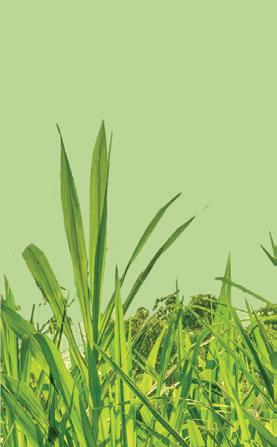

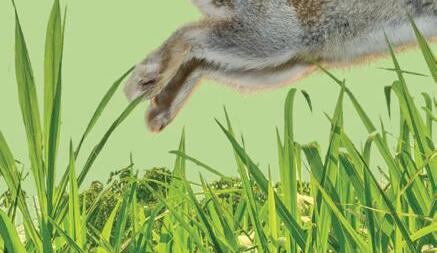
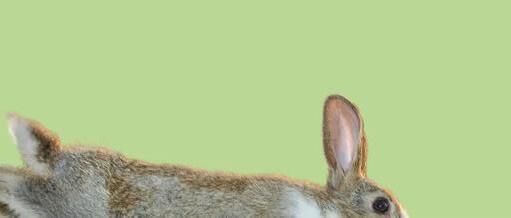
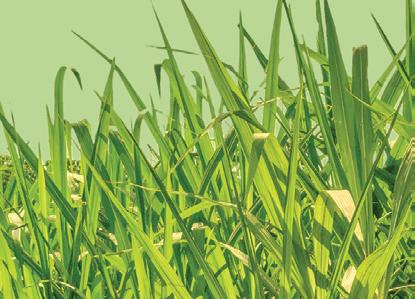
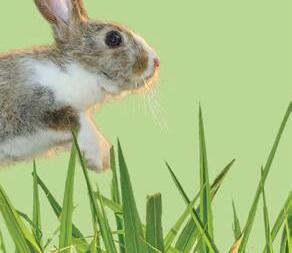


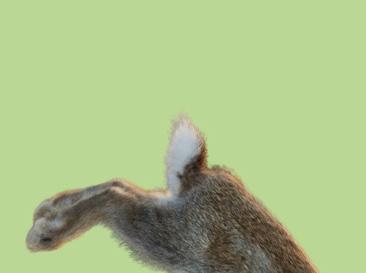


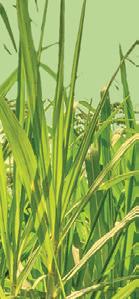
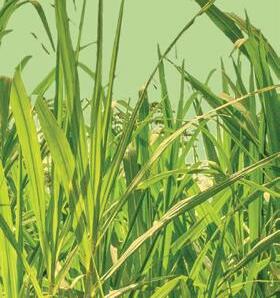
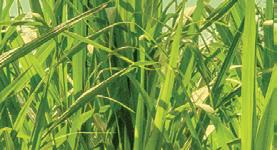

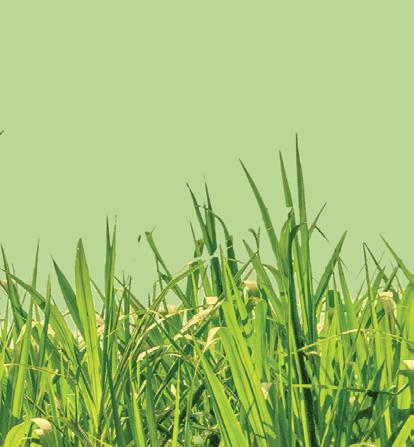

In this issue, we thank and acknowledge the value of every interconnected, living thing. We invite you to express your gratitude for the Earth, in whatever form that gratitude takes.
